 26Likes 26Likes
 |
|

26 Nov 2014
|
|
Registered Users
HUBB regular
|
|
Join Date: Dec 2009
Location: The Netherlands
Posts: 66
|
|
|
Goodbye (for now) North Africa
With a visa for Ethiopia in our pocket we leave Khartoum and head for the border. It is about 600km to the border town of Metema. South of Khartoum there are no places of interest that we want to visit, so we plan to ride two full days. If we then camp just before the Ethiopian border on the second day, we can arrive there early to complete all the formalities and still have sufficient time to ride to the first campsite in Ethiopia.
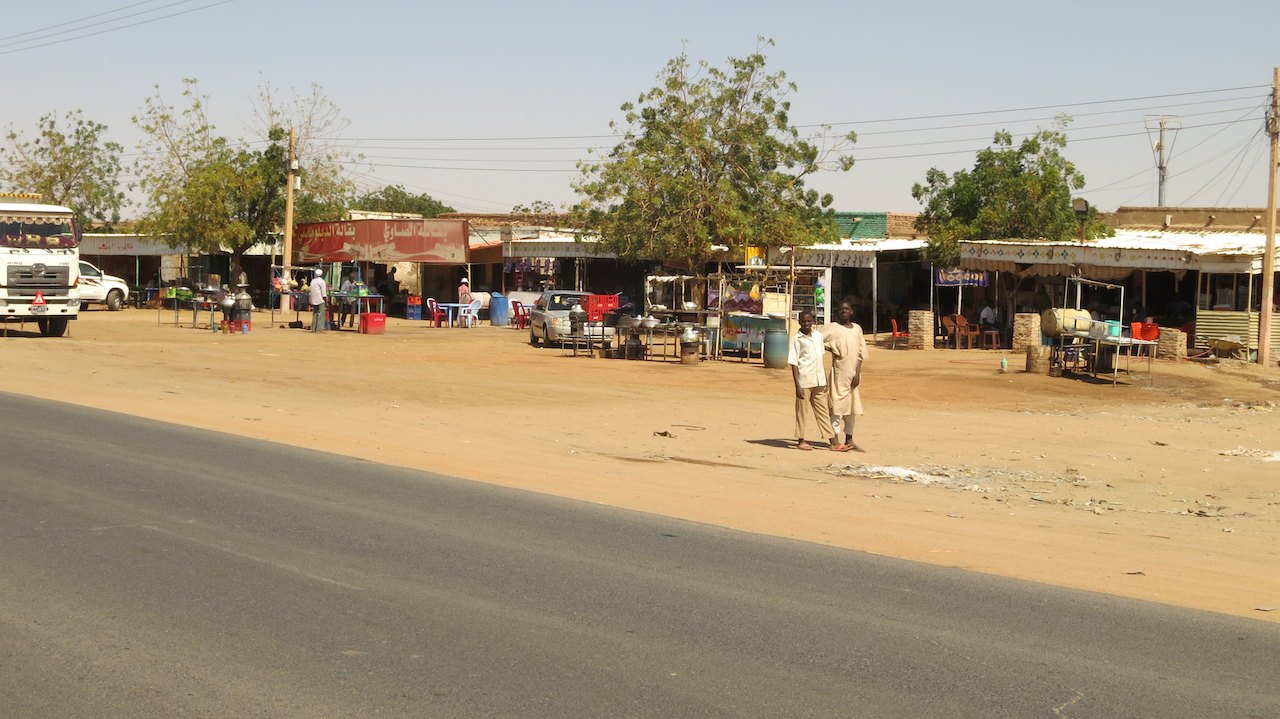
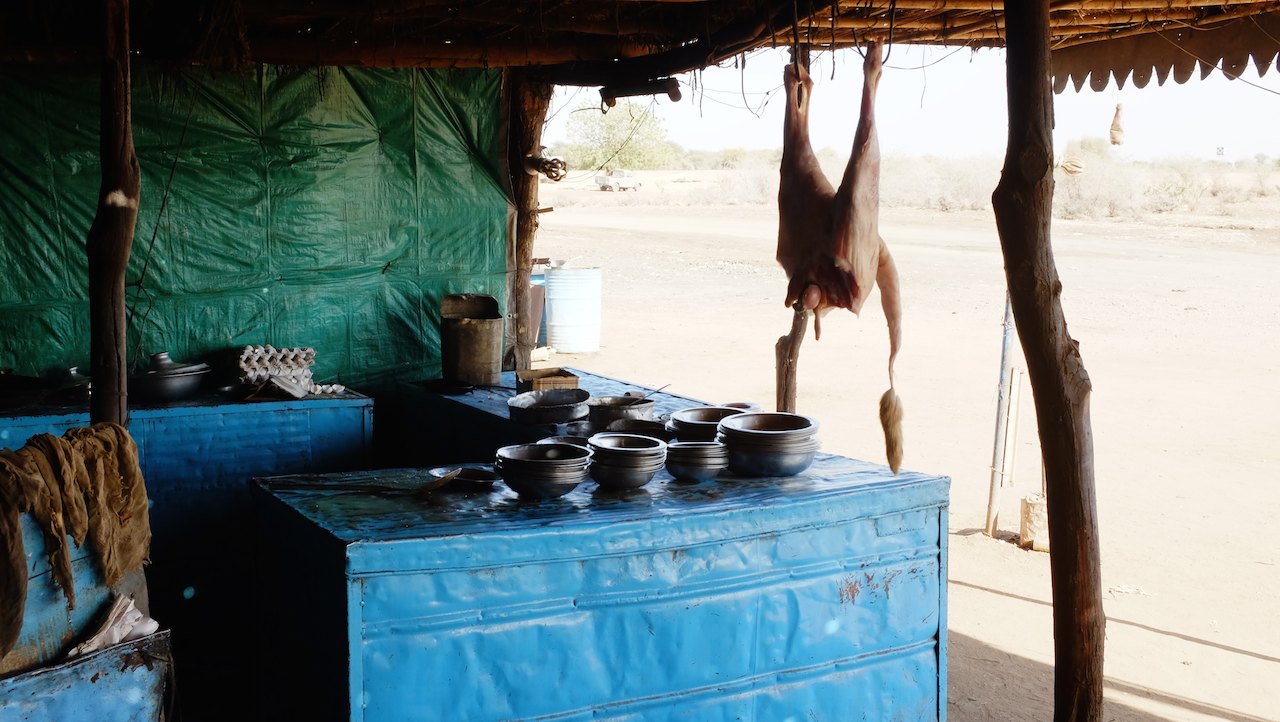
Once we have left the bustling Khartoum, the landscape quickly changes into dry, dusty plains. No more expensive cars or high buildings, but mud houses and donkey carts. Only the main road on which we drive is paved, all other roads are dirt roads with deep potholes. But even the paved road is in poor condition. We regularly need to slalom between the potholes to avoid a flat tire.
We drive through villages with long rows of small shops just next to the road. Oddly enough, you often find a number of the same shops next to each other. First a row of carpenters who all offer the same wooden frames, then a row of blacksmiths with the exact same metal fencing and then a row of restaurants. What is also striking, is that you can get a Coca Cola everywhere. In the most deserted village and most secluded restaurant you can always get a bottle of sugarwater. A bottle of Coke is often more readily available than a bottle of water. There is tap water, but we only use that to brush our teeth and to cook, not for drinking. A good alternative is tea. The water has been boiled, so it is safe to drink. And along the way there are ‘chai-mamas’ everywhere selling their spicy tea.
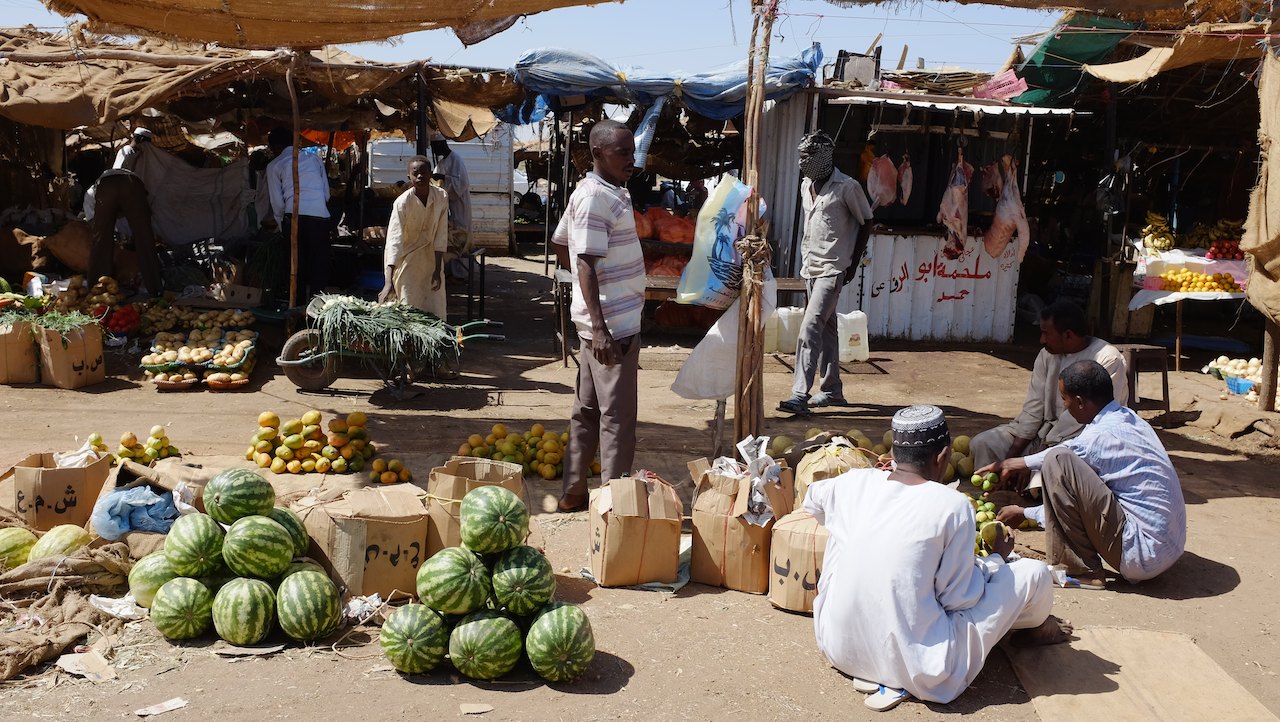

At one of the many villages we stop at the market to buy some fruit and vegetables. While I am negotiating about the price of bananas, a large group of Sudanese men gathers around the bikes. Peter is subjected to a cross-examination. “ What brand is the motorbike?“, “ How many cc?”, “ What is the maximum speed?” and the most asked question “ What does the motorbike cost?“. As I put away the groceries I get out my camera to take some pictures of the crowd. After two pictures I walk across the street to take some picture of the market, the group of Sudanese men and Peters white helmet that only just sticks out of the crowd. When I get back to my bike and want to store away the camera, a man next to me commands in a loud voice, out of nothing that I should delete my pictures.
“ Sorry? Delete my pictures?“.
“ YES , DELETE THE PICTURES! NOW!“
In Sudan you require a permit to travel through the country and a permit to take pictures. But even with the permit you cannot take all the pictures you want . As in many other countries, you cannot take any photos at strategically important points such as bridges and police posts. In Sudan the rules are even more strict as they do not allow you to take any pictures of ‘public buildings’. The problem is that a lot of the buildings fall under that Sudanese definition and you may not always be aware of that. Sudan even adds to this by also prohibiting photos of slums and beggars.
You need to carry several copies of the permit with you so you can always give one to the police when requested. We only heard of the compulsory permit in Khartoum and did not want to put in the effort to get one at that time. It went fine without a permit so far and we figured that the last two days in Sudan, from Khartoum to the border, would surely be OK as well. At least, so we thought.
The man again demands that I remove the photos. Because he is not wearing a uniform it is not clear whether he is a police officer or whether he is a bystander who did not like that he was photographed. A bit overwhelmed by his command I ask once again what he means and explain that I want to take pictures because Sudan is such a beautiful country. But he does not want to talk. He points to a man in uniform who is standing a little further away and says: “ We are police. No talking. Delete! NOW!“
It is clear what he wants. Apparently I have made pictures of a subject they do not like to be photographed. There is no building around for miles that can be regarded as a “government building”, so probably the market is considered to be ‘slum’. Just before he makes a move to grab the camera out of my hands I decide to delete the photos. Especially since we do not have a permit, I do not want to risk loosing all our pictures or even the camera. I keep the camera in front of his face and I show that I delete the photos I had just taken. To prevent that he also wants me to delete the other pictures of Sudan, I then only show pictures of Europe that are still on the memory card. He is OK with this and does not ask for the permit. After we have promised that we will not make anymore pictures in Sudan we can go.
A bit confused I get back on the bike. What a “#$*&*%BEEEP” of a guy! We have come across a number of policemen and soldiers, but this was the first time the hairs on my arms raised. A situation where your intuition tells you: “He means business.” We drive out of the village and stop a little further to switch the memory card. Maybe we can still retrieve the deleted photos with some special software. And if we are stopped again we will not risk loosing other pictures we took. Stubburn travellers as we are, we stop a few more times after that to take pictures of Sudan. It still is a really beautiful country! And what are the chances that we will encounter that policeman again?

We stop to drink some tea at one of the ‘restaurants’ along the way. We park the motorbikes and see a group of men just getting ready for afternoon prayers. One of them gestures that we can find ourselves a table, he will be right out. After prayers, he takes our order while the others examine the motorbikes and ask us the usual questions. They consider our journey to be an adventure and cannot believe we have really driven the ‘mopeds’ from Amsterdam to Sudan. When the tea arrives they excuse themselves and take a place on the beds in the corner of the restaurant. A great place to get through the hot afternoons of Sudan. The tea is ’on the house’. The man explains that as a Muslim he has a duty to take care of travellers and that he is happy that he can offer us some tea. Welcome to Sudan!
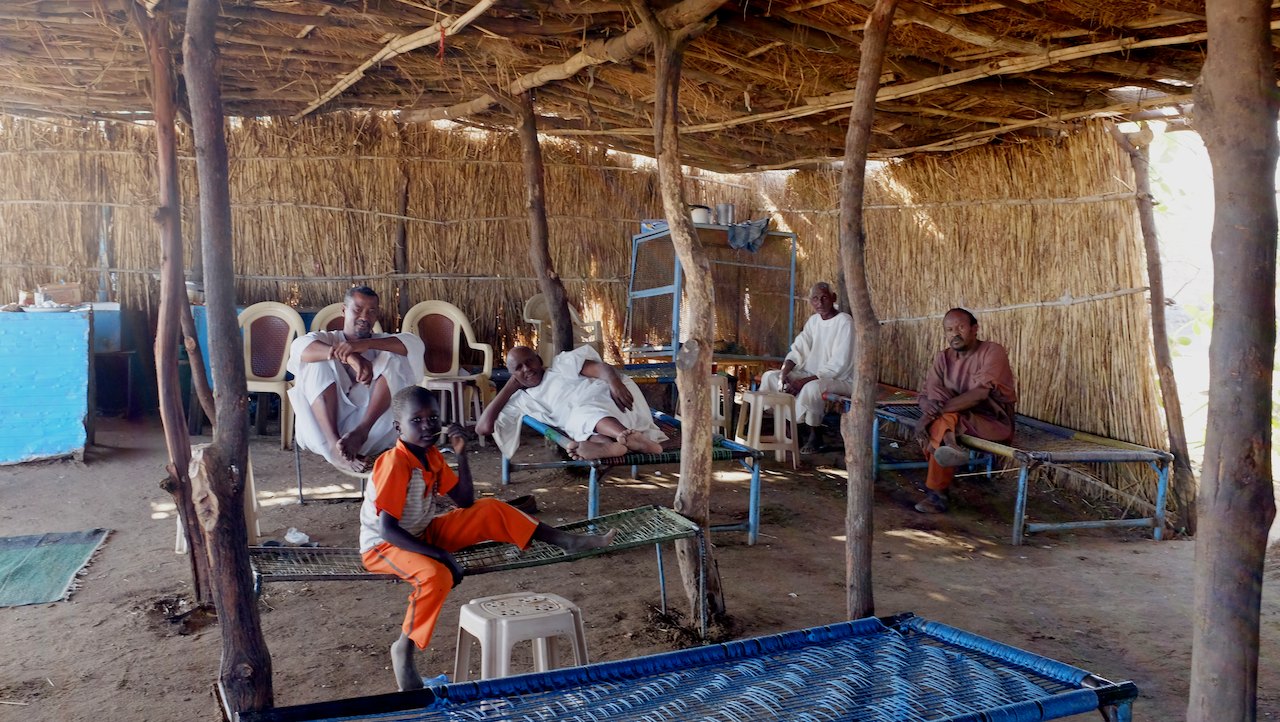
There is a lot of traffic on the road to and from Khartoum. Just like in northern Sudan we have to be very careful for oncoming busses that overtake slower traffic in the strangest places. But we also have to keep an eye on the traffic that overtakes us in order to avoid being cut off. It often happens that overtaking traffic just keeps driving next to us to examine us more closely. One car in particular acts very strangely. The driver continues to ride beside me for a long time, getting closer and almost pushing me off the road. I pick up speed to get back in front of the car, but the driver also accelerates and drives next to me again. At the point where he comes too close again, I gesture that he should back off. Then he accelerates and starts driving very closely to Peter, almost pushing him off the road. Then I suddenly see it is the policeman we met earlier that day. So yet again after all!
The angry policeman hangs out the window and gestures that we should stop. Apart from the uniform of the person next to him, we can in no way see that we are dealing with police. It is a normal car. The angry man asks Peter for his passport. Peter asks in turn for the identification of the agents and explains that he is not just giving his passport to anyone. The agent starts rummaging in the glove box. First he pulls out a gun which he keeps high up in the air ostentatiously while he continues looking in the glove box with his other hand. He gives a card bearing the photograph of the person next to him. Unfortunately, he had left his own card lying at home (yeah right…)
After a brief look at the passports, he asks whether we have registered (all foreigners must register as they enter Sudan and pay as much as $50 per person on top of our visa of $50). Peter points to the green sticker in our passports.The man takes another look. Once we have again promised that we will not take photos in Sudan, we can go. Luckily he does not ask for the missing permit. Will this be the last time then? After that we see the car one more time while it stops to drive into a little town. We hope they think it is enough now. We are fed up any way.
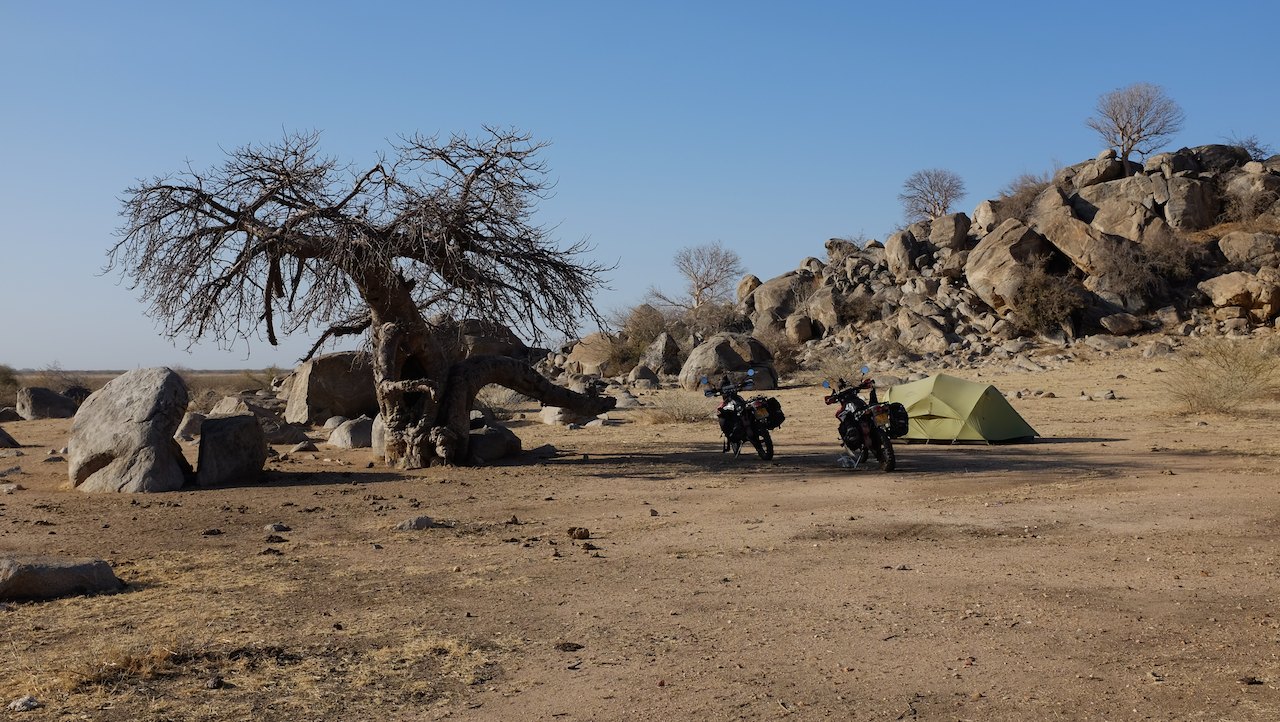
At the end of the afternoon we leave the main road and find a wonderful old baobab tree a few kilometers down the road where we can camp. Before we pitch the tent, we sit under the tree for a while to have a drink and to consider whether we can sleep here without being disturbed. If after one hour no one has come to see us and it is not so warm anymore, we pitch our tent and again cook some pasta.
The next morning I an woken up by someone who is singing loudly. I also hear the occasional cow moo and branches breaking. As I look out the window of our tent, I see a large group of cows trudge past with a boy on a donkey in front. It is the same boy that we had seen with his cows the night before when we drove onto the sandy path to the big baobab. From a distance he takes a look at our tent, but then rides along singing loudly. The cows follow him. We are again amazed by the fact that we can just be here, without people coming to visit us.


We drive through warm Sudan, stopping occasionally for cattle crossing the road, helping a Sudanese motorcyclist with his flat tire and eating a sandwich in the shade. Gasoline is still difficult to get, so wherever we can we fill up the motorbikes to avoid getting stranded. The landscape changes as we drive further south. We pass dry plains with the occasional brown hill and dry riverbeds meandering through the landscape. The houses are not built of clay anymore, but are made of wooden sticks and straw. Small round huts in a group together, with some cows and goats grazing in between them. The villages blend in perfectly and can hardly be seen from the road against the brown hills.

At the end of the day it takes a little more effort to find a camping spot. Right next to the road the forest is either too dense or the plain is too open. Finally we drive along some fields towards a dry river where we find a reasonably flat spot for the tent. Again we wait a bit before we pitch the tent to see if there are any angry farmers asking us to leave. Once the tent is pitched we hear a truck very close to the tent, but that is it.

The next morning we wake up well before the alarm goes off. We sit on the motorbikes packed and ready to go by 09:00 am. After 30km we arrive in Metema, a small village with a long row of busy shops and a number of larger buildings. In no way it looks like the land border between Tunisia and Libya or the border between Libya and Egypt. No big gates, no stern looking officers or long lines of people waiting. Only a barrier that is manually operated by a customs official who still slumped in a broken chair.
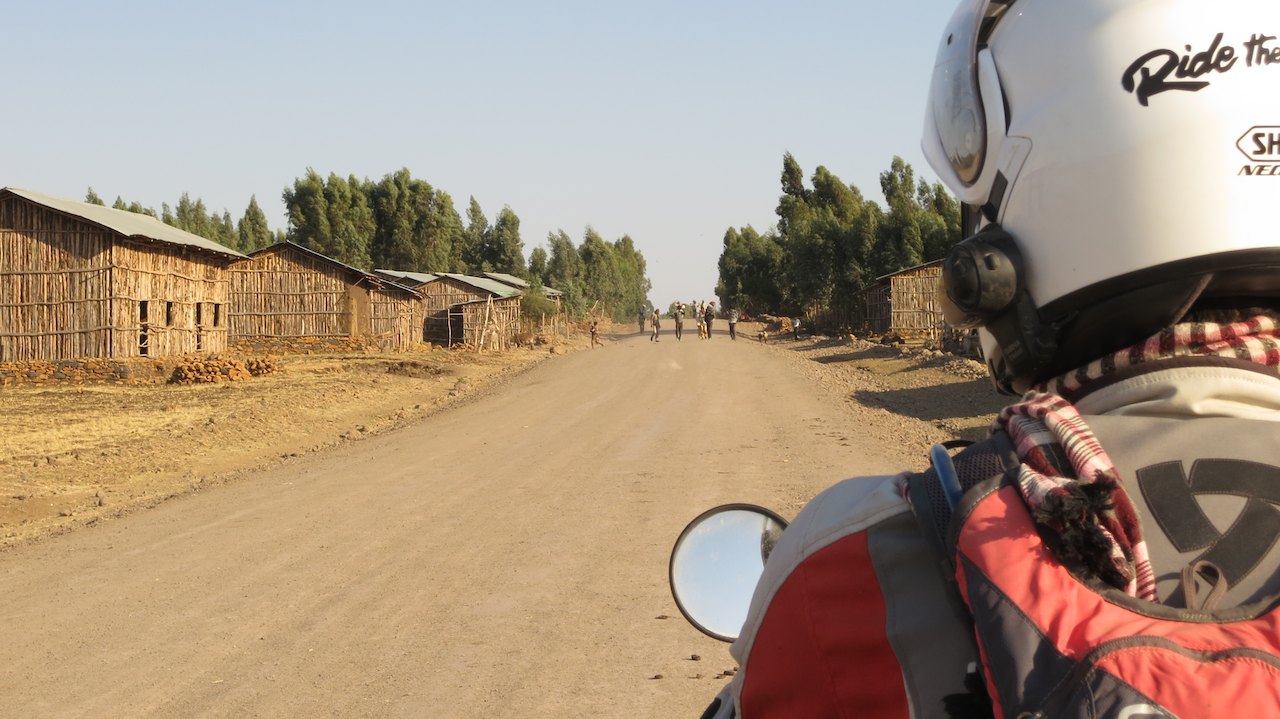
Before we pass the border and enter Ethiopia, we still need to get some stamps on the Sudanese side. It is not quite clear where we should go, but as usual we attract enough attention and one of the bystanders exactly knows where we should go. First to the local police station for registration. We enter a large empty room. In one corner there is a television with one chair right in froth of it. A soap opera is broadcasted. On the other side there is an empty desk with only a big book and a pencil lying on it. The man behind the desk holds up his hand and asks for our passports while continuing to watch the television.
After our data is recorded, our guide takes us to another building. We sit down in one of the chairs in the waiting area. We are the only people waiting and even the only ones in the entire building. The offices are empty and appear to be little used. The customs officer is still missing, but our guide is going to find him. After some time our guide comes back with a man who takes our carnets. We follow him to an office; a small room with two desks, some worn chairs and a cupboard full of binders. On one of the desks is a computer which is protected against dust by a piece of plastic. The man sits down at the other empty desk and takes out some big books, a pen and carbon paper. Then he begins to fill out one form after another, while properly placing the carbon paper in the right place. A signature here, a scribble there, a staple in one form, it seems to take forever but we finally get stamps in our carnets.
He refers us to the next building. This time there is an English movie showing on television. We hand over our passports and see a senior customs officer checking the documents after which he instructs his staff to take our details and stamps the passports. With the stamped passports we walk back to the bikes. A large group of young guys has gathered there offering to exchange money. The exchange rate is very bad but despite tough negotiations we do not get the price up. We decide to exchange only half of all of our Sudanese Pounds and try again in Ethiopia. We have all the stamps we need, so we can go! The customs officer at the gate slowly get up from his chair, lets the barrier up and waves us through, out of Sudan.
At the other side someone is already pointing us where to go on the Ethiopian side. We first have to take our passport to customs. Even though we are only 100 meters from the Sudanese customs office, it seems like we are in a completely different world. On the desks are computers, printers, cameras and even finger scanners. On the wall are posters with beautiful photos of Ethiopia, pictures of the president and the Ethiopian flag. In fluent English we are asked to take a seat in one of the chairs.
Our picture is taken with a futuristic webcam, the fingers of both our hands are scanned and all data is neatly captured in the computer. After fifteen minutes we are back outside and redirected to another building to register our motorbikes. This department of the Ethiopian customs was not so lucky yet and has not yet have a computer at its disposal. The man has to use a pen and some carbon paper to fill out the different forms. Yet it all goes very smooth. After the man has seen our motorbikes and has verified the colour and the chassis number, he stamps our documents. Then the rope across the road(!) is lowered and we can ride into Ethiopia!

We drive through a street with many shops, just like in Sudan. However, it does not look like the street on the Sudanese side where we just came from. We can now read the signs and placards, because the text is not only in Amhars (the beautiful Ethiopian curl script) but also in English. In Sudan most signs were only in Arabic. It is also a lot busier in the street. At this side of the border there are at least five times more people on the road than in Sudan. We are also struck by how colorful everyone is dressed. In Egypt and Sudan most people were dressed in brown, black or white. Now we see bright blue and bright red, colors that stand out against the dark skin of the Ethiopians. Their favorite t-shirt is without a doubt the green and yellow striped football shirt of the Ethiopian team.
Yet the biggest difference are the ladies! For the first time in a long time we see a lot of women in the street. And not just women, but very pretty women! Ethiopian women are known for their beauty. Long slender bodies, handsome faces and special hairstyles. And all in Western clothes and no longer hidden under a long wide dress. I am not the only one who notices all this beauty. Over the intercom I hear Peter utter several approving comments about their curves and their beautiful eyes.
We exchange the second half of our Sudanese Pounds against an equally bad rate, buy an Ethiopian phone card and ride out of town. We head for Gorgora, a small town on Lake Tana. Several overlanders told us to visit “Tim & Kim Village”, a lodge and campsite that is run by a Dutch couple. On a beautiful smooth asphalt road we drive into the hills. The road winds and for the first time in a long time we ride some great curves. Very nice after the long straight roads in the last few countries. We drive from the border, which was at 700 meters, to 2200 meters altitude. The higher we go, the cooler it becomes. That is also very nice after the hot hair dryer-like air we drove through during the last weeks.

At the end of the afternoon we drive onto the gravel road to Gorgora. It is a very bad road with large loose stones and huge “potholes”. The average speed drops to 30km per hour. It still is 60km and at this speed it will take some time before we are at the campsite.
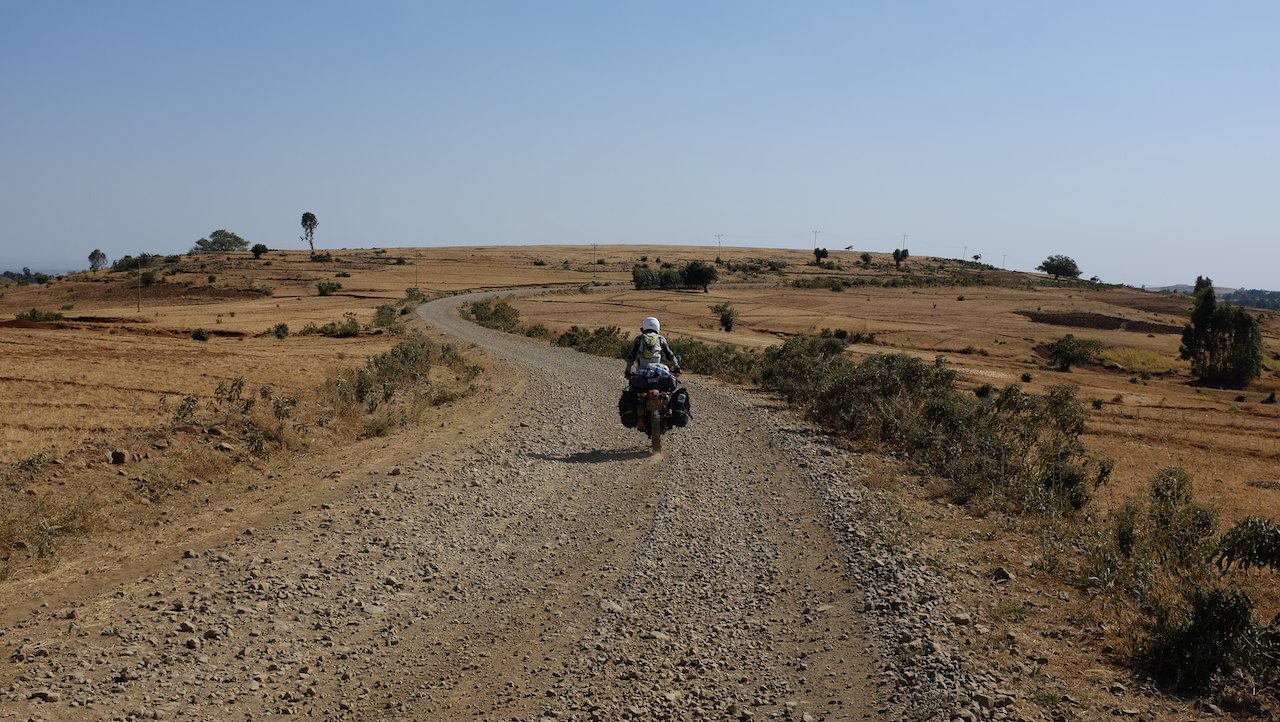
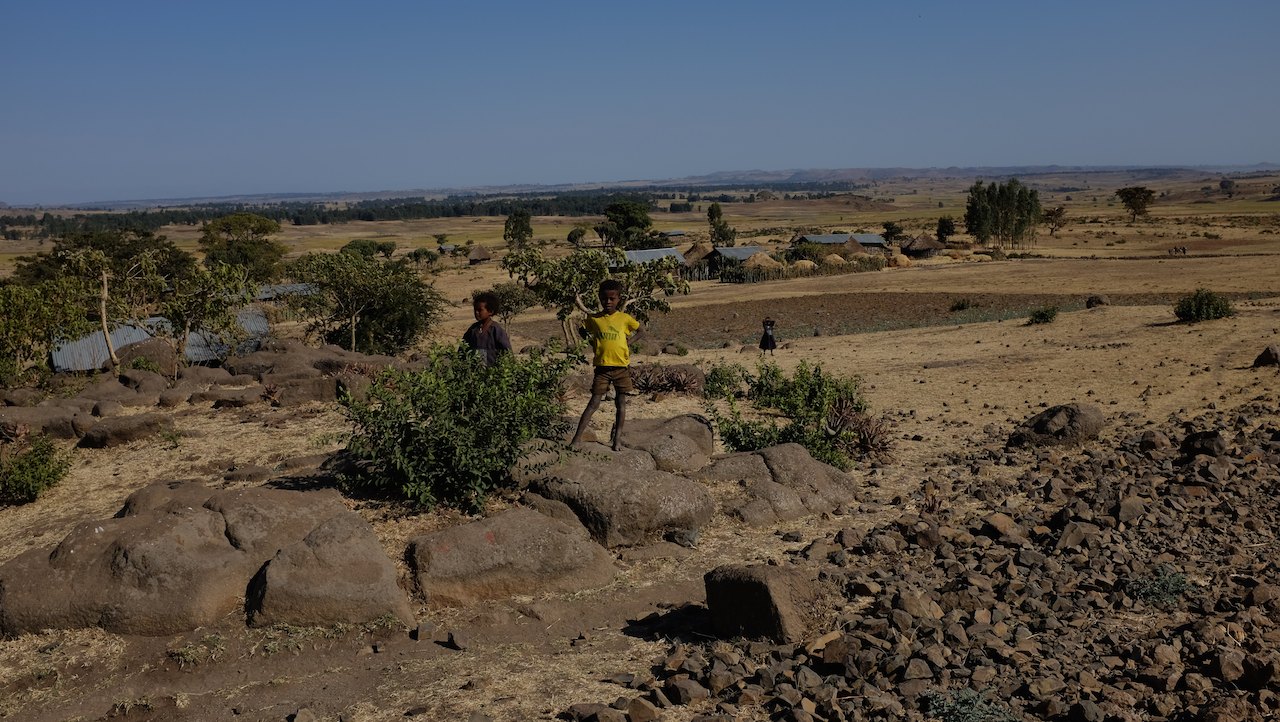
It is very busy on the road. Not with traffic , but with people! People are walking everywhere! Many of them with large packs on their heads or backs, but most with cattle. With a stick in their hand they herd donkeys, cows, goats and sheep. We are becoming used to being an attraction, but we have not experienced before what is happening to us now, here in Ethiopia. Several times the people throw the package they are carrying on the ground after which they run to the side of the road screaming with their hands on their head. Hiding behind a tree or ducking behind their cattle, they watch us. And when we are inching through the small villages, I have to brake hard several times to avoid hitting a petrified pedestrian that is gaping at Peter. By the time they have recovered from the initial shock and turn around they look at me with big eyes and then run to the side of the road. OK, we may look like aliens but here we certainly feel like aliens as well for the first time.

As quiet as the people in Sudan were, so intrusive are the people we encounter in the first Ethiopian villages. Once we stop to take a picture kids come running from all sides. “ You, you, you” it sounds and “ Faranji! Faranji!” (Which means “ White man! White man!”). Although their hand first goes up to wave at us, the same hand then is made into a bowl and we hear “ Give me pen“, “ Give me money!”, “ Give me something!“. Not only do children come to ask for a pen, water or food, but adults also hold up their hand as we pass.
The differences with Sudan, especially with regard to the people we encounter, are overwhelming. Because we travel overland by motorbike the landscape and culture usually change very gradually. The transition from Sudan to Ethiopia however feels like the culture shock that you may experience when you fly to a distant destination. We were not prepared for this.
It is already getting dark when we arrive at the camp site and are greeted by Kim. We quickly pitch the tent, take the first proper shower in a week and join Kim and Tim for diner that evening. Then we hear that Saturday is ’market day’, which means that people come out of the hills to take their cattle to the villages for sale. A large number of people will not often, or perhaps even never, have seen a motorcycle let alone a rider in a motorcycle suit with a helmet. So to them we might very well have been aliens after all!
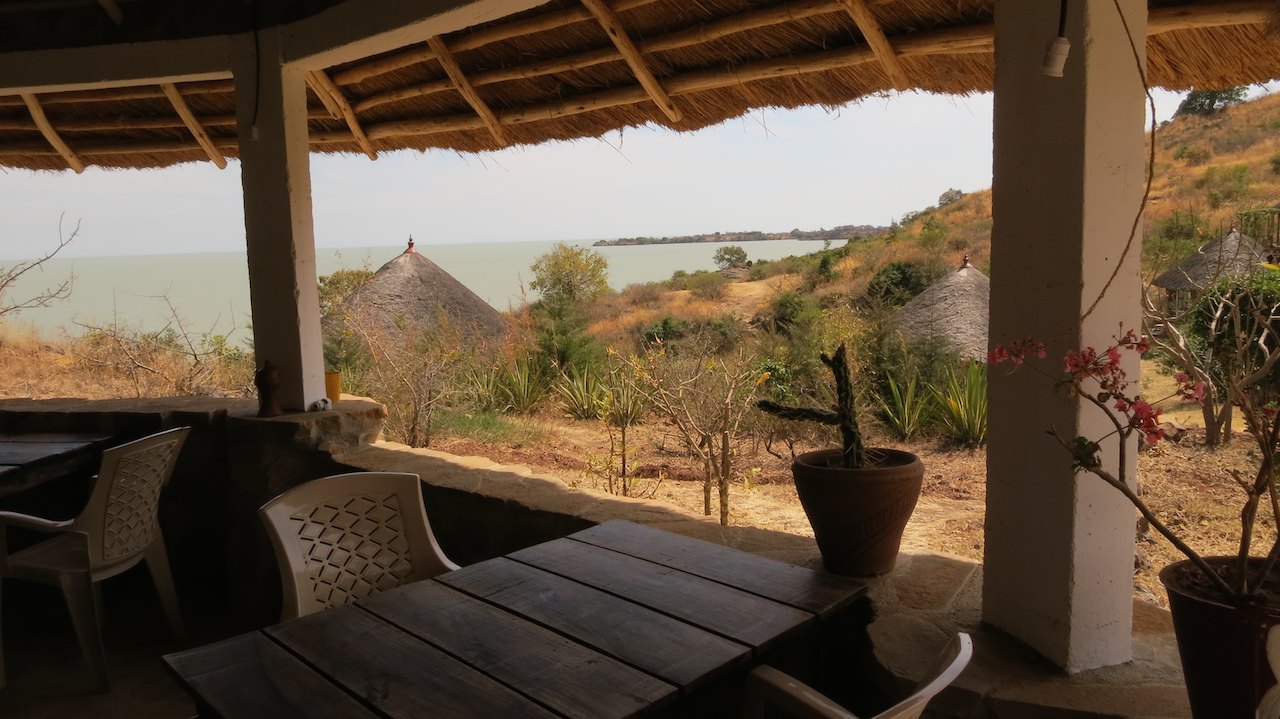
After the limited facilities at the camp sites in Khartoum and the days of bush camping it is great to be at the campsite of Tim and Kim: a toilet with a toilet seat and toilet paper and a shower with a jet of (cold) water. We enjoy the first cold  s in a long time and the delicious food cooked by Kim. Lake Tana also appears to be a birding paradise. We sit with our binoculars at the lake or under the big tree next to our tent watching the most beautiful birds for hours. We see Paradise Fly Catchers, Blue Cheeked Cordon Blues, Mouse Birds and Firefinches. Truly beautiful. We end up staying four nights to recover from the initial culture shock and to gain new energy to conquer the rest of Ethiopia. A great time!
—–
By leaving Sudan our time in North Africa ended. From leaving the ferry in Tunis we drove 7,200 kilometers through Tunisia, Libya, Egypt and Sudan. Countries that do not have a good reputation and are better known for riots and wars.
Although indeed incidents happen, our experience is that the media shows those events very one-sided. The positive stories around the referendum in early January 2014 that buzzed through Egypt, could not be found in the media. To the contrary, the emphasis was placed on the number of police officers that were needed to even hold the referendum and the number of incidents that took place nonetheless. We feel that is a pity. We often thought of the book “Het zijn net mensen” (They are just like people) by the Dutch journalist and author Joris Luyendijk, in which he describes the gap between what we read in the newspaper and the actual events in a particular area. As if a parallel universe is kept up.
We were pleasantly surprised by North Africa. Because of the way we were welcome everywhere and by the extraordinary hospitality that we experienced. Moreover, we have seen beautiful things. A step back in time with Leptis Magna in Libya, pyramids in Egypt and Sudan and treasures from ancient times in the National Museum in Cairo. But also great scenery: a beautiful coastline along the Mediterranean Sea, impressive desert landscapes and the beautiful Nile. Therefore, we do not say “farewell” but “Till next time, North Africa”, because we would love to come back again!
—–
Distance covered until Gorgora = 10,079 km (6,263 miles)
|

12 Dec 2014
|
|
Registered Users
HUBB regular
|
|
Join Date: Dec 2009
Location: The Netherlands
Posts: 66
|
|
|
To the north
Before we ride further south, we will go to the north of Ethiopia first for a tour around the beautiful Ethiopian Highlands. First to Gonder, a medium-sized provincial town north of Gorgora. There we can withdraw money, buy insurance for the motorbikes and hopefully get internet access. At Tim and Kim Village we could not access the Internet, but the blog could use an update and we would like to read some emails. After Gonder we will ride towards the Simien Mountains and the rock churches in the Tigray province.

We say goodbye to Tim and Kim and set off. It is not as busy as during “market day”, but there are still plenty of people and animals on the road. We are now better prepared and drive at an appropriate speed on the gravel road back to the main road. We arrive in Gonder in the beginning of the afternoon. We need to refuel. Like in Sudan and Egypt, fuel is hard to get in Ethiopia. At the first fuel station, the attendant comes to meet us while shaking his head. He has no ’regular’ and refers us to a fuel station a few miles away. But even at that fuel station and the next six(!) stations then they cannot help us. We decide to find a place to sleep first before we continue the search for fuel.
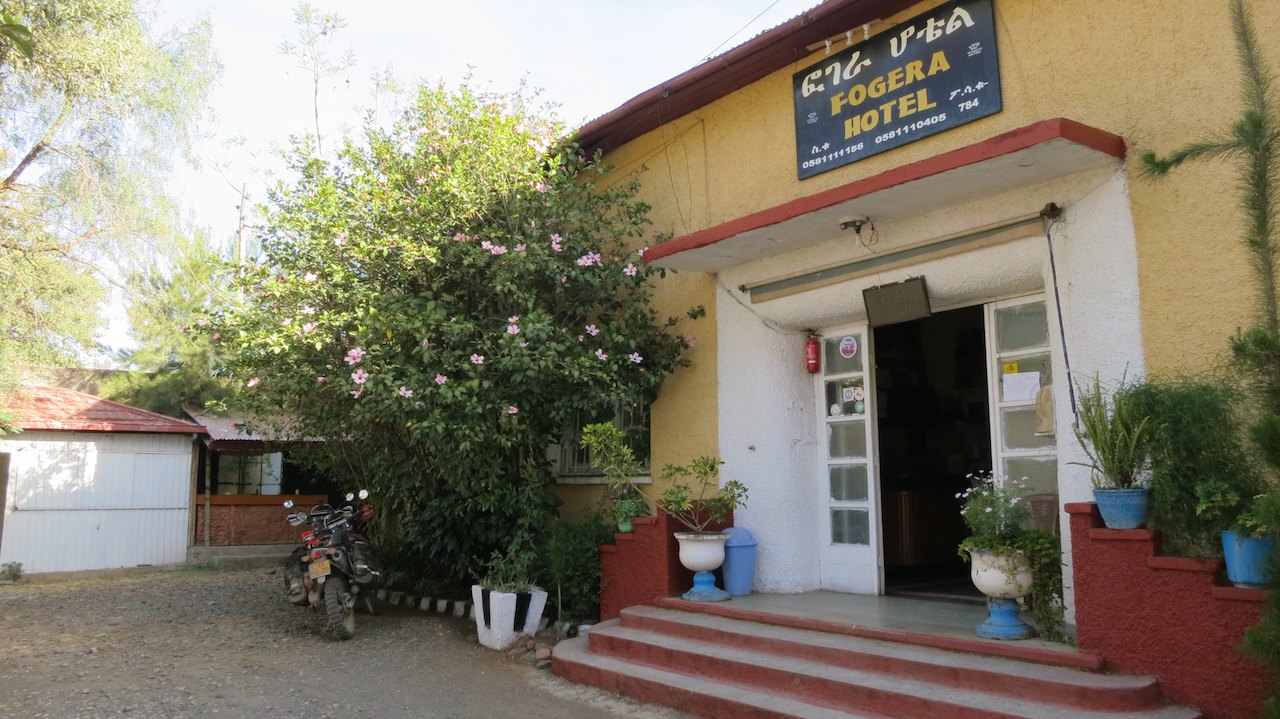
At the Fogera hotel we find a simple double room. In the reception there is a large sign that says “Free WiFi”. Great, because that was one of the things we wanted to settle in Gonder. But unfortunately, we cheered too soon. Although we are connected to the router, there is no internet. We still need to go to the city centre to get on the Internet in another way. Once in the centre we pass ETC Telecom. ETC provides postal services and owns all Ethiopian telecommunications. Maybe they can activate the simcard we bought at the border a few days ago.
In Africa, they more or less skipped the communication via land lines and immediately went mobile. It is not expensive. A prepaid simcard only costs 30 Ethiopian Birr (€1,12) and phones, especially the older models, are less than 270 Birr (€10). The number of mobile connections in Ethiopia has risen so quickly that the network cannot handle it. Especially for mobile Internet the network does not have enough capacity. A problem that will not be solved easily, because the number of mobile connections increases everyday. While I am waiting my turn at ETC, one mobile phone after another is sold. Some customers do not even have decent shoes, but they do have the required amount to buy a phone. Very remarkable.
Once it is my turn, a friendly lady informs me that I will not be able to access the Internet with the simcard we bought at the border. For Internet we need a different simcard or a dongle. For a dongle she refers us to a shop around the corner. We find the shop and are assisted by Sammy, a young whiz-kid who speaks a bit of English. After we have paid for one of his dongles, he ask for my phone. Before I know it, he has changed some of the settings and gives me back my phone grinning: “ You have internet in half an hour. No problem“. Great, at least that is something.

Back at the friendly lady at ETC I give her the dongle, a passport photo and a copy of my passport. It may not cost much, it does require quit a lot of paperwork to get online. Once she tries to register the dongle it appears the device does not work. We go back to Sammy. From his warehouse he grabs all the dongles that he has to join us to the ETC building. Together with the ETC lady he tries to register one of the dongles for us. It is now well past 17:00 and colleagues of the kind lady leave their workplace one by one. Several times we propose to come back the next day, but she says that wont be necessary, she will finish it tonight. What a service! In the end, it is almost 19:00 when one of the dongles is successfully registered. We still did not manage to get on the internet, but according to the lady that is due to the crowded ETC network. We should keep trying.
That evening we try to get on the Internet with the dongle several times. Unfortunately without any luck. The internet on my phone does work, so we can at least read some of our emails. The next morning we meet Sammy again to go back to ETC. The conclusion remains unchanged; the dongle works, the faulty network is the real problem. We will see about that later.
Now we can start the next administrative task: insurance for the motorbikes. In Sudan we had tried to get a ‘yellow card’ for Africa, but we did not succeed. We should be able to buy COMESA insurance in Ethiopia. At the first insurance office they luckily know what Comesa is and they can also sell it to us. Peter goes with the manager to his office, while I stay outside with our bikes. Like all administrative matters in Africa this also takes very long, but the long wait is rewarded. Three hours later Peter comes out with a yellow card for Africa for both of us. Great, that is settled. Now we can look for fuel.
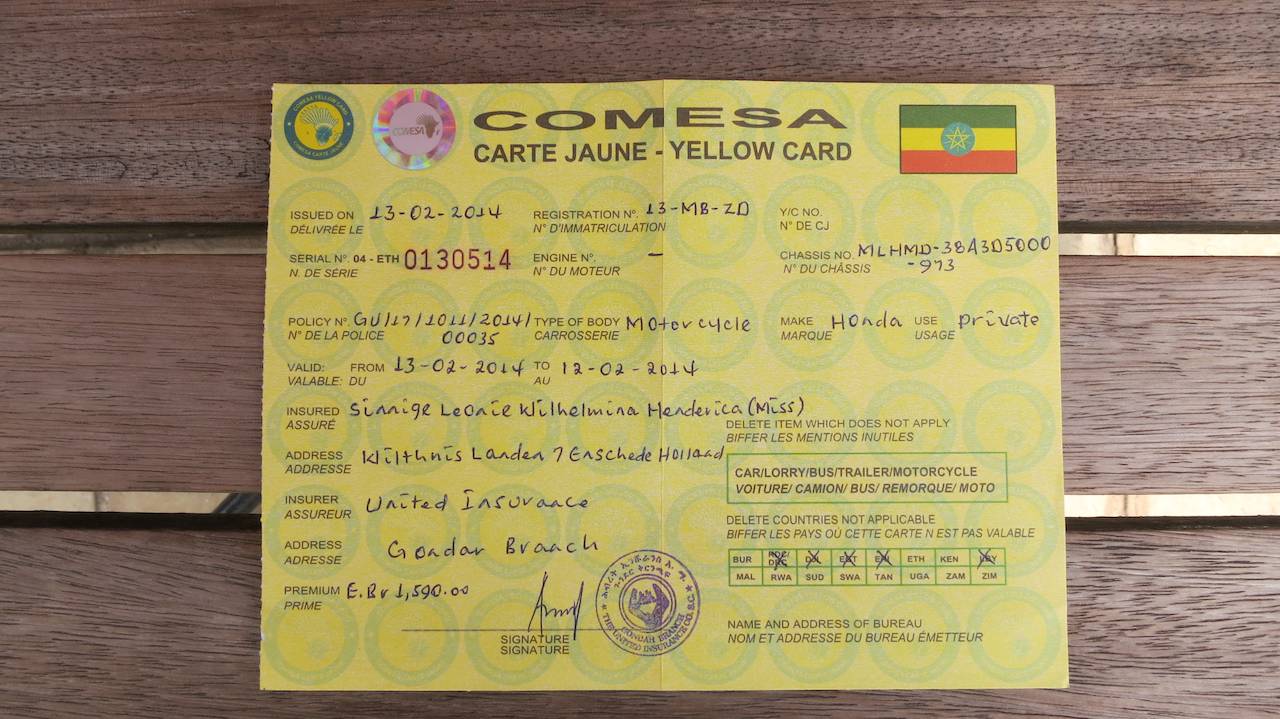
In the centre of town is one fuel station that we had not tried before. There is a long line of cars and -more importantly- a long line of tuk-tuks and motorbikes. Cars and trucks mostly take diesel, but tuk-tuks and motorbikes use fuel like us. We join the queue and drive little by little to the pump. Once there, it appears that there are two lines; one with vehicles and one with people with jerrycans. A spirited lady at the pump keeps a close eye on everybody and gives everyone the required fuel in turn. Full tanks means that we now only have to find a bank to withdraw some money.
In the centre we find a bank where the Visa card of Peter is accepted. We withdraw enough money for the next few days and then can finally go! We get on the bikes and start the bikes. Then I hear Peter grumbling. He left the GPS at the insurance office! We have to go back to get it. Unfortunately, by now it is lunch time and the office is closed for the next two hours. We decide to have some lunch as well and park our bikes in front of the insurance office 1,5 hours later. One of the ladies already comes out of the building with the GPS high in the air. Relieved that the GPS is not gone missing, we drive out of town. Without a working dongle, but with mobile internet, insurance for the bike, a full wallet, a full tank and good spirits to finally head north.

Once we are out of town we immediately drive on a beautiful road in the hills. What is striking is that virtually every piece of land is cultivated. On steep slopes terraces are made to grow different crops. There was not much rain lately, so the fields are dry and yellow. From the high road, we look down on a yellow patchwork blanket. It is really beautiful. Behind every corner lurks another view.
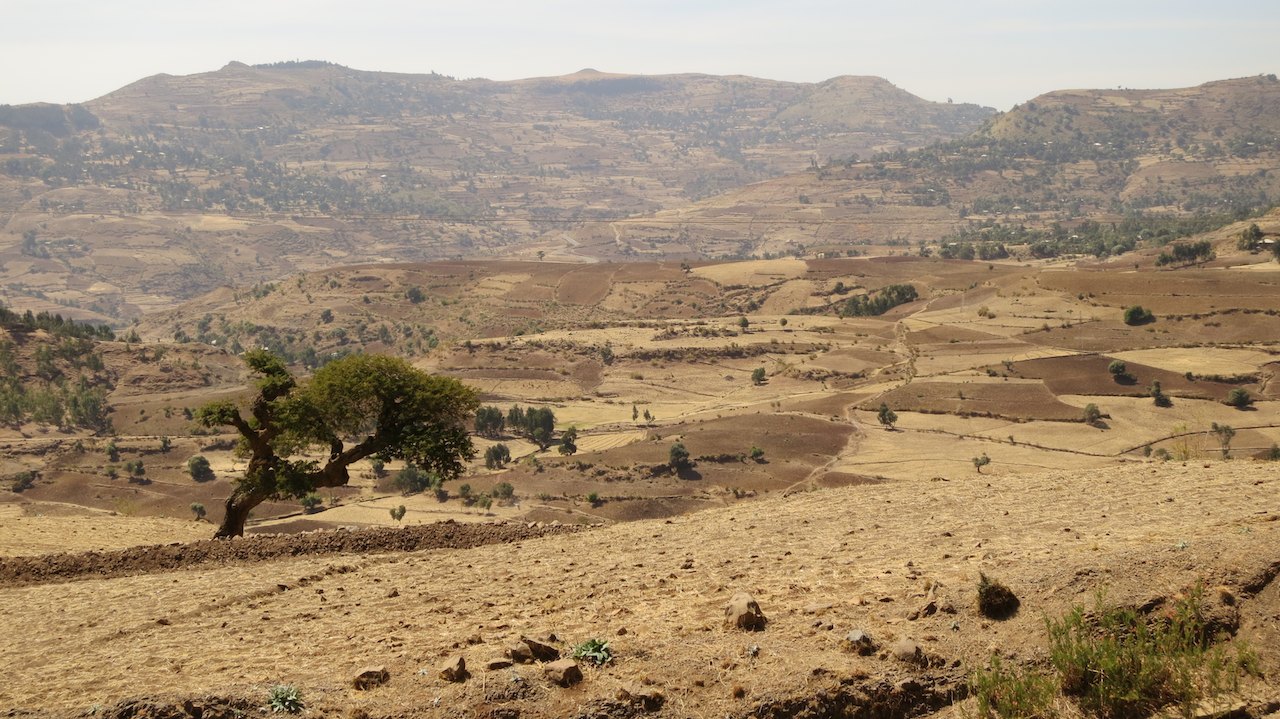
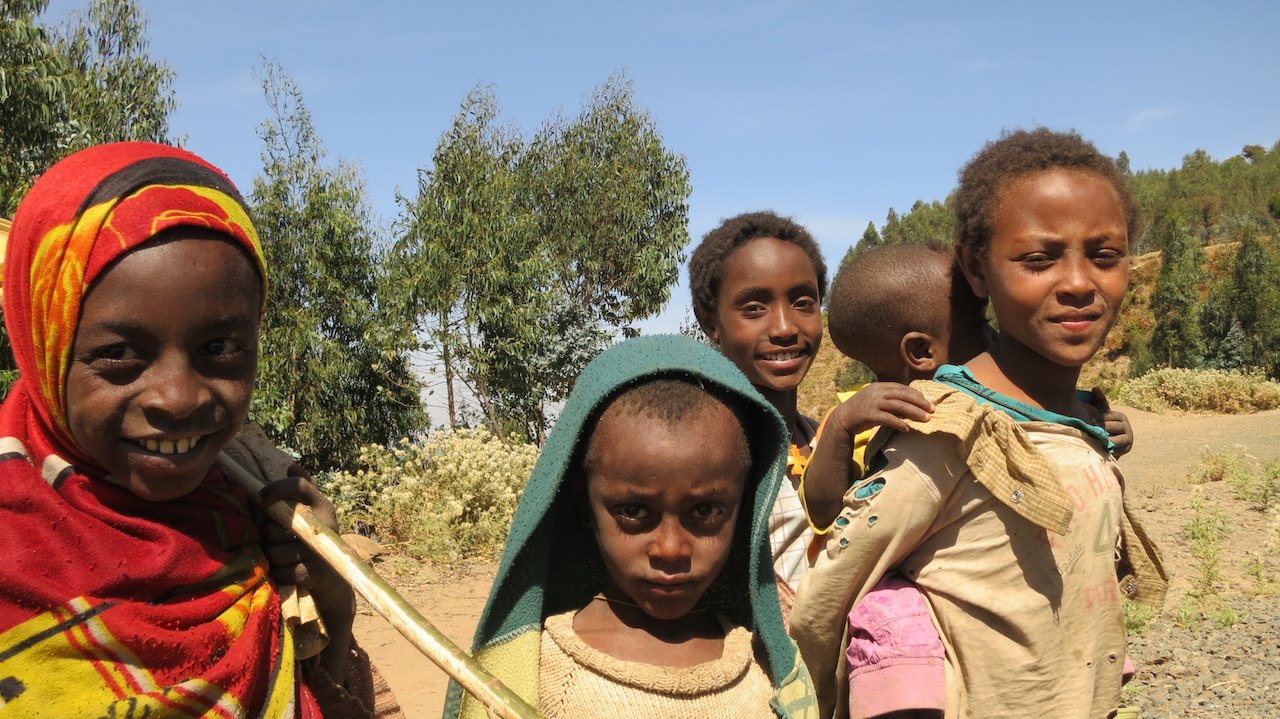
We stop very often to take pictures and look at the views. And while we often think we are alone, this never turns out to be the case. Every time we switch of the engines, we hear someone shouting in the distance: “ You, you, you, Faranji“. Before we know it there are a number of spectators around us who watch us while we are taking pictures, drinking or are trying to eat a banana. The latter is quit hard if you have a group of children with hungry eyes around you that have one hand to their mouth to indicate they would like something to eat or drink as well.
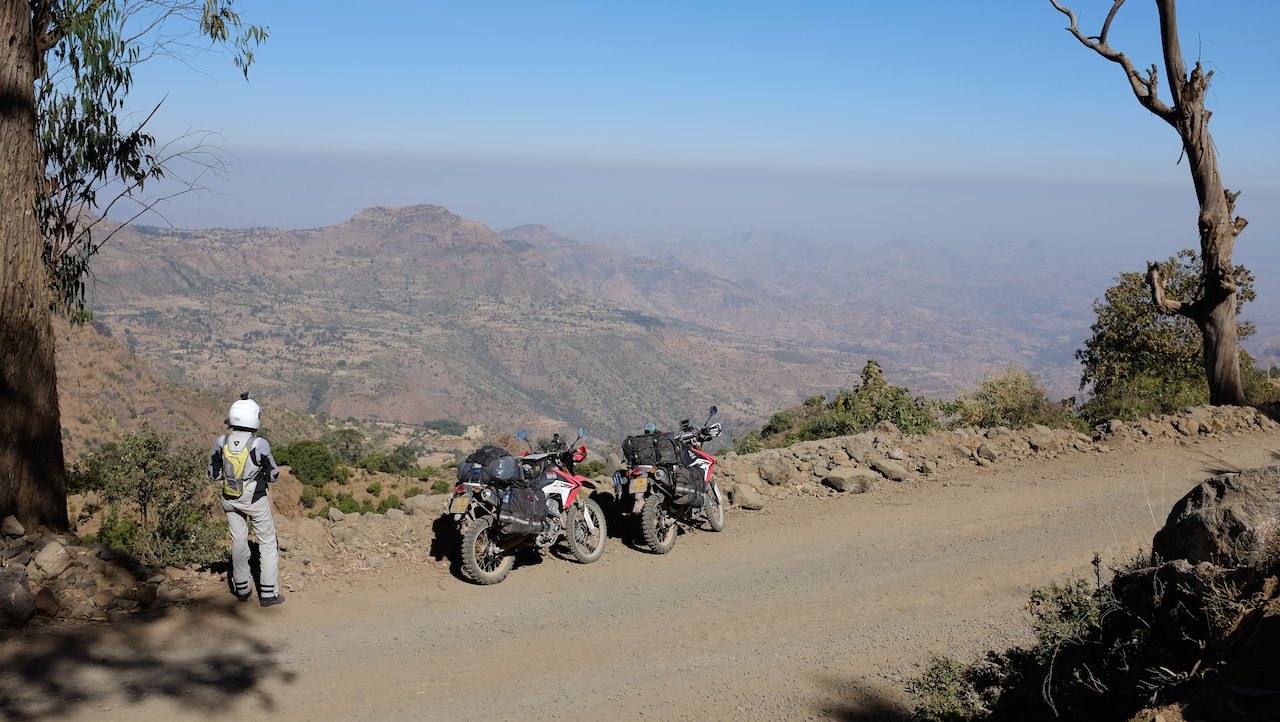
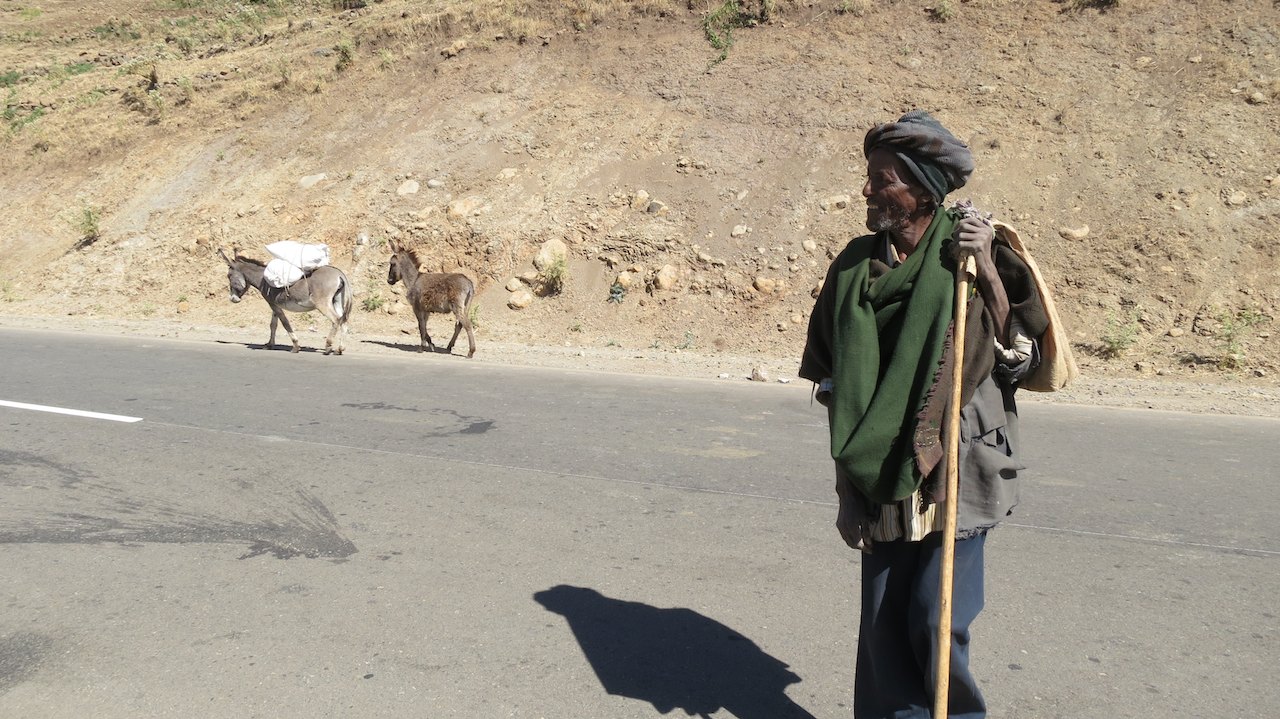
At dusk we arrive in Debark. The town is situated at 2800 meters altitude and is the starting point for hikes in Simien Mountains National Park. For the first time since a long time we see a lot of tourists and tour groups. It is so busy that the first three hotels we go to are full, even camping is not possible. We eventually find a single room with a large cozy bed. There is no running water. In the corner of the tiny little bathroom is a big bucket of water to wash and to flush the toilet. Despite the fact that we sleep in one of the better hotels in the town, it still feels a bit like bush camping.
We decide not to go hiking in the Simien Mountains, because we are both not really in shape and not used to the high altitude yet. We decide to drive to Axum the next day. We attempt to fill our tanks again at the fuel station in town, but are soon told that we can only get fuel in Axum, the next big town. Even on the black market in Debark there is no fuel. With our extra jerrycan of fuel we should be able to make it to the next pump in Axum.
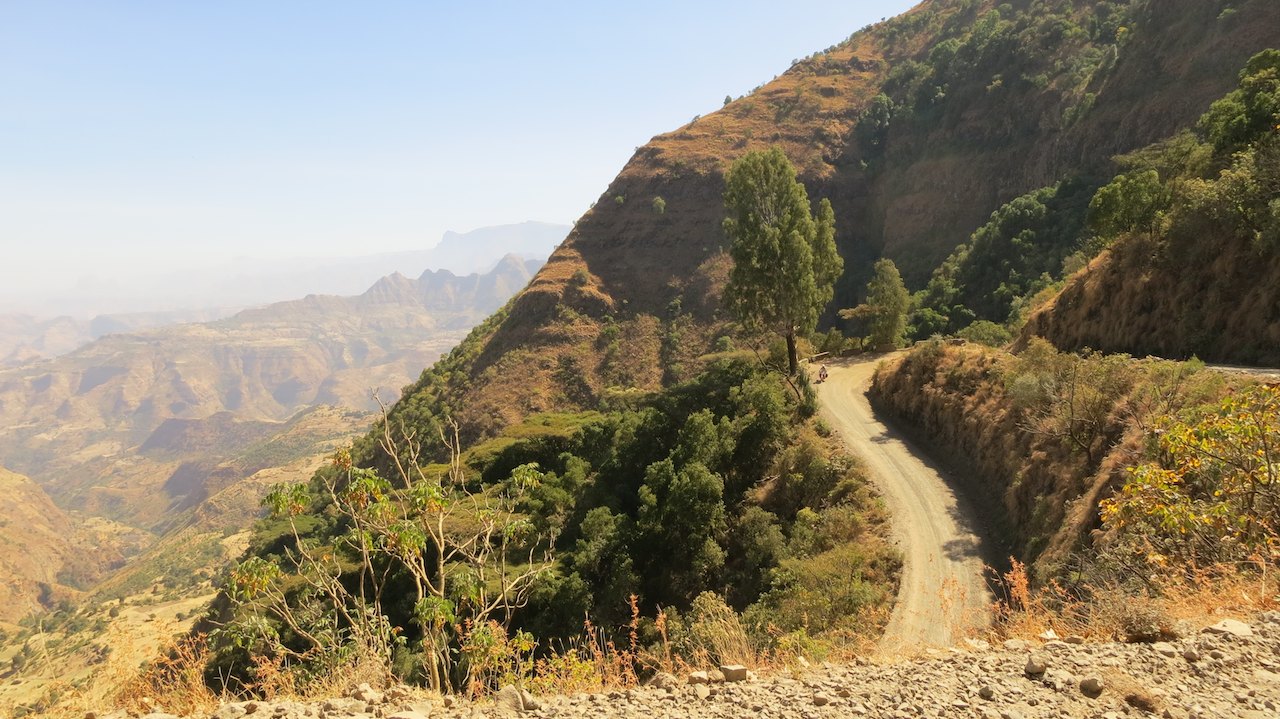

Once we leave the village, we also leave the asphalt road and ride on a nice gravel road. In some parts the gravel is very deep. It makes the bikes ’dance’, but overall it is not very hard to ride here. Though we are standing still more than we are riding, because it is so beautiful. We often stop to take pictures. The views, steep cliffs and the shapes of the hills are very impressive. The only traffic we encounter are coaches that ride slowly up the mountain and then roll down the hills at high speed. Behind the each bus is a huge cloud of dust. So much dust that we cannot see a thing anymore and have to stop to avoid that we would drive off the road.

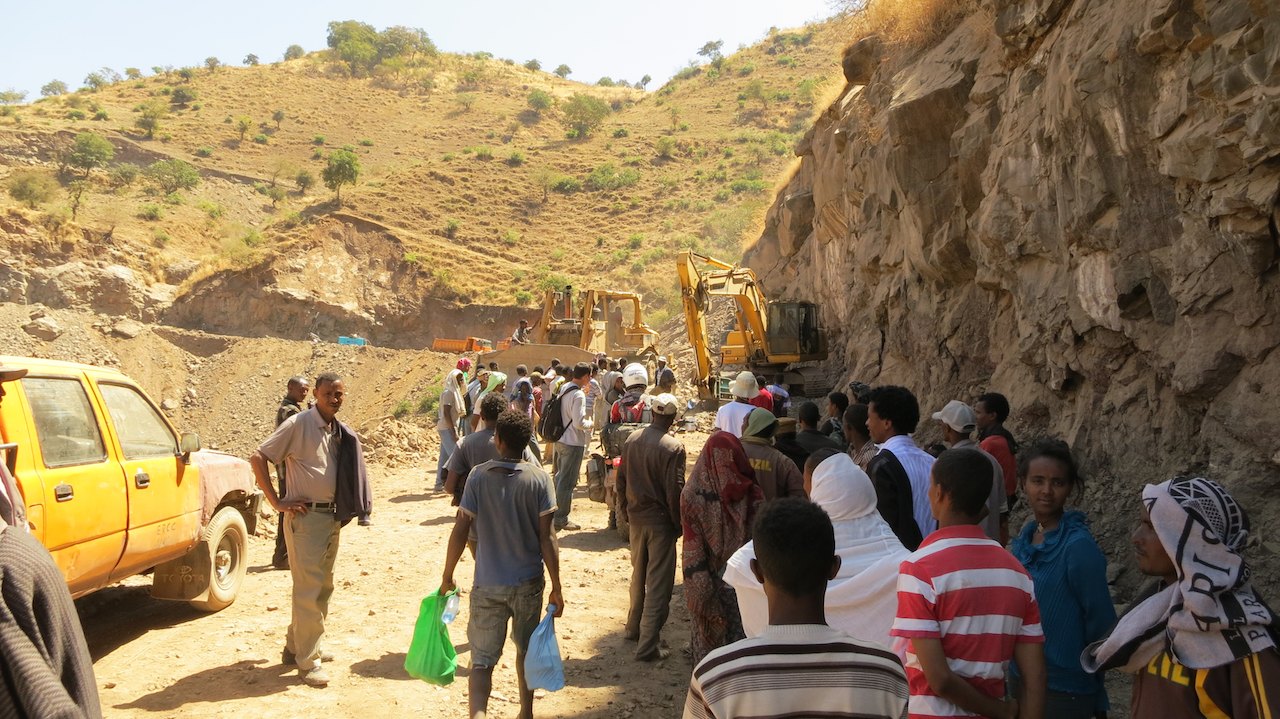
Halfway through the day we run into a traffic jam. Along the entire route there are road works. As in Sudan, the Chinese also build new roads in Ethiopia. With local workers, they cut out the mountains and smooth the gravel to pour a layer of asphalt on it. The traffic jam is caused by two large machines that are drilling out the mountain to make the road slightly wider. No luxury, because it was not wide enough for two buses to pass at the same time. We ride our bikes along the long line of waiting cars until we cannot go any further and join the other spectators. Between all Ethiopians is one “Faranji”, Brian from the U.S. He is backpacking through Ehtiopia and is on the bus to Axum. He has been here for several hours to wait until the road reopens. While we are talking to him, one of the machines moves and the workers gesture that we can ride our bikes along the road works. We say goodbye to Brian, maneuvering past the machines and continue our way up north. For now without any busses or dust in front of us.

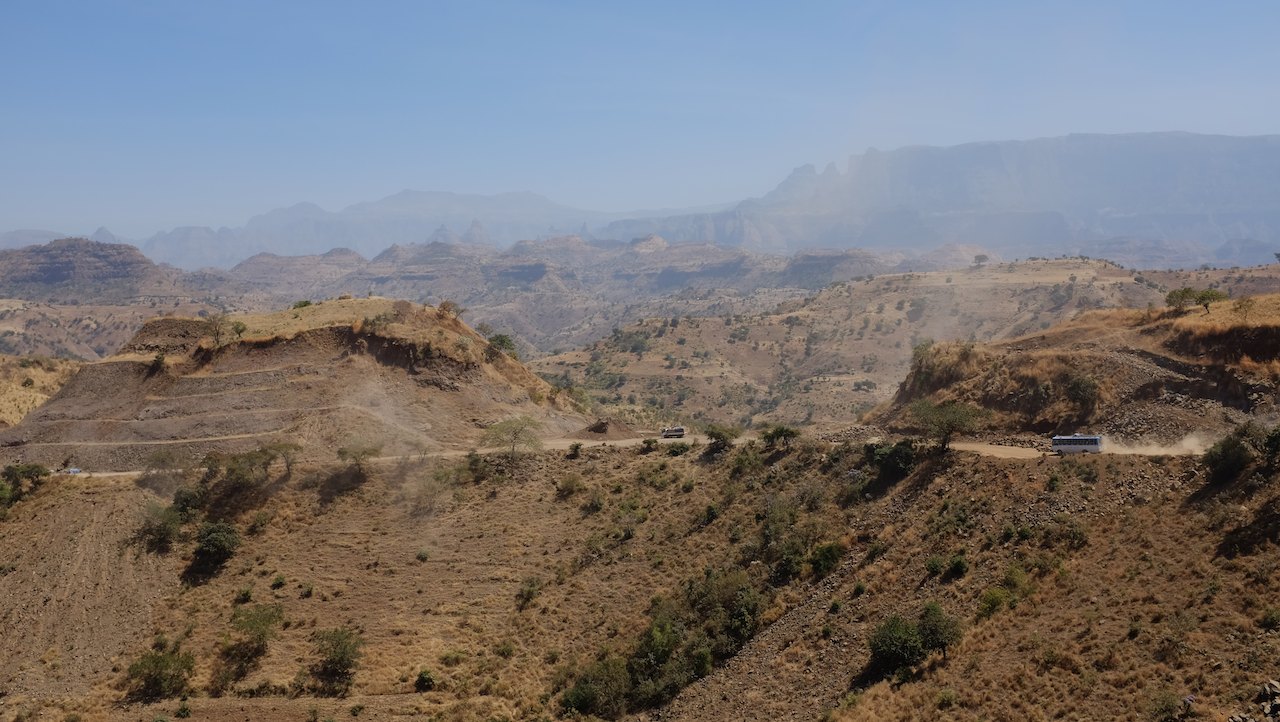
If after a few kilometers we look back, we see that the road is open again and the busses are in hot pursuit. While we stop for a sandwich the first bus and its dust overtakes us. After lunch we take over the bus again, but each time we stop to take a picture, we are caught up and have to overtake them again afterwards to avoid the dust. This ritual is repeated several times, until we arrive at the tarmac in Shire. In the last sunlight we drive from Shire to Axum, where we check in at the Africa Hotel. When I look in the mirror, I see my face is black with dust. I did not only drive in the dust of the buses, but also more than 200km in the dust of Peter who drove in front of me. Fortunately the showers at the Africa Hotel do have water!
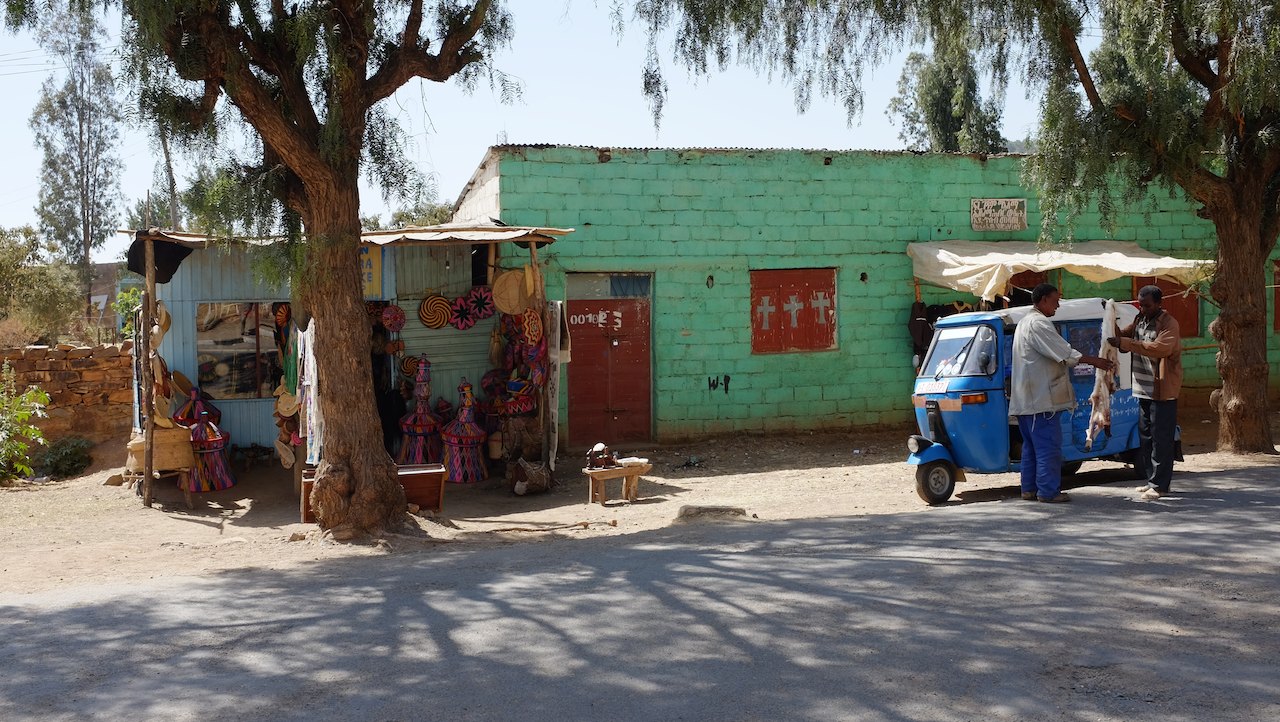

When we go to the centre of Axum the next morning, we walk past another ETC office, recognizable by the blue phone booths on the street. We decide to have the dongle checked once again. Like in Gonder, it is very busy in the office with people buying phones. When it is my turn, and I explain our problem, the man behind the desk looks at me with a stern face. He takes our problem very serious and apologizes on behalf of ETC for the poor service. He will personally investigate my dongle and if necessary contact his colleagues in Addis Ababa. He writes down all data and promises to call as soon as he knows more. Meanwhile, I should visit the city, as waiting would only be a waste of my time.
We follow his advice and visit the one attraction of Axum: the pillars of Axum. In the town, as well in its surroundings, several field with stone pillars can be found. The pillars were built around 400 ac as tomb stones. In Axum itself three pillars can be visited. One of the pillars has been in Rome for a long time, but some years ago the Italians gave it back to Ethiopia. At the gate we buy a ticket, that is handwritten by the men behind the counter.
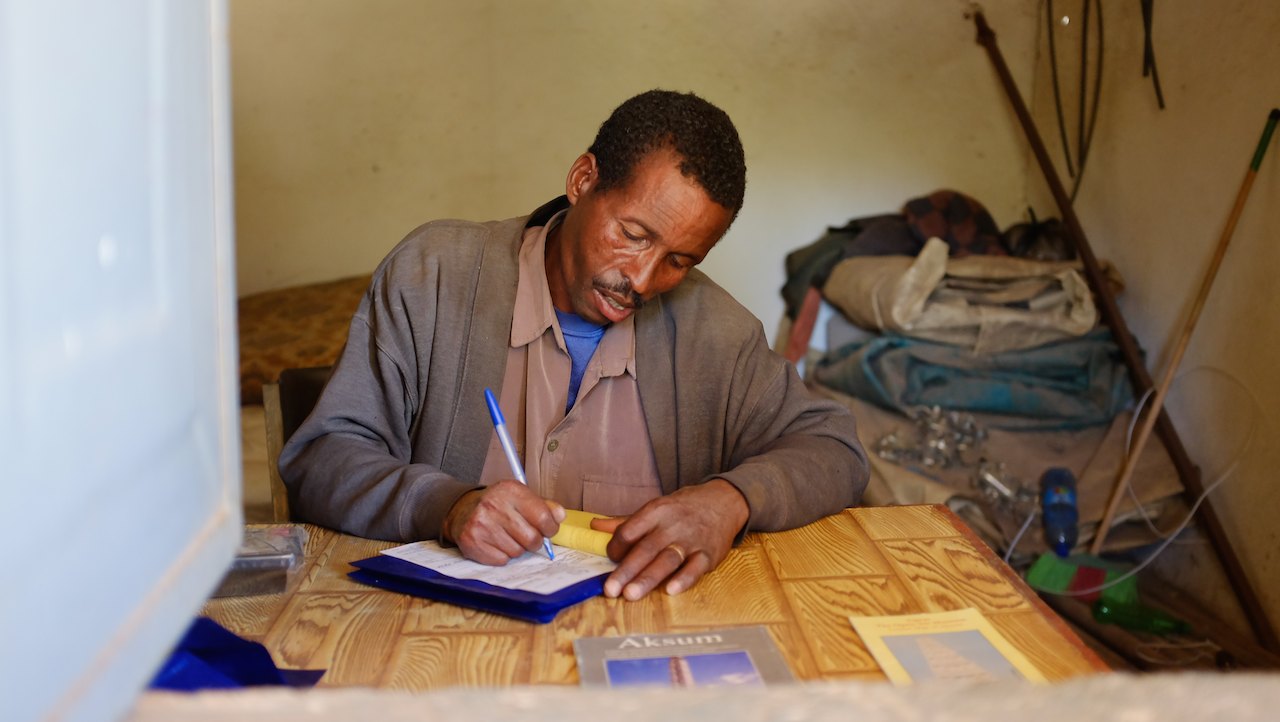
At the foot of the pillars we bump into Brian again. The roadworks took so long that his bus did not go all the way to Axum. He had to stay the night in Shire and had taken a very early bus to Axum that morning. Brian advises us to go to the cattle market in Axum. It is market day today and farmers have taken their animals to the market. A good idea to visit the market! We say goodbye to Brian and agree to meet for dinner that evening.
To go to the market, we hold down a tuktuk and negotiate the price. Just when we want to get in, it appears there is already someone sitting in the back of the tuktuk. We assume that the other passenger will be dropped off and that we drive to the cattle market after that, so we get in the tuktuk anyway. The cattle market is a little out of town. The road is very bad and we are bouncing in the back of the tuktuk. When we arrive at the market area it is completely empty. No cows, no sheep, no goats or even a chicken to be seen. We are too late and just see the last farmer with his cattle disappear over a hill in the distance. Unlucky.

We ride back over the same bumpy road as Peter suddenly shouts: “ GET YOUR HANDS OUT OF MY POCKET! That man tries to pickpocket me!” While we were tossed around the tuktuk the third passenger had put his hand in Peters pocket. Peter had initially not noticed. Only when he accidentally stuck his hand in his pocket he felt the hand of the other guy! Angry, Peter begins to check his pockets. It turns out that one pocket -the one with the zipper- is empty. The camera batteries and SD cards are gone.
Peter yells and says the man must give him back his stuff and searches the man. The door of the tuk-tuk is on my side, so long as we do not get out, the crook can get nowhere either. While the man is getting smaller and moans that he has nothing, Peter demands the driver to go to the police. Then the man in the back starts to moan louder and points to the ground. Maybe the stuff has “fallen”? We indeed find the missing items on the floor. After we have checked all our stuff three times, we get out of the tuktuk. The thief runs away. A little confused we have the chauffeur take us to the hotel where we pay him. Once inside we realize that the driver was probably in on it. If we had realized that before, we would certainly not have paid him. We were not so streetwise yet. Fortunately, we still have all our stuff.

At the beginning of the evening we meet Brian and walk to a restaurant in the center of the town. We enjoy a cold  and injera, the national dish of Ethiopia. Injera is a pancake made of teff flour, a cereal that is grown only in Ethiopia. The injera itself is not so good and really only good to eat together with the sauce. You eat injera with your hands (only with your ’clean’ right hand and never with your left hand), by tearing off a piece of injera and taking a bit of sauce with that. It is so common to eat with your hands that you do not even get cutlery. In North Africa, we had already learned to eat without cutlery, so we now have no problems to eat injera. Ethiopians eat injera throughout the day, at breakfast , lunch and dinner. A day no injera is a day wasted. We stick to one injera per day, Bozena Shiro is our favorite.
After the nasty tuktuk ride, it is ultimately a very nice evening with Brian. He tells us about his trip (14 days in Ethiopia, Djibouti and Somaliland), about his work in San Diego and the time he worked as a volunteer in Mongolia. He also wants to know everything about our adventure. At the end of the evening he is fantasizing about which motorbike he could do a similar journey. He tells us about “The True Size of Africa”. Most of the “flat” world maps give a distorted picture of the true size of countries, especially those on the equator. In reality, the African continent is so big that if fits the U.S., China, India, Japan and Europe and then there is still space left! No wonder it takes us so long to cross this beautiful continent.

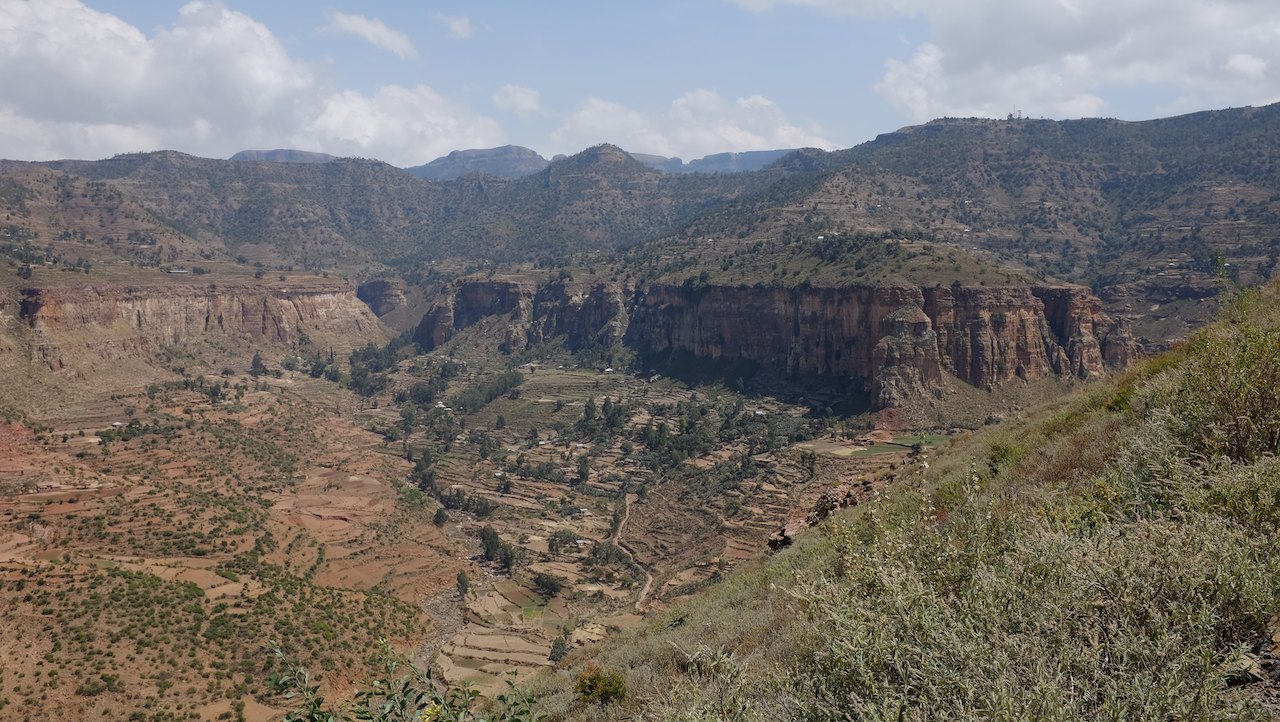
The next morning we sit quietly at breakfast when my phone rings. It is the gentleman of ETC who would check our dongle. As in Gonder, he concludes that the dongle works fine, but the network is down. He feels very bad, but has a solution. He is now outside our hotel with a sim card with which we can get on the Internet. The Internet will not be as fast as with the dongle, but it will work. I hurry outside. He wants to give me the simcard for free, but that really is not necessary. What a service! And that on a Sunday! We really went out of his ways to help us! And he was right, with the sim card he gave us we did manage to get on the internet. The remainder of the day we use it to read our emails and update the blog (which in the meantime was about time).

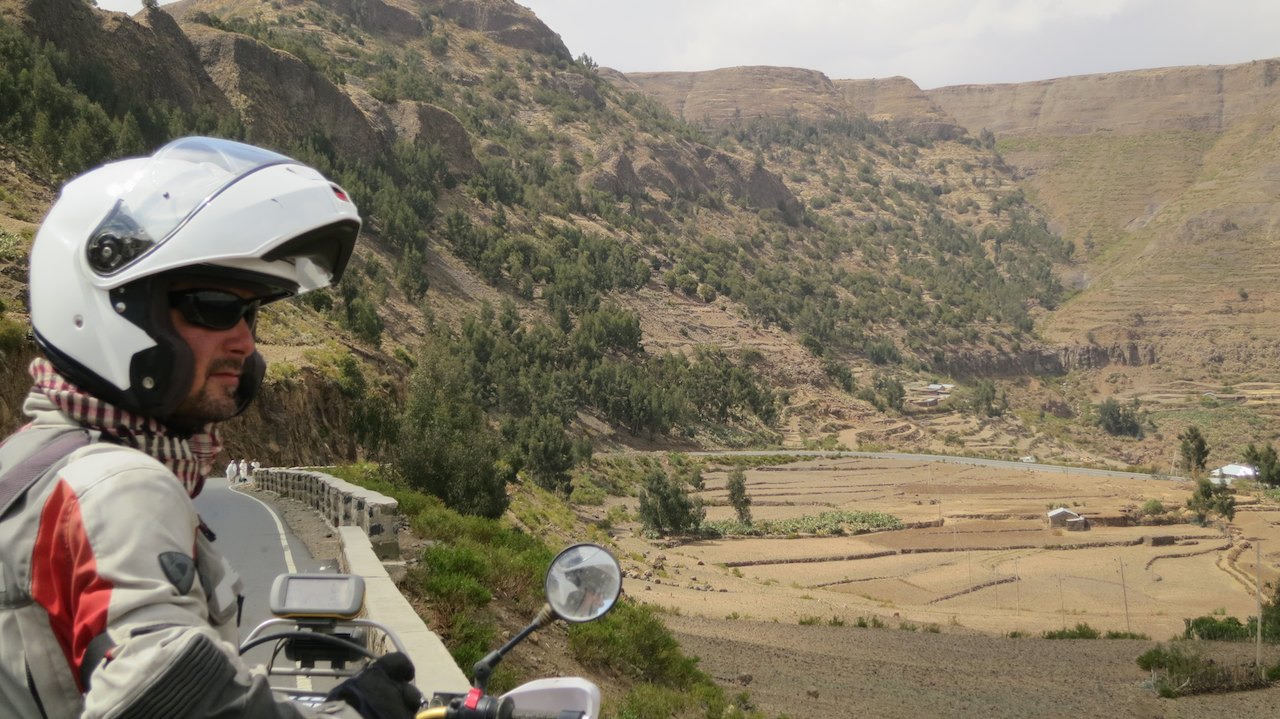
After a relaxed Sunday, we drive to Wukro on Monday to visit a rock church there. In the northern province of Tigray are more than 120 rock churches. The churches are carved into the rock and often beautifully painted. Most rock churches are very difficult to reach because they are carved into a steep cliff or hidden in a cave. Some churches may only be visited by men or by practicing Christians. The local priest determines -sometimes after an interview- whether you are allowed to visit the church. The rock church in Wukro can be accessed from the village and is open to both of us. On the way to Wukro we see a lot more colourful churches scattered in the landscape. Often on top of a hill, visible from far away. When we arrive in Wukro we are too late to visit the church, but we eventually go there the next morning. It is a small church with some beautiful paintings. A nice preview of what we can expect in Lalibela.
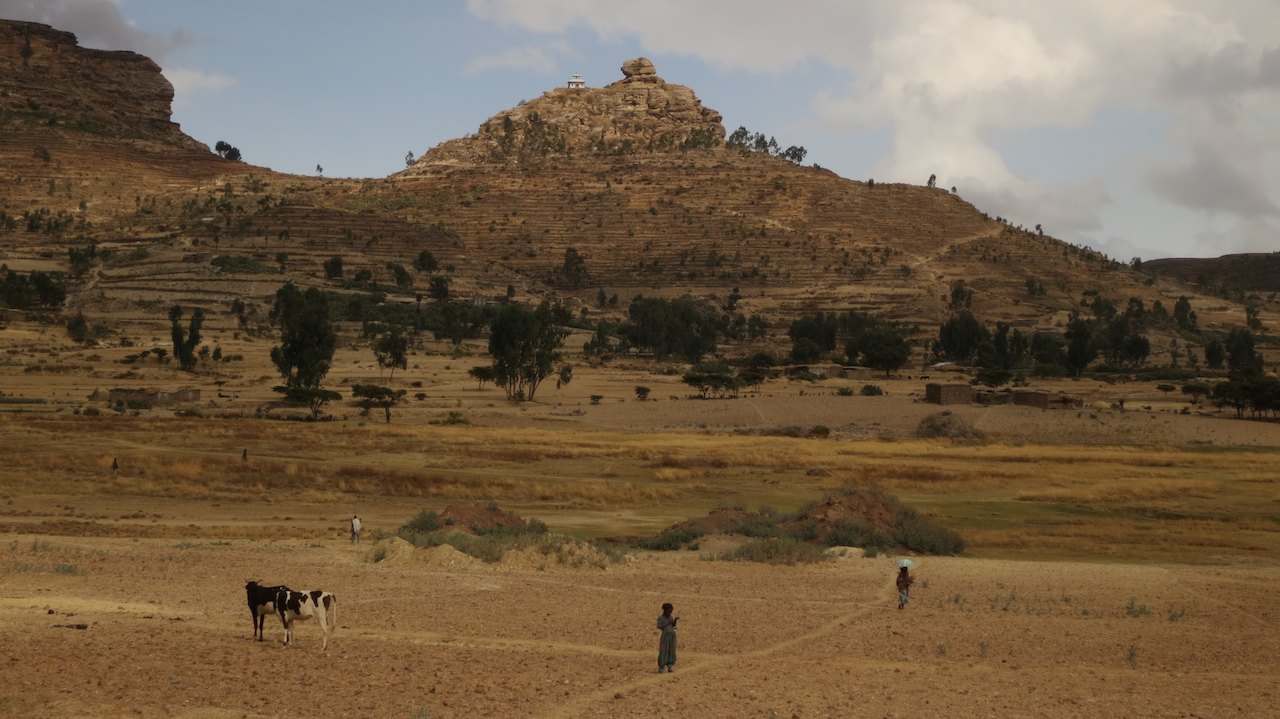
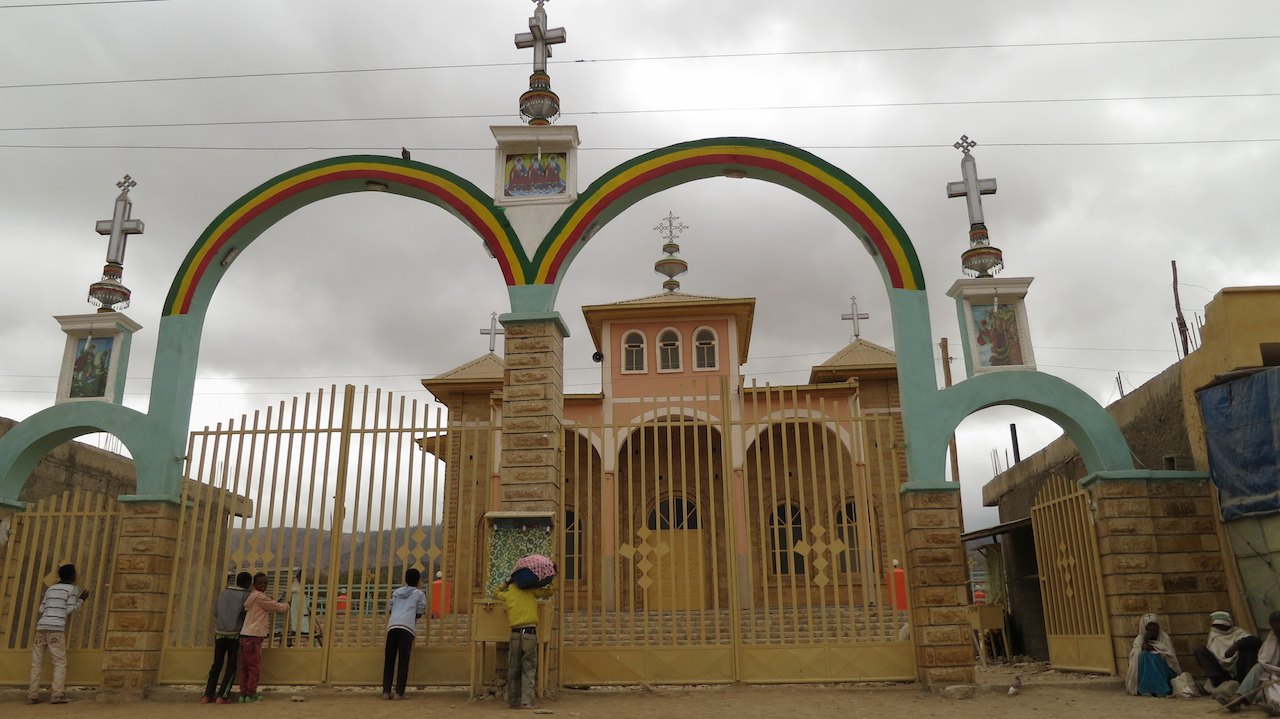
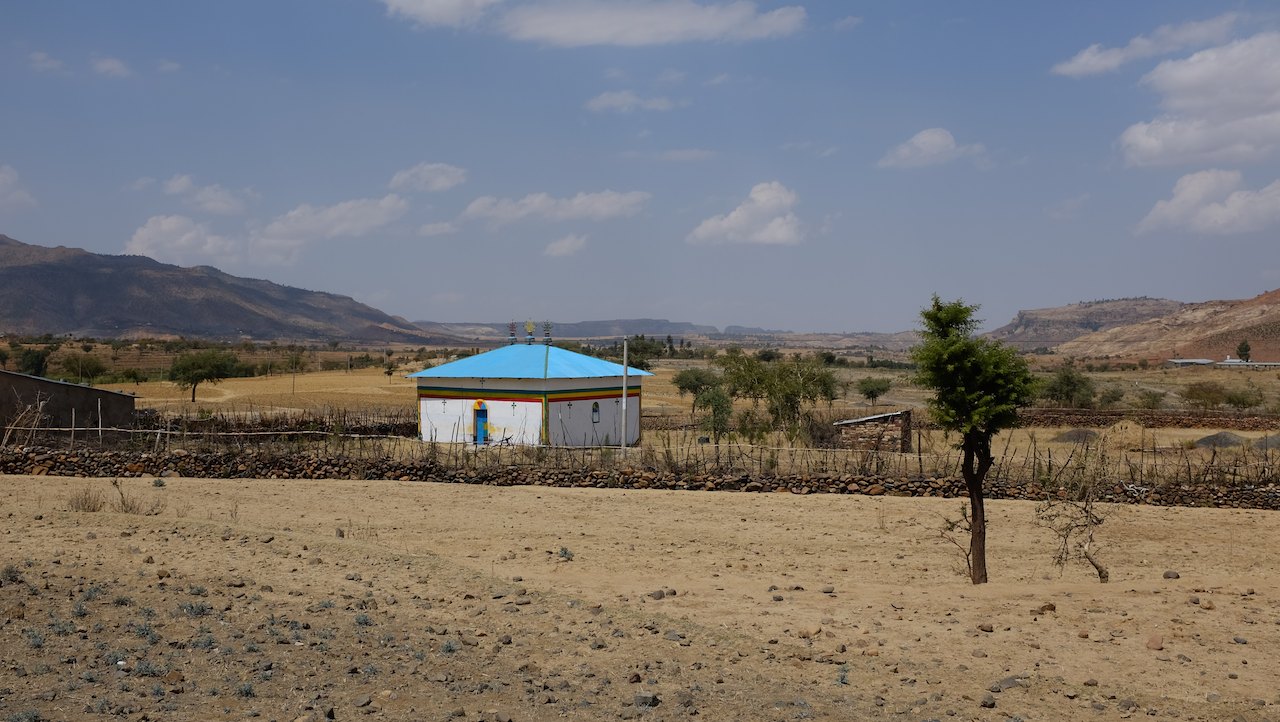
After our visit to the church in Wukro we drive to Mekele where we are invited by Kevin and Els and their children Jotan and Moshe. We met this Belgian family at Tim & Kim Village where they were on holiday with their sister (in law) Becky. They live in Ethiopia for several months now and work at the Mekele Youth Centre (MYC), a youth centre run by a major mission organization. Kevin is waiting for us in the centre of Mekele. We follow him to their house, park our bikes in the walled garden, put our stuff in Jotans room where we can sleep and then go with the family to a restaurant nearby for a delicious burger!
In the afternoon, Kevin takes us to the MYC where he gives us a tour and introduces us to his colleagues. The MYC is visited daily by about 800 young people from Mekele. Kevin and Els provide workshops in the field of health education. They also guide young people in their everyday problems such as housing, employment and education. A wonderful project and very inspiring to see how committed they are to help the Ethiopian youth.
In the evening we enjoy a lovely meal made by Els, we talk endlessly about their lives in Ethiopia and I fill my time with Jotan and his book about the knights. Great we could visit them!
The next morning, when daily life starts again, Moshe goes to school and Kevin to the MYC. We pack our stuff and start our trip to Lalibela. More about that in a future post.
Distance travelled to Mekele: 10,756km (6,684 miles)
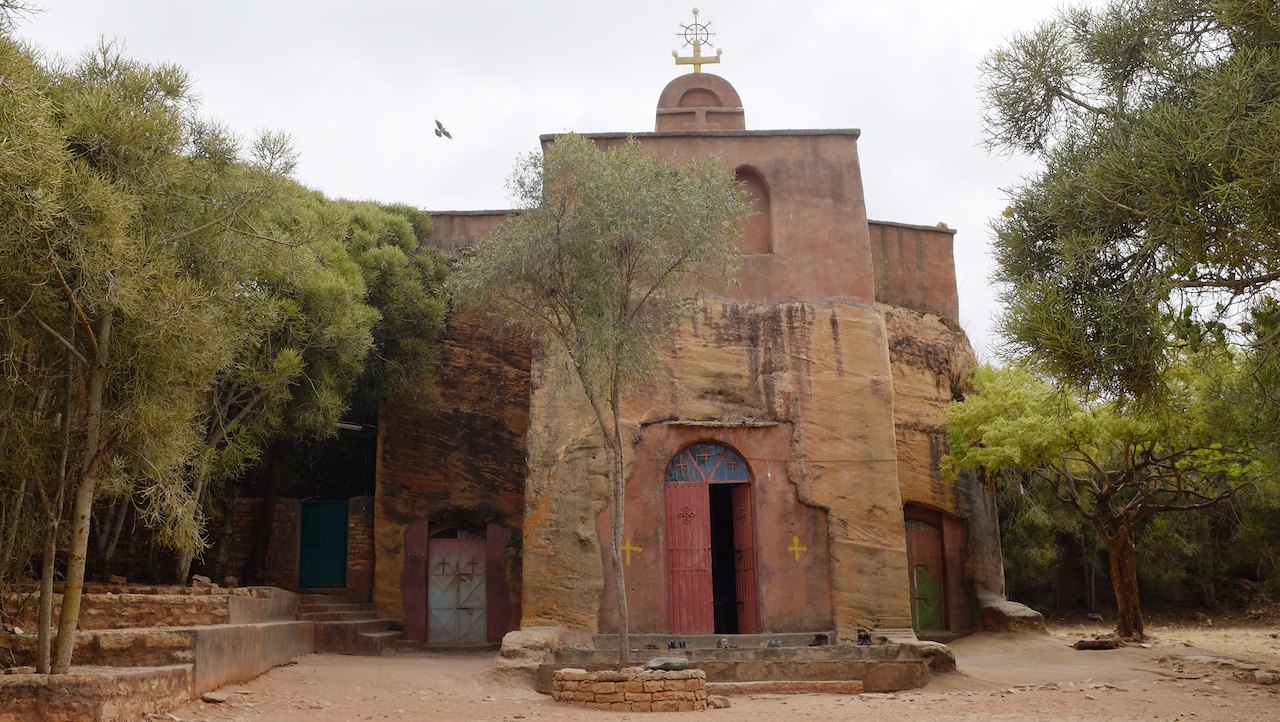
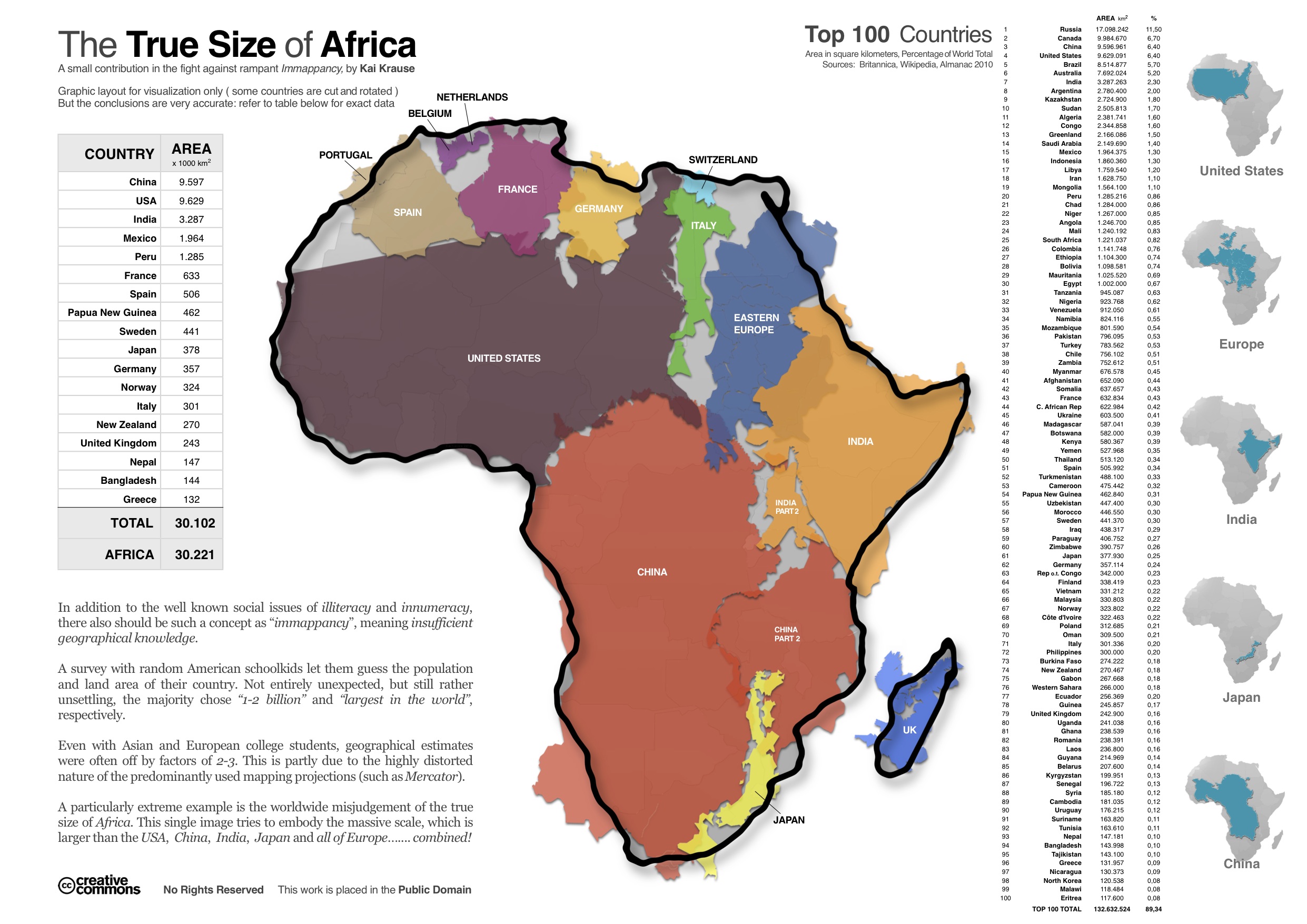
|

29 Dec 2014
|
|
Registered Users
HUBB regular
|
|
Join Date: Dec 2009
Location: The Netherlands
Posts: 66
|
|
|
Rock-hewn churches of Lallibela
In most guidebooks it is listed as one of the highlights of Ethiopia: a visit to the rock-hewn churches of Lalibela. In the small village high in the Ethiopian hills eleven beautiful churches were carved out of the rocks in the 13th century. The village is a place of pilgrimage for the Orthodox Christians in Ethiopia, for tourists a ’must see’. It is a 360km drive from Mekele to Lalibela, a trip that we do in one long day.
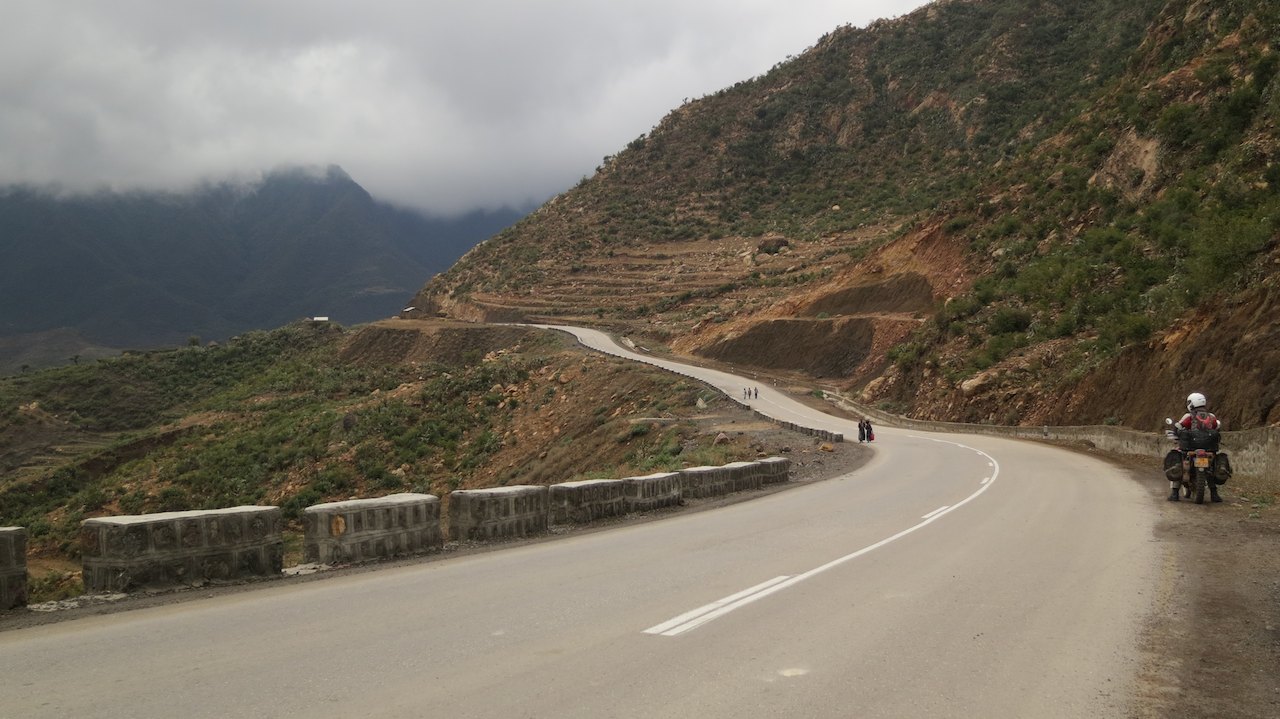
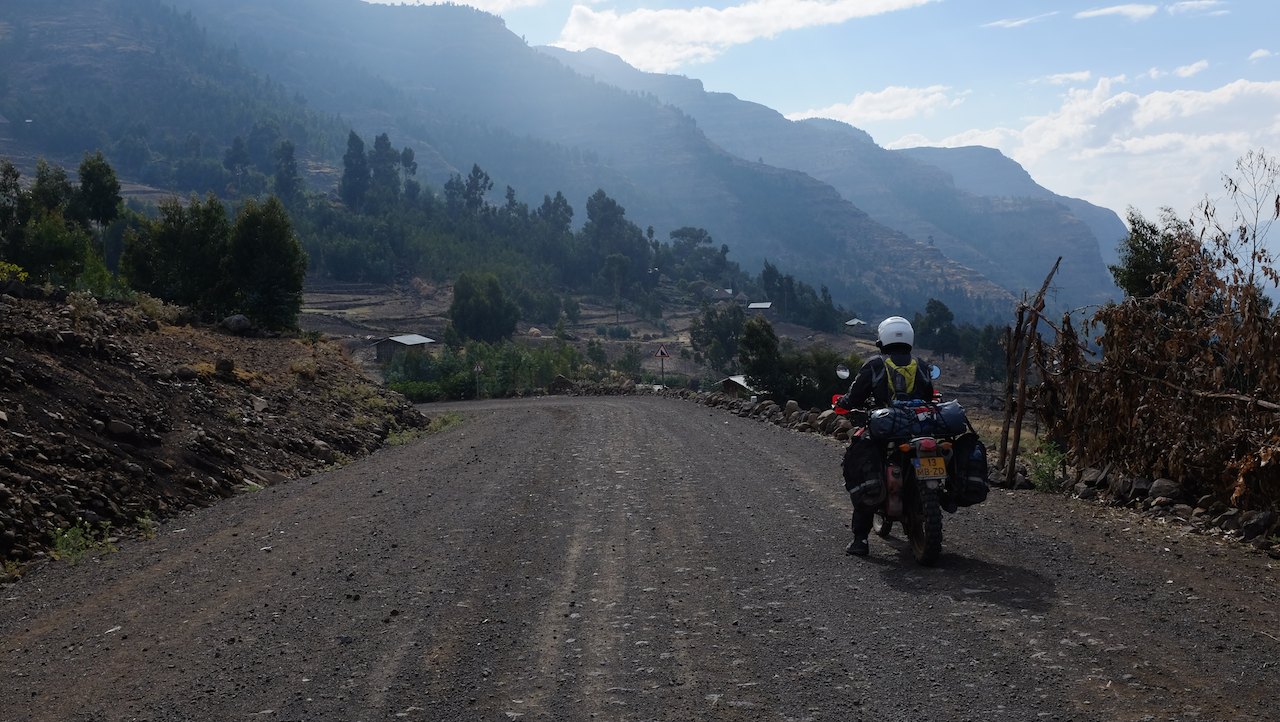


Once we have left the city we ride through the beautiful hills of Ethiopia. After 300km we leave the main road to go to Lalibela following a beautiful back road. The last 60km we drive on a gravel road higher into the hills. The road is in some parts very bad, too bad for cars and trucks. For that reason we do not come across any other traffic. In the villages we pass, we are a true attraction.
Like before, it is beautiful! Very impressive views, especially in the sunlight at the end of the afternoon. After a long day, we arrive in Lalibela where we find a room in “The Seven Olives Hotel”, where we enjoy the best injera bozena shiro of Ethiopia.
The next morning we get up early to visit the churches. At least that is what we thought. As we walk to the motorbikes, we smell fuel. The motorcycles are parked in front of the reception and underneath my bike is a puddle of gasoline. Peter gets out his tools. It soon becomes apparent that the rubber gasket between the fuel tank and the fuel pump is pushed out and does not fit anymore, causing fuel to leak from the tank. We decide to postpone our visit to the churches one day and fix the leakage first.

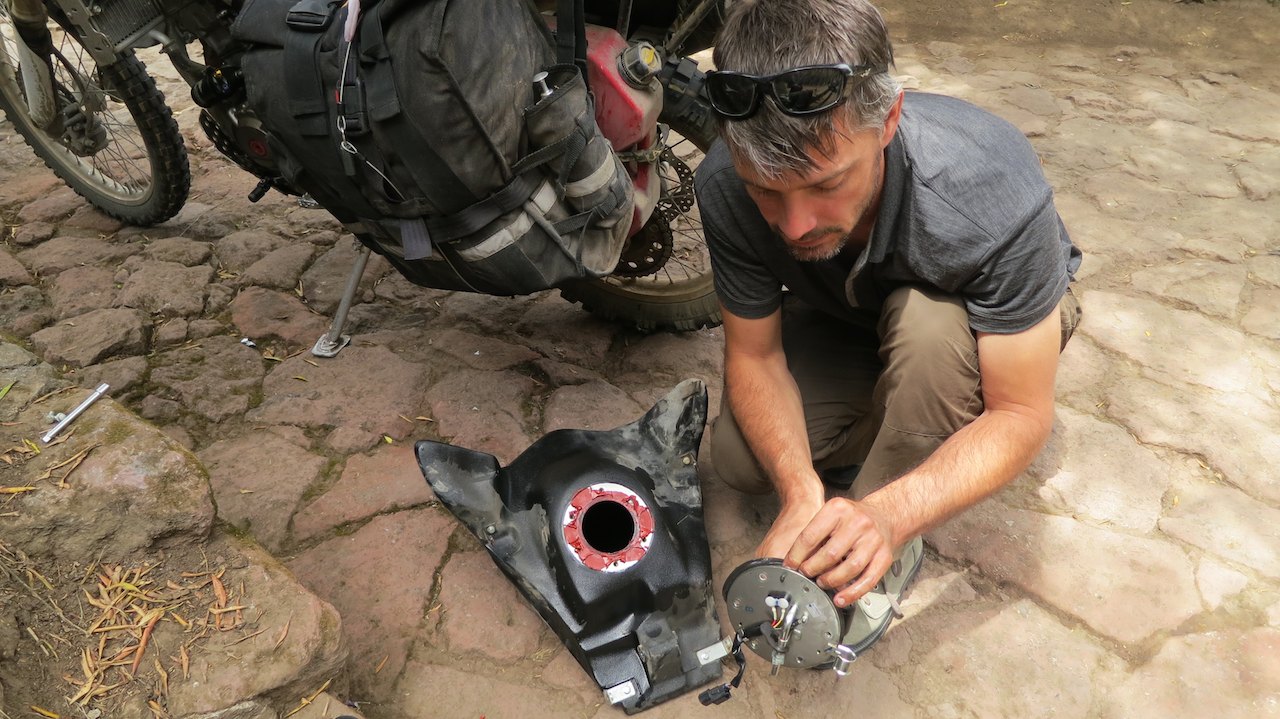

Peter takes my bike apart, while I, as his assistant, hand him his tools. Both the tank and the fuel pump must be cleaned before the ‘liquid gasket’ can be put on again. With toothpicks, napkins and scrapers we clean both parts. Around us are now a number of spectators. They are all giving advice from the sidelines. One of them gives us some empty water bottles so we can get the gasoline out of the tank, another give us cable ties. At the beginning of the afternoon the pump is neatly fitted on the tank with liquid gasket. Now it should only dry before Peter can mount the tank again and before we throw the fuel back in the tank. If we were to do that now the gasket might dissolve again.
That afternoon we send an email to the Dutch automobile association (ANWB) asking if they can send a new gasket to Ethiopia. Not even half an hour later we receive a phone call from the ANWB. A friendly gentleman has already figured out exactly what part he needs to order from Honda. If we give him the address in Addis Ababa, he will order the part and have it delivered in Ethiopia within a few days. What a service!
The next day we get up early and visit the rock-chewn churches of Lalibela accompanied by a guide. King Lalibela had wanted to build “little Jerusalem” with replicas of the tomb of Christ, the tomb of Adam and the River Jordan. This way, his citizens could go on a pilgrimage to Lalibela if they could not afford to travel to Jerusalem. The eleven rock churches are divided into two groups. In the morning we visit the churches in the north, above the river Jordan. After lunch we cross the river and visit the remaining churches, including the most famous Bet Giyorgis that was built in the shape of a cross in honour of St. George.
It is a special place and the churches are impressive. No wonder they are on the World Heritage list.
Distance travelled to Lalibela: 11.118km (6908 miles)



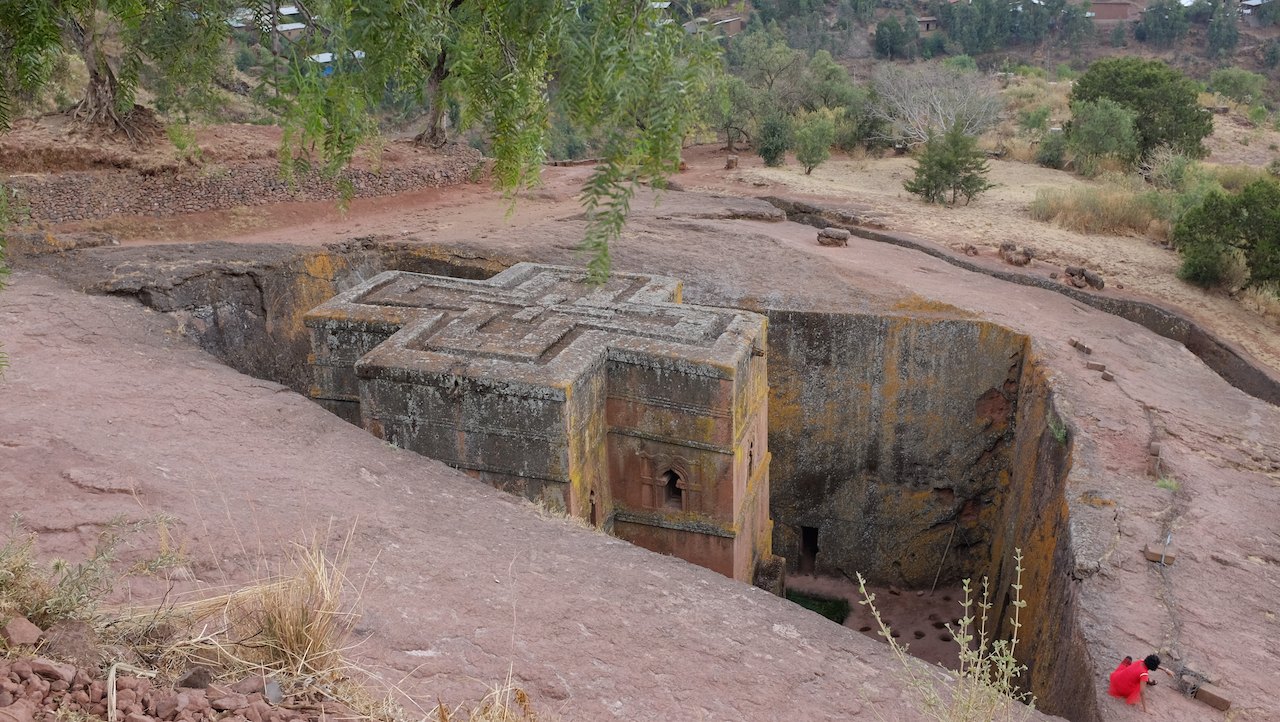
|

7 Jan 2015
|
|
Registered Users
HUBB regular
|
|
Join Date: Dec 2009
Location: The Netherlands
Posts: 66
|
|
|
"Boerenkool" and "Bitterballen"
After our tour through the north of Ethiopia and our visit to Lalibela, it is time to drive to the south again. We will go to Addis Ababa, the capital city of Ethiopia, where we have to apply for a visa for Kenya. But to me that is not the main reason to go to Addis. I especially want to go to “Wim’s Holland House”. In the middle of the city Wim has a bar that serves Heineken  , a restaurant with Dutch specialties as “Boerenkool” and “Bittenballen” and a camp site for overlanders. It is like a hub where many travelers get together. That is where we will go!



From Lalibela we drive to Addis in two days, spending one night in Kemissie. On maps very often a green line is drawn along roads which are nice to drive, so-called “scenic roads”. In Ethiopia they can easily draw such a green line along all the roads, because it again is beautiful! As in the north, the scenery is amazing, especially the rows of hills becoming a shade lighter as they disappear into the distance.
And we can enjoy the view, because we cannot really drive fast. This is despite the good asphalt and the great curves that do invite to speed. There are way too many people and animals on the road. It often happens that we have to break hard to avoid a donkey that is standing or even lying on the road. Occasionally it happens that the cattle crosses the road just before we arrive, encouraged to cross by a farmer who is hitting the back end of a donkey of sheep on the side of the road. Sometimes we even have the impression that they push their animals on the road in front of our bikes in the hope that we will hit them after which they can ask us for a compensation. We have to watch out!
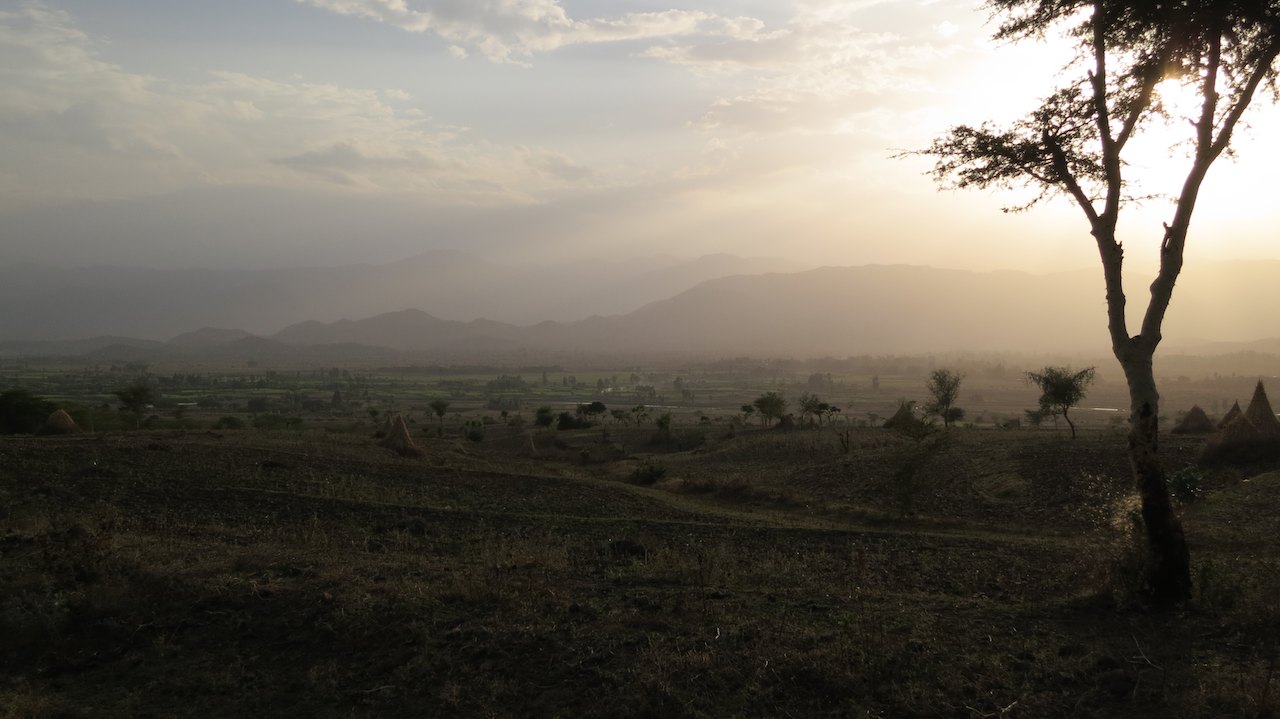

The other traffic on the road mainly consists of Toyota Land Cruisers. There are countless of these large and expensive cars around in Ethiopia. They are not driven by the Ethiopian ‘John Doe’, but by tour operators and NGO’s. The number of aid organizations that are active in Ethiopia is very high. In the villages we pass through all sorts of signs stand along the side of the road with the name of the organization and the nature of the project. It is indisputable that the assistance provided is badly needed and that the outcome of the projects is good. We have experienced that first hand in Mekele where we learnt about the project of Kevin and Els. Yet we have also raised some questions about the way help is in some cases offered. For example, would it really be necessary to have a team of aid workers drive in an expensive Toyota on the predominantly good roads in Ethiopia? And would it not be possible to spread the aid a bit more? In some villages the organizations seem to stumble over each other, we see so many signs along the side of the road. A big difference with Sudan, where it seems a part of the population could also use some help.
We also have the impression that the presence of aid organizations has somewhat affected the population of Ethiopia because we have not previously encountered so many people who hold up their hand as we drive along. The motto in most travel books is: do not give what is asked for. The population would be helped more by programs in education, health and food distribution run by aid organization than by just receiving money, food or water along the side of the road. The latter would especially not encourage children to go to school and to learn to work for what they need. Yet it is not easy to follow this advice. Having lunch by the side of the road with five pairs of inquiring eyes looking at your sandwich remains extremely difficult and a challenge we do not want to face everyday. On the way to Addis we have lunch twice in a hotel before we drive on with a full stomach.

At the end of the second day, we arrive in the outskirts of Addis Ababa. From the elevated road we look out over a crowded neighborhood with small houses that are built closely together. Between the houses we see unpaved streets that turn into mud slides after a downpour. All shops are located along the road on which we ride. Although it is Sunday many shops are open. It is buzzing. With a full bag of groceries shoppers stand along the side of the road to stop a minivan that can take them home. The minibuses stop at the oddest places and sometimes even suddenly cross the street to pick someone up on the other side of the road. Very dangerous if you just want to take over that minivan. In front of us a long row of minibuses, taxis and motorcycle taxis drives in to the city. We follow a speeding taxi that zigzags through the traffic further into the city.
The further we drive into the center of Addis, the more modern and high buildings we pass. A two-lane road with several flyovers leads us along high office buildings and large hotels. Until we reach the first road construction. The first, but certainly not the last, because the entire city is a mess! The GPS is puzzled at some times. Whenever he wants to send us to a certain direction we drive passed that closed road after which the GPS needs to recalculate. But even on that new route we came across several junctions where the road is closed. It is in some parts a big chaos and a muddy mess because of the rain that has fallen in the previous days. However, we do have bikes that are made for this kind of work! We drive past the gates, onto the muddy street towards the bus station in the direction of Wim’s Holland House. After a huge detour through the city and a major quest for the bus station, we stand in front of a big ‘SHELL’ sign and we see a Heineken flag fluttering over a red-white-blue fence. We made it!
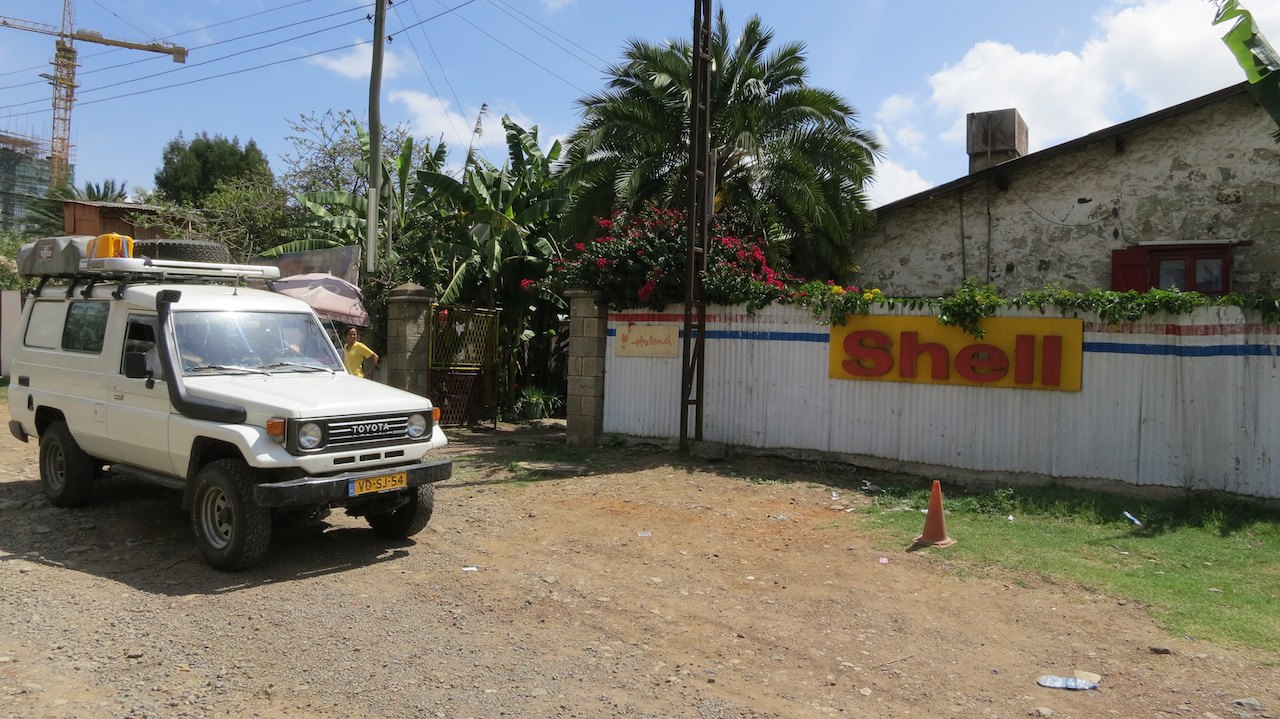
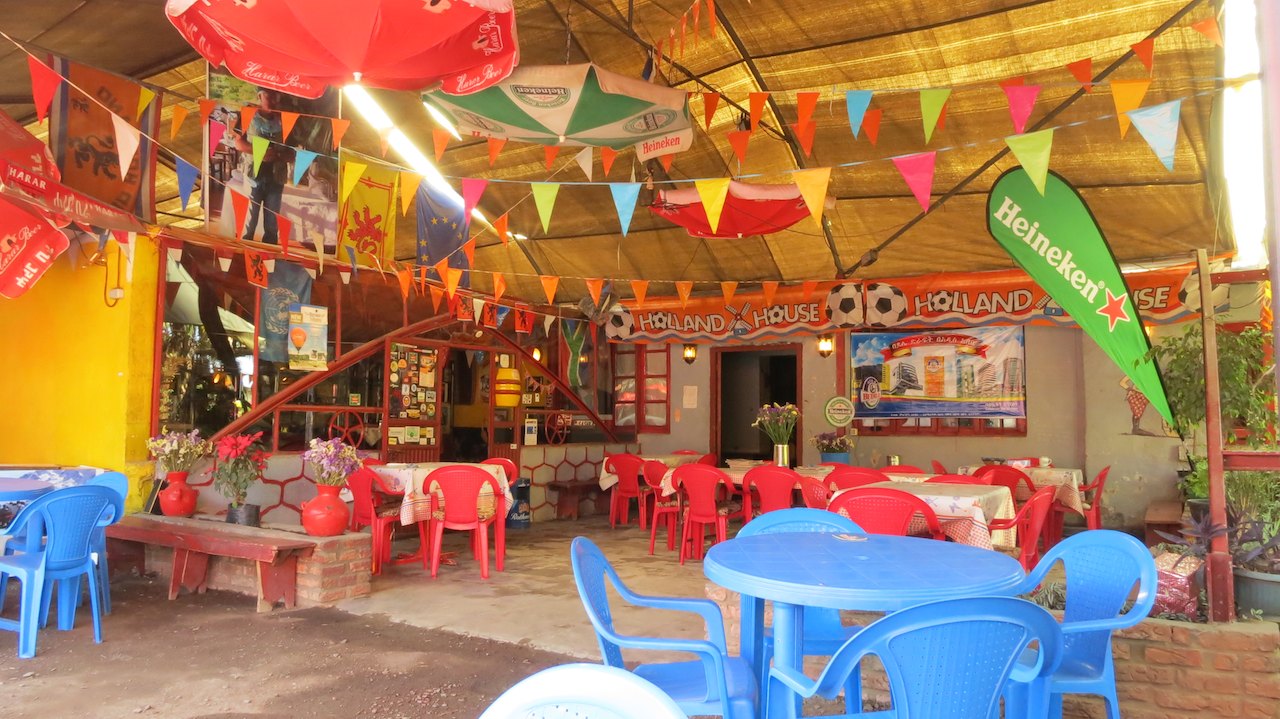
Wim is playing cards with his friends in the restaurant. Once the round is played, he comes to meet us and says “ So you are Peter and Leonie? You are already famous around here“. Then he points to the wall behind us. On the gray wall a message is written with pink chalk:
” Dear Leonie & Peter, Happy New Year! The fries and fried rice are delicious! Enjoy it. We think a lot of you. Also note messages in Hawassa and Arba Minch. Big kiss, Leon & Celine”
A message from my cousin Celine and her boyfriend Leon! Great! Leon works in Ethiopia and Celine had come to see him in Ethiopia early 2014. During a trip around the country they had left messages for us of which we had now found the first one! What a surprise.
And there was not just one message on the wall at the Wim’s. Underneath it was message by Billy and Ross, the motorcyclists with whom we had traveled through Libya, saying: “ Leonie, Peter, Just a quick hello. Hope you are well! Billy + Ross”. While we take a look at the messages, Wim is standing behind us, grinning about our cheerful response. For two months he had been wanting to know who the mysterious Peter and Leonie were and he thought it good that we were in Addis now. Then he takes us to the other side of the road to the campsite.
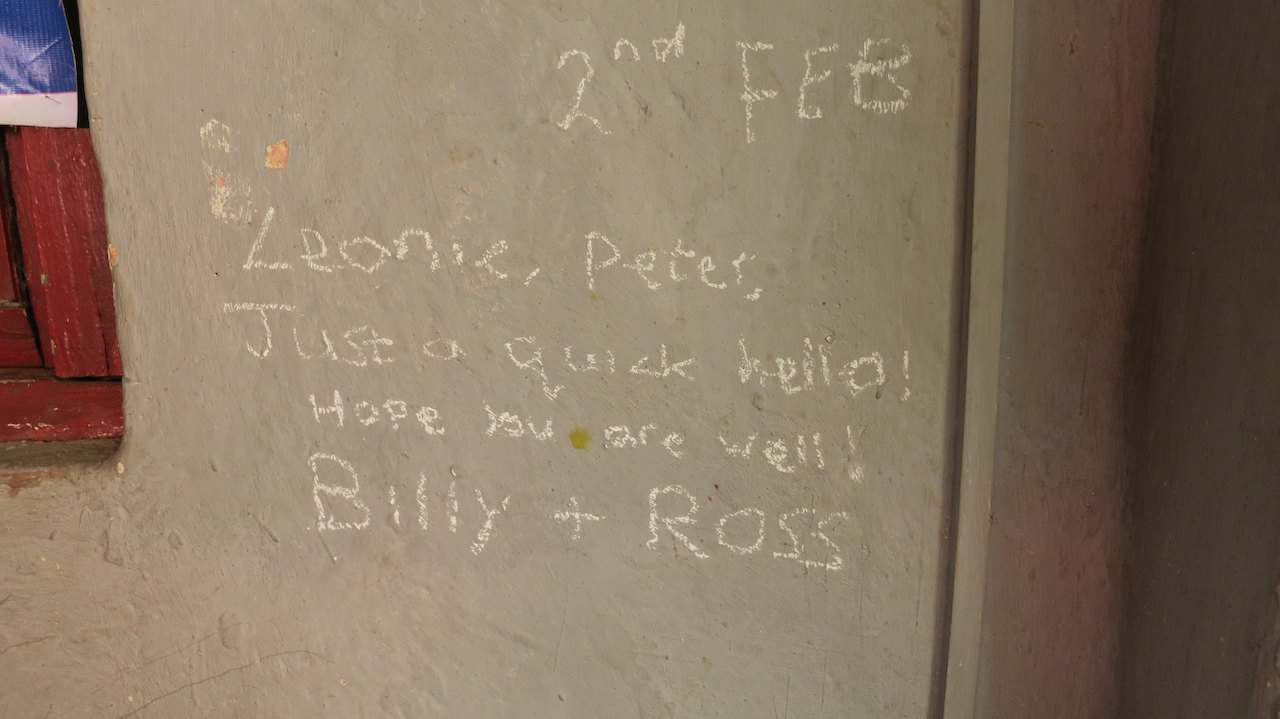
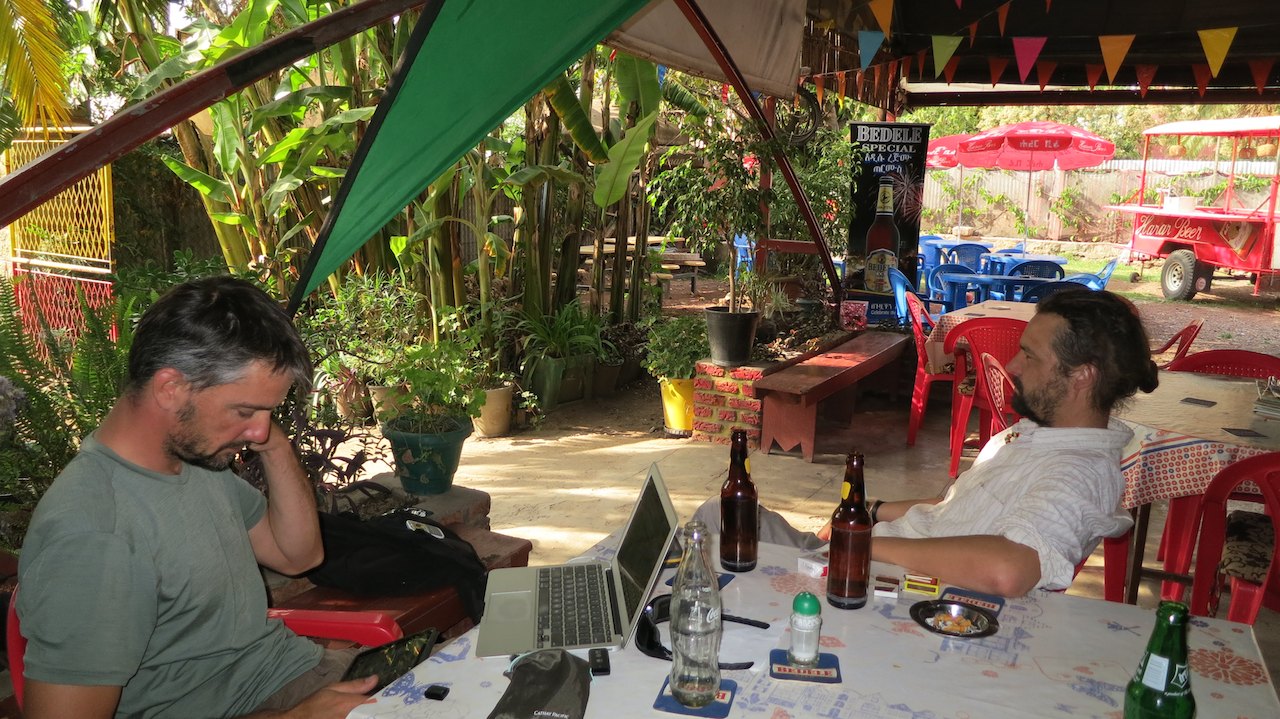
At the camp a big Toyota Land Cruiser with Dutch license plates and a roof top tent is parked. We meet Pim, who is en route from the Netherlands to southern Africa through the Middle East. We had already been in contact with him by email after we had left a message in the guestbook at Tim & Kim Village that we were looking for other travellers with whom we could drive to Kenya via Lake Turkana. Pim had responded to that message. Nice to now meet him in person and exchange stories.
Once we say that we have traveled with Billy and Ross in Libya he says, “ Ross? From England, with those curls? Yes he is still here. I think he is in his hammock.” He points to a blue plastic tarp that hangs between two trees. Ross still at Wim’s? What a surprise! Form his messages on Facebook we had understood that he was on his way to Tanzania, but it now turned out that he had engine problems again and had had to return to Addis. At that time, the plastic tarp starts to move and then Ross steps out of the hammock in his boxershorts. A cheerful encounter and embrace (still in his underwear) follow. Really nice to meet him again so unexpectedly. Once our tent is pitched and Ross has put on some trousers, we all go to the bar where we exchange stories while enjoying a  and a plate of nasi goreng. It would be a long night.
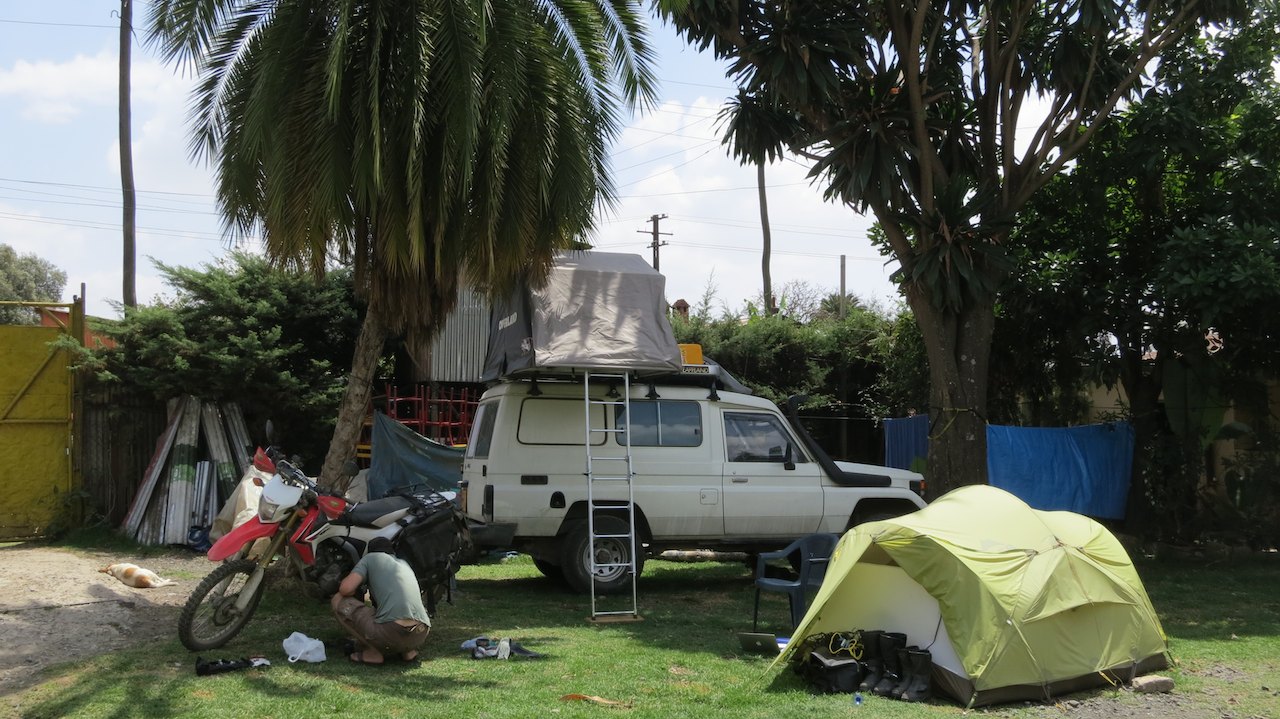
After the first successful evening, seven more follow! In those days we chat with Pim and Ross, we get to know Wim and his wife Rahel a bit better and we are introduced to Jim who travels through Africa on his bicycle. We enjoy pancakes with syrup, fries with “Bitterballen” and delicious cold  s. We toast with Philip, the Consul of Belgium, chat with Dutch flower farmers who also love “Bitterballen” and meet Chiel -cousin of Wim- who starts his ‘gap year’ by visiting his uncle. We exchange waypoints with the Dutch couple Peter and Carla who make a tour with their car from Uganda through East Africa. We drive through the city to the Kenyan embassy to apply for a visa and ride the same route back again a few days later to pick it up. Peter works on his motorcycle and that of Ross, while I update the blog and our administration. We walk into the city to find a hotel with a decent internet connection, find a hairdresser for Peter and do some shopping. Finally, we are also introduced to Michael and Judy from Australia, who shipped their (great!) Toyota Land Cruiser to South Africa and ride from there, via Africa, the Middle East, Russia, Mongolia and China back to Australia.
A wonderful week at Wim ‘s Holland House and a great time with Wim and Rahel. As we pack up our tent after a week, Wim comes to say goodbye: “ Welcome to the Wim’s Holland House Family! Keep us updated on your whereabouts.“
Please note that we visited Wim’s Holland House in February 2014. Sadly, a few months later Wim lost his battle against cancer and passed away. We feel very fortunate to have met this lovely man and will never forget his warm welcome at Wim’s Holland House.
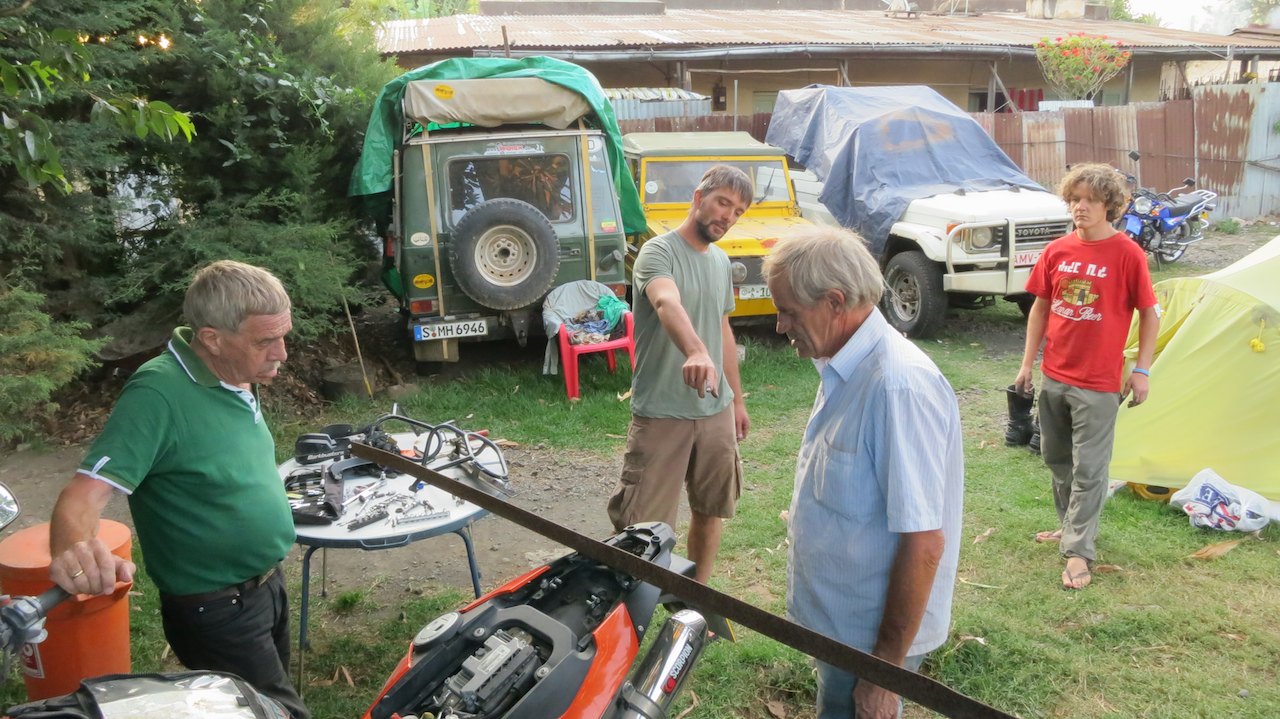
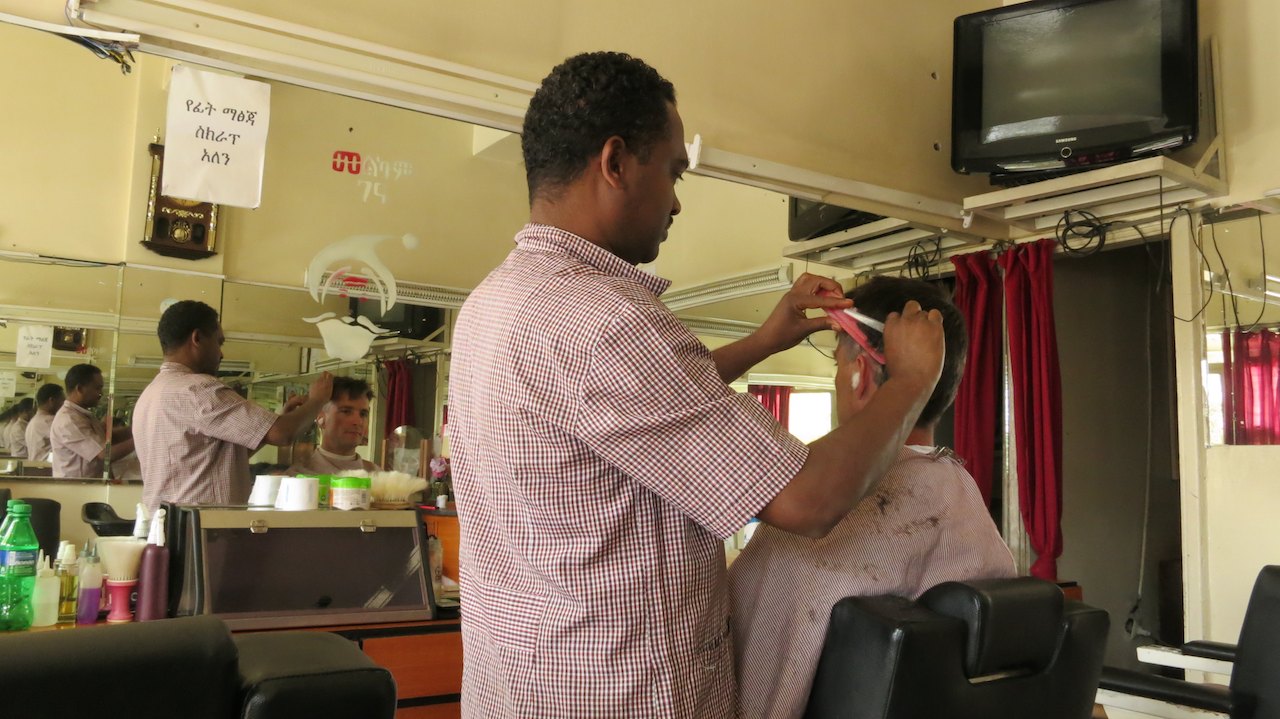
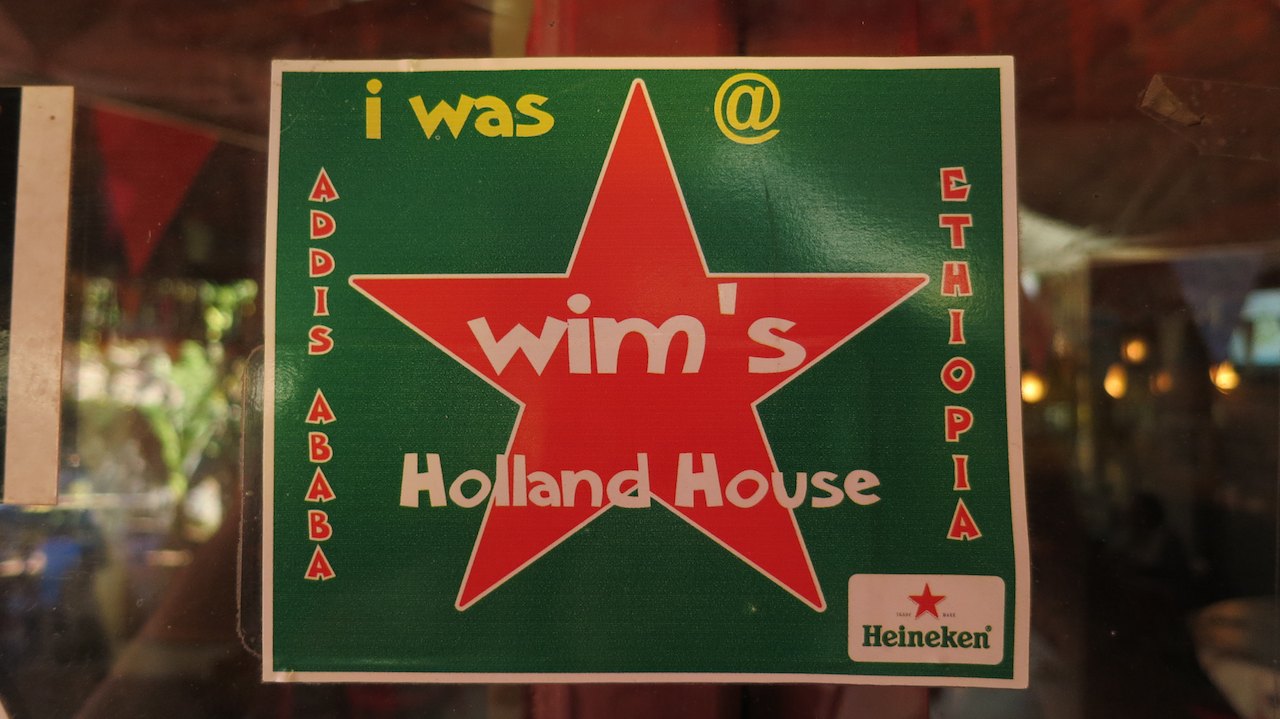
After we have refuelled in Addis, it takes an hour before we are really out of town. From Addis Ababa, which is at 2,400 meters, we slowly drive to the lower part of Ethiopia. The lower we go, the hotter it gets. Mid-afternoon, Peter hears a strange noise coming from his motorbike. We drive off the main road and find a place in the shade to check it out. The front sprocket does not seem to fit perfectly any more on the shaft and makes some noise. Peter must replace it to prevent any damage on the splines on the output shaft. That means the rear wheel has to be taken off, so that the chain can get off and the sprocket is free to be replaced. While Peter is working on the motorbike and I hand him his tools, there are already a number of people around us. After about an hour the sprocket is replaced and we can continue.
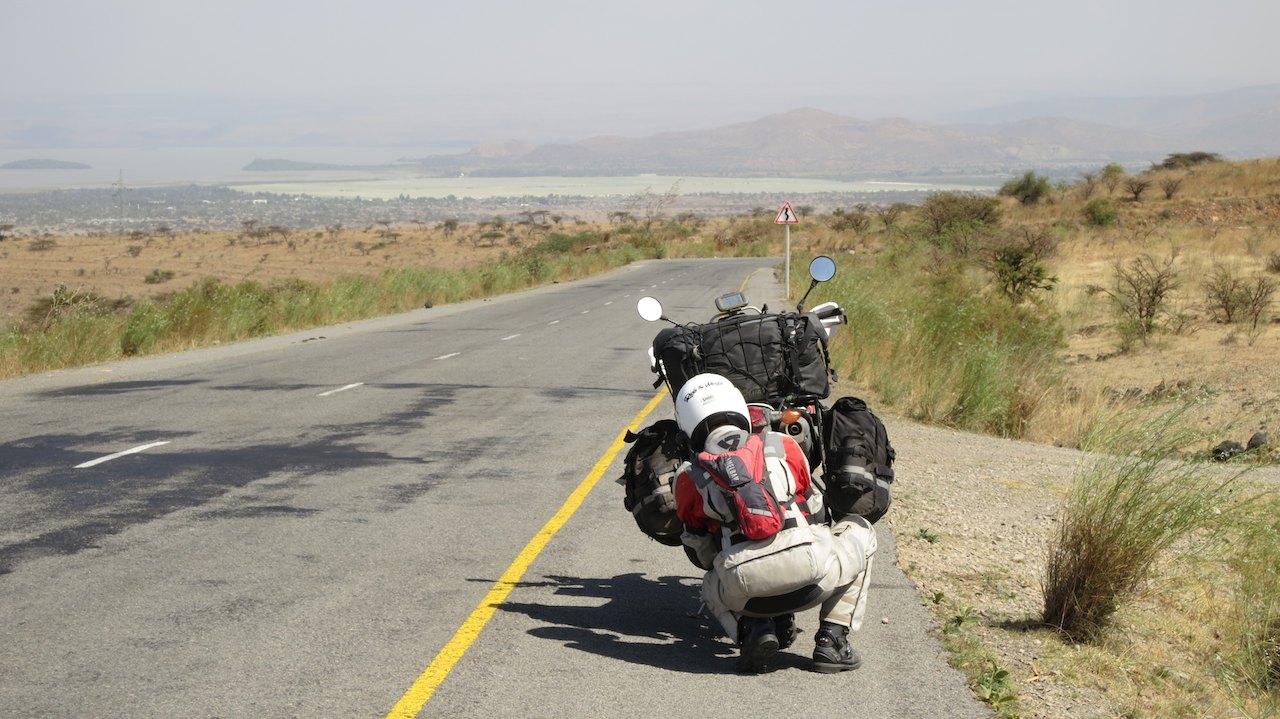
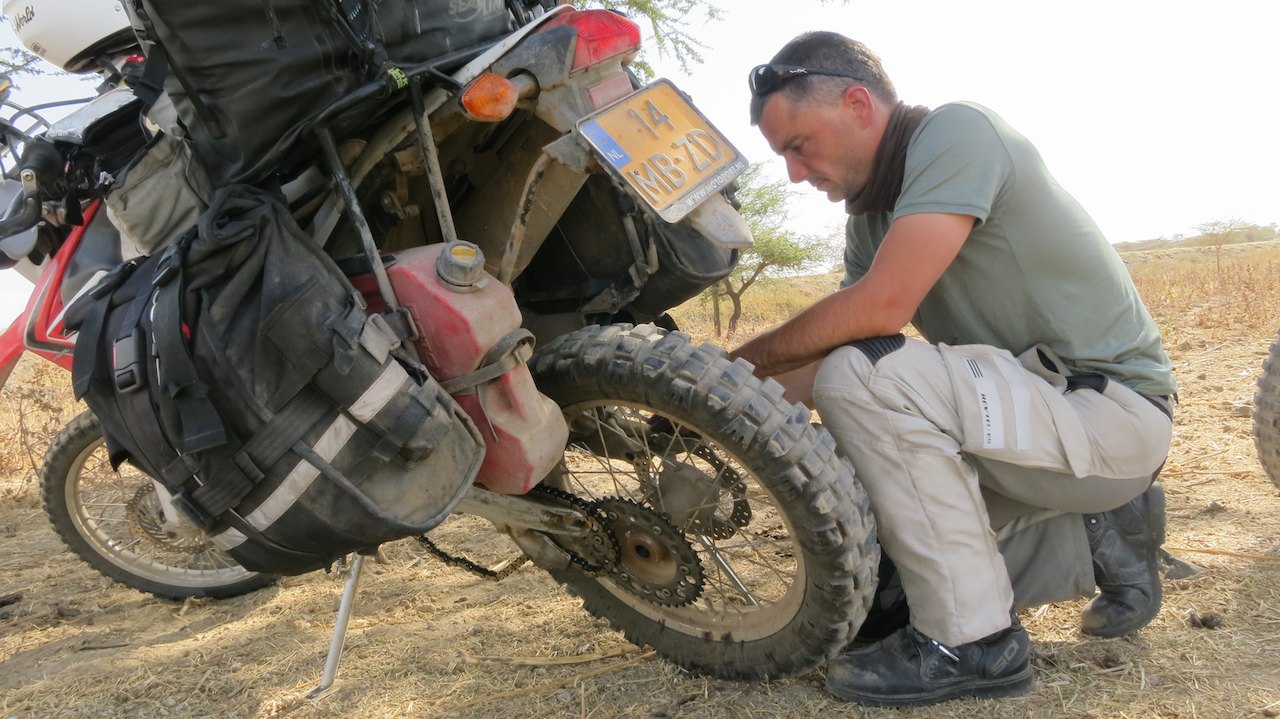
At the end of the day we arrive in Hawassa. In this city Celine and Leon had also written a message with chalk. To find the messages they sent us the GPS coordinates. The coordinates lead us to the entrance of the Agricultural University in Hawassa. Unfortunately, we could not find the message any more as the rain had erased it. It was still fun to try to find it. They had also recommended a hotel, where we indeed find a nice room. We can park the motorbikes in the courtyard.
The next day we set the GPS for Arba Minch. There we will again meet Pim to ride from there to the south and eventually through the Omo Valley to Kenya. Along the Ethiopian lakes we descend further and when we enter Arba Minch the GPS indicates that we are at 1.250 meters. It quite warm there. We try to find a room at one of the hotels, but cannot agree on the prices at the first four hotels. Above the reception desk of every hotel is a form with the prices for 2014. Prize for ‘Faranji’ is twice as high as the price that Ethiopians have to pay. We have not seen that before in Ethiopia. It is low season and the hotels are almost empty, so we try to get a reduced price. A win-win situation you would say; we have a good room, they have paying customers. But no, if we want to stay, we have to pay full price. Then we will try somewhere else. Finally we have had enough of it when we arrive at the Tourist Hotel. We finally accept a room at a slightly reduced Faranji-price. As soon as there is water from the tab, we freshen up, take a shower and dive into our sleeping bag liner under the mosquito net.
Tomorrow we will search for Pim and go shopping in preparation for the “Turkana Route”. More about that in the next blog posts .
Distance to Arba Minch: 12,457km (7,740 miles)
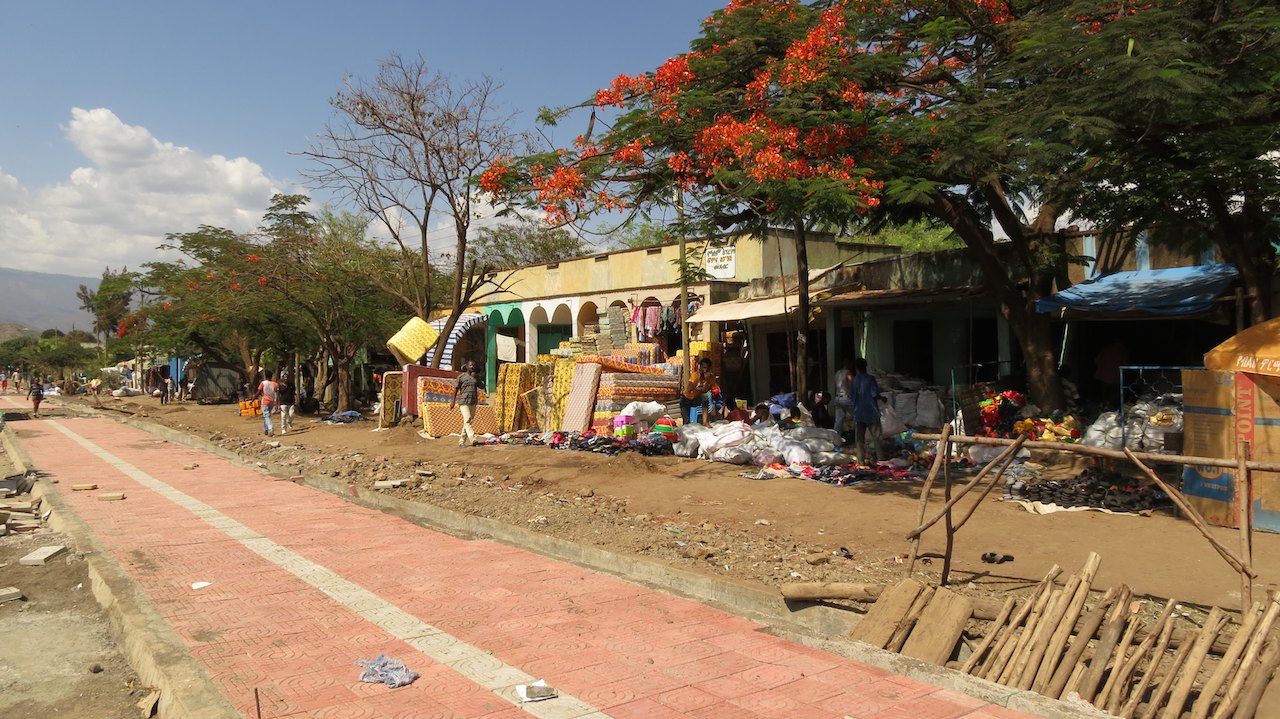
|

19 Feb 2015
|
|
Registered Users
HUBB regular
|
|
Join Date: Dec 2009
Location: The Netherlands
Posts: 66
|
|
|
Turkana Route I: To the Omo Valley
To go into Kenya from Ethiopia there are two routes we can take. The first route is from Moyale in Ethiopia to Marsabit in Kenya. A route that is known for the poor condition of the road and the many freight trucks and also the road that is sometimes referred to as the “Bandit Road”. The second option is from Omorate in Ethiopia, along Lake Turkana, to Maralal in Kenya. This route leads through a remote part of Kenya without any tarmac roads for over 800km, where facilities are far away and where gasoline, food and water is hard to get. But this is also the route through one of the most beautiful and unspoiled parts of Kenya. We chose to follow that Turkana route.
Still, this sounds easier than it is. The advise on the Turkana route is: “Do not travel alone.” The area is remote and difficult to reach, so help is far away when you go get stuck in the mud, have engine troubles or -even worse- get hurt. And in addition to that, we cannot take enough water, food and fuel on the bikes to cover the entire track. Space on the bikes is limited. We would therefore only ride the Turkana Route if we would meet another traveller who would want to travel with us and who would be willing to carry our fuel on the roof of his car. But gasoline on the roof of the car; that is not something everyone would agree to. And besides that, there are currently not many overlanders in Africa anyway. Yet, against all odds, we did find a travel companion!
We had placed a message in the guest book at Tim & Kim Village in Ethiopia: “Wanted: fellow traveller for the Turkana Route”. One week later we received an email from Pim. He wanted to ride the Turkana route and was willing to take fuel on the roof of his Land Cruiser. He also mentioned that he had met another Dutch couple that might want to ride along Lake Turkana. In Addis Ababa we met Pim, we planned the route and came into contact with Jan and Margriet. Peter and I went to Arba Minch, where we would meet Pim again to do some shopping. After that we would drive with Pim to Turmi in the Omo Valley. There we would meet Jan and Margriet to convoy to Kenya. A good plan!
———-
It is warm in Arba Minch. During the day the temperature rises far above 30 degrees Celsius and at night it does not seem to get any cooler. Even the thin cotton sheet we sleep in is too hot. Bonding with sweat, we are awakened at dawn by the announcer of the Orthodox Christian Church across from our hotel. Over an hour we hear him sing one song after another, very loud and quite out of tune. No chance to sleep anymore and a refreshing shower is not possible either, as there again is no water. Alas, with some wet wipes and lots of deodorant we are “not-clean- but-all-fresh” and sit down for breakfast a little later. We have some coffee to regain energy for the rest of the day.
After breakfast Pim joins us and together we go out to do some shopping. We have calculated that we need about six days to drive to Maralal (in Kenya). According to the information we found on the Internet, we would be able to find fuel, food and water there. Therefore we take food for six days. Fresh vegetables for the first few days, but cans of vegetables for the next few days, because in this weather vegetables go bad without a refrigerator very quickly. In Arba Minch we can get anything we want to take: pasta, rice, cans of tuna, cans of peas, tomato paste, noodle soup, biscuits, jam, peanut butter and even chocolate paste and Snickers! With this we can get a long way!

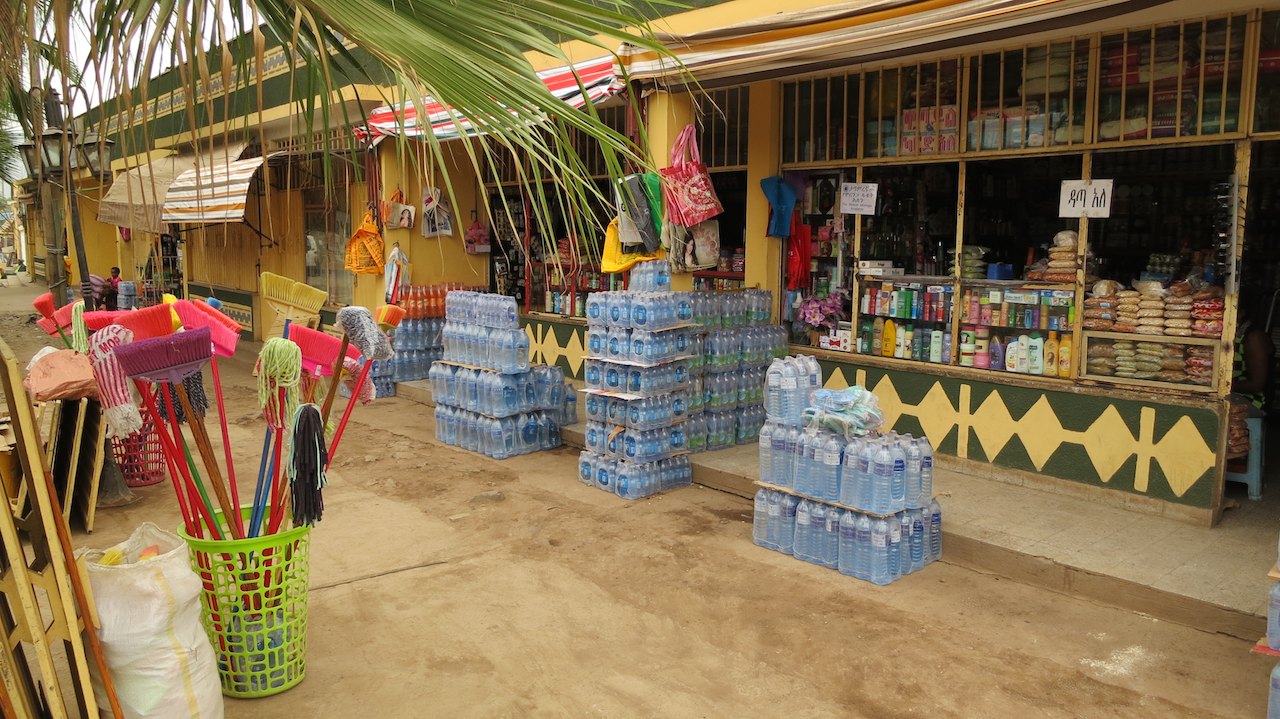
We also need drinking water for at least six days. In this hot weather we both drink lots of water. Especially when we ride offroad we drink at least three litres per person per day. To make sure that we have enough water, we end up buying more than 40 litres of drinking water in large bottles of two or five litres. We cannot bring all this on our own bikes and are happy we can put this in Pims car.
Then the extra fuel. With the help of a man at the hotel we buy three jerrycans in which we can take gasoline and water. They are large yellow cans which were used for cooking oil. Perhaps not quite CE or DOT certified to transport fuel, but for a few days it will be fine. With two of the cans on our bikes we drive to a gas station in the city centre. Initially the attendant refuses to fill the cans with fuel. He points at a sticker on the pump that says: “No plastic containers.” At the same time, at least three tuktuks are filling the same plastic cooking oil cans at the pump next to us. We point to the plastic IMS tank on our motorbike and take another look at the tuktuks beside us and then he gives in and fills the cans.
Back at the hotel we fill the third can with tap water. We cannot use it as drinking water, but if we boil the water we can use it to cook rice, pasta, tea and coffee. And we can also use it to wash and do the dishes. It takes some time to fit our three jerry cans, next to the cans of Pim on the roof of his car, but it fits. After an hour, the fuel and the “cooking water” are rock solid strapped to the rack on his roof.

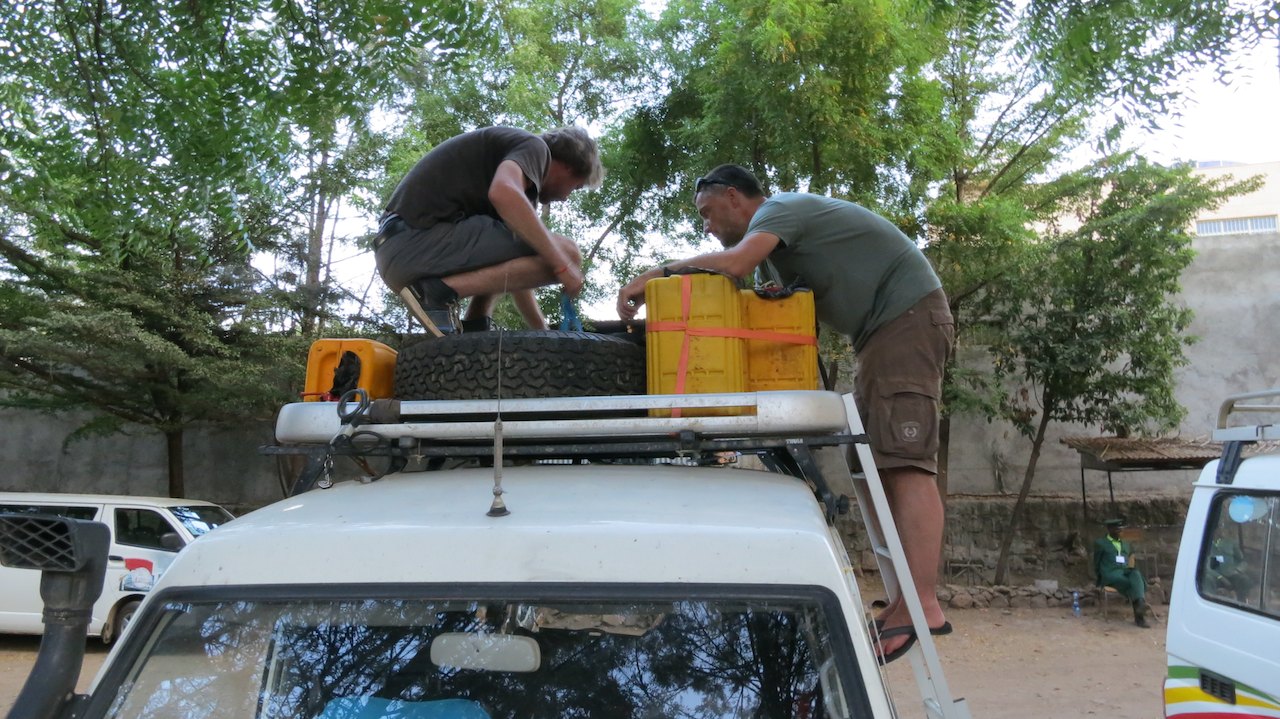
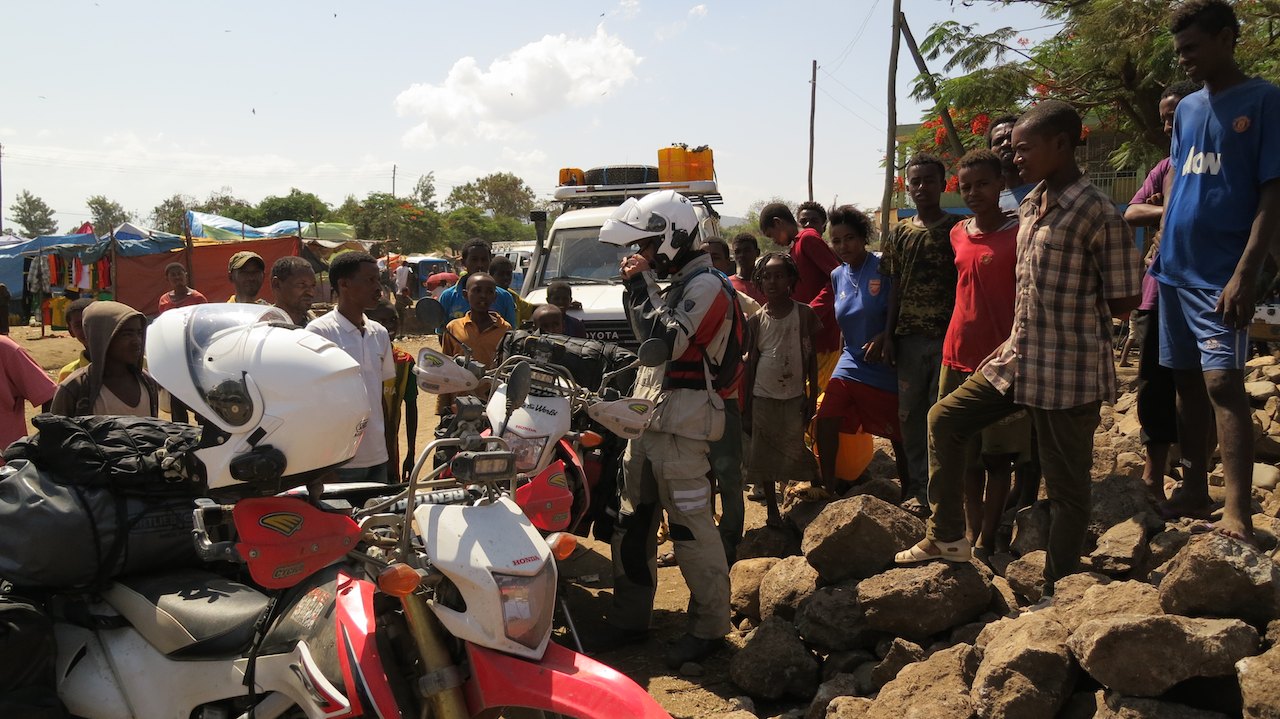
The next morning Pim arrives at our hotel early in the morning. We have breakfast together and again head for the market in Arba Minch to buy fresh vegetables and bread. Peter stays with the packed motorbikes and I go to the market with Pim. When we come back, we cannot even see Peter because there are so many people around him. They all want to see the motorbikes and preferably touch all buttons. It is too hot to be standing in the full sun, we should get on the road to have some airflow. When we start the bikes and open the throttle a bit, most bystanders take a few steps back and we have enough space to turn the bike and drive away.
We leave Arba Minch and drive along Lake Abaya south to Konso. It is a beautiful and paved road along golden fields in which people are at work in the blazing sun. The landscape is very different than in northern Ethiopia. Less mountains, much lower and much warmer. On the road dozens of women and girls are carrying huge bundles of branches on their back. Apparently a task for the women, because throughout Ethiopia we have not seen a man carrying such bundles of wood. We pass a river that is buzzing with people. In the small trickle of water in the wide riverbed people stand to wash, cattle are drinking, laundry is done and mopeds are polished.
Every time we stop to take a picture or to eat something, there is a group of Ethiopians around us within seconds. “ Where are you go?” is a question that is often asked. To date, we are still not entirely clear whether they want to know where we come from or where we are going. It is even very doubtful whether they themselves know what they ask us. It often happens that we properly answer the questions and then ask a question ourselves to make a chat, but get the exact same questions again as their response: “ Where are you go?” or “ How are you?” or “ What is your name?“.


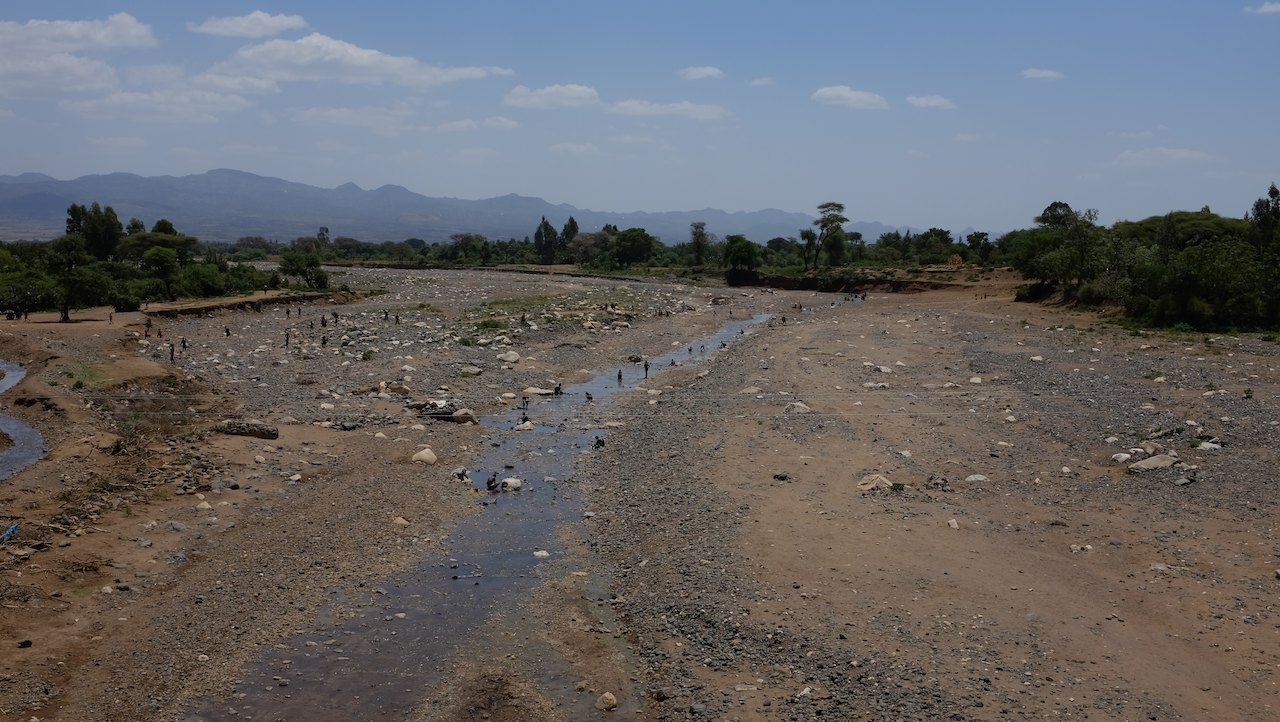
The road from Konso to Weita (also known as Woyto) still consists of smooth asphalt, but once we take the exit to Arbore we drive on a gravel road. The first kilometres of at least another 800km without asphalt. It is dry and the road is good to drive on. That is a different story in the rainy season. The wide rivers are then full of water, blocking the roads and cutting off the villages from the rest of the world. The roads then chance in muddy paths with deep tracks that are not easy to ride on for most traffic. Our guidebook evens described the Omo Valley as a ‘No-Go Area’ in the rainy season. The rainy season is about to start, so we should not travel too slow and just keep driving now the roads are still passable.
We drive on, further into the Omo Valley. The area is known for the 24 tribes that live there, each with their unique characteristics. Well known tribes like the Mursi (famous for the clay plate in their lip), Hamer (known for their muddy dreadlocks) and Karo (known for painting their bodies). Although the roads are pretty good to ride, we cannot ride great distances because the average speed on some stretches is quit low. A distance of 20km may take 30 minutes, but depending on the condition of the road can easily take an hour.

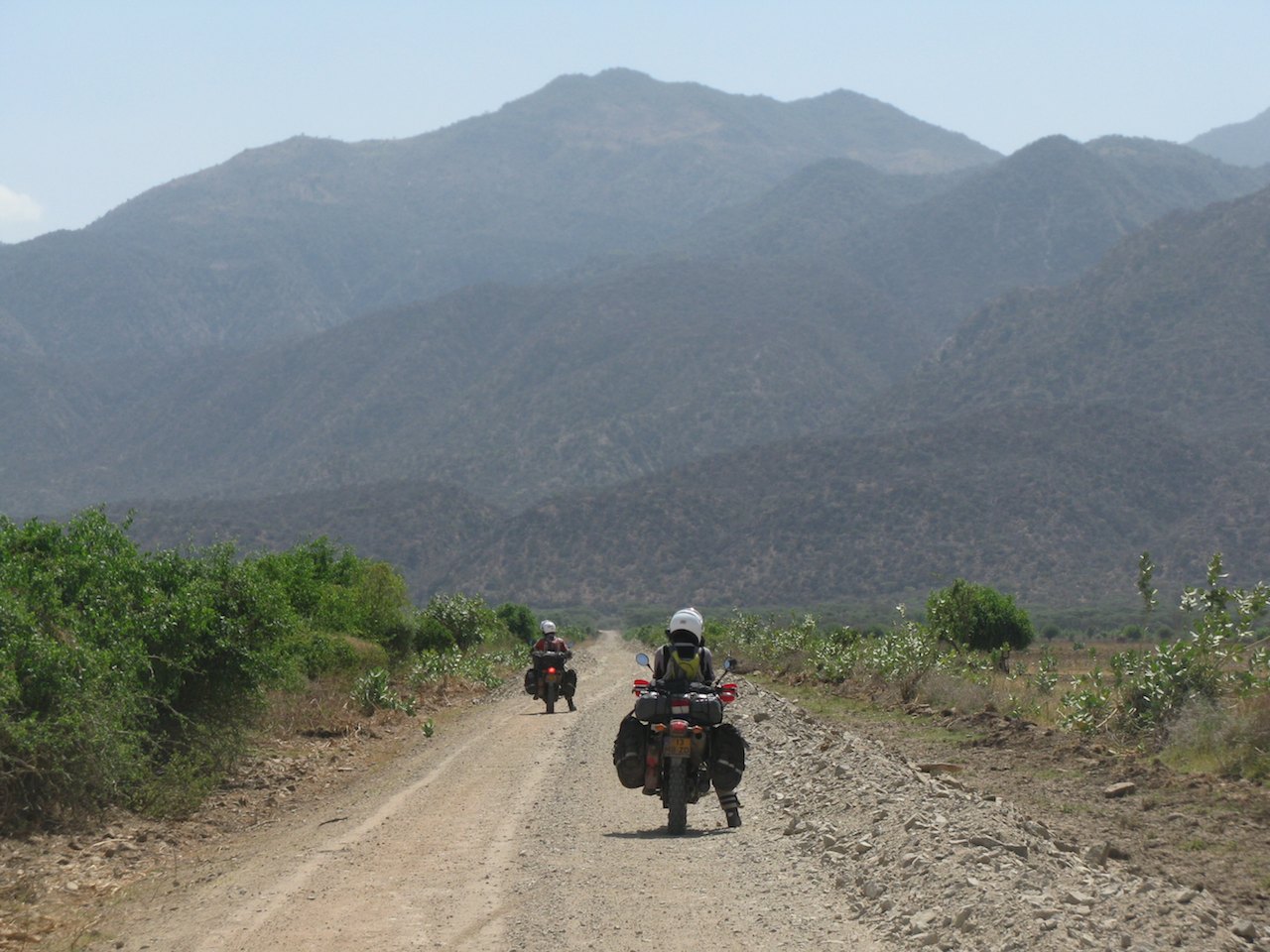
At the end of the afternoon we arrive in Arbore. A village that consists of no more than a handful of huts. The village also has a campsite. Although it is not much: there is no running water, no electricity and the toilet is a squat toilet over a hole in the ground. But at least we can camp quietly, because there is a large fence around the field and at the gate is a friendly security guard who keeps most bystanders at some distance. We are welcomed by some boys on a moped that offer to bring us some cold drinks. After a long a hot day that sounds like a great plan. The drinks at the camp are not cold yet, but once the generator has run for a while in the evening we receive our drinks. Not really cold, but colder than the outside temperature and even warm  and lukewarm cola tastes OK after a day in the heat.
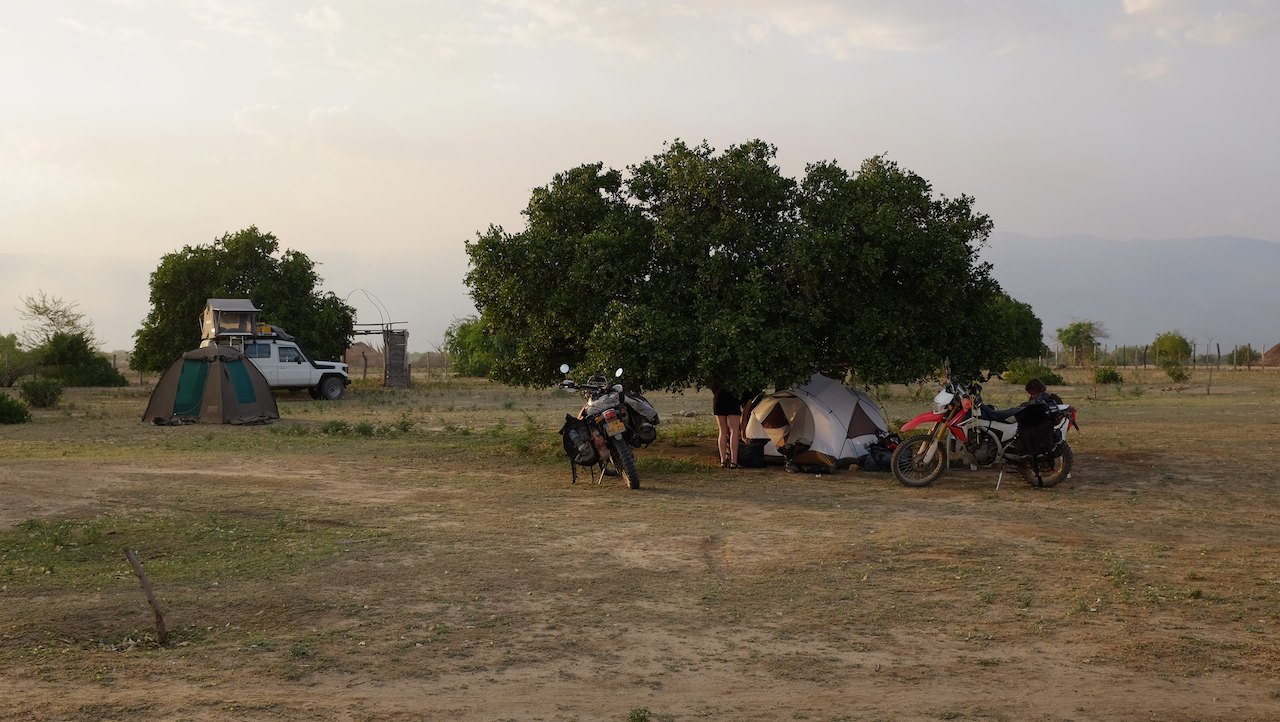
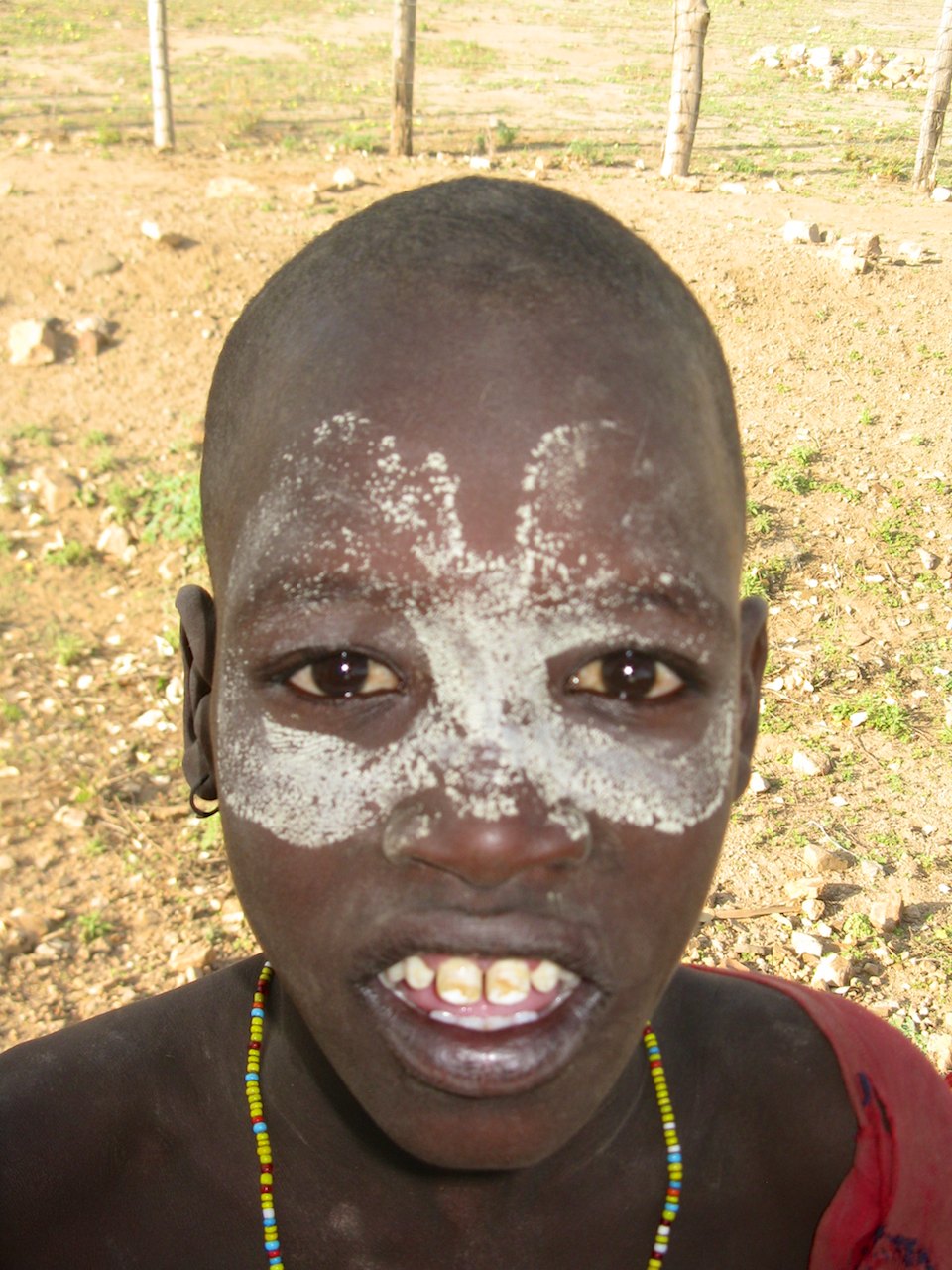
The next day we drive to the south-west, to Turmi. The route is beautiful! Golden yellow gravel paths lined with low acacia trees and the occasional small antelope (dikdik) and beautiful birds. This is the real Africa! We pass several tribal members wo let their cattle graze among the acacia trees. They look beautiful with painted faces, beautiful hairstyles, special clothing and beautiful jewelry. We find them as interesting as they find us. If they have not run off the road in fear, they stands as if petrified with an open mouth staring at us. If we wave at them, we often only get a response when we already are a few 100 meters away.

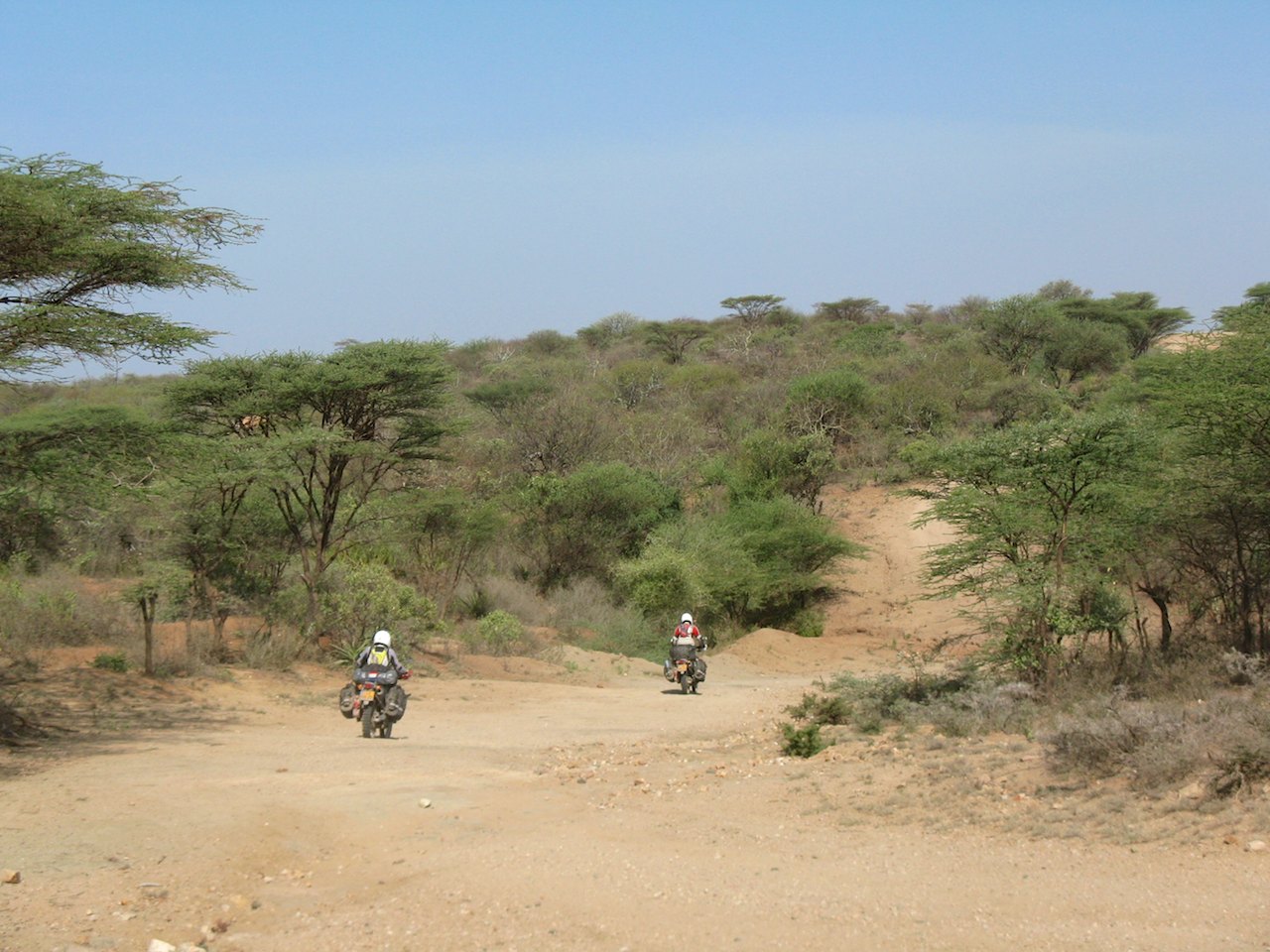
At the end of the morning we arrive at ‘Mango Campsite’ in Turmi. A beautiful campsite along a dry riverbed. We find a spot in the shade of the large mango trees and pitch our tent. Then we get into the car with Pim to go to Dimeka. It is Saturday and it is market day in Dimeka. Hamer-people from the surrounding area all come to the market today to buy and sell stuff. The closer we get to Dimeka, the more villagers we encounter who are on their way to the market with their cattle. Once in Dimeka it appears that all tourists have gathered at the Tourist Hotel. In the courtyard of the hotel a large number of Land Cruisers is lined up. The terrace is full with a large group of Belgians that are listening to the story of their travel guide. Once we have eaten something, we are assigned a guide. He takes us to the market, tells us about the Hamer people and calmly answers all our questions.
Trading on the market is a little quiet. Most of the people seem to have come to the market to chat, to exchange the latest gossip and to flirt. Way more fun than just selling goats. Women and children under one tree and men under another tree in the shade. Most of them wear traditional clothing consisting of animal skins decorated with beads and beautiful necklaces. Some people, especially the younger generation, sometimes wears western clothing and shoes. Especially the younger girls wear a bra over their goatskin. The most particular still remains the hair of the Hamer people. They are known for the ocher-colored clay dreadlocks. They make them with butter and ocher-coloured sand which they smear in their hair. A peculiar sight, but also a peculiar smell. The butter in their hair starts to smell quite bad after a while in the sun. And there is also a strong ‘cattle -scent”. An hour on the market is really enough.
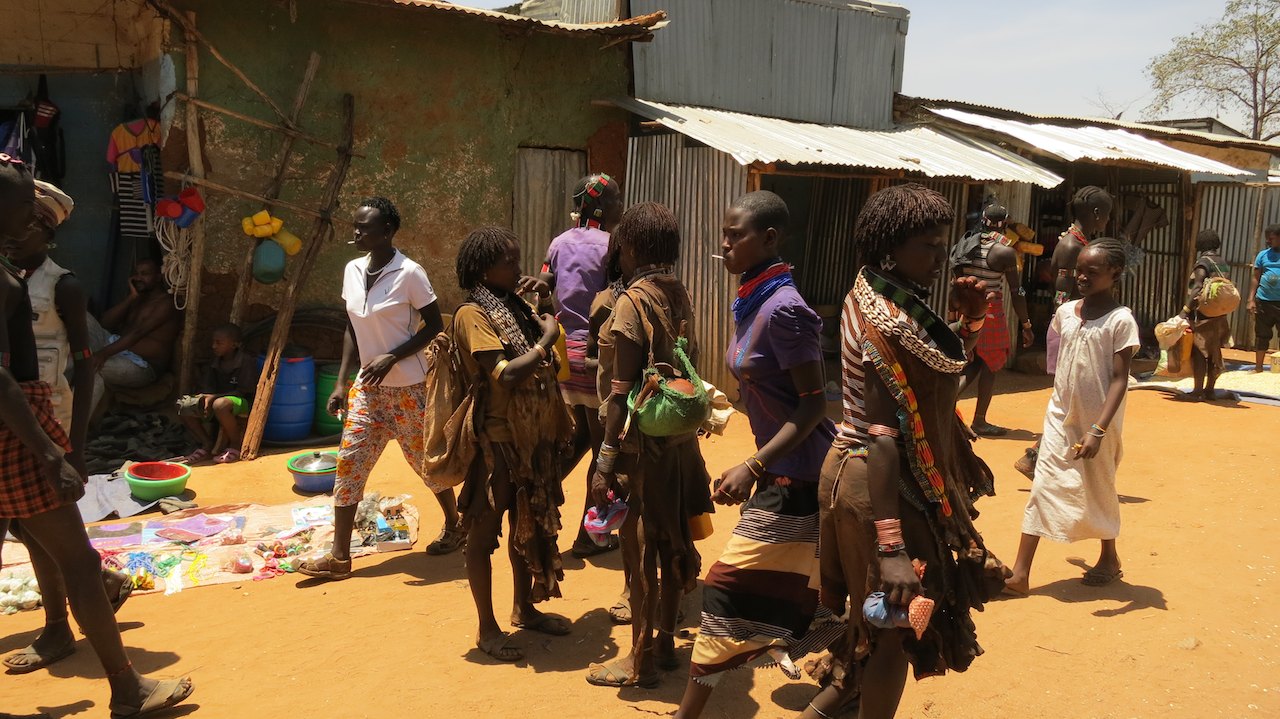


We walk along the stalls and look at all the beautifully dressed people. And all completely at ease, as -for the first time in a long time (and unique to Ethiopia)- we are left alone. There is no one who comes to us to ask for money, for a pen, for water or for food. The people on the market are primarily concerned with themselves and do not seem to take any notice of us. We are now the ones that watch and approach them. It does feel a bit awkward, like being in the Zoo, the way we watch their every move. Even more so since we have to pay for portraits we take after we have negotiated about the price per photo. But still it was very special and definitely worth the visit.
After an hour on the market and a lukewarm coke we get back in the car and back to the campsite in Turmi. Jan and Margriet have now also arrived. We exchange stories, get a tour in their beautiful Land Cruiser Camper and trudge to the adjacent Buska Lodge for a warm  . We hear that a “Bull Jumping” ceremony will take place in Turmi on Monday. We agree to stay in Turmi on Sunday, visit the ceremony on Monday and then together drive to Omorate afterwards.
Distance travelled toTurmi: 12,734km (7,912.5 miles)
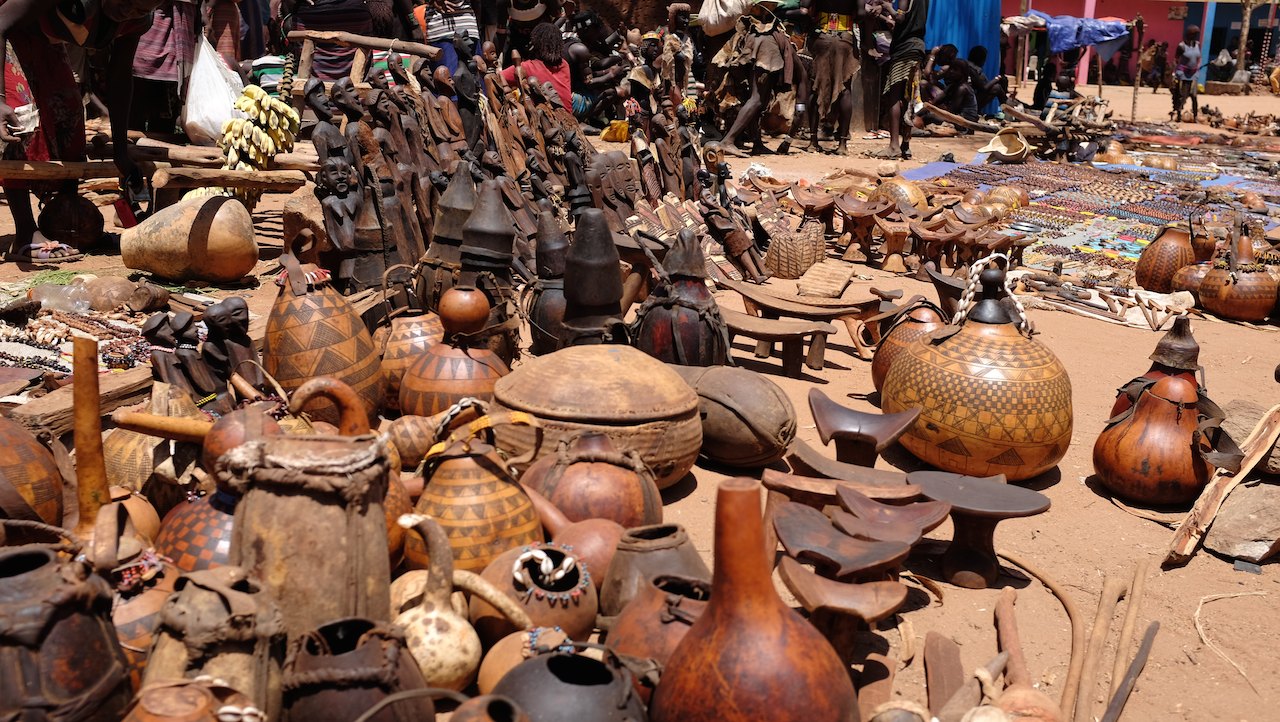

|

19 Feb 2015
|
|
Registered Users
HUBB regular
|
|
Join Date: Dec 2009
Location: The Netherlands
Posts: 66
|
|
|
Turkana Route ll: Bull jumping ceremony
Like in Arba Minch, it is very hot in Turmi. However in the shade of the mango trees and with the breeze blowing through the valley, it is OK. We use the Sunday to relax, to select some photos and to do some maintenance. At the end of the afternoon we walk with Jan and Margriet and Pim to the adjacent Buska Lodge for a  . Not a bad way to spend the day!
Even the next morning we can take our time to eat breakfast and pack the tent, for the Bull Jumping ceremony only begins after lunch. With the help of some guys at the campsite we manage to buy some fuel. There is no gas station in Turmi, but fuel can be found on the ‘black market’. It is slightly more expensive than the gasoline we could get at the gas station in Arba Minch, but still OK. The two boys leave on a small moped to the centre of Turmi and come back a little later with a large white plastic bag containing eight water bottles filled with fuel. It looks good, there is no dirt or water in the fuel, so we feel OK to use this. Especially with the filter we have in our fuel tank. It is enough to top off both bikes. Two days earlier we had also bought some extra food and water in Turmi, just to be sure. Especially the bottles of water were going fast in this hot weather.
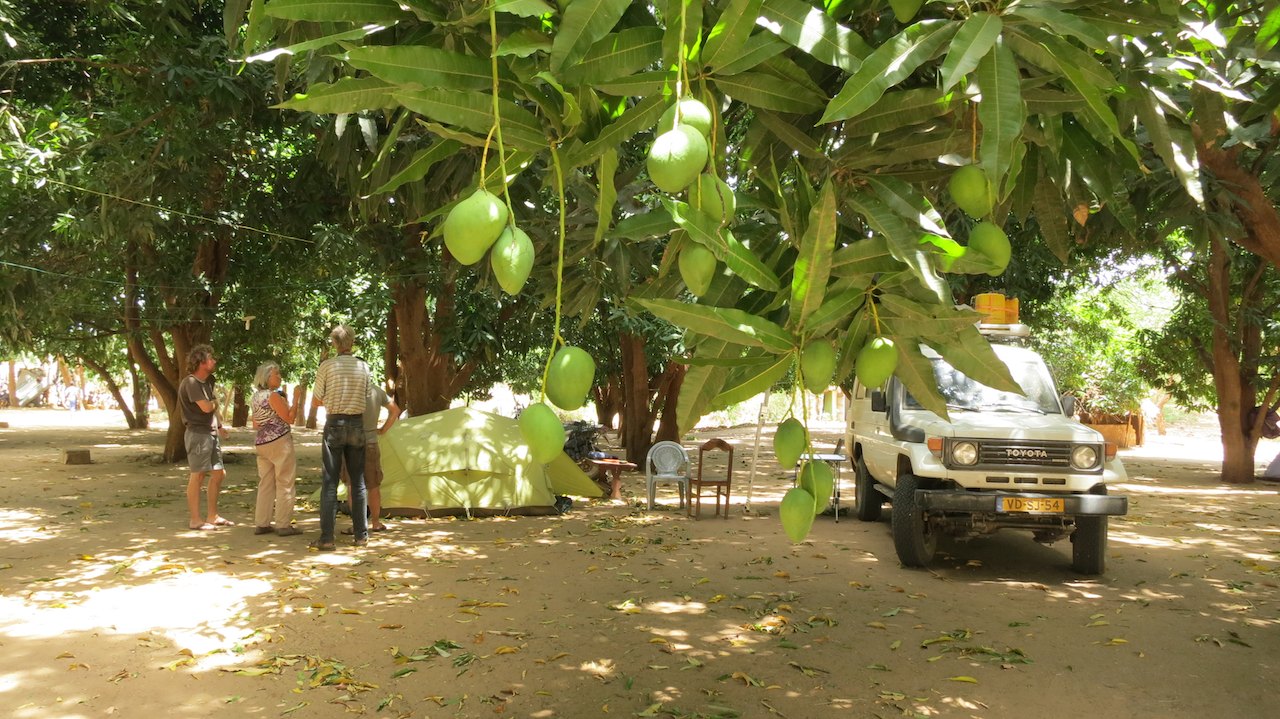
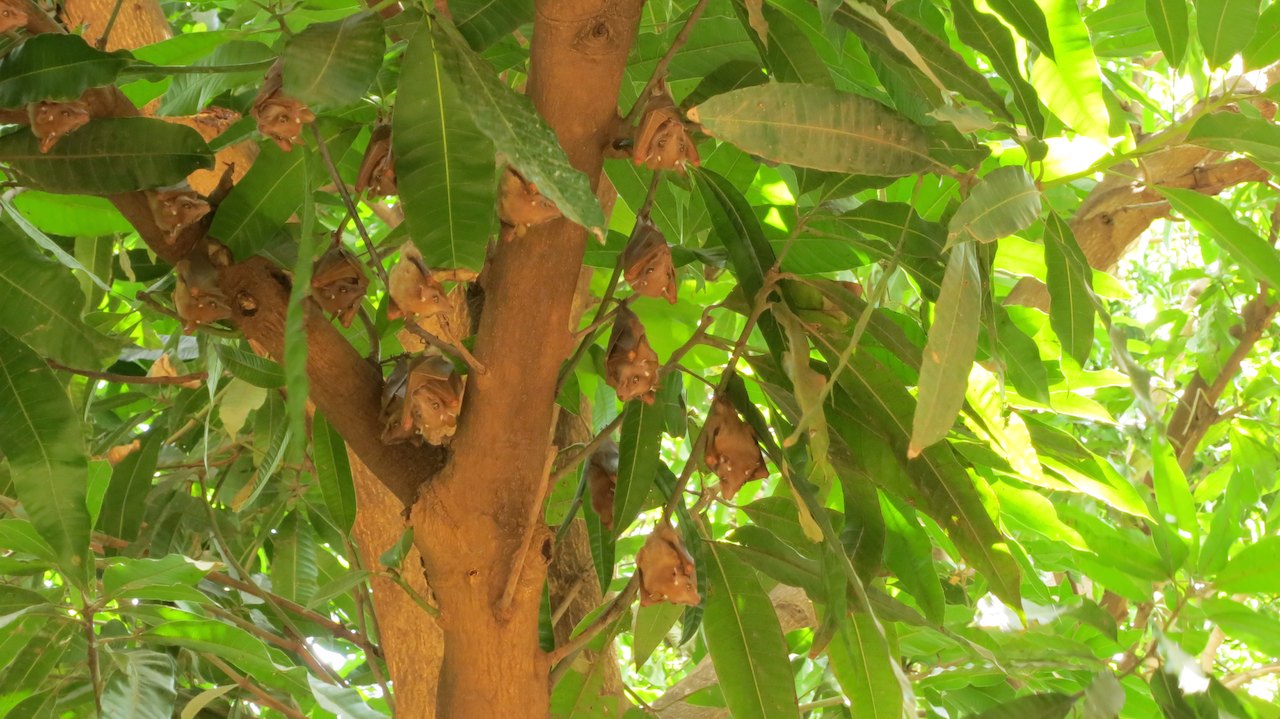
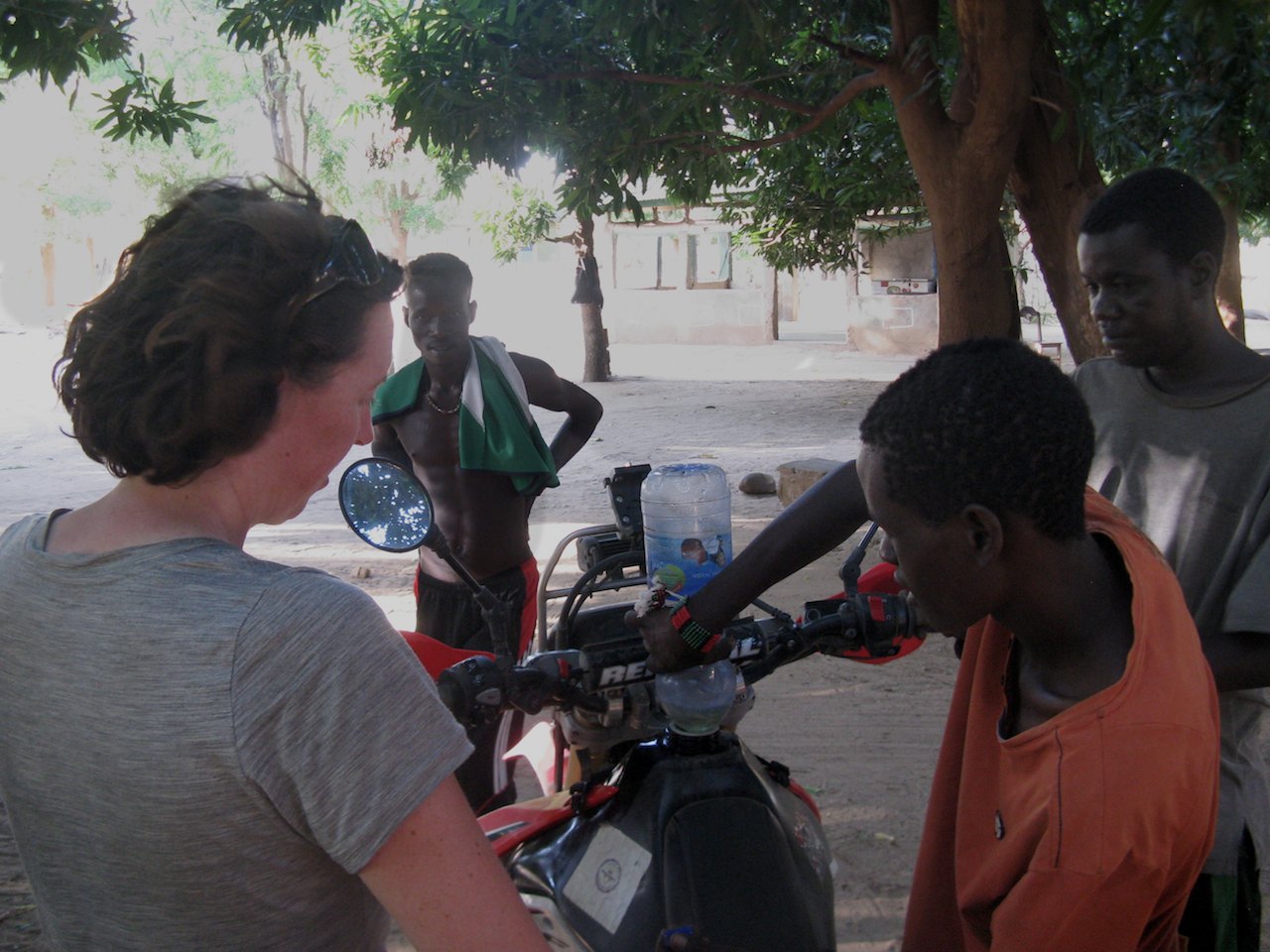
Once the tent is packed and we have had lunch, we drive with Pim, Jan and Margriet to Turmi. In the center a long line of Land Cruisers is blocking the road. There are all packed with tourists that have come to watch the Bull Jumping ceremony. We follow the long line of cars out of town and turn onto a narrow path. On either side of the sandy path we pass a dense acacia forest. Between the trees we catch a glimpse of some goats and cows. We follow the trail a few kilometres until the path is again blocked by a long line of 4x4s. Even more tourists.
We leave our motorcycle jackets, helmets and some other items we carry on the motorbikes in Pim’s car. It is great to travel on motorbikes, but sightseeing is always a bit of a puzzle. We cannot just leave our stuff on the bike everywhere. And sometimes you would also like to take off the suit and the motorcycle boots. A ride from someone else, like the ride with Pim to the market in Dimeka, is really nice because that way we can stroll around the market in our regular clothes and with normal shoes.
With a full Camelbak on my back I follow Margriet further down the path. At the bottom of the path a large group of tourists is standing in the full sun in the dry riverbed. Their attention, cameras and video cameras aimed at the Hamer people sitting in the shade of the acacia trees. They have found the better spot! All the boys from Turmi seem to have taken up the job of ‘guides’. They walk among the tourists to collect the Ethiopian Birrs before the ceremony can begin.
The Hammer girls look beautiful. Not only their beautifully decorated leather clothes and their particular hair due, but also the bells they wear around their calves. It makes a nice sound when they walk. The girls sit down to chat and pose for our photos. I think we are just as interesting to them, as they are to us. Sometimes you see them suddenly all look in a certain direction at the same time and then laugh really hard. Perhaps it is sometimes a good thing we cannot understand them.
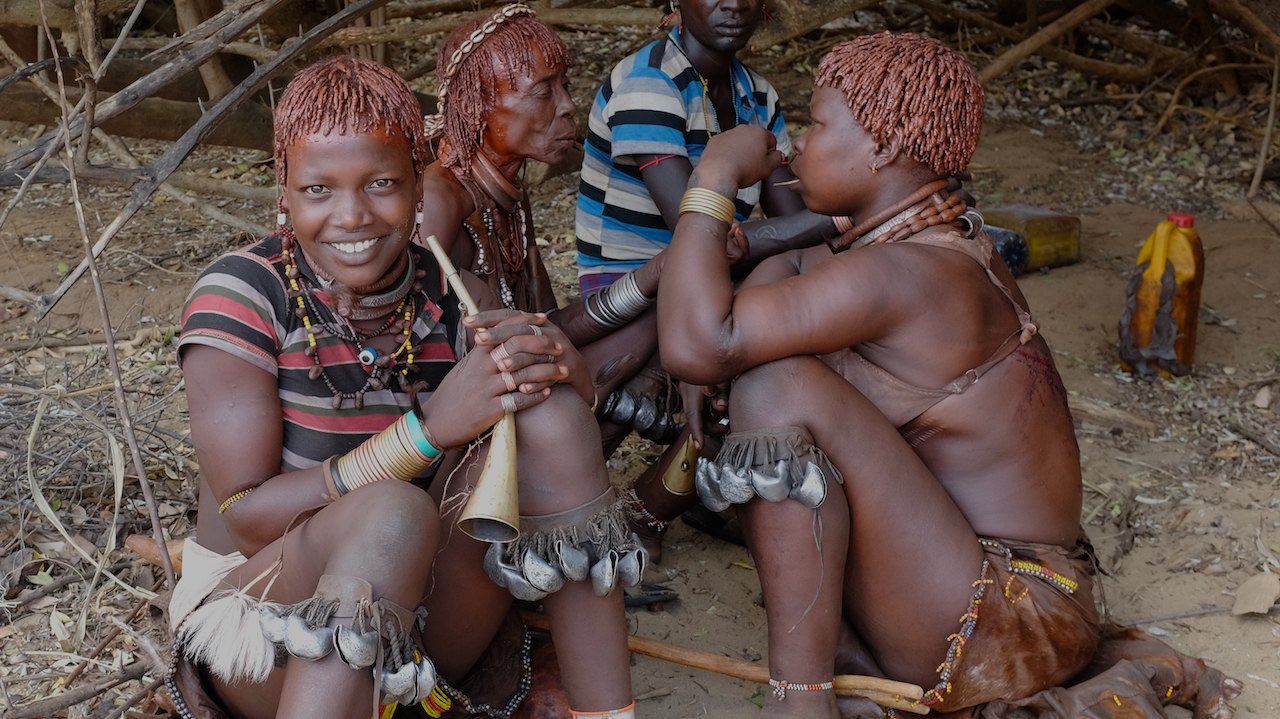
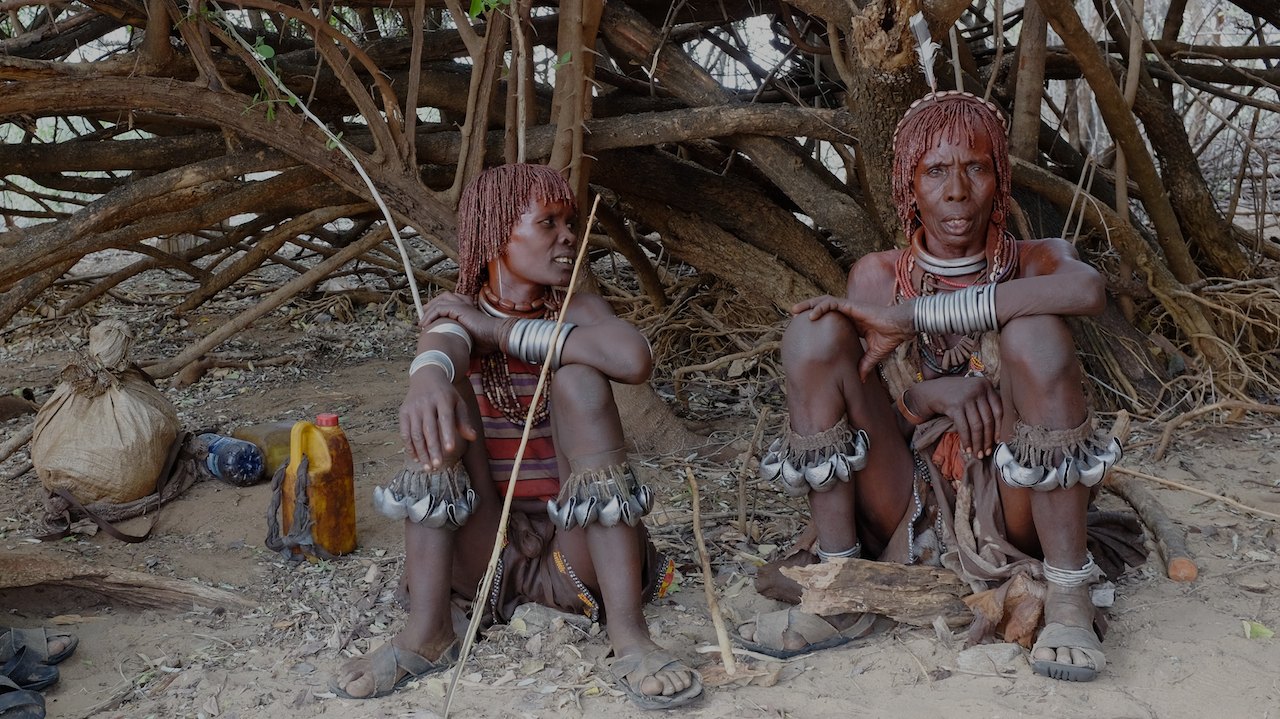
Many villagers have come down to visit the ceremony. It is one of the most important ceremonies in the Hamer society. The ceremony is the culmination of a three-day initiation rite for young Hamer men. On the third and last day of the initiation, the young Hamer man should run naked over seven bulls three to five times. The bulls are then standing in a row next to each other. If he succeeds, he may choose a wife. If he fails, he must wait a year before he can try again.
But that is not all. The Hamer women play an important role in the ceremony as well. To demonstrate their devotion to the Hamer boy jumping the bulls, they are ritually hit with long thin branches. They choose the branches themselves and challenge the boys from the village to hit them with the branches by dancing in front of them while pushing the branches in their hands. When they are hit, the branches bend around their body and leave a deep wound on their backs. The bloody wounds and scars are a sign of honour: the more scars, the greater the status of the lady is. For the same reason, they make the wounds extra dirty to get an even bigger scar. All in all a painful affair. The day begins with the women drinking a local brew (lots of it). We follow the Hamer people over the riverbed to a clearing in the acacia forest. Several women already have gaping wounds on their backs. I have rarely seen such wounds and can imagine that they have been trying to get drunk that morning to prepare for this.
Once in the open space, the tourists form a circle within which the Hamer ladies dance, sing, jump and blow their horns. It sounds very catchy and rhythmic. Next to the dancing crowd, there are some Hamer boys, not older than 16 or 17 years. While the ladies are dancing, they taunt the boys to take their branch and to hit them. We cannot understand what they say to the boys, but it is clearly not friendly. Between the ladies there a real battle is going on to ensure that the boy takes their branch. And once they have tackled the boy to take their branch the woman keeps dancing and singing until a loud slap sounds. SLASH, like a whip of an animal trainer. No screaming, no tears, no shrinkage. She got her tap, a gaping wound on her back and continues to dance to convince the guy to hit her again. But she has had her turn, the other ladies are now crowding around the boy, pushing him around and trying to get their slap. For the ladies a painful affair, but the young men who has to hit them does not seem very happy with the job that was assigned to him either. It is part of the ceremony, but to maim your own aunt, sister or niece might be difficult as well.

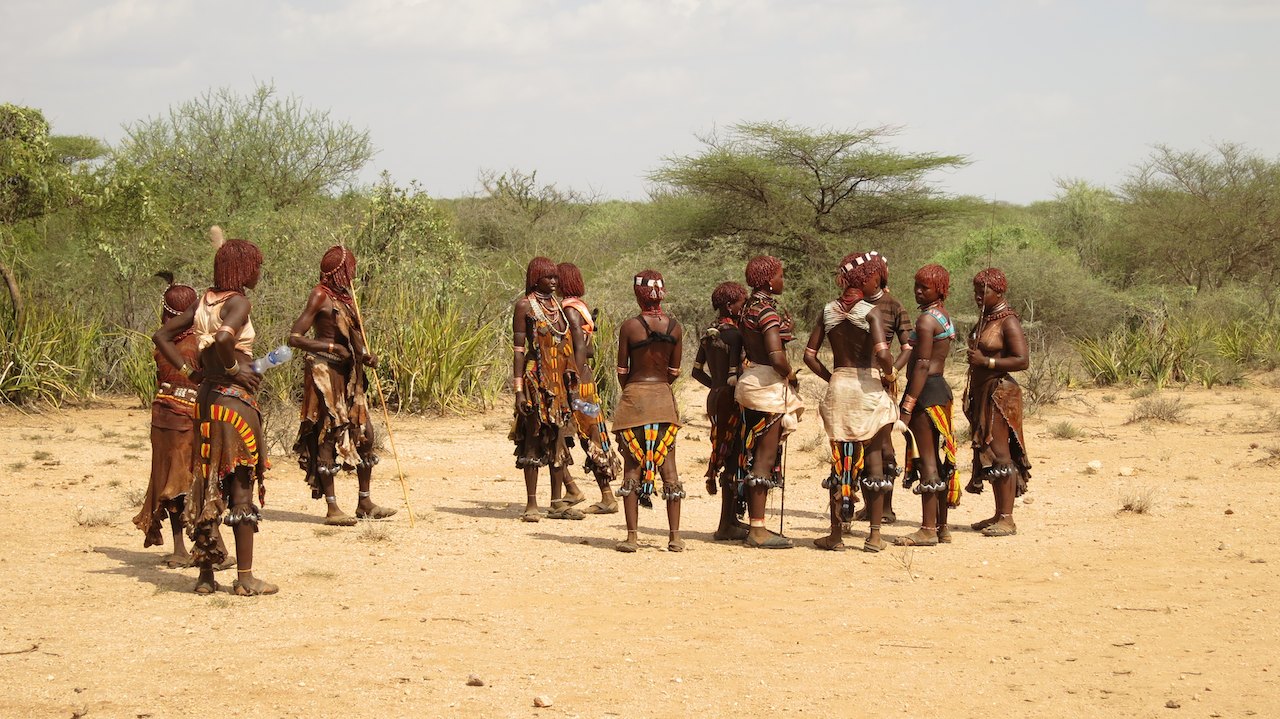
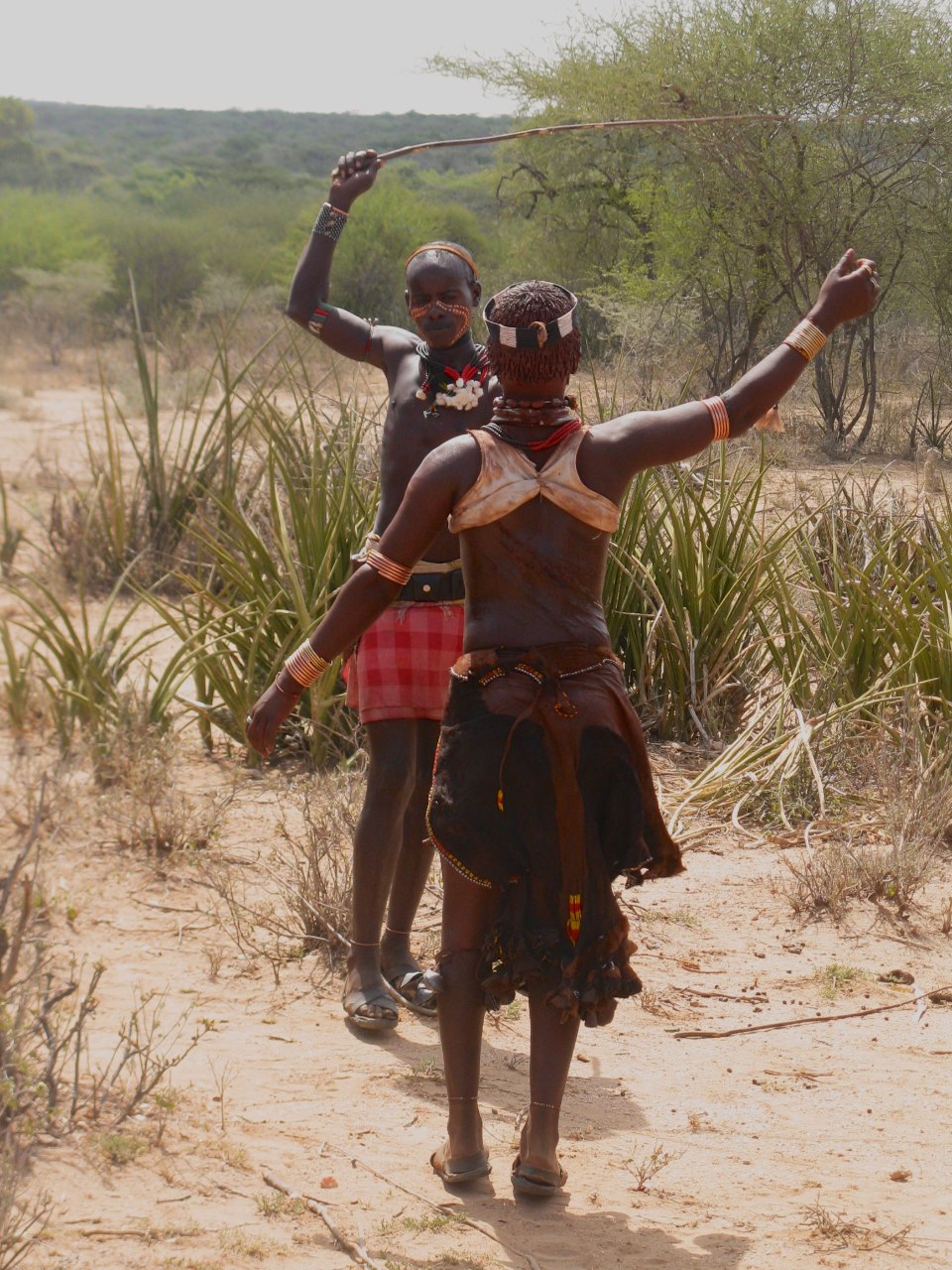
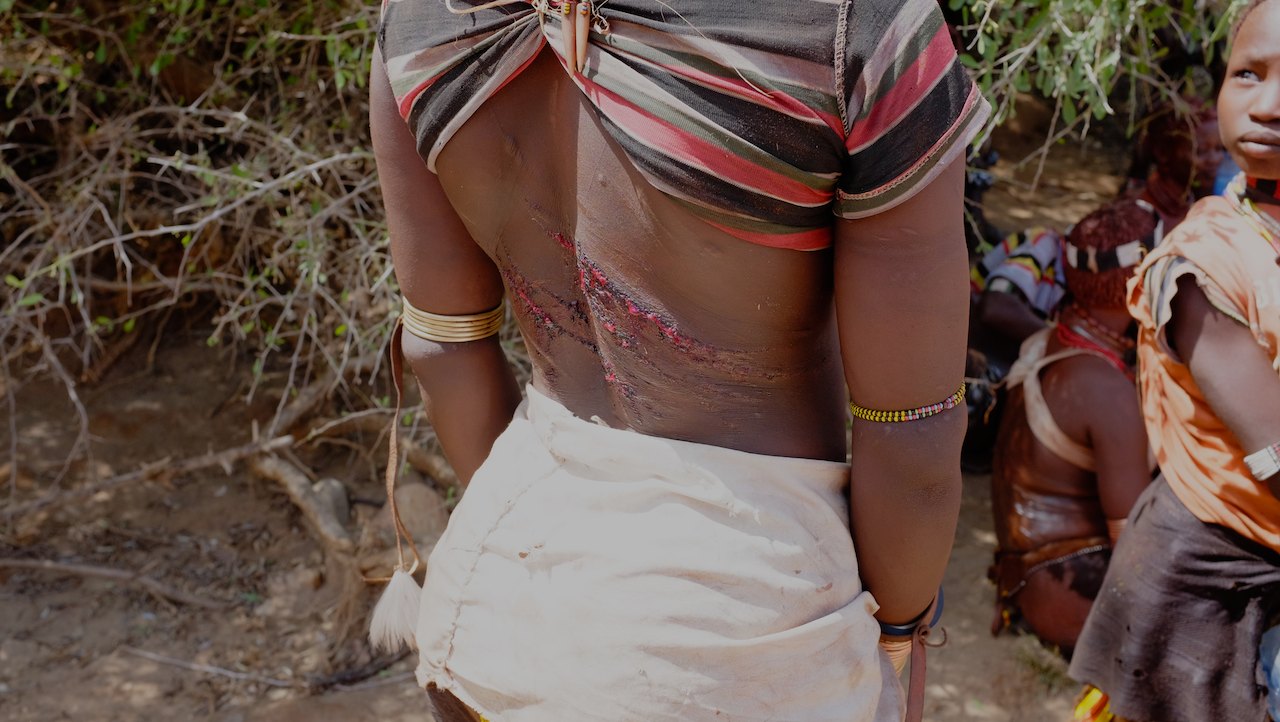
From a distance Margiet and I watch how one after another woman is hit, until I have had enough of it. It is clear that the women choose to be hit, because some of them remain a bit in the background. It usually are the same (most drunk) ladies in the front that get the most hits. But the sound of that branch on their back is so awful that I cannot look at it any more for my own ’amusement’. But then again, I am also the type that watches a scary film through the slits of her eyes while she holds her hands to her ears. Peter, Pim and Jan seem to be less bothered by it.
After this part of the ceremony is over, the bulls come to the scene. A large group of bulls calmly enters the circle of tourists. The men of the village choose a number of bulls and try to put them side-by-side. Not an easy task, because the bulls give a proper fight. The men grasp the bull by the horns and their tail and then try to put it in place.
While the bulls are put in place, the ‘Bull Jumper’ is taken apart by his friends and the men of his family. They form a circle around him in an attempt to keep the tourists away for this part of the ceremony. Something that does not always work, because some tourists put their cameras over the heads of the men to take a picture anyway. Very particular, probably a ’unique photo opportunity’.
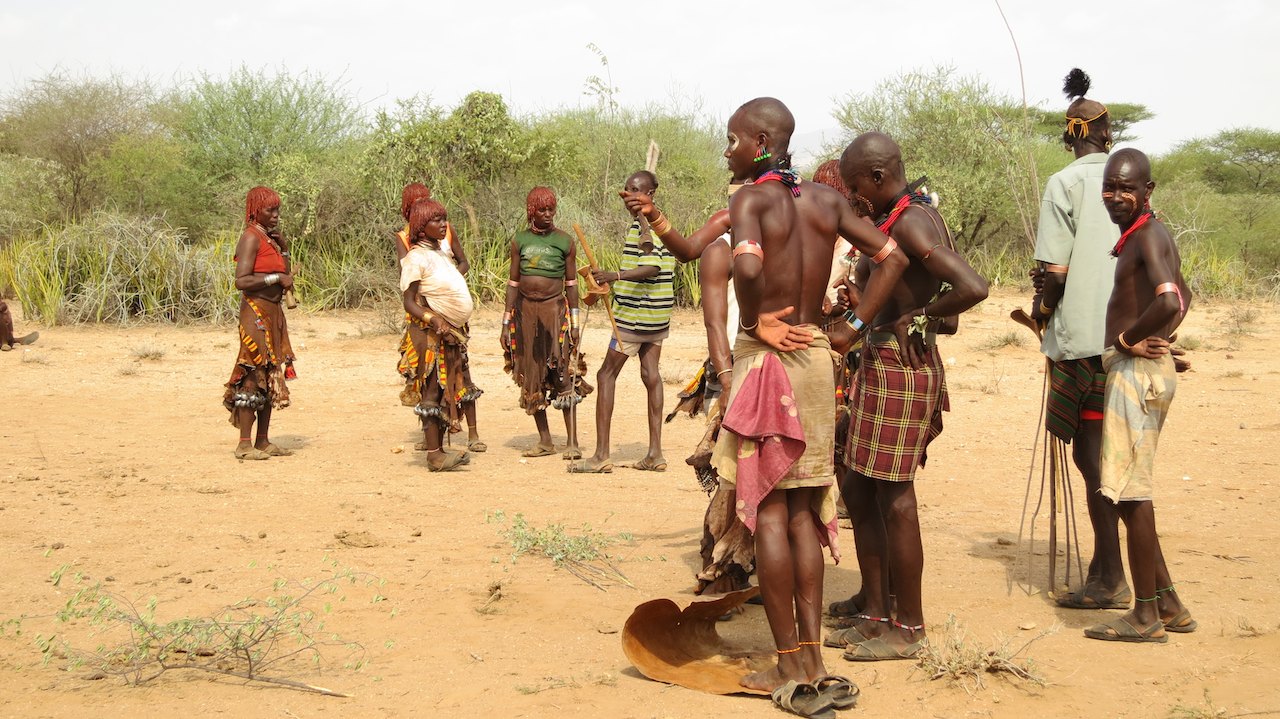
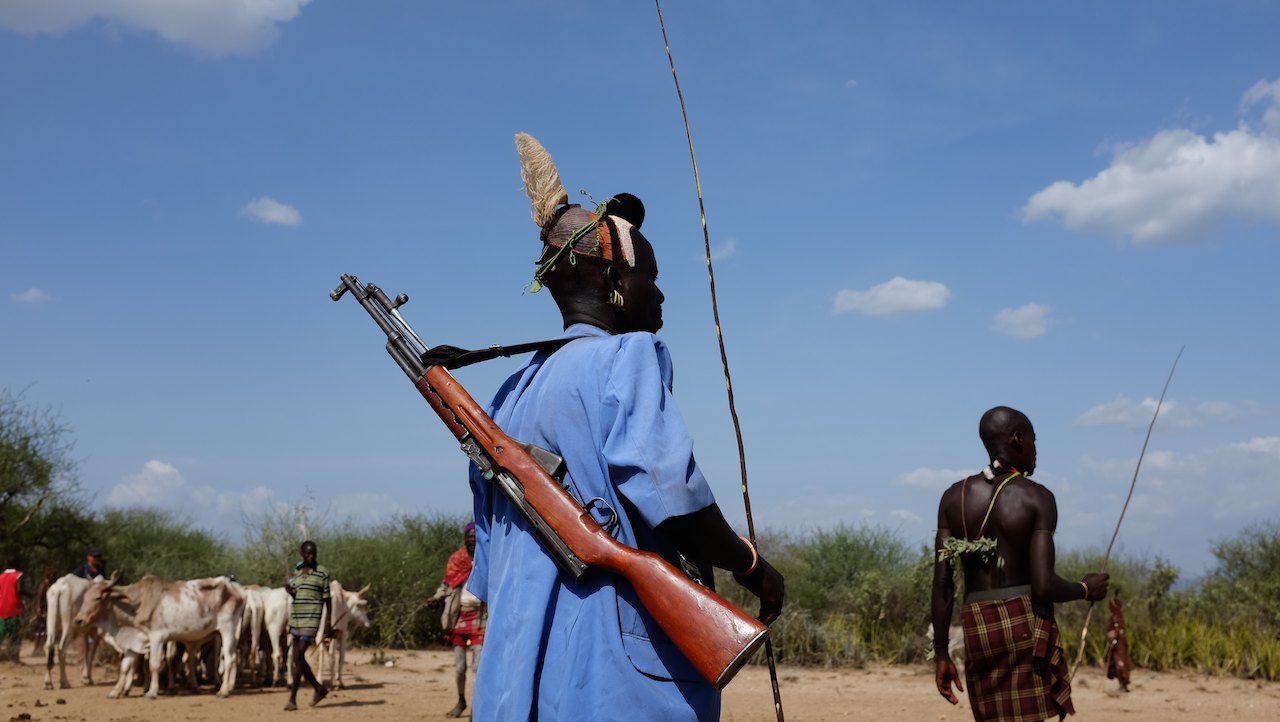
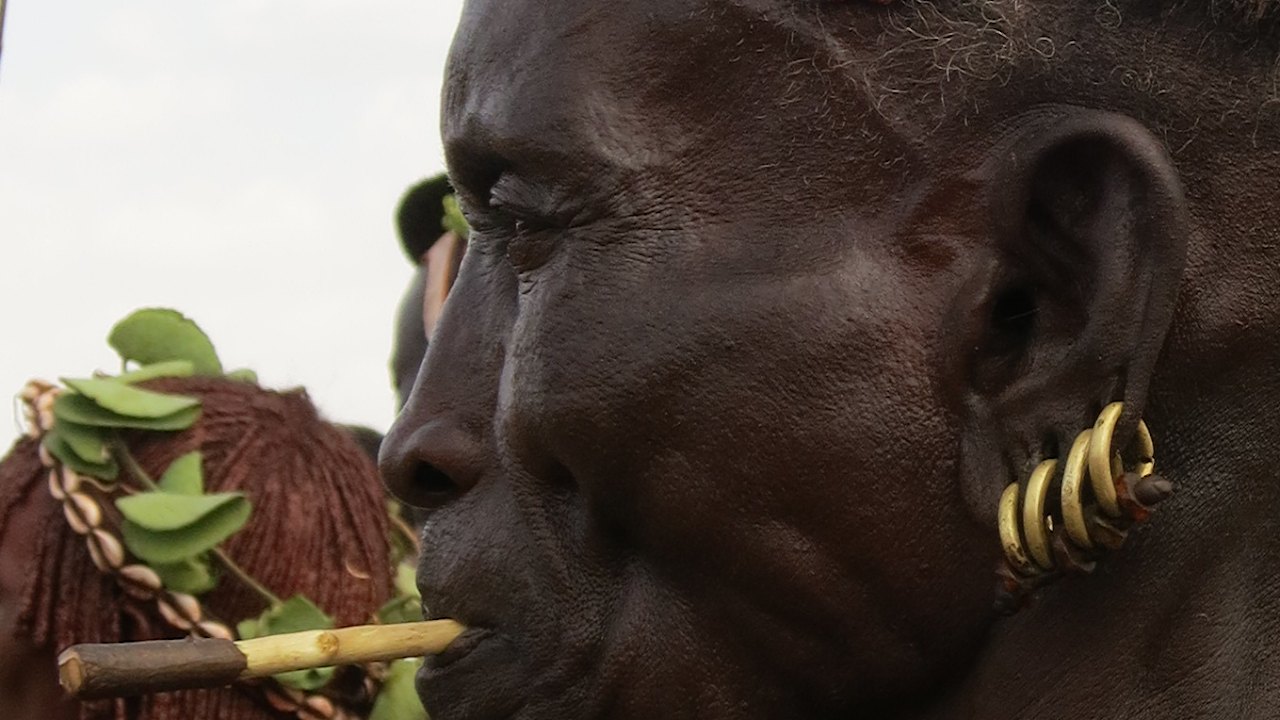
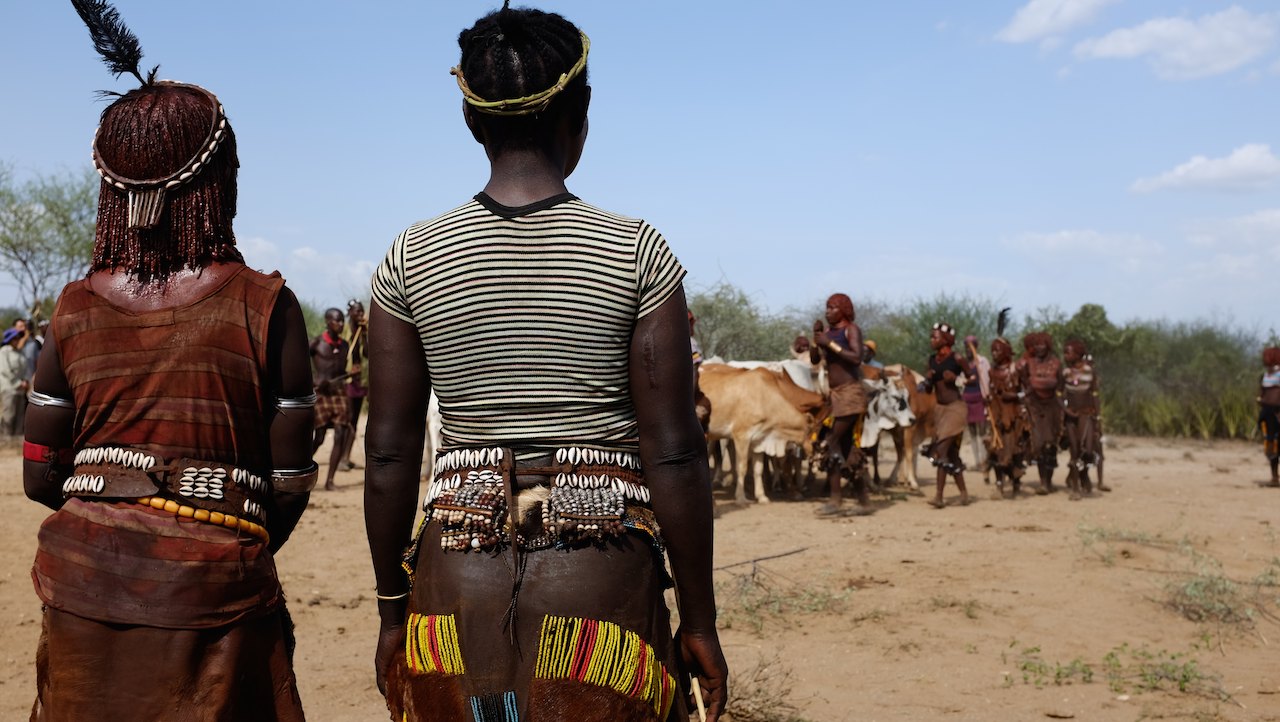
After this part of the ceremony is done, the young man gets ready to jump the bulls. His fellow villagers mingle with the tourists to properly see his attempt. He takes a run-up, jumps on the first bull, run across the backs of the seven bulls and jumps off on the other side. Then he turns around and runs across the row of bulls again. Stark naked he hops from one back to the other. He manages to run back and forth four times. Not the required five times, but from the murmur of approval around us, we gather that he has succeeded. He can choose his wife.
The ceremony is over and the tourists walk back to their cars. With mixed feelings I look at the gaping wounds on the backs of the ladies. It is an ancient tradition associated with their culture, but I personally have some difficulty with the mutilation (often of women) that is part of the ceremony. Moreover, it feels like a ’show’ that is put up for the large number of tourists that is here, which makes the mutilations even more questionable. On the other hand, it is undisputed that the ceremony is still part of the Hamer society and will occur anyway, with or without tourists. It may perhaps feel like a show, but is their right to invite tourists to the ceremony, take advantage of the tourist interest and generate an income therewith.
After the ceremony, we continue our way from Turmi to Omorate. It is dusty and hot, but the dirt road is fine to drive. At the beginning of the evening we arrive in Omorate, the last place in Ethiopia before the border with Kenya. We drink a warm Coke, eat the last enjera we will eat in a long time and then crawl into our tent. Tomorrow the real adventure begins when we ride along Lake Turkana to Kenya!
Distance to Omorate: 12.824km (7.969 miles)

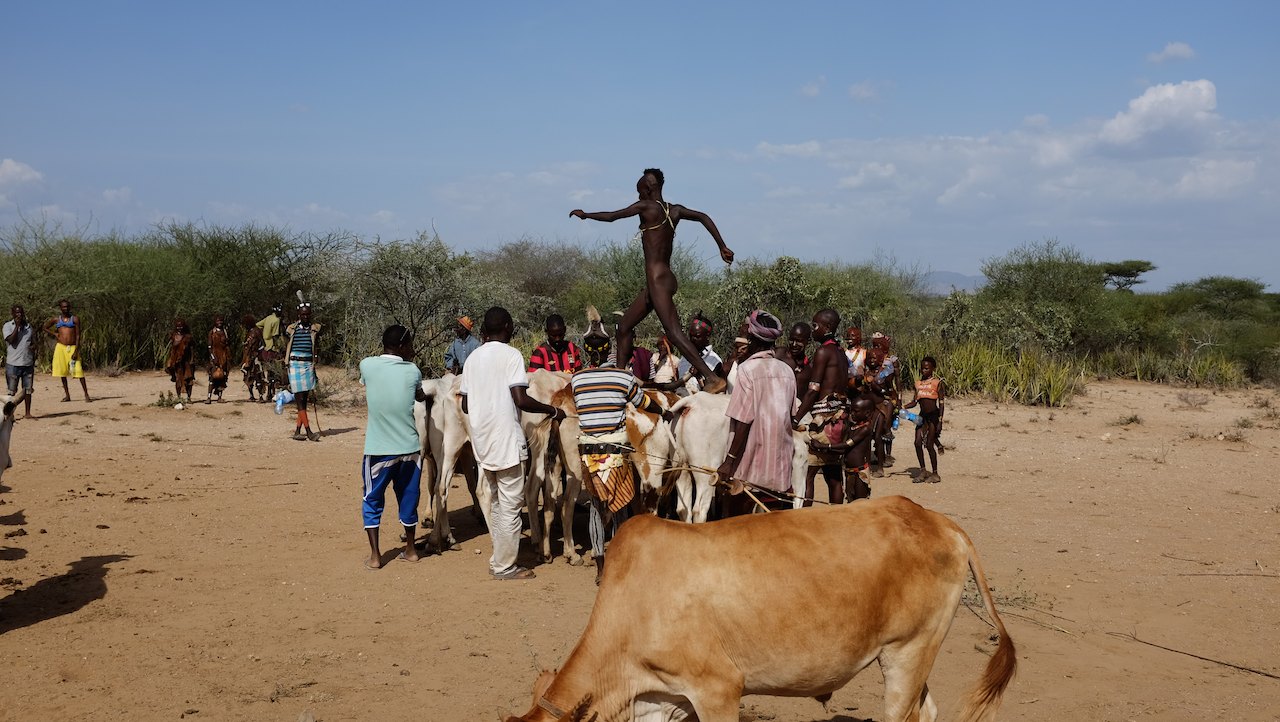

|

19 Feb 2015
|
|
Registered Users
HUBB regular
|
|
Join Date: Dec 2009
Location: The Netherlands
Posts: 66
|
|
|
Turkana Route lll: 1,000km offroad
To know how much fuel, water and food we had to take, we had read several reports of travelers who had done the Turkana route. Travel reports that in the first place describe the adventures on the road. The information about the state of the ‘road’ was quite interesting to say the least. Long stretches of deep sand, a great number of river crossings, paths with loose stones and fields with sharp lava rocks as big as footballs. An additional factor was the weather. It could either be very hot, what makes driving even more difficult, or very wet, which would make the route impassable. Although the travel report also describe how incredibly beautiful the route was, in Omorate I was mainly thinking about the challenges that awaited us. At the hotel where we stayed, we meet a motorcycle rider from Barcelona. A year earlier he left from Omorate to ride the Turkana route on his Yamaha Ténéré. Only 30km outside Omorate he had fallen in the deep sand and broken his leg in two places. It had taken three days and two different planes before he was taken from Omorate to a hospital in Addis Ababa and another year before he could walk normally again. He was now back to patch up his bike and try it again. Impressed by his story, I wonder: What are we getting ourselves into?
Tense and a little nervous I crawl into our warm tent that night. We do not use the fly of the tent to have a little bit of wind through the tent, but it does not seem to help. Sweaty and a little sick, I try to sleep. Half an hour later I run across the courtyard of the hotel in my underwear, because I cannot keep the last enjera of Ethiopia in. I feel horrible. After a sleepless night, we pack up early the next morning. We can put our duffelbags in the back of Pims car, just like the groceries we buy that morning. After we have changed our Ethiopian money, we drive in convoy to the customs office. Half an hour later we have stamps in our passports and our Carnets de Passages. We leave Omorate.


Just outside Omorate we turn right, onto a sandy path. It is just wide enough for one car, you can not really call it a road. In some parts the sand is very deep. We are less than two kilometres on our way when my bike swerves all over the place. I can barely keep it upright. This starts well. Peter comes running with a tire pressure gauge and together we let some air out of the tires. With the softer tires riding is much easier in the loose sand. Standing on my steps and hanging on to my handlebars to keep my front wheel up, it goes pretty well. In sections where the sand is deeper, I remember the offroad course that we followed with Toine van Dijk. It is as if he is riding next to me: “ Gas, gas, hit the gas Leonie! And shift now!” It feels unnatural, because when my motorbike starts swabbing I would prefer braking and putting my feet on the ground, but that is only more difficult. So speed it is!
With every kilometre we ride, it is going better and my confidence is going up. We are not going fast (no faster than 40km per hour), but we are making sufficient progress. Before I know it, we even drove through several dry riverbeds. Even that appears to go just fine, especially on these light motorbikes. I am so glad we left our big Hondas (Africa Twin and Transalp) at home!) In some riverbeds we have to drive through really deep sand. It reminds me of the deep, loose sand you would find at the beach just below the dunes. With my feet on the ground, I strum in first gear through the track in the sand. Not really ‘Dakar-material’, but that is how I keep my bike upright and my stuff and especially myself in good shape.
Peter and I drive in front, Jan and Margriet behind us and behind them is Pim. This way we are less affected by the dust their cars throw up and they can better keep an eye on us. The sand is much less of a problem for the cars. The only risk is that they get stuck in the deep sand in the dry riverbeds, they will not topple over. In the deep stretches of sand where I ’walk’, Jan waits behind me to drive through the sand at high speed as soon as I am at the other side. It looks impressive.
There are multiple tracks through the sand and sometimes it is quite hard to find the right one. We use ‘ Tracks4Africa ‘ on our GPS, which shows routes that were previously ridden by others. Together with Jan, who sees the route on his iPad, and Pim, who has a newer version of Tracks4Africa, we manage to find the right paths.
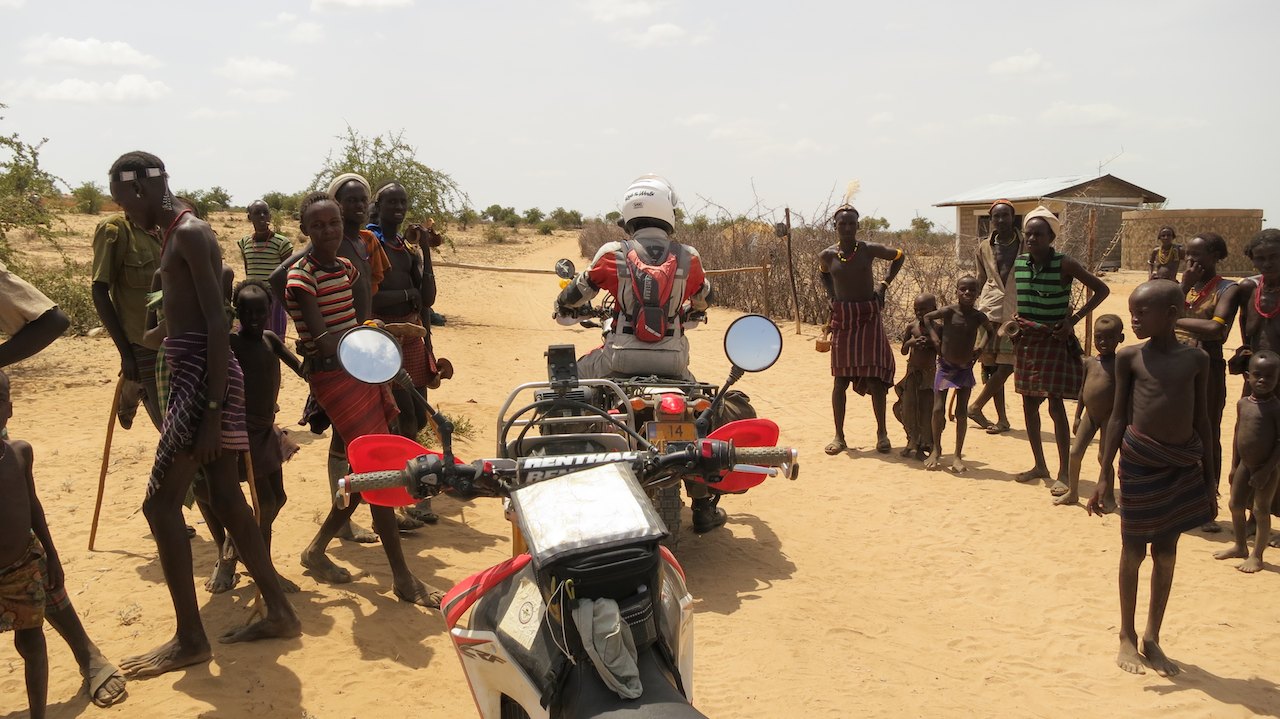
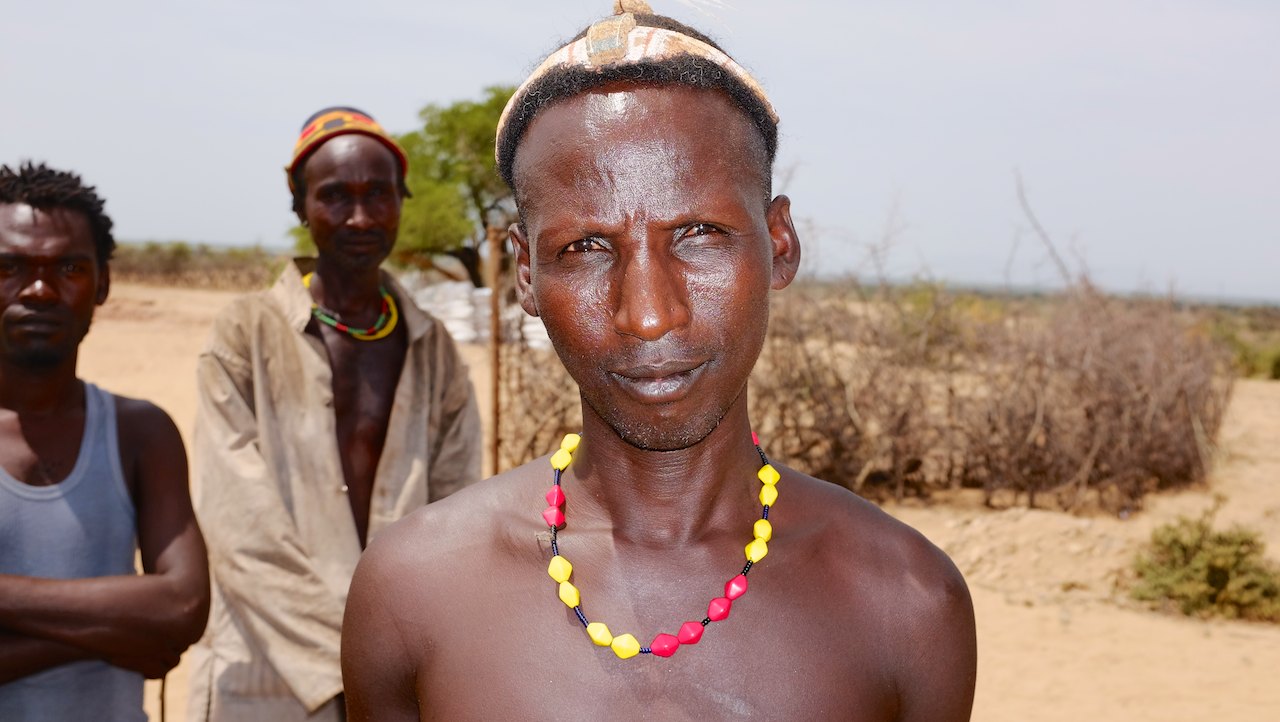
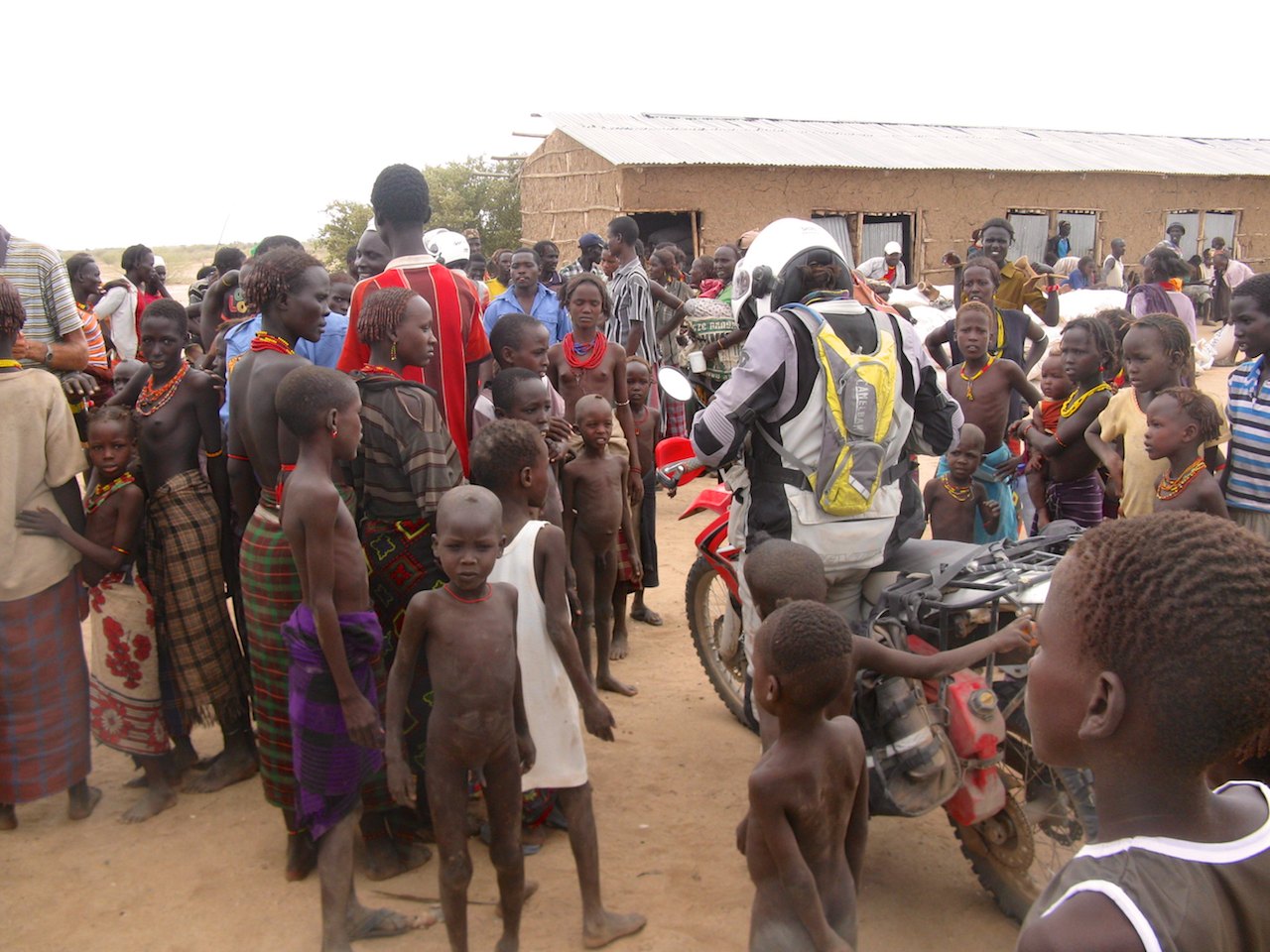
We sway over the track on the dry savannah. We pass several small settlements, where a few huts form a little village. In several villages we encounter a barrier that is lowered over the path. We stop and are quickly “encircled” by a large group of interested people. We are just as interested in them, as they are in us. They look beautiful with traditional clothes, jewellery and impressive weapons. After we tell them where we are going, the gate opens and we are allowed through. We pass through a number of villages where we are stopped before a barrier or a rope. In the fourth village we seem to be at the border with Kenya. There are two police officers in uniform and once we stop we are greeted with a cheery; “ Jambo, Mzungu!”, Swahili for “ Hello, white man.” Now we know for sure, this is the border with Kenya!
There is no customs office and we cannot get a stamp in our passports here. That will be of later concern. After a brief chat, one of the officers opens the barrier: “ Karibu Kenya” ( Welcome to Kenya!). On dusty dirt roads we drive further south. For the first time we can now see Lake Turkana. The path leads us through a village with small huts where freshly caught fish is dried. Mid-afternoon we arrive in Illeret, the first slightly larger village in Kenya. Here we have to register with the police. We are welcomed by Victor, who takes our passports and shows us where we can get a ’cold’ soda while he takes our details. The warm Sprite tastes good after the efforts of that day. Again, we cannot get a stamp in our passports here. Stamps, we must eventually get in Nairobi.
If everything is noted, we leave Illeret and drive to the entrance of Sibiloi National Park. We will not drive through the park, but along the park boundary. As we drive to the east, away from the lake, the trail slowly changes structure. We no longer driving on sand, but across large round stones. The road winds up and down. At the end of the afternoon we find a flat plateau that overlooks Sibiloi National Park, a great place to camp. With the shovel of Jan we clear a piece of land as big as the groundsheet of our tent. At dusk we cook some pasta and make a sauce of tomatoes, onions, garlic and some spicy herbs. It tastes great! Satisfied we look back on a successful first day. Driving through the deep sand went better than I had expected and the motorbikes were perfect. A little more confident and a lot less tense we crawl into our tent early that night.
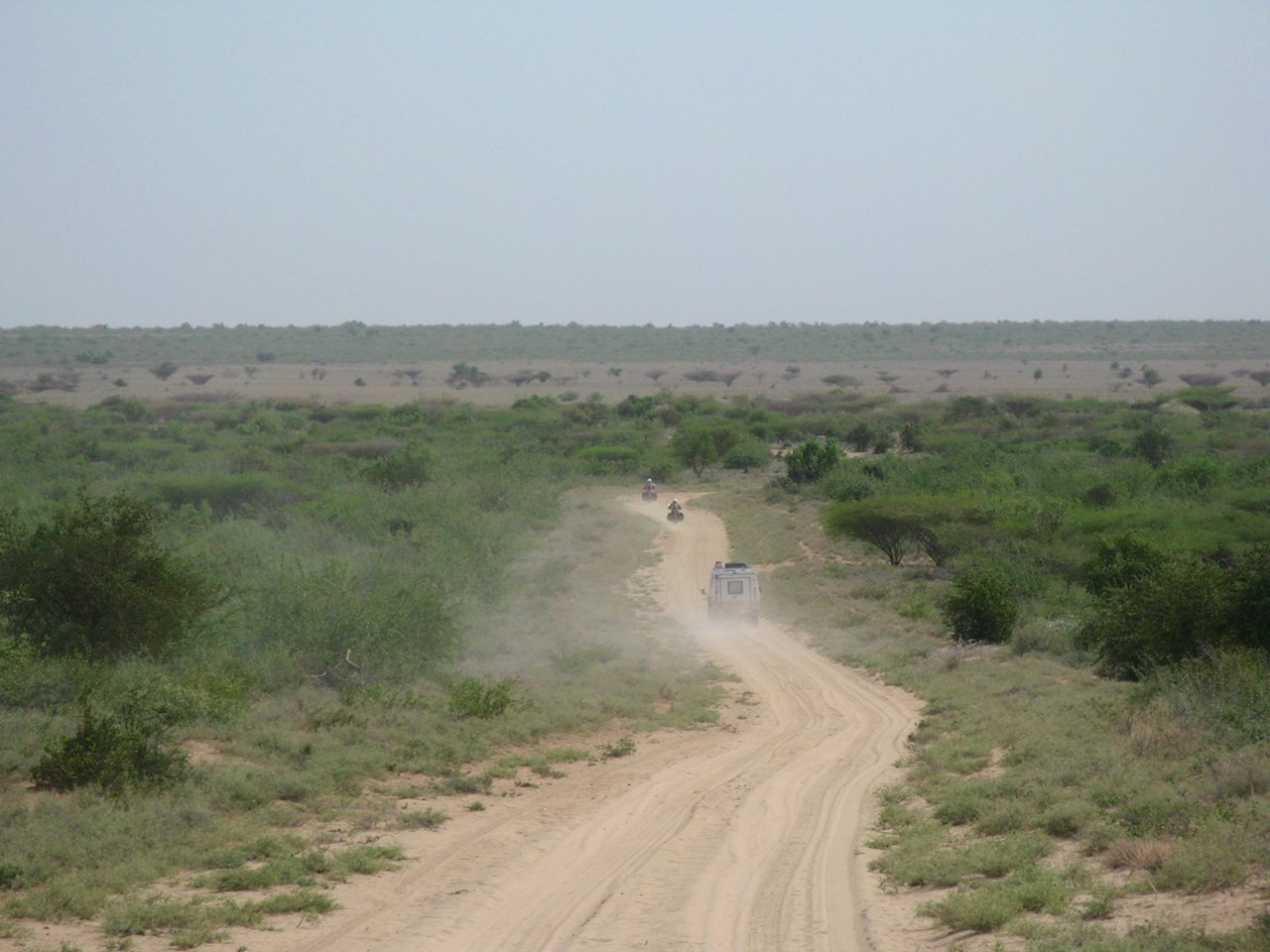
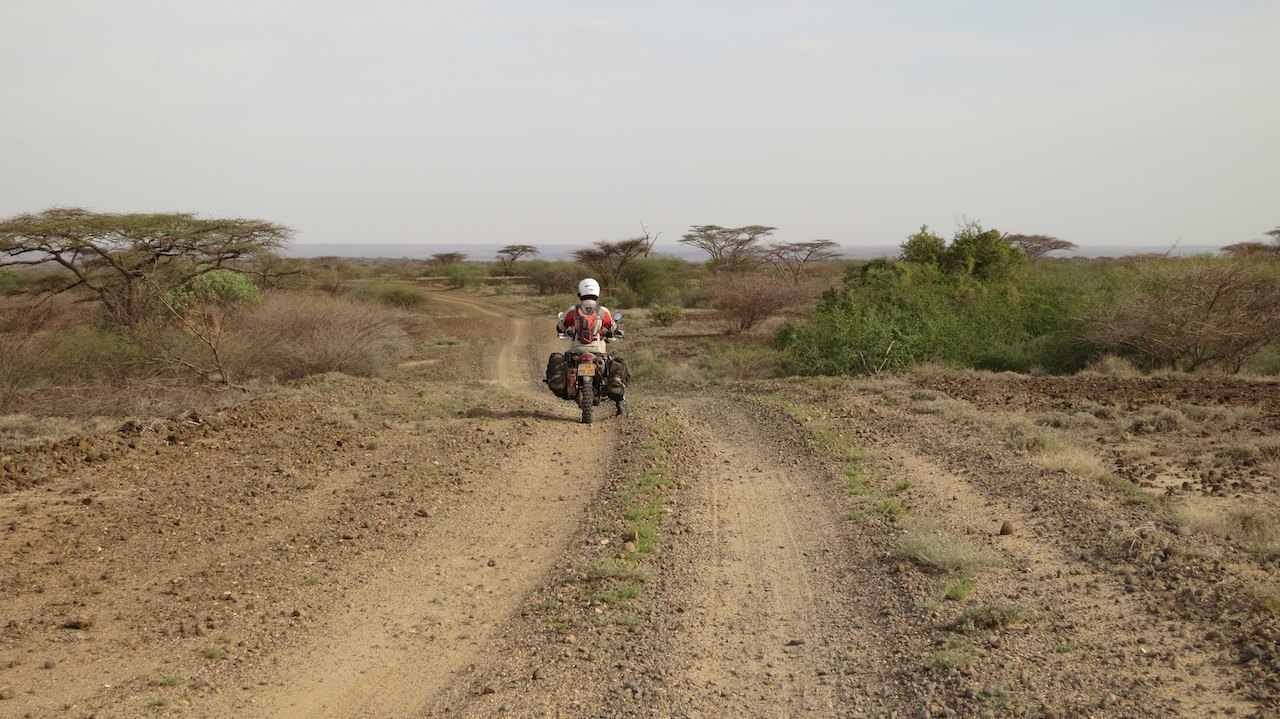

Halfway through the night I am again standing outside in my underwear. This time not because of the food, but to cover the tent with the flysheet because of the rain. And not just rain, but a downpour with crackling thunder. The worst heat is now out of the air, so sleeping is a little easier now. We will see tomorrow what the rain has done to the road. The alarm goes early next morning. After a breakfast of dry bread with jam and a cup of tea, we pack everything again. Breaking down the tent, packing the bags and putting on our suits, takes quite a lot longer than the time Jan and Margriet need to prepare their Land Cruiser for departure. Pim is also a lot faster with collapsing his roof tent. It might have some advantages to travel by car.
The route takes us along the park. The road is not really deteriorated by the rain and the river crossings are still (or again) dry. Peter rides in front of me and is more or less our ’spotter’. He is clearly a lot better in riding offroad, because he can also enjoy the scenery. While I try to manoeuvre my bike on the paths with my tongue out of my mouth, I hear over the intercom about all the birds and animals he sees. He is a good spotter and also sees the first ‘wild animals’; a group Topi antelope. Around the national park is no fence and the animals naturally are not bothered by the park boundaries. From a distance we look at each other. Only when we turn off our motorbikes to make some pictures, they run away.
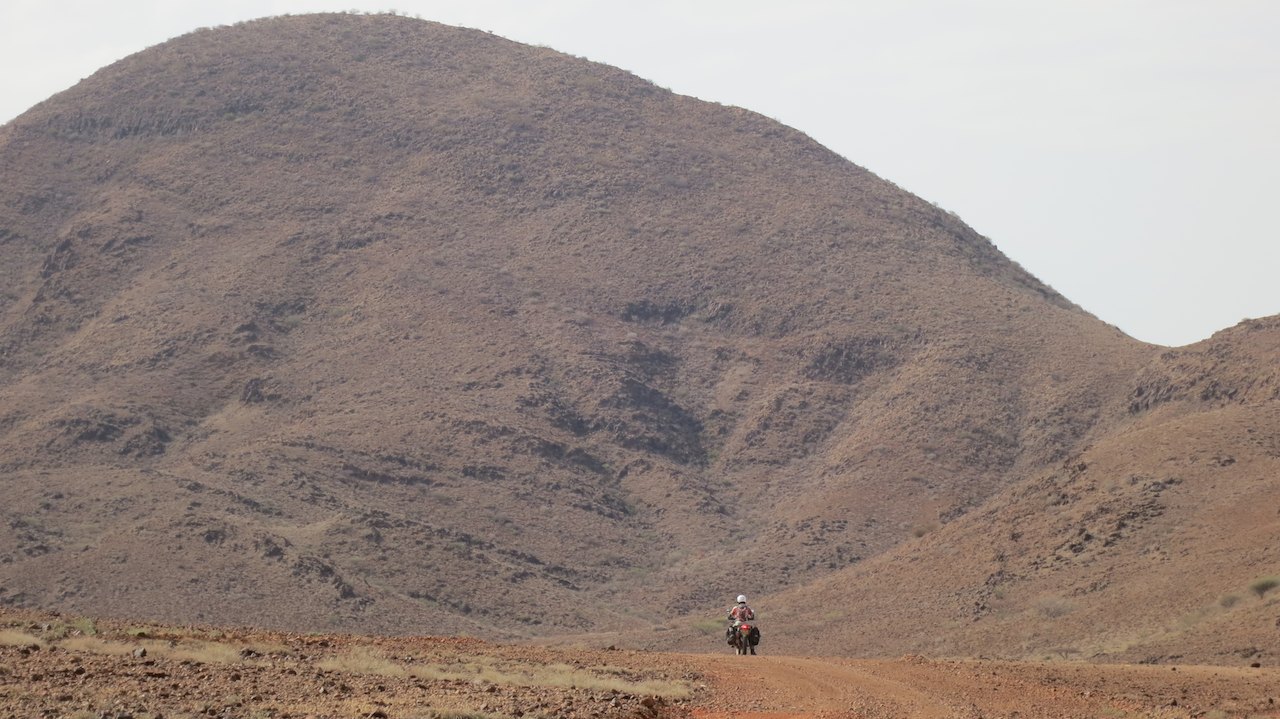
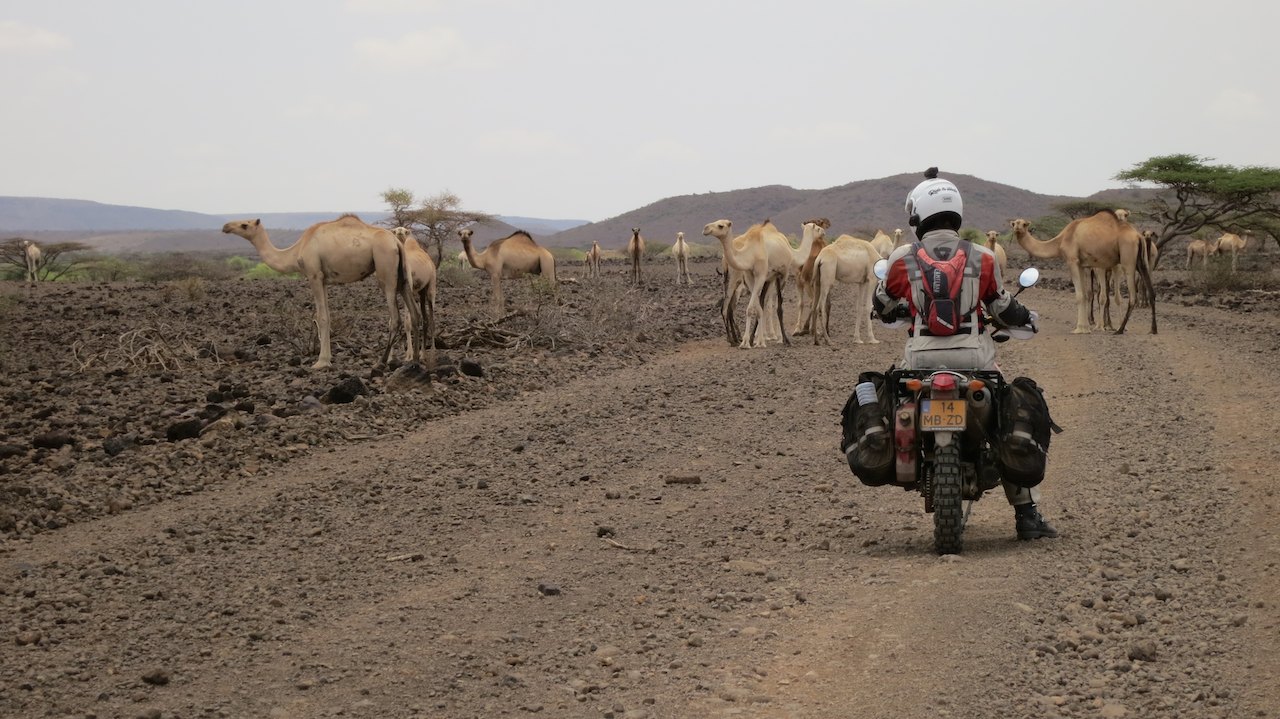

Further south we reach the announced fields with lava stones. Stones as big as tennis balls, and later stones as big as footballs. On part of the route, the path is cleared from the largest stones, but on other parts we need to go across the stones. Very difficult, especially where the road goes down sharply to a dry riverbed to then goes up again steeply. The stones are loose and shoot away from under our wheels. We must pay attention and cannot stop just anywhere. If the stones are large, the holes between them are big too and in between there is no place to put your feet. Keep riding!
That morning we have put some air in the tires again to prevent a flat tire when hitting the sharp rocks. Although we try to avoid the biggest rocks, we sometimes bounce over them quit hard. We stop several times to check the tires. The bikes are doing great, even the steep slopes are no problem. Again we talk to each other about how happy we are that we are traveling on these light Hondas.
We are on our way to Loyangalani and along the way we pass a sign that says “107.5 km”. We do not drive fast and can only go 15km per hours in some parts. Taking into account much needed breaks and the slow speed, it will take at least four to five hours before we will be in Loyangalani. But it is still early, so who knows, we may just make it. A campsite with a shower and a drink would be fantastic.
The motorbikes bounce over the stones and our arms vibrate. It is very tiring and after a while I start to feel it in my arms and my back. On parts where we can stand still, we stop frequently to rest, to shake our arms and to have a drink. We stop for a mid-morning coffee break, and not long after that again for lunch. I empty my Camelbak twice. And in the difficult moments when we are panting, Margiet comes with a tray of candy. What a treat!
The closer we get to the lake, the more sandy roads and dry riverbeds we encounter. The heat and fatigue begin to take their toll. At the end of the afternoon we must stop more regularly to catch our breath and drink. Especially in the areas with deep sand, when my motorcycle swerves in all directions, it is really tough. Out of breath, I put my feet on the ground to stretch out on my tank bag panting. At one point, when Peter is out of reach of the intercom, Jan has overtaken me, and I can only see deep sand, I want to give up. I ask Pim to stay behind me, so he can help if I fall and I then plow on through the deep sand towards Peter. The fear of falling sometimes paralyzes me and makes me brake where I should accelerate. Strange if you consider that up until that time I did not fall on the ground even once.
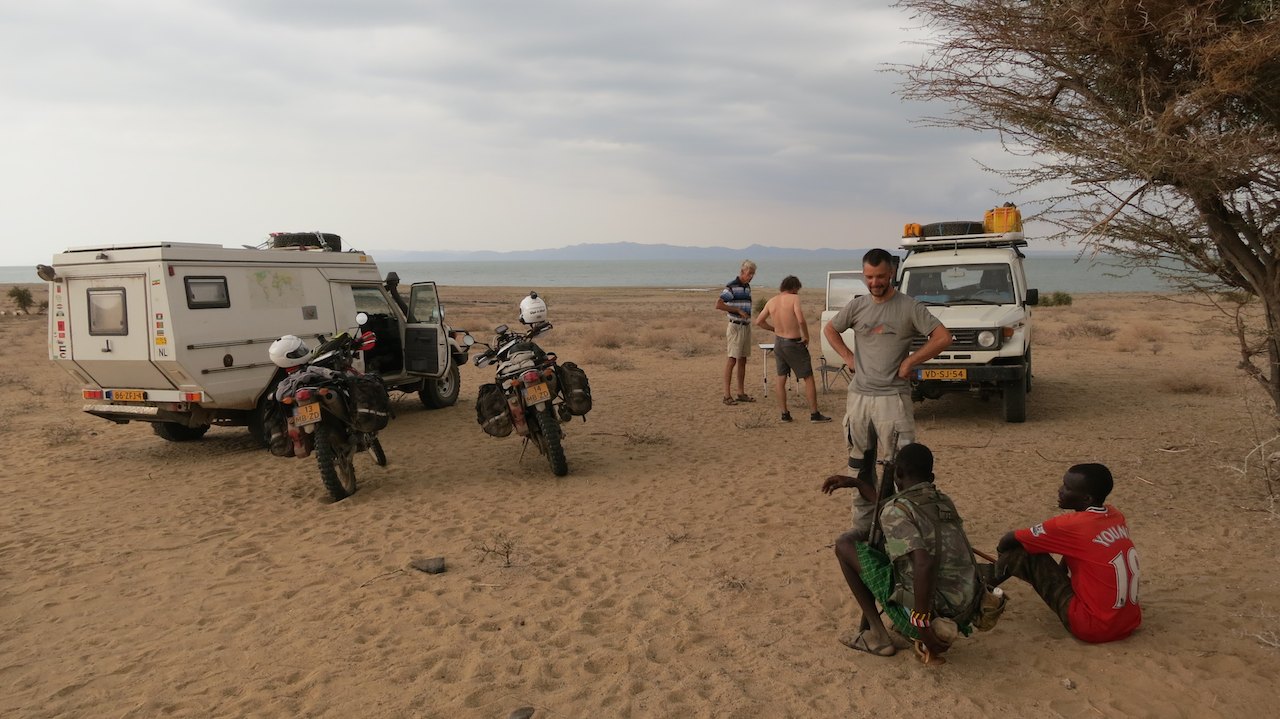

Once with Peter, Jan and Margriet -who were waiting for us on a hill- we let out some more air from the tires to make the ride through the sand easier. We just have to be careful of the stones that are still sticking out of the sand, because with the soft tires the chance of a puncture are larger. We drive to the lake through the deep sand. On my bike, I see that it is only 15km to Loyangalani. I really want to go there, not only to drink a cold Coke myself, but also so to allow the others to have a shower and a cold drink. But I can not. Every 100 meters my bike swerves over the dirt track and I can only just keep it upright. I am dead tired and need to stop. A difficult decision as it is clear that the others, including Peter, could have continued for another 15km.
We find a flat piece of sand overlooking the lake. It is still light and while Peter puts up the tent, I start cooking. Again pasta with tomatoes, onions, garlic and spicy herbs. But this time accompanied by a delicious coleslaw salad made by Margriet. It tastes good! Once the cooking equipment is cleaned, we crawl into our tent. No idea what time it is, but it is dark and I am tired.
Our liners and pillows are wet with sweat when we wake up the next morning. It is very hot and had been so all night. We walk to the lake with a towel and some soap to freshen up. First we look for crocodiles or their tracks, because the lake is full of them. The coast seems clear. We wash ourselves and then trudge back to the tent. Next to our tent are two Turkana watching those crazy five ’mzungus’. One of them speaks good English. We talk about our trip, their village and the weapons they carry. In this area there are fights between different tribes regularly, but the men assure us that the weapons are just to protect them against wild animals like hyenas. The men want a ride and can come with Pim to Loyangalani.
We get back on the road for the last 15km to Loyangalani, through deep sand and crossing several dry riverbeds. We drive on a vast plain whit small gullies that run from the hills to the lake. The gullies are dry now, but the sides have recently been carved out by the water and are very straight. With the bikes this is fine, but for the cars this is more difficult. They hit the ground with the back of their car each time they want to drive out of the gullies again. We take our time to take some pictures and make some movies.
After 15km there is still no trace of Loyangalani. A glance at the map shows us that we still have to travel at least 50km before we get there. As we drive on, more and more stones are on the path. We slowly ride into the hills with lava stones. From the hills we have a great view over the lake. The lake has a beautiful jade green color and contrasts beautiful against the threatening dark sky. We stop frequently, especially to take pictures. By lunchtime we arrive in Loyangalani. A small village, but after being in the middle of nowhere for what felt like eternity, it comes across as a busy city.
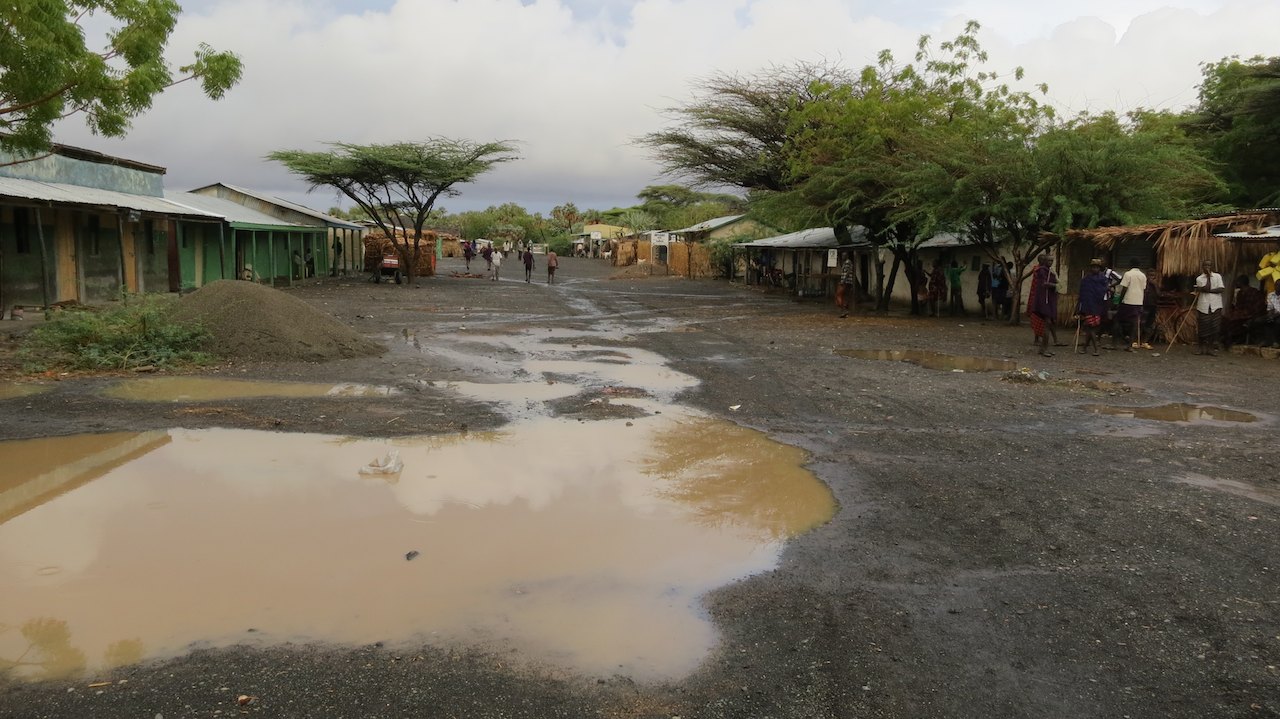

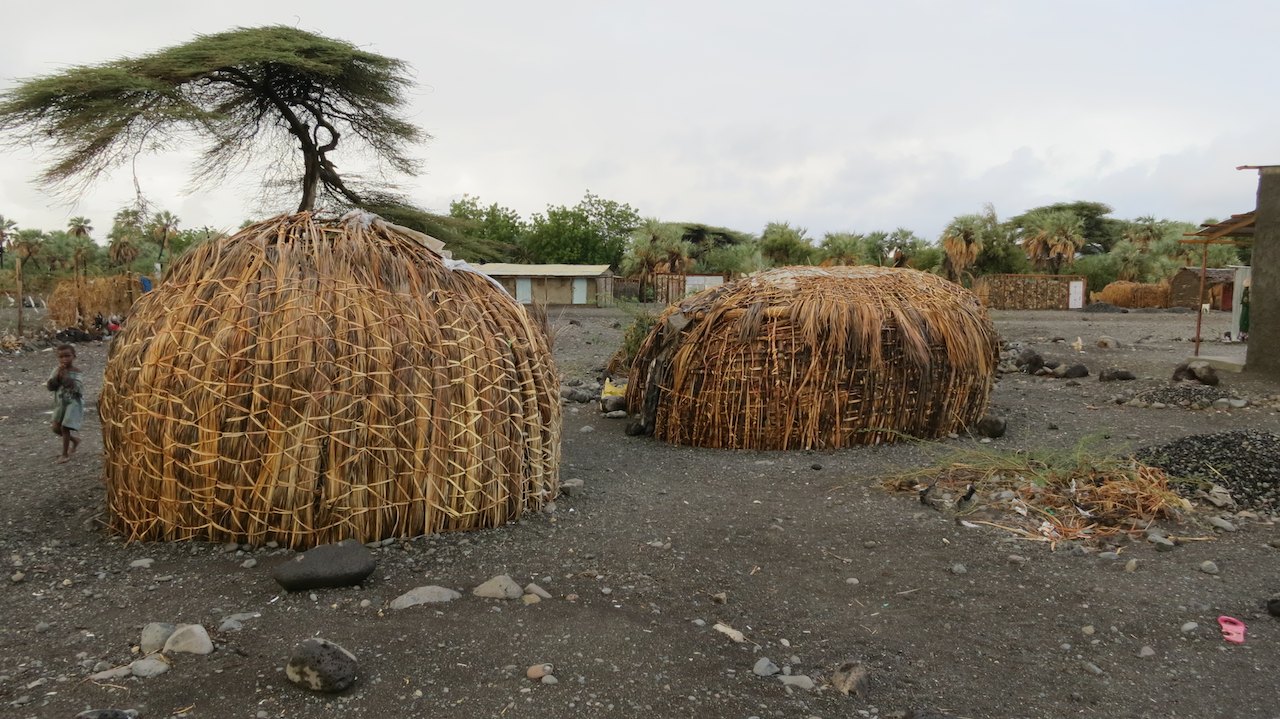
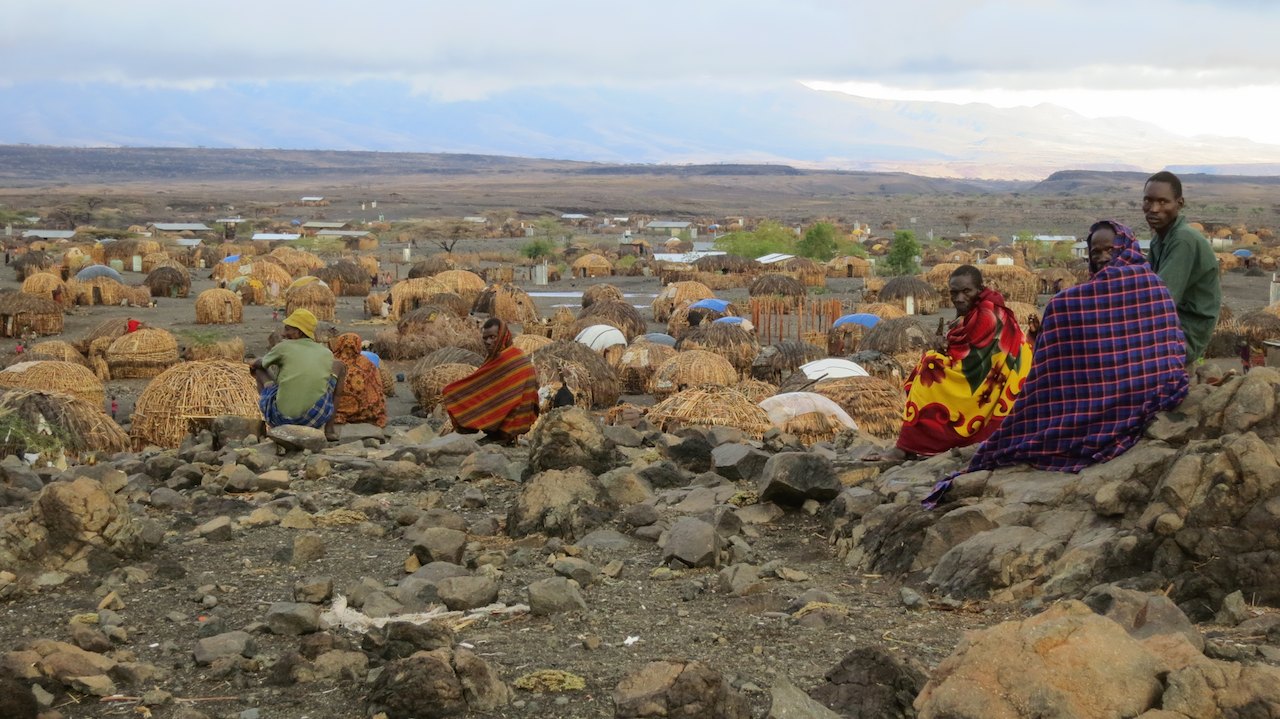
We find a spot on Palm Shade Camp, which has a toilet and a shower which even has water! What a luxury! Just as we want to set up the tent, it starts to rain very hard. The green grass turns into a little swamp. When it is dry, I leave to the village with Pim to do some shopping, while Peter is engaged in the tent. In the street are a dozen small shops where you can get everything you want. In the local grocery store they have lots of things; from matches to floss and from rat poison to spears. And we are lucky because a truck with new stock has just arrived, so we can buy fresh fruit and bread. But we do not cook that night, because we enjoy a delicious three-course meal that is prepared by the cook at the campsite. Soup, curry with rice, fruit and even a cold  ! What a feast.
With new energy we get back on the bikes the next morning. Again we have to wait and see what the rain has done to the road. The manager of the camp site advises us to come back to the campsite when we come across a flowing river and to not cross it. This is to prevent that we get stuck between two rivers. He gives us his phone number and presses us hard to call him in case we encounter any problems along the way. We drive out of the village. As far as the eye can see, we see fields with loose lava rocks. There seems to be a sort of trail over the stones where other cars and trucks have driven. But you cannot call it a ’road’, even though a nice yellow line is drawn on our map.


In the beginning we drive on a flat area with stunning views over the lake. After that we slowly drive into the hills and that is were the trouble begins. The stones are loose and very slippery as a result of the rain. They shoot away under our wheels. As during the previous days, we can not just stop anywhere and we must be very focused on the steep sections to manoeuvre the motorbike over the stones. At some point, I suddenly lie on the ground with my bike next to me. The rear tire had skidded on some loose stones. It did not hurt and the bike was still working, but I did have to find some new energy to get on the bike again.
There are huge trenches in the road in places where the water came from the mountains, flowing into the lake. On the way down, the water carried stones and left deep holes in the ‘road’. Like us, the cars have a hard time on this piece. Several times Jan and Pim have to get out of the car to explore the road before they can drive on. Three times Peter rides both our bikes through a difficult piece, once even by walking alongside the bike. While I am at the top of a long slope gathering courage to drive down, I hear cursing over the intercom and I see Peter bouncing off his motorcycle. Luckily he is OK, just a bruised elbow, a bent brake leaver and a torn strap on one of the bags. Over the intercom I hear him say: “ Stay up there, I will ride your bike down.” Hero! He comes up and drives my bikes down without any problems (slightly slower than the first time though).
We are not even 10km out of Loyangalani, but are both already very tired. It takes a few miles before we finally leave this rotten piece behind us and drive away from the lake into the hills. It is steep and in some parts the corners are made of concrete, which makes it a lot easier to ride up. At the other side of the hills, we ride onto a sandy dirt road. Not like the deep white sand we had before, but dark brown or even red sand that has become really hard from the rain. The average speed goes up and even though it starts raining hard at some point, this is going great. We can relax a bit and let the difficult miles of that morning behind us. For the first time I can even look around are enjoy the scenery. Though I still only see animals after Peter has clearly says; “At your 11 o’clock: two deer.”
We drive on the dirt road until we arrive in South Horr in the afternoon, a little earlier than expected. South Horr is a Samburu village along a wide river where we find a spot on a beautiful campsite. Once the tent has been pitched and our gear is hanging on a line to dry, we walk around the village, look at the Samburu huts and trudge through the now dry riverbed. At the end of the afternoon, we move the chairs together, Jan and Margriet take out snacks and we experience the exciting moments of the morning again.
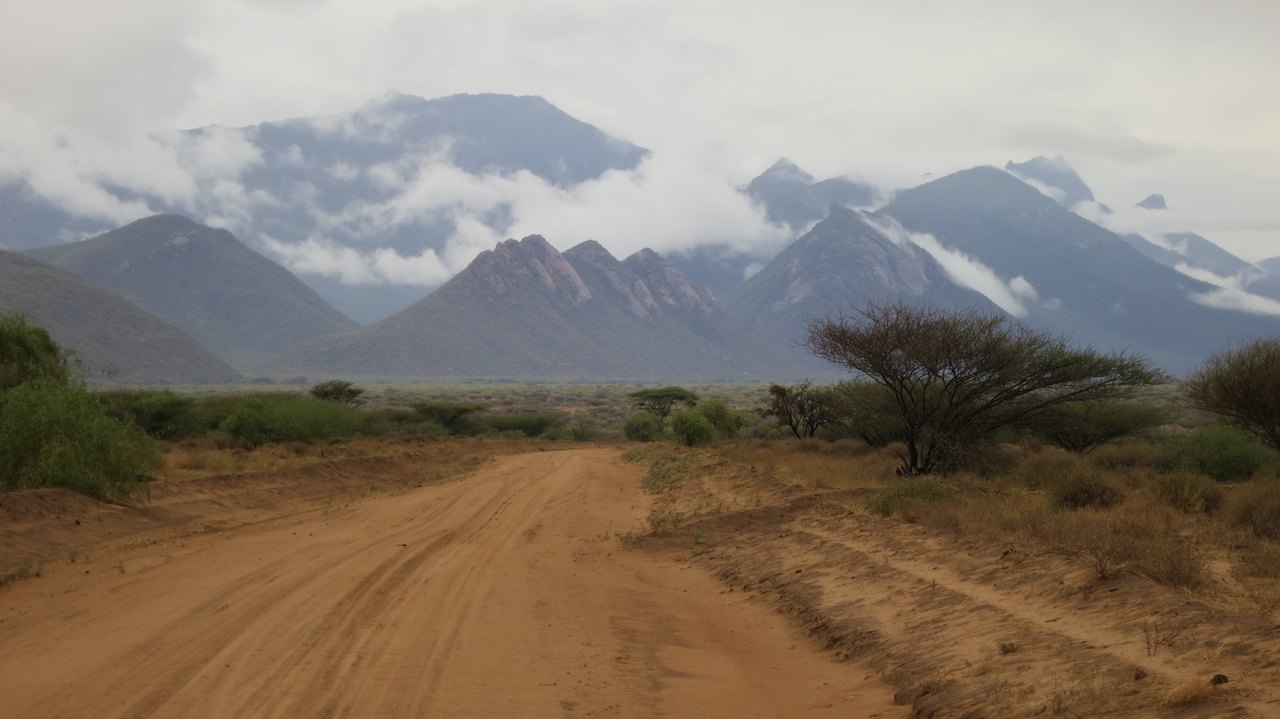
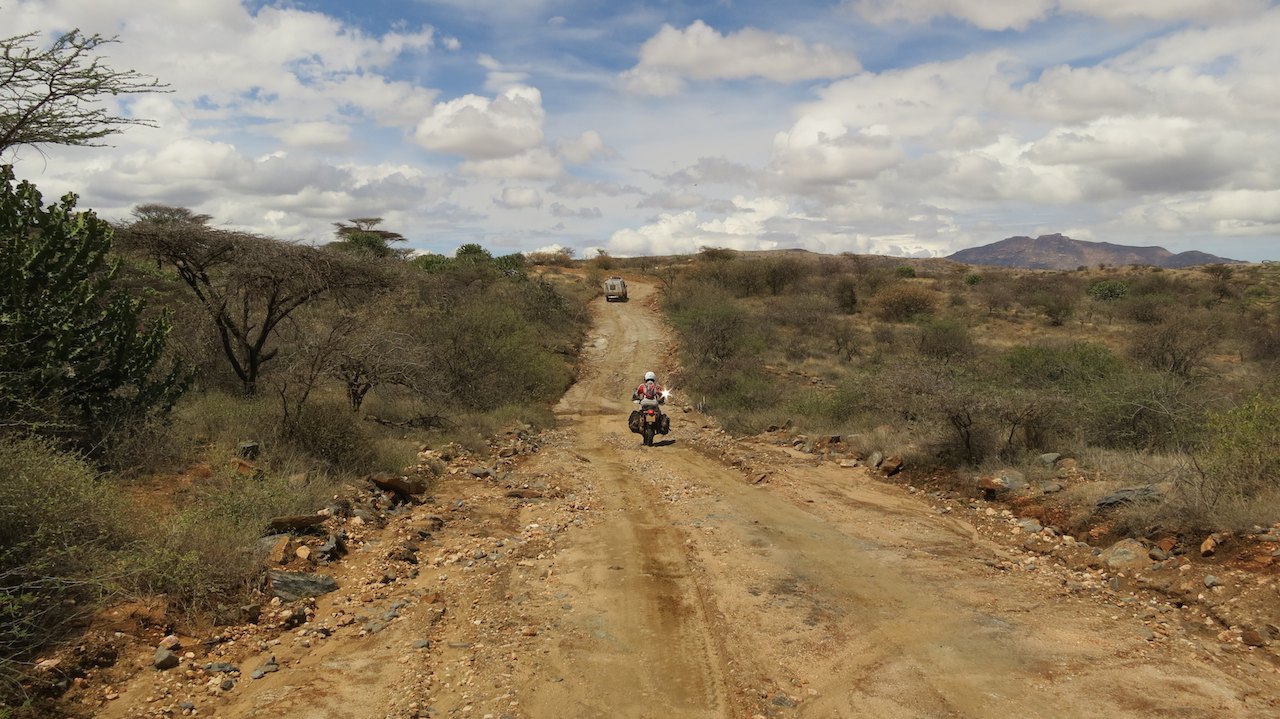
The next morning we continue our way on the hard sandy paths from South Horr to Baragoi. We leave the hills and ride onto a huge savannah. It is beautiful, just like you would know Africa from the BBC documentaries. An area where you would expect giraffes or elephants at any moment. Incredibly beautiful! We take our time to take pictures, to drink coffee and to have lunch. A few hours later we arrive In Baragoi, we do some shopping and then drive on towards Maralal. We find a spot on the Yare Camel Camp. It is our last night as “Dutch Turkana Team”. Jan and Margriet have to go home unexpectedly and will from here take the shortest route to Nairobi from Maralal. We exchange contact details, pictures and films, and wave them goodbye the next morning. Together with Pim we prepare ourselves for the last part of the route, from Maralal to Lake Baringo.
Although we expected that the offroad bit would be over after Maralal, this was not true. We follow a poorly maintained dirt road full of potholes through small villages where not tourists have been for a long time. We drive along a National Park and see our first zebras! Just before Lake Baringo we turn right onto a sandy track. The road is wide at first, but becomes more and more narrow as we continue. The rain has left deep trenches, deep enough to make your motorbike disappear. And as often, the last bit is the hardest. The final (long) kilometres towards the lake are on a ‘road’ through the hills with loose rocks, deep holes and steep sides. Only at the end of the day we see the first glimpse of Lake Baringo on the horizon. Once in the valley, my heart jumps when we finally ride onto an asphalt road in Loruk!
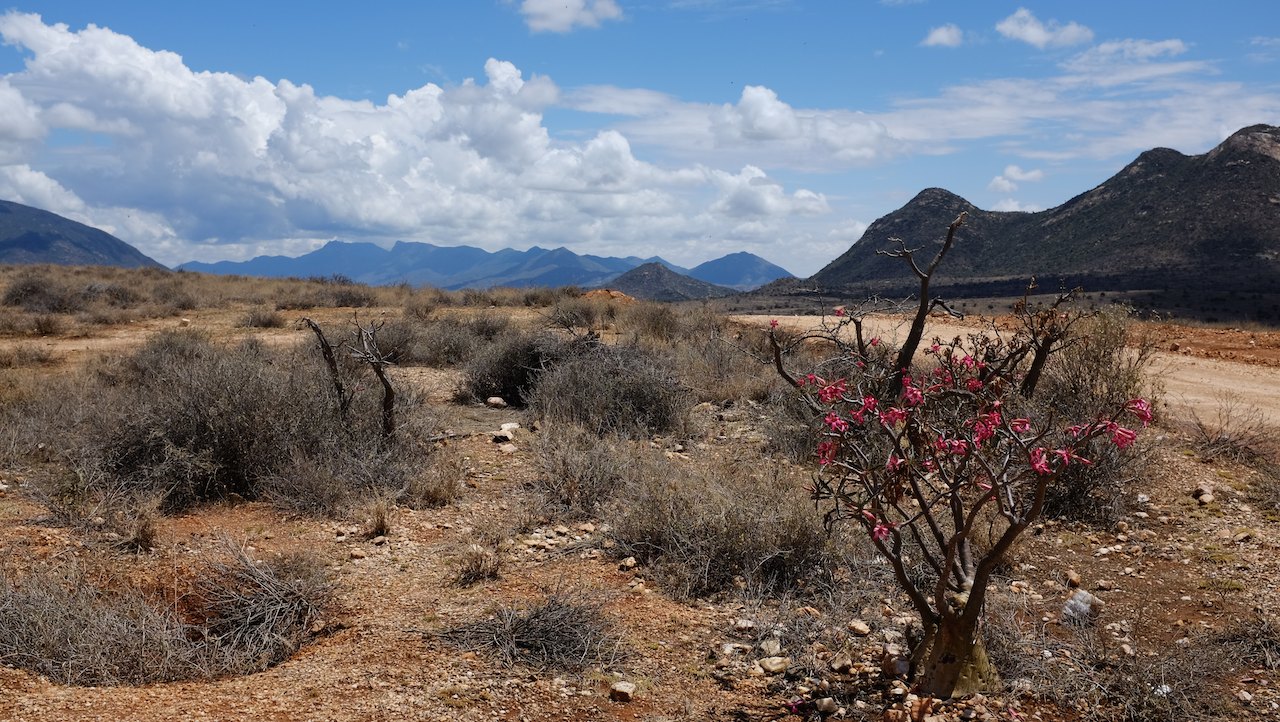

From Woyto in Ethiopia we have then driven 956km offroad. Nearly 1,000 km through a beautiful area, with special people and spectacular scenery. A route that sometimes drove me to despair, but of which I am very happy (and proud) that we took it. The preparations we had made were good, but maybe a bit too much in hindsight. Although there was no fuel station for a long time, we could have obtained fuel anywhere. The same goes for food and water. Perhaps they did not have chocolate paste or snickers, but definitely enough food to finish the route well-fed.
This being said, we were very glad we had extra fuel, water and food with us and had found a companion who was willing to take all this for us. But above all we were happy with the moral support and the company of Jan, Margriet and Pim. Thanks again, also for the liquorice!
Distance travelled to Lake Baringo: 13,590km (8,444miles)
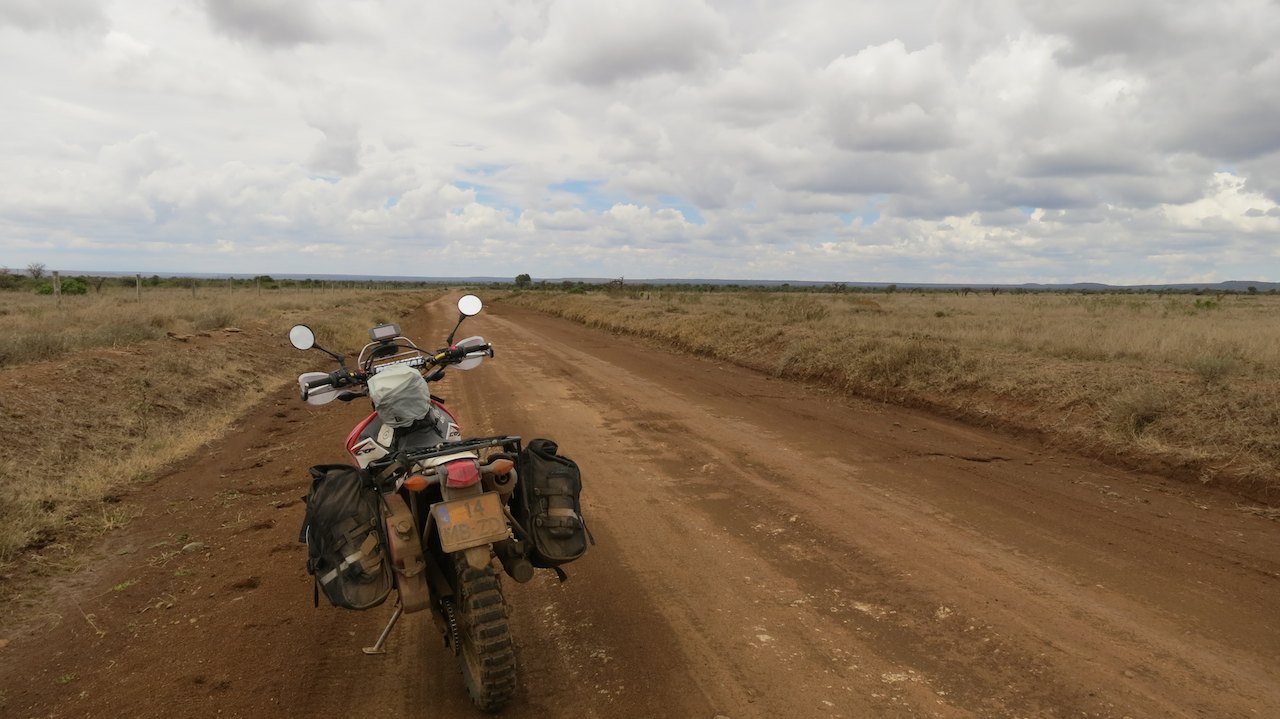
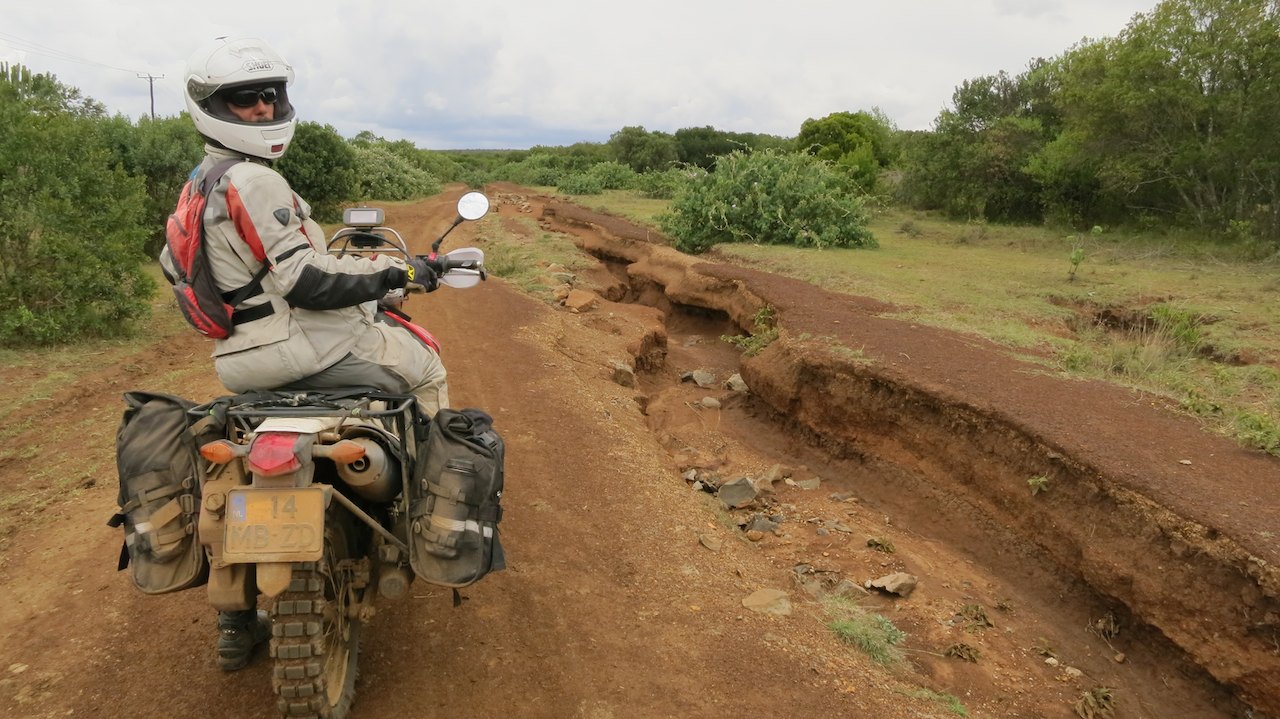
|

22 Feb 2015
|
|
Registered Users
HUBB regular
|
|
Join Date: Feb 2010
Location: Germany
Posts: 22
|
|
Both thumbs up for this ride report and especially the last part!  
Joerg
|

26 Feb 2015
|
 |
Registered Users
Veteran HUBBer
|
|
Join Date: Feb 2011
Location: Polygyros GR
Posts: 558
|
|
Im gonna share this to my fb!! 
Like!! 
|

26 Mar 2015
|
|
Registered Users
HUBB regular
|
|
Join Date: Dec 2009
Location: The Netherlands
Posts: 66
|
|
|
Birdwatching around the equator
At the end of the afternoon we arrive at Robert’s Camp, a beautiful campsite on Lake Baringo. During the trip Peter and I made in 2007 to Kenya and Tanzania (then not as a couple yet), we also visited Robert’s Camp. We both had some good memories of the place: hippos at the campsite, eyes of crocodiles that light up in your flash light, a boat ride on the lake and a nature walk led by Cliff. We wanted to go back again, but now as “lovers”.

We recognize the sign that points us to the entrance of the camp and as we stand at the reception desk we recognize the restaurant “The Thirsty Goat”. But that is the only thing that is still the same, because the whole campsite as we remember it is flooded! The water level of Lake Baringo increased rapidly in the beginning of 2013 with no less than five meters. A huge amount of water when you consider that the lake is 22km long and 11km wide. The former camping field, the toilet blocks and various cottages have disappeared underwater. We see parts of walls or roofs stick out above the water, it is a sad sight. But despite the setback, Robert’s Camp is still open. The restaurant is redone, there is a new toilet block and the former parking lot of the adjacent Lake Baringo Club (which had to close) is transformed into a beautiful campground. So we can pitch our tent, no problem.

After the hardships in Ethiopia and the ride along Lake Turkana, it feels like we have arrived at a luxury resort. There is a thick jet of water coming from the shower, there is toilet paper at the clean toilet, the refrigerator of “The Thirsty Goat” is filled with at least three different types of cold  and they even have a menu full of delicious dishes! With a smile on our faces we join Pim for a cold Tusker and a ‘Spitting Cobra’ pizza. We will definitely stay here for a while!
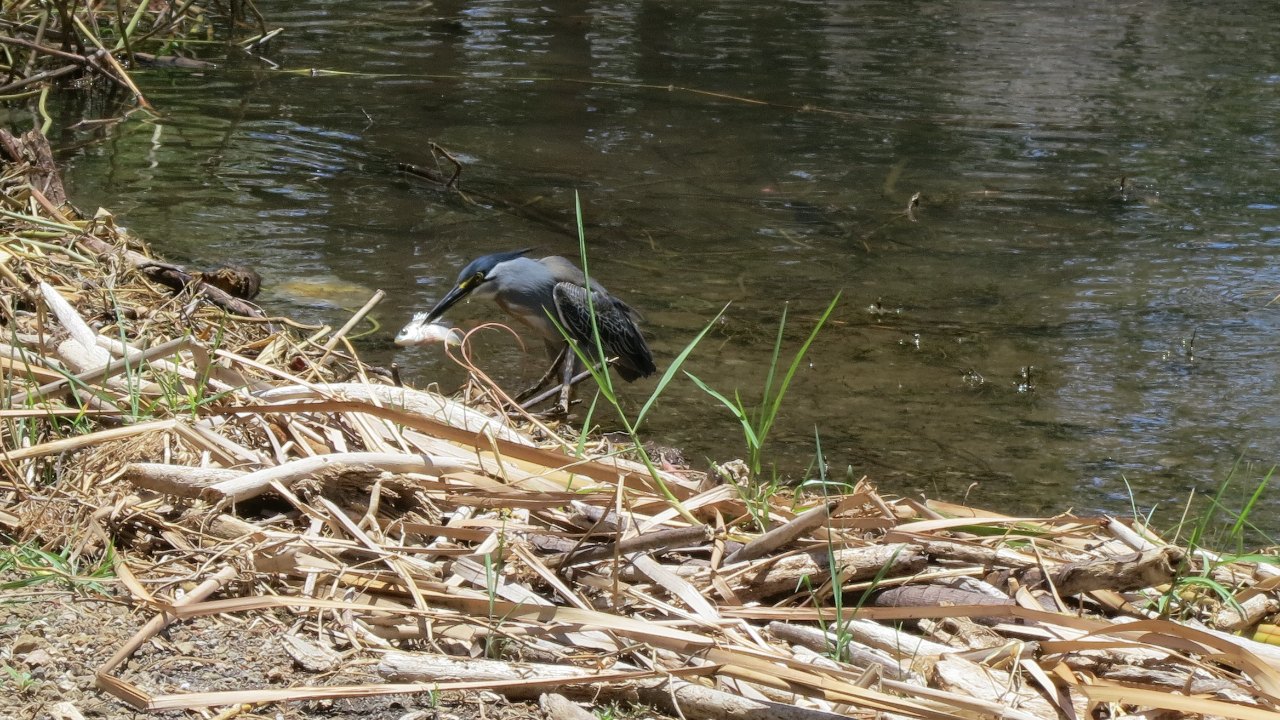
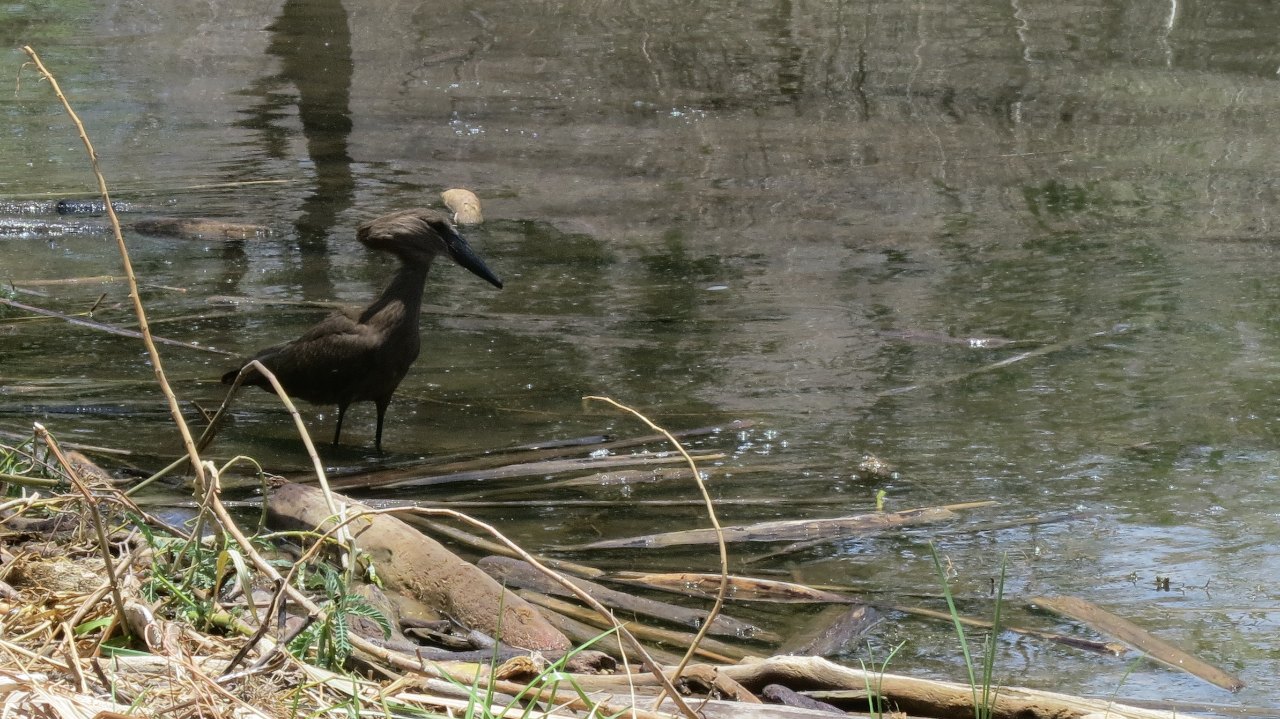
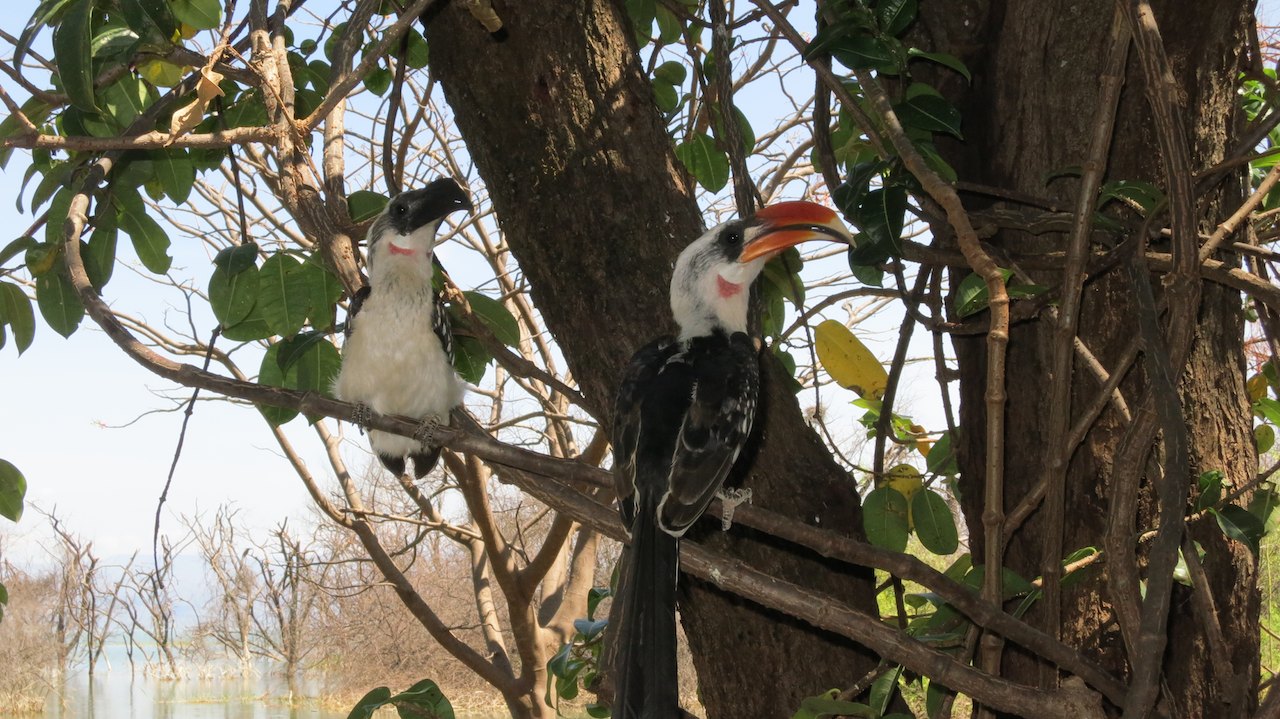
Apart from the increased water level, it is much the same as seven years ago. It is still a beautiful campsite! Not in the last place because of the birds! Around Lake Baringo you can find as many as 400 different birds, 173 of which have been seen at Robert’s Camp. A paradise for ornithologists and also for Peter! With binoculars in his hands, he stares at all the beautiful birds. And it is addictive, because soon after Pim and I are also watching birds. From our armchair we see kingfishers repeatedly take a dip in the water to get a fish. In the bushes small sunbirds buzz from flower to flower, while the sun lights up the colors of their wings. In the waterfront a Hamerkop is looking for fish, while the Striated Heron next to him is trying to swallow the catch of the day. During our breakfast brutal Hornbills try to eat the bread from our plates, while we hear African Fish eagles call each other. If you were not a birdwatcher yet, you will become one here for sure!
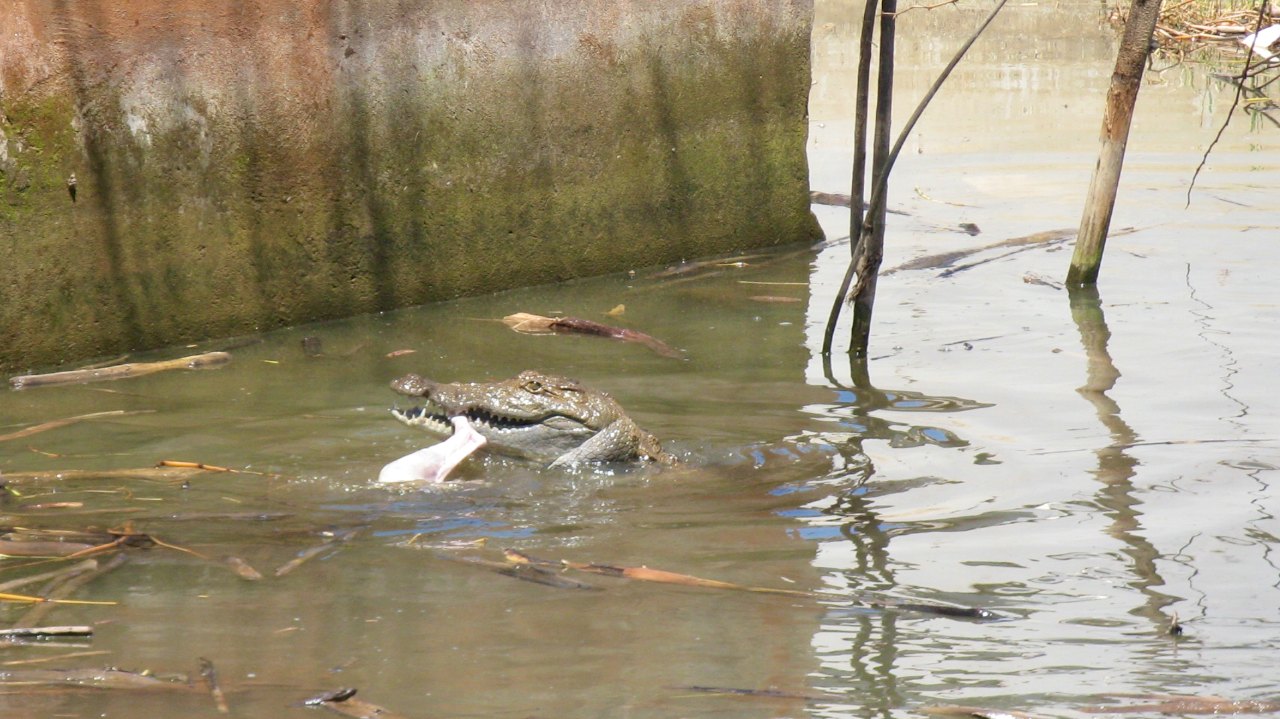
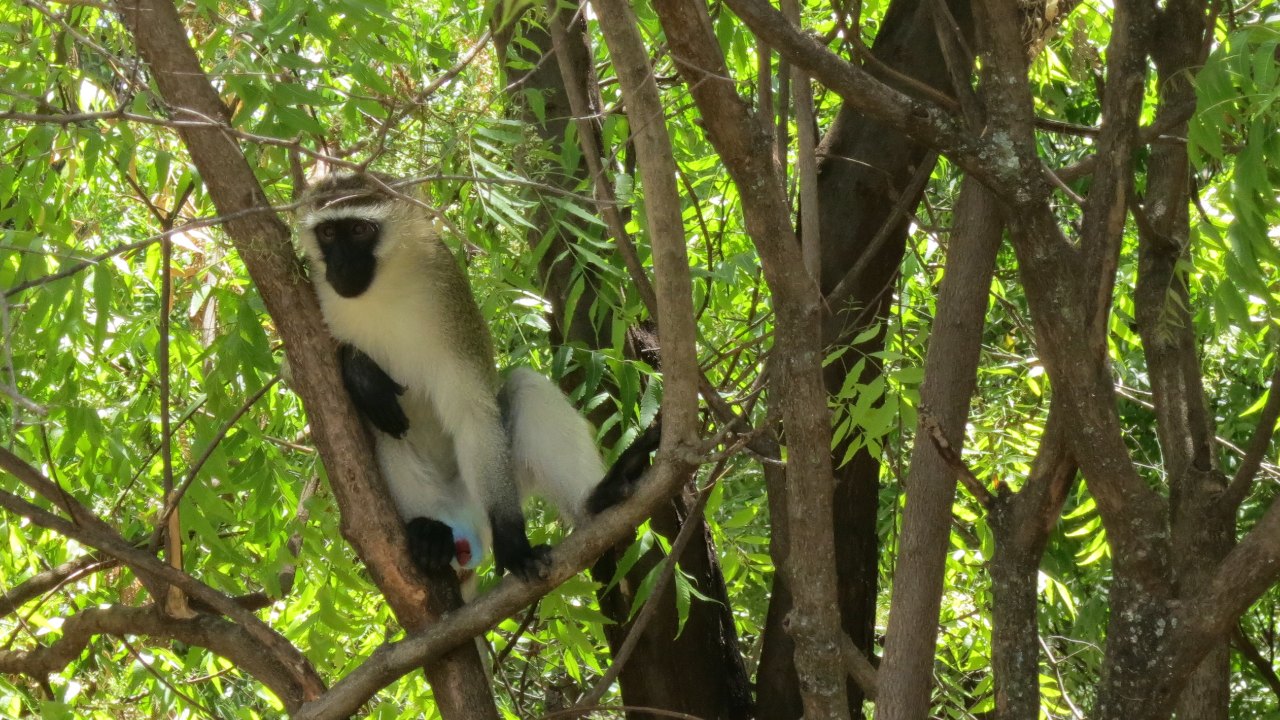

Between all the chirping of the birds we hear the occasional loud and heavy “MWOEHAHAHAHA”. Hippos! In the water in front of the restaurant there is a group of hippos. They only show their backs and big head and flap their ears. Occasionally they disappear completely under water to come out snorting a few minutes later. During the day they stay in the water, but when the sun is down and it starts to get dark, they leave the water to graze during the night. And they do so on the campsite, next to our tent! After some splashing, steps in the mud and rustling bushes, we hear them eating grass just beside us. It sounds just like a cow. From the tent we see them getting closer, they would almost trip over the ropes of our tent! We sit up to watch the hippos, sometimes four at a time, scurrying around our tent. Every night they come out again, fantastic!

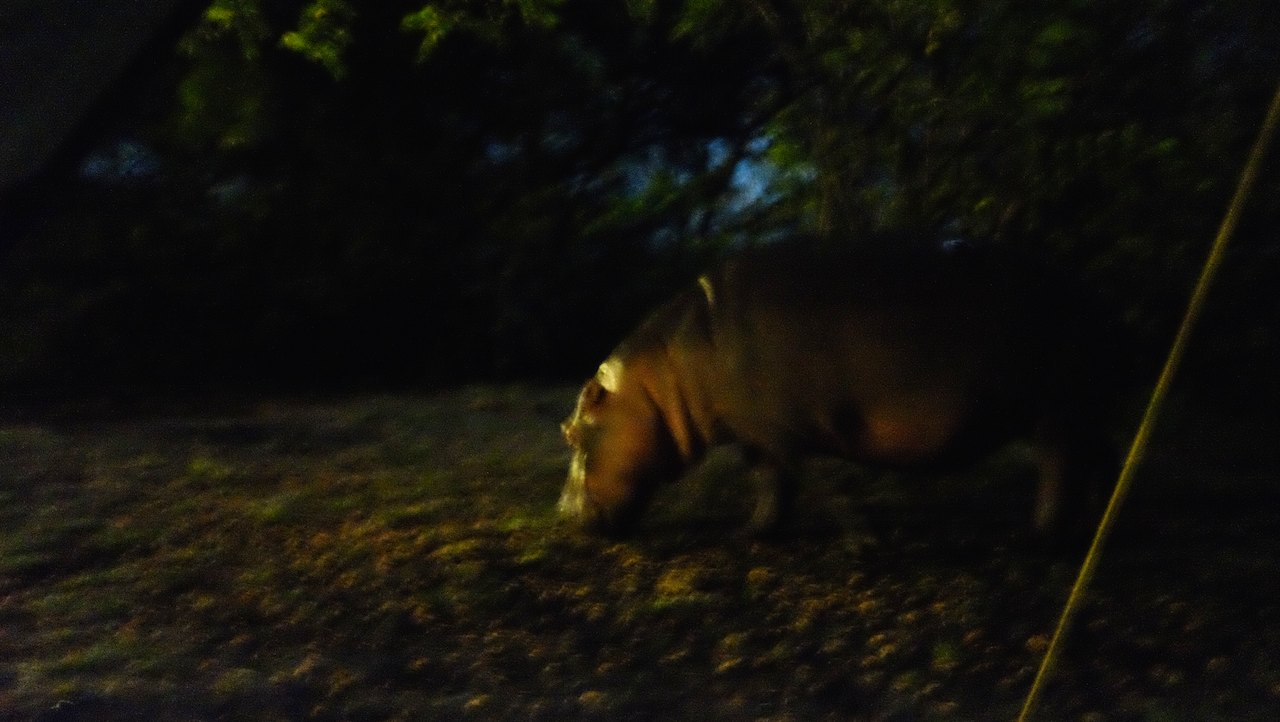
We just need to be careful when we go to the toilet in the dark, because hippos are very dangerous. They kill more people every year than lions! Despite their heavy body, they can run fast and if you are between the hippo and the water they can run you over on their way to the water. And with their big mouth and sharp teeth they can seriously injure or even kill you. As long as we stay in our tent when they are grazing it is fine. It definitely gives the feeling that we are in Africa! Just like when we saw from the restaurant at the campsite how a crocodile ate a goat, when the monkeys stole our cookies and when the lady in the kitchen started screaming when she found a snake on her kitchen counter…..
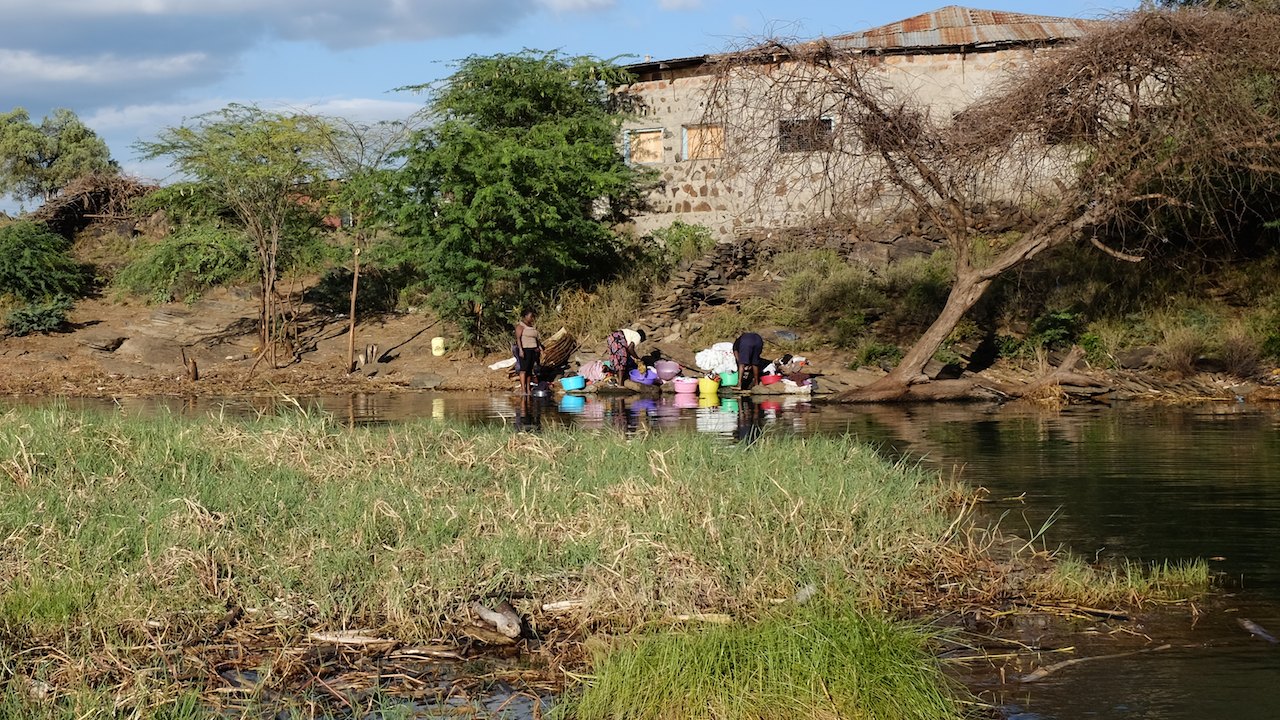
Like seven years ago, we take a boat trip to see the area and the birds. And all under the guidance of … Cliff, the same guide we had in 2007! He is an ornithologist and does not need a book to recognize birds, one chirp is enough for him. As we walk to the boat he points us to one bird after another. He even manages to have an owl answer to his lure after which we can find the little creature high up in the tree.
The boat trip is super. It is still early and the light is beautiful. Cliff shows us lots of new birds. We see crocodiles warm up in the morning, while less than 15 meter away the ladies from the village are doing their laundry. From the boat we can see how much damage the rising water has caused and how many buildings have disappeared under the water. Not only hotels and our campsite, but also the local fish factory, a school and several houses. It has only been a year since the flooding, but it has already had a devastating effect on the buildings. The animals have adapted much faster than the inhabitants of the village. The crocodiles lurk in the former hotel rooms, the hippos waddle across the floor of the restaurant and the birds have built a nest in the reception.
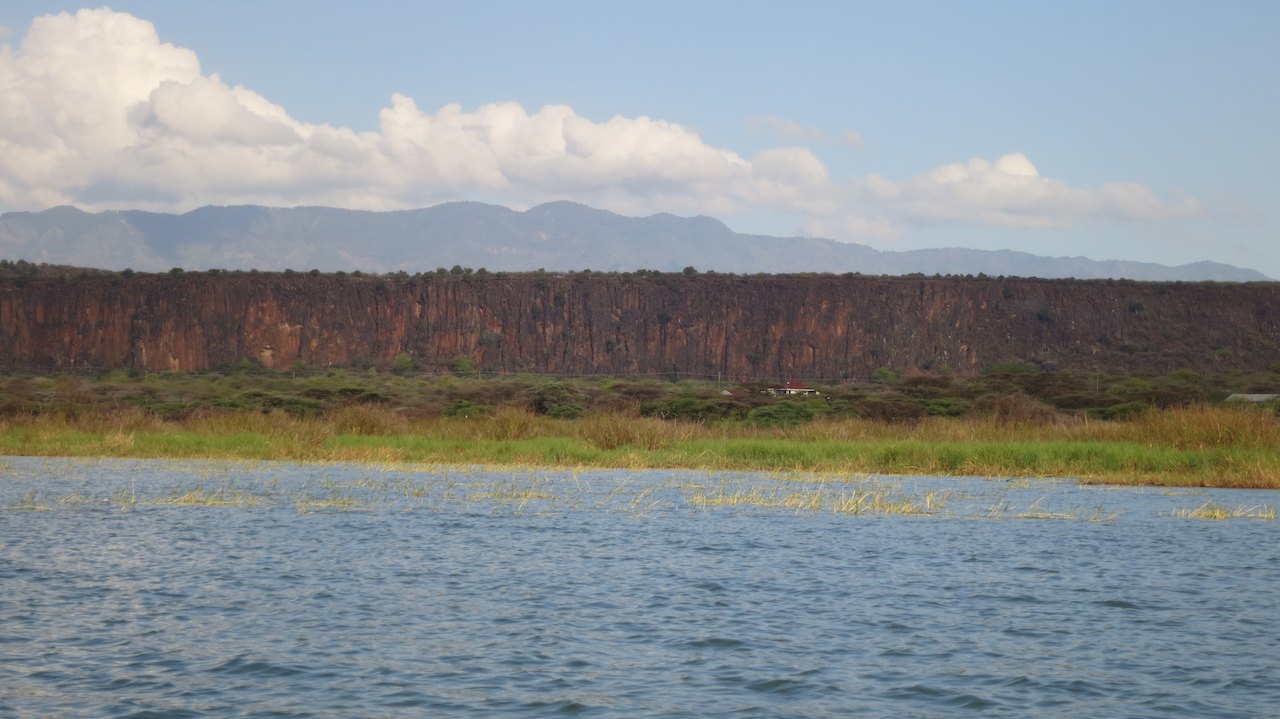

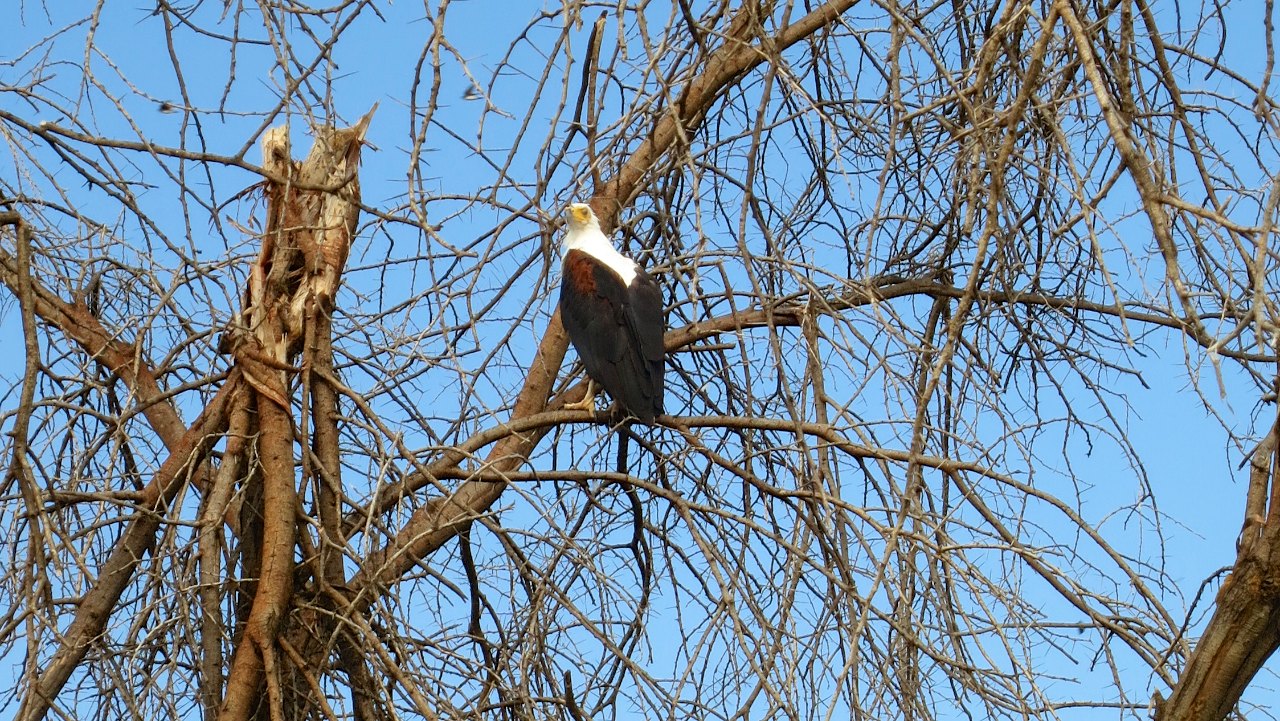
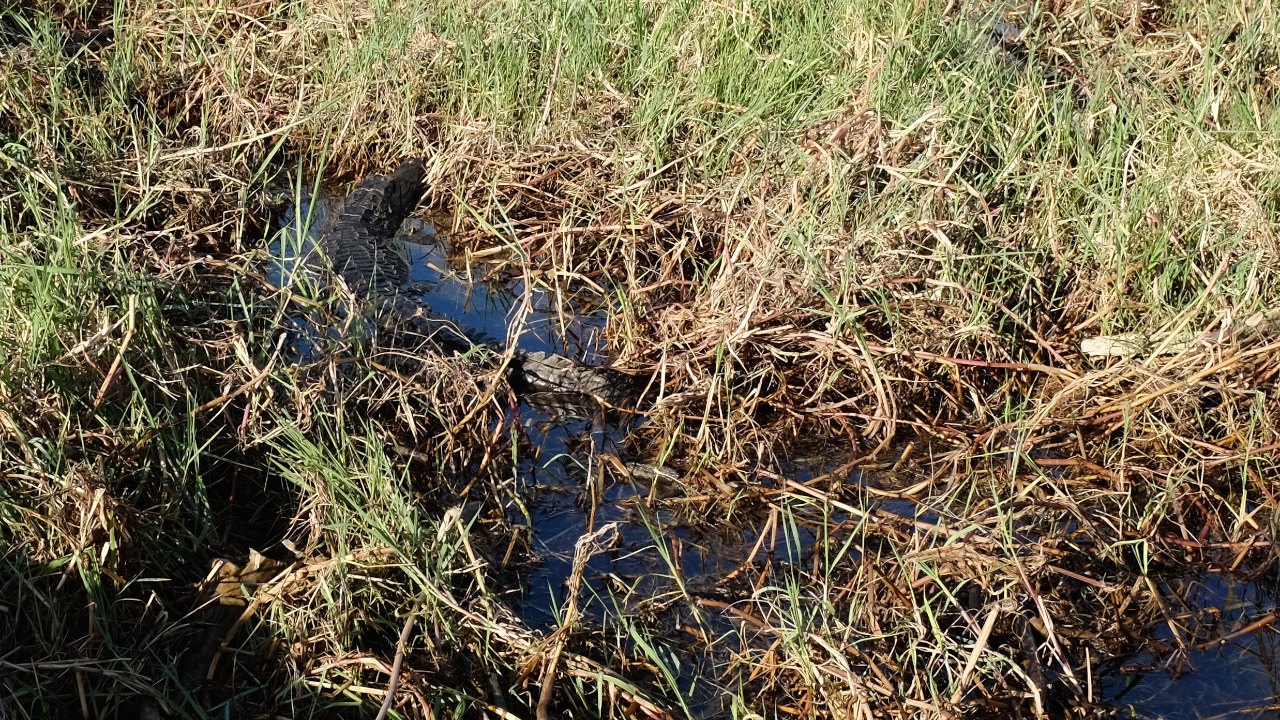
Lake Baringo is one of the many lakes in the Great Rift Valley. This valley runs from Syria to Mozambique and is formed by plates of the earth that are slowly drifting apart. In the valley are some very deep lakes of which we have already seen a number (like Lake Abayo, Lake Awassa and Lake Turkana). From the boat we can see that Lake Baringo is also situated in the valley, with cliffs on both sides. That same afternoon, our guide named Cliff takes us for a walk to the edge of the valley. We climb the cliff and have a beautiful view over the lake and the steep wall on the other side of the valley. On the way there we see ostriches, scorpions, snakes and again a lot of birds.
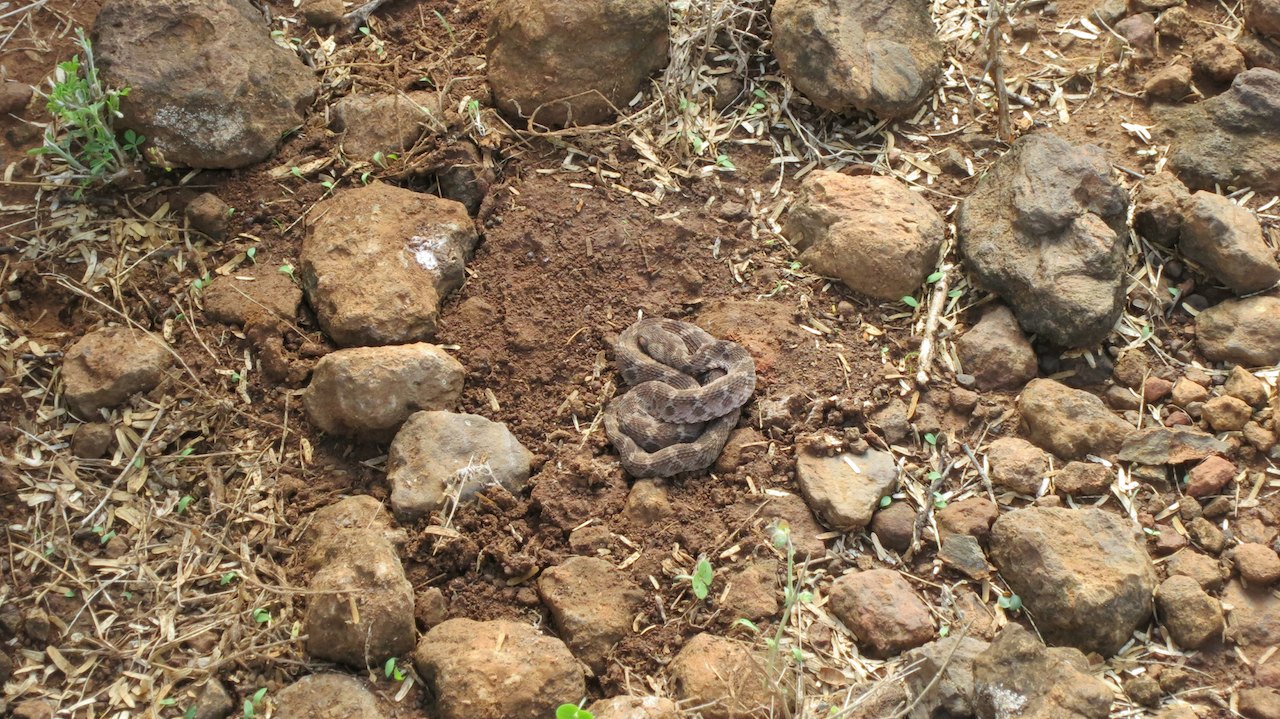
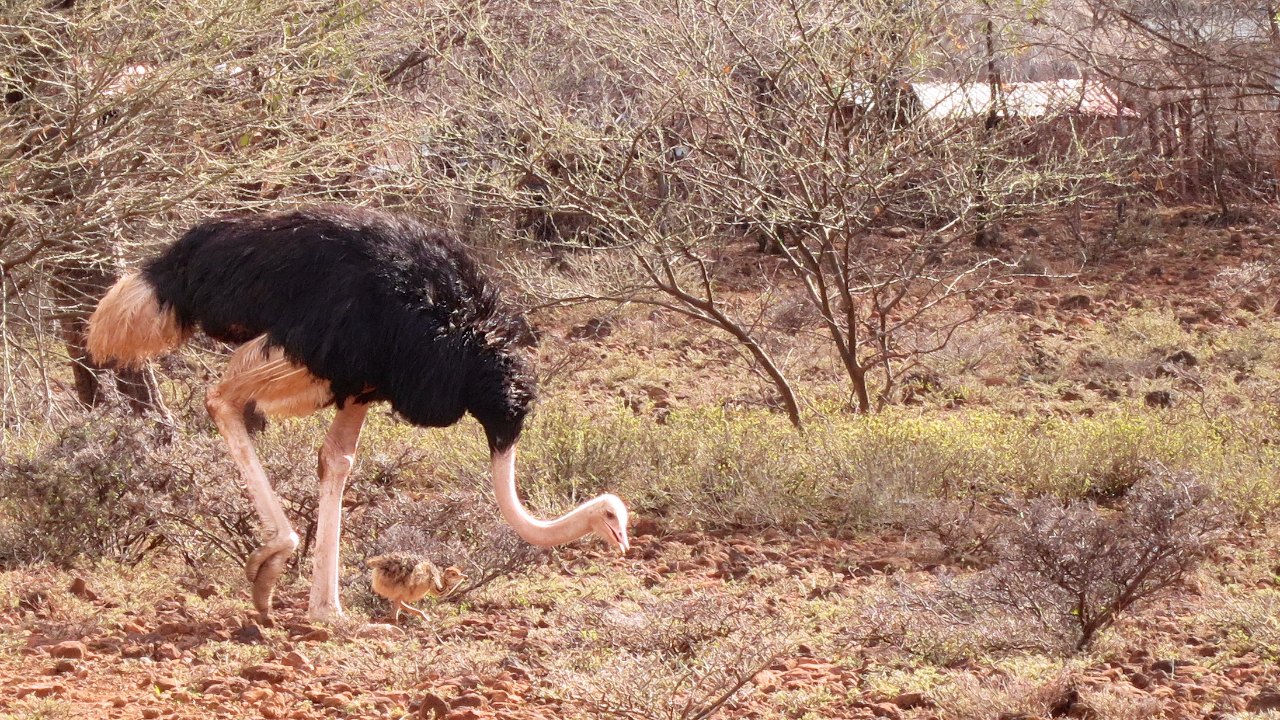
We enjoy a little vacation at Robert’s Camp and end up staying more than a week. We eat more “spitting cobra pizzas”, but also enjoy the seafood platter which Big Mama Brenda prepares for us. We trudge through the village to the luxurious Soi Lodge for a swim and to use their Internet. We go shopping in the village and cook pasta or rice together with Pim. We pick up some Swahili and talk with the people in the village. We take plenty of time to drink coffee, read a book, work on the bikes or the blog and settle down every night in the cozy chairs at “The Thirsty Goat” for a drink. Great!
And as that happens when you stay in one place for a long time, we again meet some great people. We meet Michaela, Timm and their four children from Germany. During a trip through Africa with their daughter, they got ’stuck’ (by choice) in South Africa. They built a house there, started a business, had three more children and lived in Cape Town for over five years. When we meet them they are heading back to Germany to live there a few years. They travel in a super tough Landrover with a trailer and even a quad on top of the trailer. On the roof of the car is a huge roof tent where they sleep all six of them. Wonderful people and certainly a huge inspiration to know that traveling does not have to end when you have children.
A few days after the German family left, another Landrover parks at the campsite. Two friends, Belgian Steve and Dutchman Pieter, take a trip through -as they themselves say- the ‘easy countries of Africa’. From South Africa they have now reached their most northern point in Kenya and will ride south again through Tanzania and Malawi. Trendy guys, that -to my slight surprise- turn out to be fanatical birdwatchers. Armed with a large lens on their photo camera and two thick books about birds, they stare at the trees around them. Only when we look at their bird books, we see just how many yellow-and-black birds there actually are. Even with the book it is quite difficult to find the right one. But searching for the right bird makes it a fun challenge! We do not have space for a bird book, but we do find a great app for the iPad with all the East African Birds. This makes it even more fun!
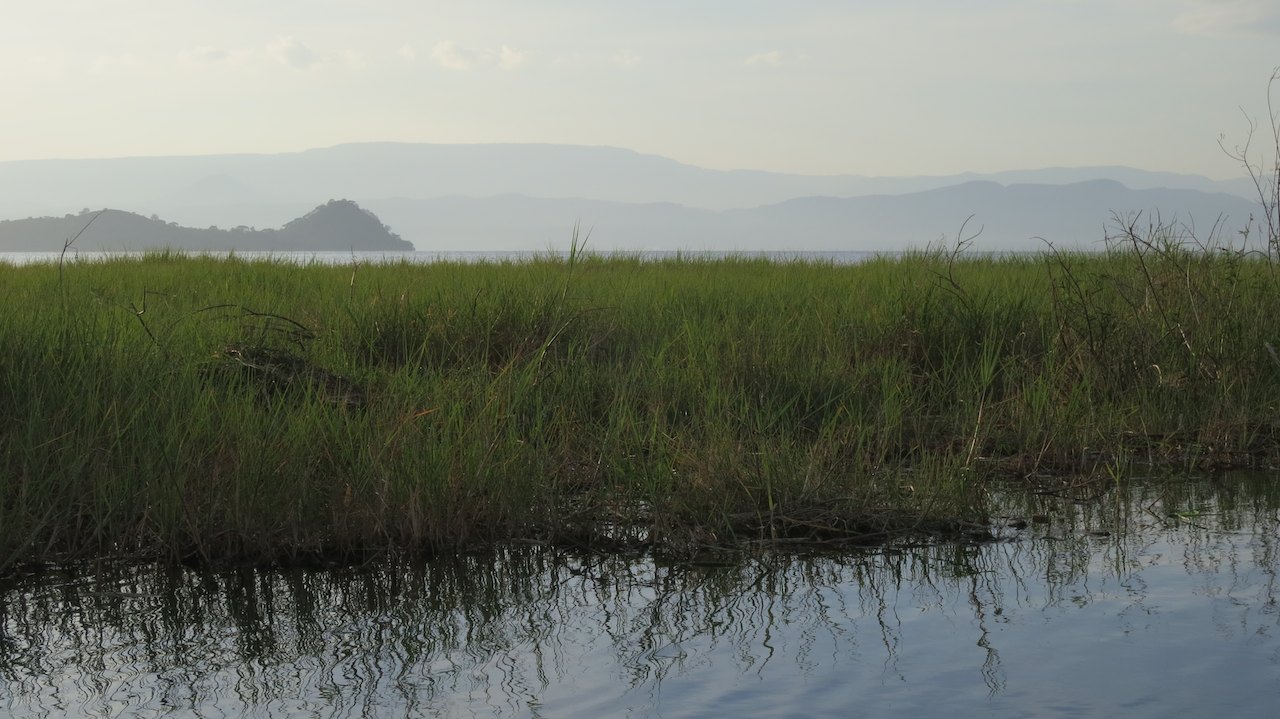

Along with Pieter, Steve and Pim we take another boat trip with Cliff to see birds, but also just to enjoy the amazing views. I could do this every day, I love it! Cliff buys fish from a local fisherman to feed to the African Fish eagle. With a piece of wood in the fish, the fish floats in the water. Cliff calls the eagle, that comes flying from a great distance and grabs the fish out of the water with his big claws. On the boat the cameras are clicking. Steve makes beautiful pictures with his large camera lens.
After 10 days, we pack our stuff again. Although I could have stayed for another month at Robert’s Camp, it is time to move on and to visit other parts of Kenya. The manager seems to agree: “Are you leaving? Finally!”, he says with a smile on his face.
Together with Pim we drive further south passed Lake Nakuru in the direction of Lake Naivasha. Halfway we suddenly see a big yellow sign on the side of the road: “You are now approaching the equator.” The equator! That is quit something. Here we are, riding on our own motorbikes from the northern to the southern hemisphere. Very cool! We stop and park our bikes at the equator to take a pictures of this moment for our future grandchildren.
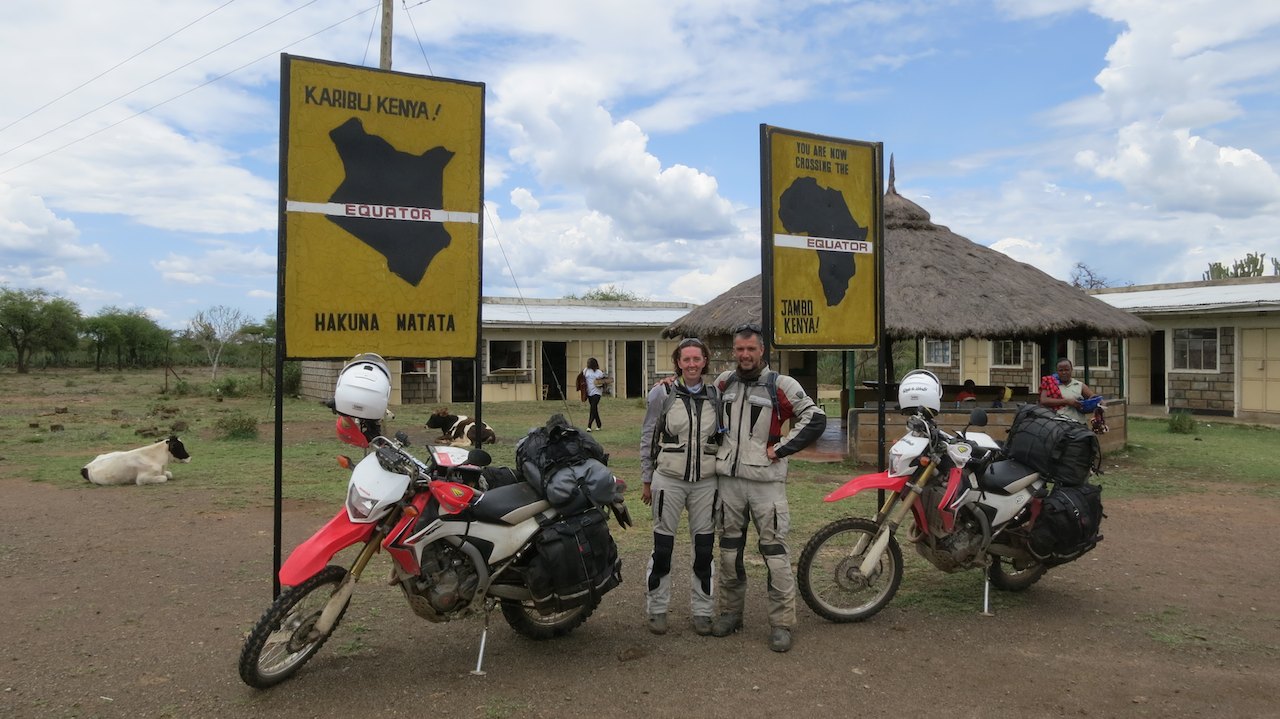
At Lake Naivasha we pitch our tent at Carnelly’s between the roof tent of Pim on one side and the roof tent of Pieter and Steve on the other side. It is a beautiful campsite on the edge of the lake, where again many birds can be found. If we take a stroll around the camp we see a Crested Eagle, pelicans, more African fish eagles, Marabou storks, a Giant Kingfisher and cute little lovebirds. High up in the trees Colobus monkeys are jumping from one branch to another, their long black and white tails swaying behind them. The next day we do not get on the motorbikes, but on two bicycles! We go to Hell’s Gate National Park, one of the few parks in Kenya where you can walk or cycle. Along with Pim, Peter and I make our way up the hills to the entrance of the park. Our condition is not really improved after four months of sitting on the bike, so we are both panting when we buy our tickets. And then our bike ride through the park has yet to begin, that is promising.

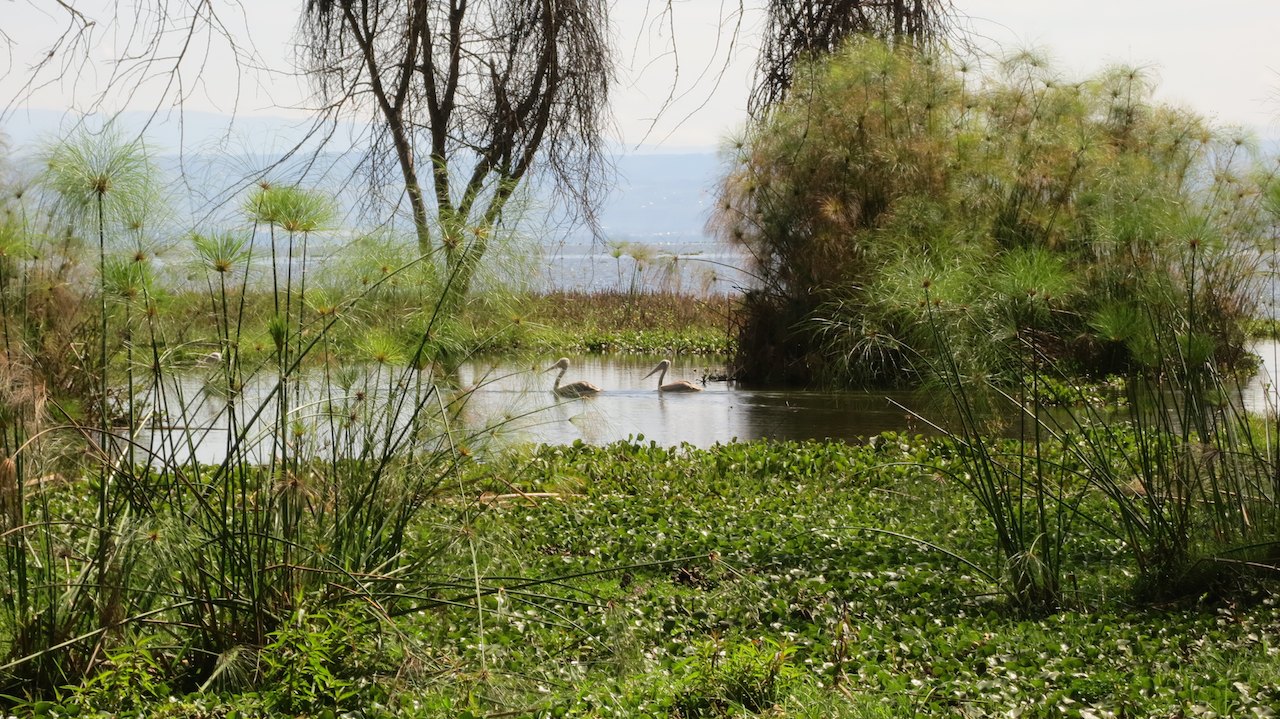
But once inside the park, we ride onto a large open area and cycle slowly down. There is some sunshine and a breeze, perfect weather for a ride on these bikes! From the saddle of our bicycles we see all sorts of wildlife: zebras, buffaloes, giraffes, antelopes and warthogs. Really great! And yet a bit exciting because there is a chance that we encounter lions and elephants. We cycle slowly through the park, stopping frequently for photos or just looking at the animals using our binoculars.


At the beginning of the afternoon we park our bicycles and climb into the gorge at the other side of the park. We follow a local boy who has offered to be our guide. The water has carved out the sides of the gorge beautifully.
Across the gorge are warnings of “Flash Floods”, a tidal wave that suddenly runs through the now dry gorge when it rains. At various places emergency exits have been constructed, where you can climb out of the gorge with the help of a rope ladder. In itself, we did not pay much attention to it, until we hear the rumbling in the distance and it suddenly starts to rain very heavy. We follow our ‘guide’ to the first emergency exit and shelter under the roof of a souvenir stall. Once the rains stops, we get back on our bicycles to go to the campsite. Halfway it starts to rain really heavy again. Like wet kittens and with a sore bum we arrive at the campsite in the late afternoon. With long trousers, a thick sweater and warm socks we join Pieter, Steve and Pim for dinner and we toast to a very nice day.
Tomorrow we move on, to Nairobi.
Distance travelled to Lake Naivasha: 13,798km (8,576 miles)
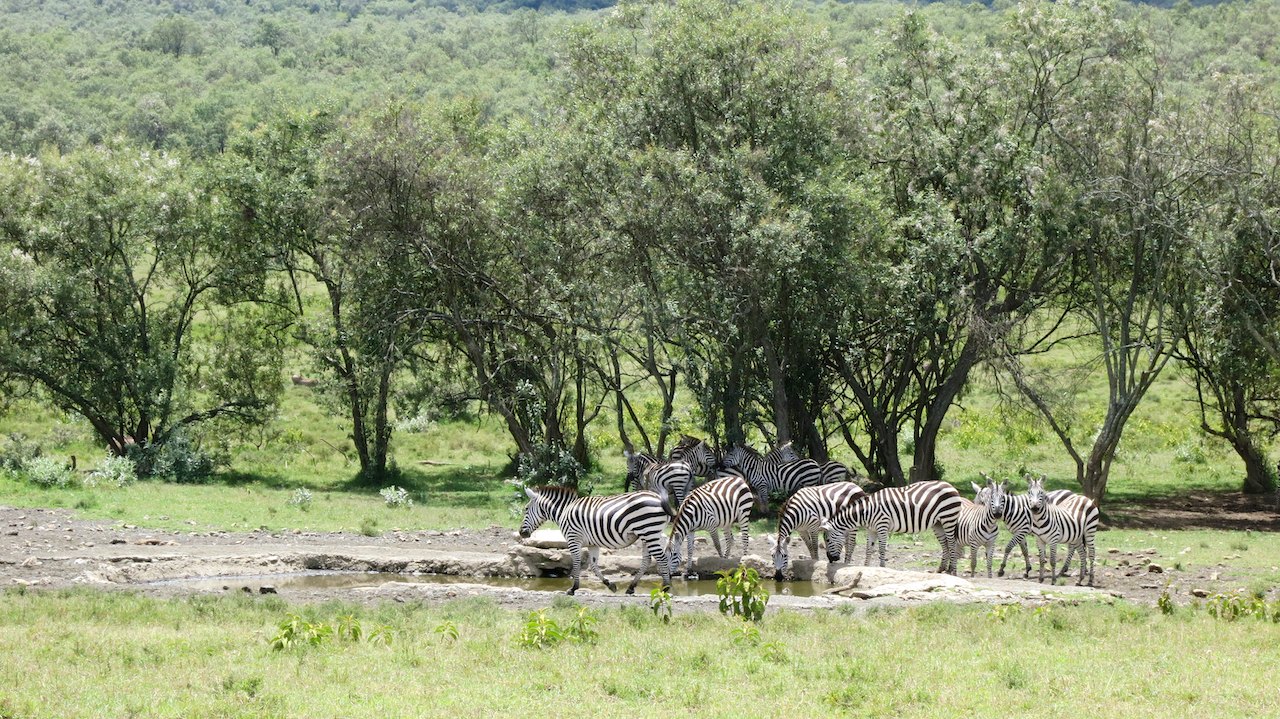
PS : For those who also love birds hereby a list of all the birds we have spotted until Laka Naivasha: African Darter, Common Squacco Heron, Striated Heron, Great Egret, Goliath Heron, Purple Heron, Intermediate Egret, Hamerkop, Yellow-billed Stork, Marabou Stork, Sacred Ibis, Hadada Ibis, Greater Flamingo, Egyptian Goose, Black Kite, African Fish Eagle, Osprey, Long-crested Eagle, Black Crake, African Jacana, Common Sandpiper, Gull-billed Tern, White-winged Tern, African Mourning Dove, Brown Parrot, Fischer’s Lovebird, White-bellied Go-away-bird, White-browed Coucal, African Scops-Owl, Verreaux’s Eagle-Owl, Pearl-spotted Owlet, Speckled Mousebird, Pied Kingfisher, Giant Kingfisher, Woodland Kingfisher, Malachite Kingfisher, Blue-cheeked Bee-eater, Northern Carmine Bee-eater, Lilac-breasted Roller, Green Wood-hoopoe, Red-billed Hornbill, Jackson’s Hornbill, Hemprich’s Hornbill, Cardinal Woodpecker, Banded Martin, Yellow Wagtail, Common Bulbul, Spotted Morning-Thrush, Lead-coloured Flycatcher, African Paradise-flycatcher, Mouse-coloured Penduline-Tit, Hunter’s Sunbird, Beautiful Sunbird, Brubru, Fork-tailed Drongo, White-headed Buffalo-Weaver, White-billed Buffalo-Weaver, White-browed Sparrow-Weaver, Black-headed Weaver, Northern Masked Weaver, Black-headed Weaver, Golden-backed Weaver, African Black-headed Oriole, Long-tailed Cormorant, Great Cormorant, Greater Flamingo, Pink-backed Pelican, Red-winged Starling, Bristle-crowned Starling, Rüppell’s Long-tailed Starling, Greater Blue-eared Starling, Superb Starling, Parrot-billed Sparrow, Rufous Chatterer, Northern White-crowned Shrike, White-fronted Bee-eater, Augur Buzzard, Verreaux’s Eagle, Lammergeier, Eurasian Hoopoe, Common Ostrich, Trumpeter Hornbill, Vulturine Guineafowl, Red-cheeked Cordon-bleu, African Firefinch en de Tropical Boubou!
|

27 Mar 2015
|
|
Registered Users
HUBB regular
|
|
Join Date: Dec 2009
Location: The Netherlands
Posts: 66
|
|
|
Brown bread and Dutch cheese
A night out on the town with friends, watching our favourite Dutch talk show, visit to a beauty salon for a pedicure, lunch in town with the girls, swimming laps in the pool, a cup of coffee on the lounger in the garden, a large double bed with crisp white sheets and brown bread with Dutch cheese.That does not sound like a motorcycle trip through Africa where most nights are spent in a tent. Yet we had all of this and more when we visited our good friends Wouter and Agnes in Nairobi!
From Lake Naivasha we drive on a busy main road towards Nairobi. At first we ride through the Great Rift Valley, but at the end of the morning the road winds up along the steep cliffs at the edge of the valley. Heavy lorries have difficulty reaching the top. The road becomes a two-lane highway that leads through the outskirts of Nairobi. As we drive further into the city, it is getting busier with many cars, ‘matatus’ (minibuses) and ’boda-boda’s’ (motorcycle taxis). We follow the GPS that leads us further into the city until we reach a beautiful green neighbourhood and stop in front of the home of our friends. A beautiful bungalow in a large walled garden with tall avocado trees, tropical birds and two tortoises that scavenge the garden. A beautiful place and a true oasis in the busy city.
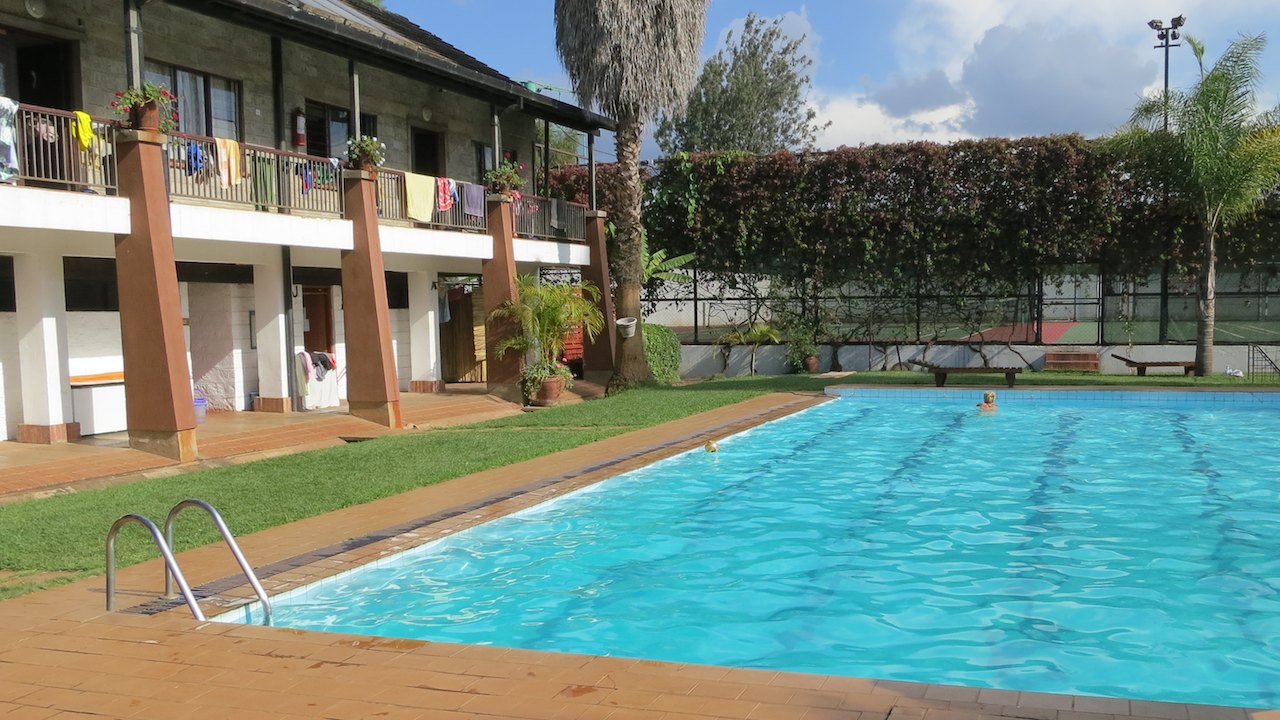
It is very nice to see our friends again after such a long time and to hear about their live in Kenya. We join for a late lunch with juice, eggs and freshly baked brown bread with Dutch chocolate sprinkles and even Dutch cheese! As Dutchies we really miss our sandwich with Dutch cheese, so this is a real treat. It tastes heavenly! The next day I join two friends of Agnes to surprise her with a lunch in the city and a pedicure. All this to celebrate her maternity leave now she is eight months pregnant. At the end of the morning we step into a bright pink beauty parlour. With soft feet and pink toenails we leave an hour later to enjoy a delicious lunch with salad, fresh mint tea and chocolate cake. After four months on the motorbikes with mostly men around me, it is great to get pink nails and be in town with the girls and chat about typical women stuff!
And after my afternoon with the girls, Peter also gets his night out with the men. They visit a Kenyan kick boxing match. A great evening with burgers,  and lots of flashy shows.
We end up staying a few days with our friends. We sleep in the delightful guest bed, play in the garden with Seth, enjoy the swimming pool of the Dutch school, watch the Dutch news and our favourite Dutch talk show, go out for a lovely dinner, talk endlessly about our trip, their life in Kenya and plans for the future and enjoy more brown bread with Dutch cheese. Wonderful days on which we look back with great pleasure!
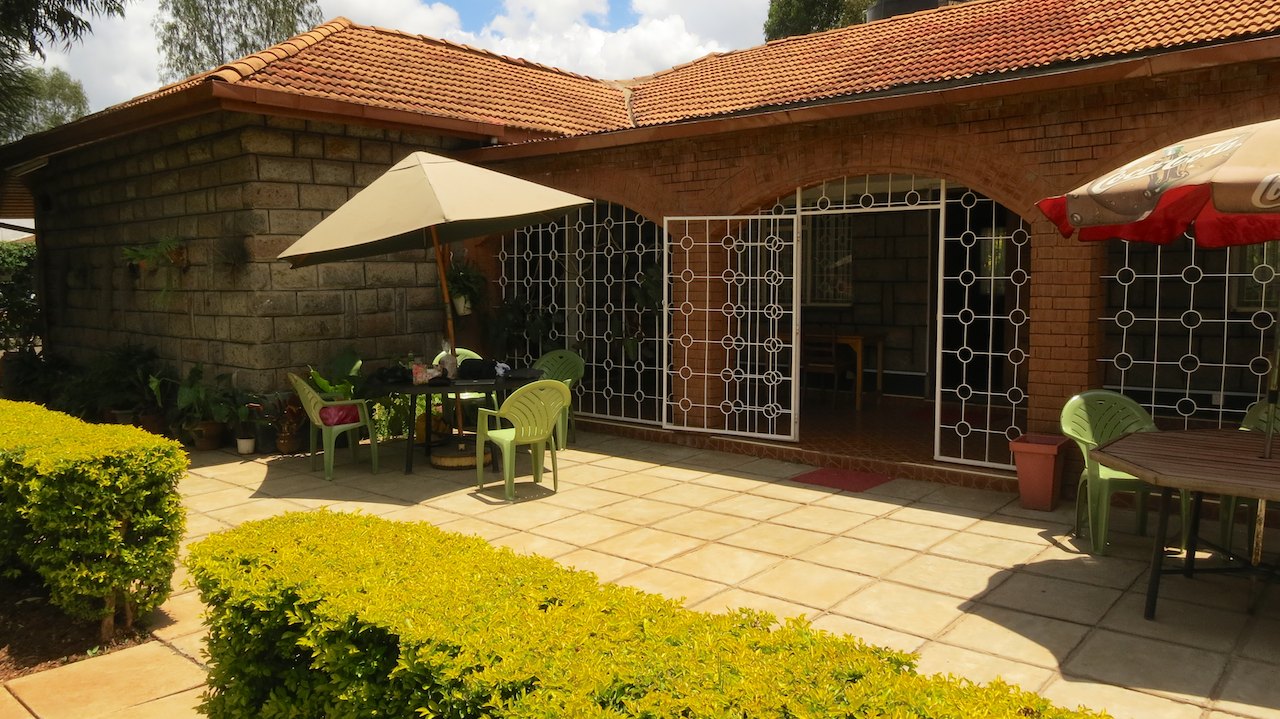
On one of the days we were at their place, we went to the centre of Nairobi to the headquarters of Kenyan customs to get a stamp in our passports. We are now more than three weeks in Kenya, so it is about time. Driving in a big city is not our favourite activity, but for a stamp we will have to. Well after the morning rush hour, we arrive at the business district of Nairobi. A long row of buses, matatus and cars is waiting for a green traffic light. Despite the green light, there is no movement, traffic is stuck. Just until the light turns red. At that time the line of cars in front of us suddenly begins to move. This is odd. We ride along with the crowd, ignoring the red light in a very Kenyan way and driving to a roundabout. Then it appears that the traffic lights are mainly hanging in the city as decoration, because the traffic is controlled by police.
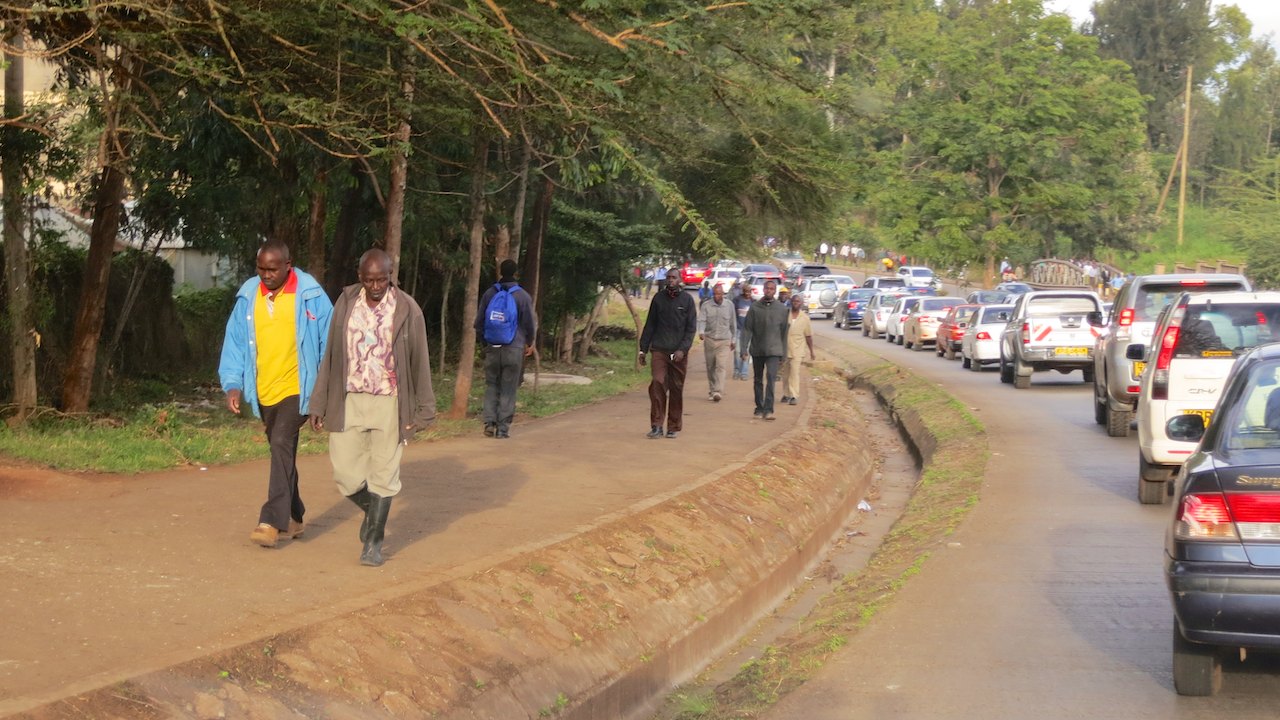
The police does not have a good reputation in Kenya. Police officers are known for stopping you for any reason and only letting you go after you have paid a ‘small fee’. A fee that does not disappear into the state treasury, but in their own pocket. At least in part, because the fee should be shared with his boss and the boss of his boss. They know exactly what amount to retrieve at which intersection. So the traffic lights work fine, but disrupt the earnings of the police force.
At Nyaya House, where the Immigration Department is situated, it is busy. The waiting room is full and there are long queues. Our friend Pim already went to get his stamps earlier that week and let us know by email where we needed to go. According to his instructions we walk past the waiting crowd and go directly to ‘Room 18′. Not even 15-minutes later a kind man stamps our passports: “Welcome to Kenya , enjoy it to the maximum.”
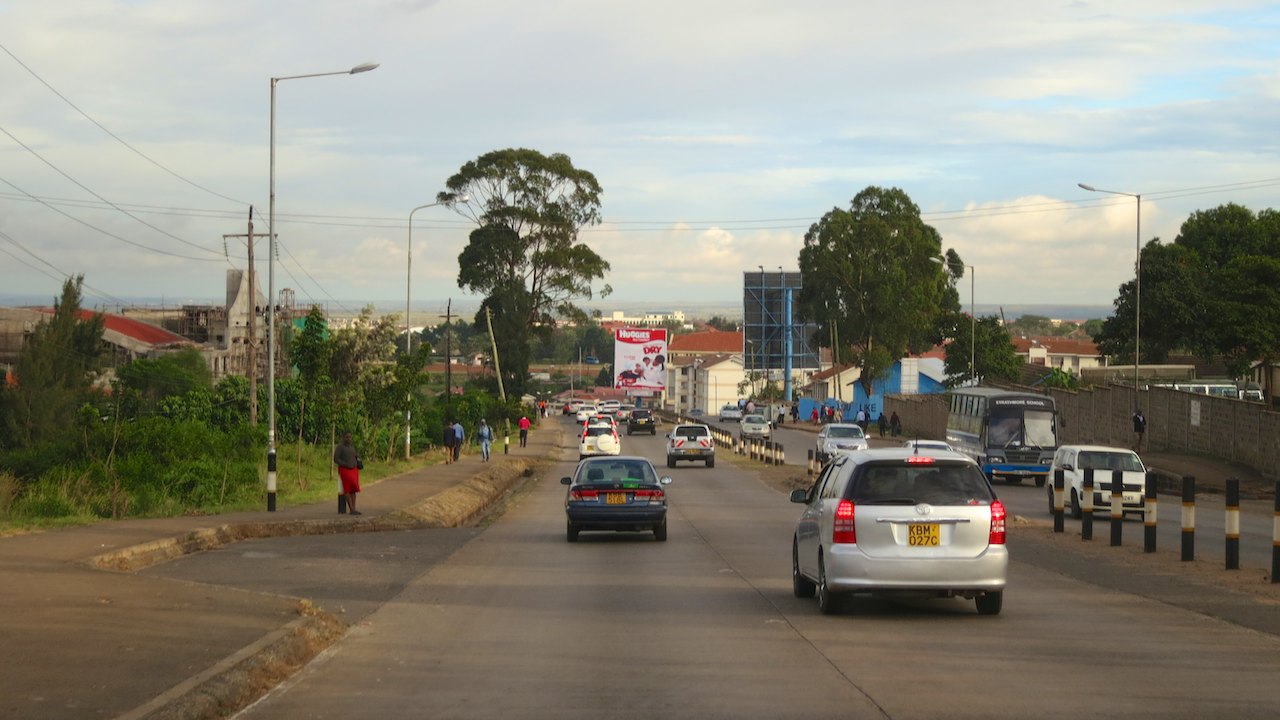
For a stamp in the Carnet de Passage, the “passport” of the motorbikes, we need to go somewhere else. We walk along the high office buildings to the Times Tower. For this part Pim also gave us detailed instructions: first get in line outside for a security check, then get a visitors pass in the left tower, go outside to the right tower, up the escalator to the first floor and ask for “Mister Obonyo”.
We find Mister Obonyo in an office behind his desk. He is on the phone and at the same time playing a game on his computer. The sound is on and all of his colleagues and probably also the person at the other end of the line can enjoy the sounds of the game. He refers us to his colleague, Miss Catherine. She takes our passports and carnets and asks where the motorbikes are. When we explain that we left them at the Nyaya House, she looks worried. She was supposed to check the chassis number of the motorbikes, but when we promise we will bring the motorbikes next time (whenever that may be), she takes out her stamp pad. Great, this is settled!

Refreshed and rested after our stay with our friends, we pitch our tent at Jungle Junction a few days later. It is a camp site on the other side of Nairobi that is run by Chris, a German who got stuck in Nairobi after a long motorcycle trip through Africa. Jungle Junction is a place where a lot of overlanders meet, not in the last place because of the great workshop at the site. Among travelers it is well known that you can get spare parts at JJ’s in Nairobi for cars and motorcycles. But Jungle Junction is also a place where overlanders park their vehicle for a long time until they continue their trip. On the camping ground a long line well-equipped Land Rovers and Land Cruisers and as many motorcycles are waiting for their owners to return. The car of Jan and Margriet, who went back to the Netherlands for a short time, is also parked on the property. For us Jungle Junction is the place where Peter can do some maintenance on the bikes.
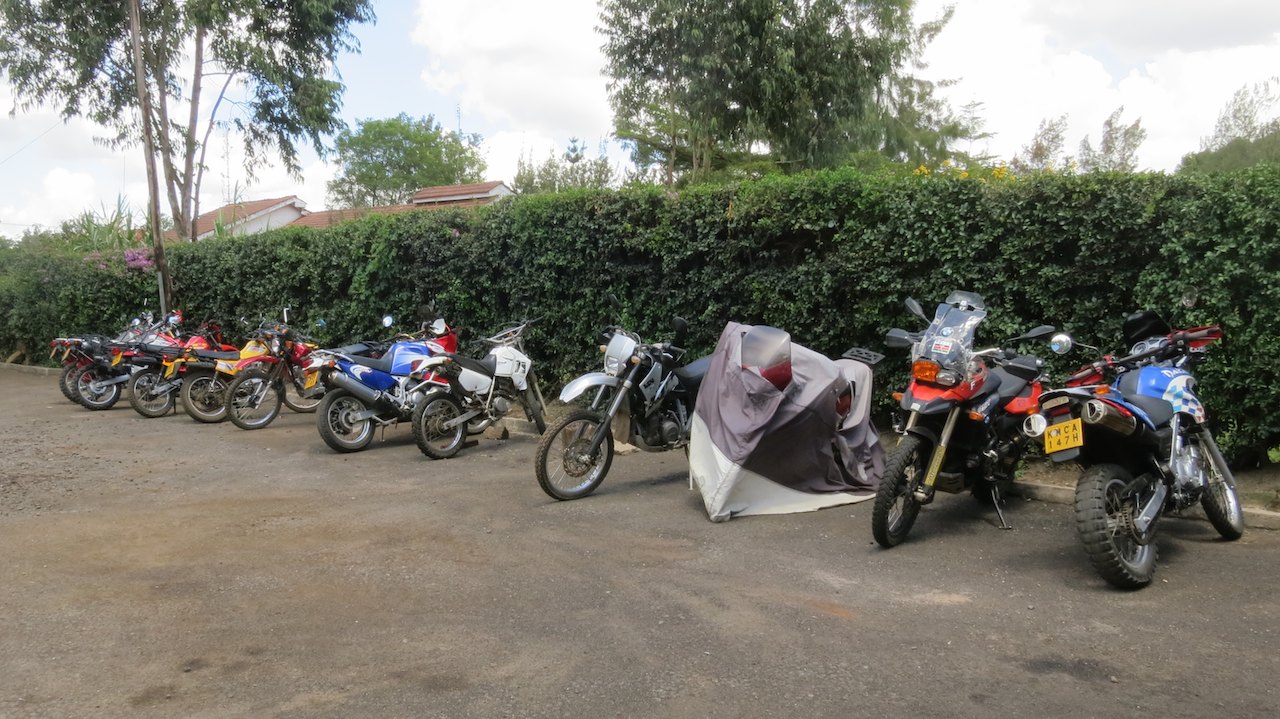
At Jungle Junction we meet Pim. A surprise, because we did not know whether he was still in Nairobi. His car is in the workshop on a jack while the mechanics at JJ’s look for the hole in his tire and try to fix his inverter. His car cannot be moved to the camping area, so he has put up his roof tent in front of the workshop to sleep. We also meet Johan and Ben, two Dutch motorcycle riders who have been riding the world for over 1.5 years. They are now on their way home, because their money has run out. In Nairobi they wait for an Ethiopian visa and a set of new tires. And as is often the case in Africa, it takes just a day or two longer than expected. They have now been at JJ’s for 10 days.
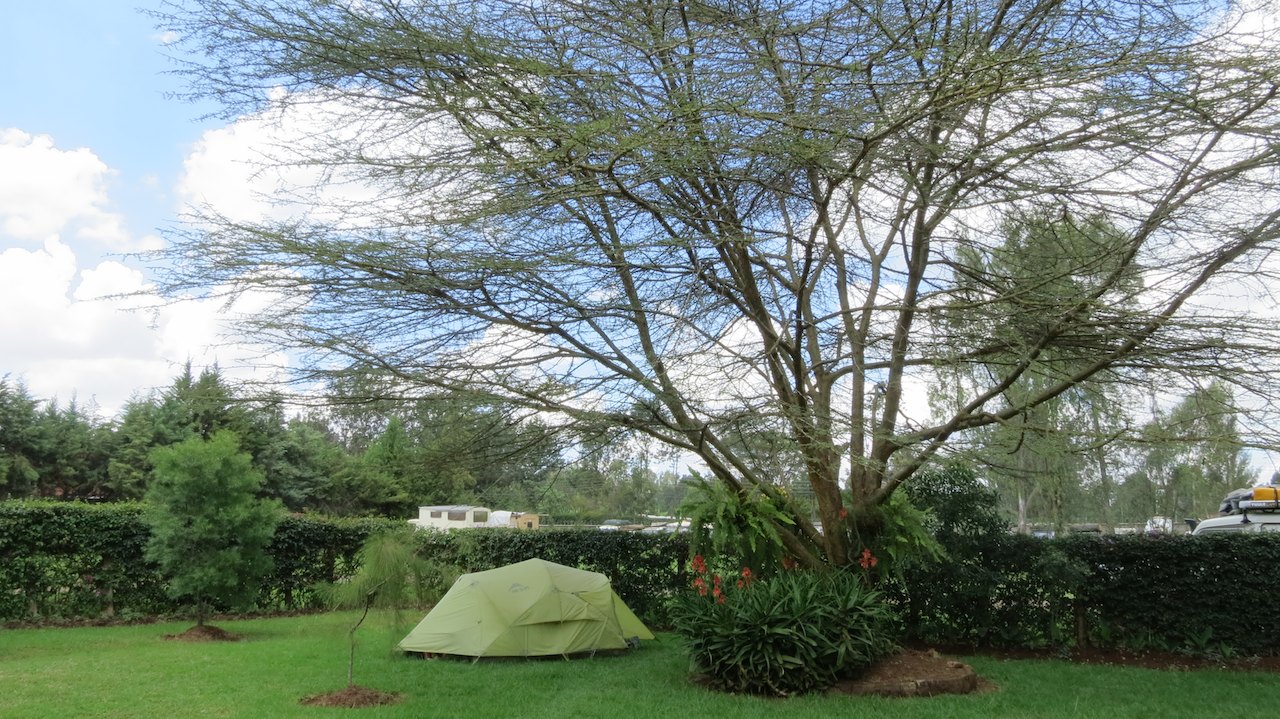
At Jungle Junction we not only work on the motorbikes, but also on the website. The Internet is super fast. Great, because that gives us the opportunity to do some maintenance on the site, to download new software and apps and to Skype with family and friends. To prevent that we are staring at the screens of our computer or iPad all the time, we also take enough time to sleep, cook in the public kitchen of JJ’s, do laundry and exchange exciting stories with Pim, Johan and Ben while enjoying a  .
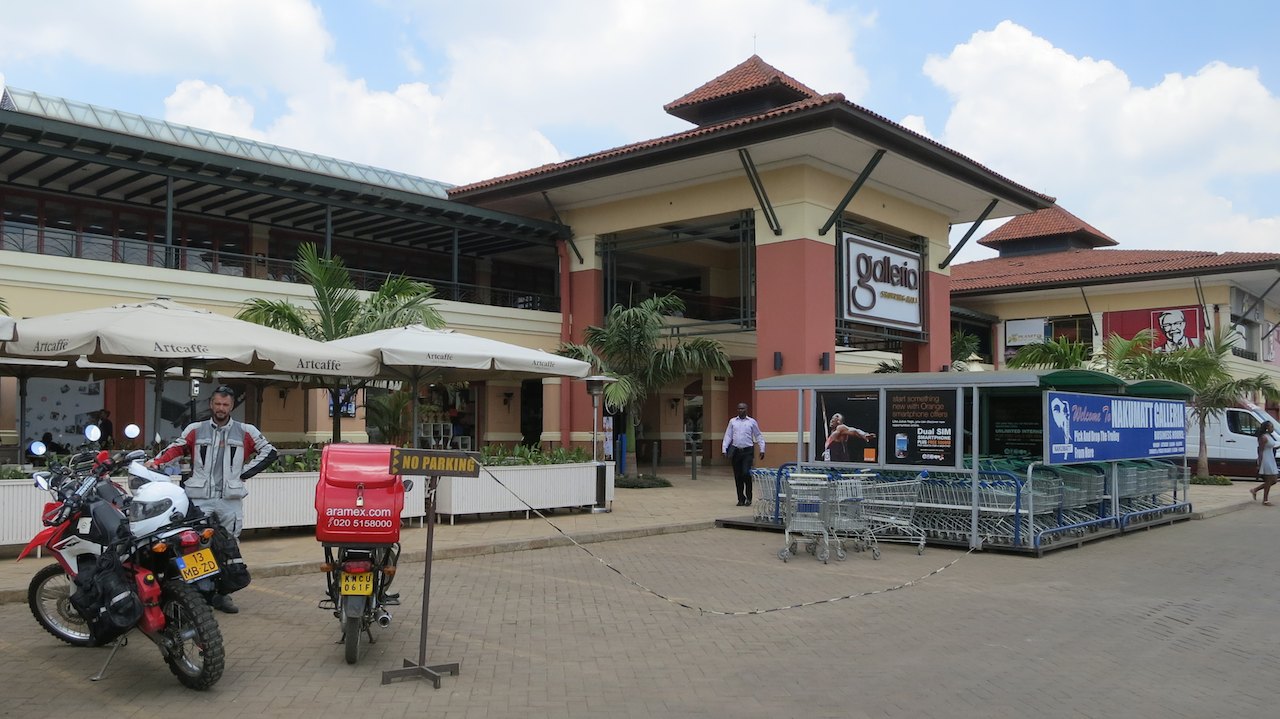
And we take our time to shop! Nairobi has a number of large shopping malls where you can really get everything (or so it seems when you have been traveling through Africa for a while). The first time we entered such a mall (which was already in Nakuru, on the way to Nairobi), we experienced a slight culture shock. For weeks we had been buying our food in small villages where you ask at a little window in a corrugated iron hut whether they might have bread, marmalade, fruit or matches. Usually they have one of the sought items and you need to go to at least 5 or 6 shops before you have everything you need. In the Nakumat supermarket (which I imagine is the East African equivalent for Wallmart) we could suddenly choose from 15 kinds of toothpaste, 30 kinds of marmalade and 15 different types of water.
For the much-needed variety to our menu we can find exactly what we need at Nakumat. Some pesto, Thai curry paste, brown bread, dried fruit and of course many things we do not really need but which are simply delicious. Since we have no fridge and we cannot keep meat in the African heat, we mostly eat vegetarian meals. The nuts and peanuts that we find in Nakumat are great to add to our menu.
Jungle Junction is located in the beautiful Karen district. The area is named after Karen Blixen, the Danish author of -among others- the book “Out of Africa” (later made into a movie with Meryl Streep in the lead role). At the beginning of the last century she owned and ran a coffee plantation in this area. The plantation has now made way for a large number of beautiful houses, but the home of Karen Blixen is still there. After seeing the movie and reading one of her books (“Shadows on the Grass”), a visit to the house was inevitable. Together with Pim we get a tour of the house and the garden. A special house of a remarkable woman, that was definitely worth a visit!
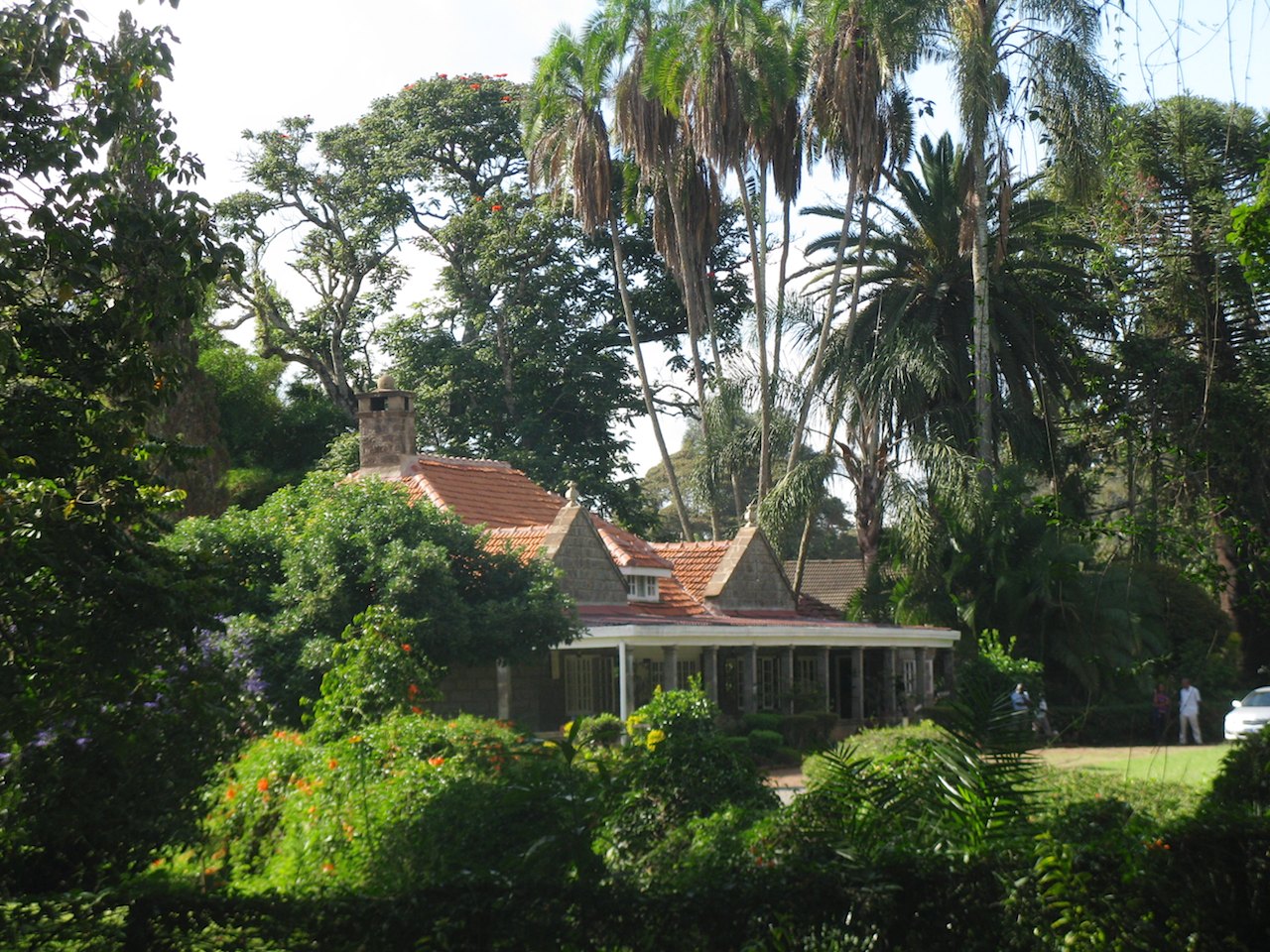
After ten days in Nairobi, we feel it is time to move on, but not because we want to get out of Nairobi. Contrary to what you might think when you hear that ’Nairobbery’ is the nickname of the Kenyan capital, we found it a very nice place to spend some time. But we also want to see some other parts of Kenya. In a subsequent post you can read about our ’Tour in Kenya’.
Distance travelled to Jungle Junction in Nairobi: 13,984 km (8,689 miles)
|

10 Apr 2015
|
|
Registered Users
HUBB regular
|
|
Join Date: Dec 2009
Location: The Netherlands
Posts: 66
|
|
|
Tour through Kenya
At the beginning of the afternoon we are in front of the high electric fence of Castle Forest, a small nature reserve on the slopes of Mount Kenya that has elephants, leopards and antelopes. Chris of Jungle Junction had advised us to camp there at Castle Forest Lodge. A cheerful security guard makes us write our names in a large book and then he opens the gate for us. We drive into the forest, deeper into the jungle toward the lodge. Peter drives remarkably slow and is trying to spot the first elephants.

After a few kilometres we see a sign for a campsite and drive onto a green meadow where cows, goats and horses graze. At the top is a beautiful country house with a veranda that overlooks the forest and the plains beyond. The house was built by Englishmen who used it while hunting. A beautiful place that reminds us of huts high in the European Alps. We are welcomed by Anthony and three huge dogs. He points where we can pitch our tent and warns that we cannot just walk around at night because the elephants sometimes wander around the campsite! That would be something, after hippos now elephants next to our tent.


It is off season and we are the only ones on the field. On the large veranda surrounding the house we enjoy the beautiful view and the jungle sounds that rise from the forest. We look at the forest with our binoculars in search of the first trunk and tusks. Unfortunately, we see no elephants. We do see a lot of new birds: five beautiful Cinnamon Chested Bee-eaters together on one branch, three huge Trumpeter Hornbills swirling in the air from tree to tree and dozens of small yellow Spectacled Weavers.

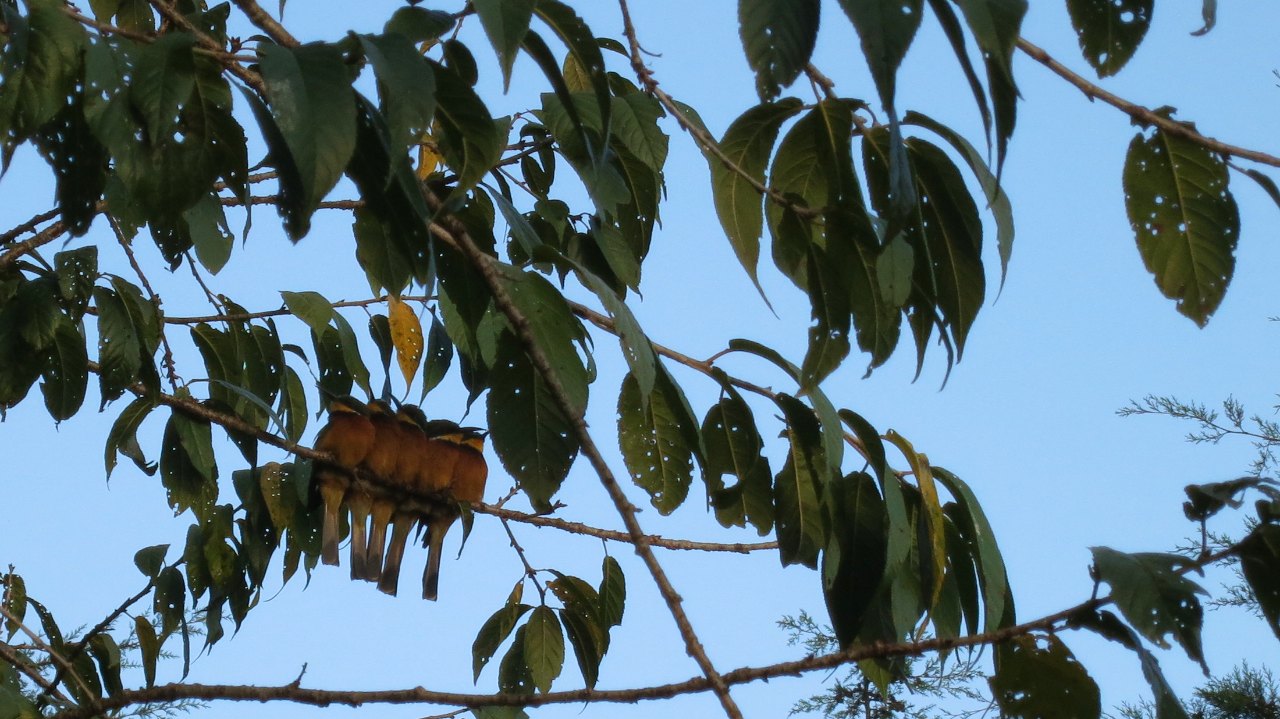
Not only the mansion and the mountain meadow reminiscent of the Alps, so does the climate. It is clear that we are staying at 2000m altitude. After the sun was quite warm during the day, it becomes quite chilly at the end of the day. Anthony lights the fireplace in the cosy living room of the mansion and moves the lazy chairs a bit closer to the fire for us. After dinner we crawl into our tent early to watch some episodes of Homeland from our warm sleeping bags.
The next morning it is still chilly and very quiet as we wake up. All we hear are the dogs sniffing around our tent, waiting until we come out. We smell a wood fire that is lit to heat the water for our shower. Lovely, we have not had such a hot shower in a long time! After breakfast, when the sun is shining and it is warmer, we follow a narrow, steep trail to a waterfall. Because of the elephants we cannot just walk through the forest on our own, but the trail to the waterfall is safe and (mostly) elephant-free. Once the dogs notice that we walk towards the waterfall, they storm past us up the steep path. Occasionally they stand to wait for us, wagging their tails, to then disappear again into the dense vegetation around us.

Once we are on the steep path we walk in the middle of the jungle. Ferns as tall as trees, orchids, banana trees and vines that hang down from tall trees. And all in 100 different shades of green, from deep dark green to bright green that almost lights up. It is beautiful! We follow the dogs, who know the way much better than we do, and walk to the water. The waterfall clatters down from a few feet with a thundering noise and fills the narrow valley with a wet haze. Really nice.
Curious about the rest of the forest, we take a guided tour through the area. In search for elephants!. Once we have left the camping field , we are immediately in a dense forest. We follow our guide -Patrick- through a swampy field to a small river where the elephants often come to drink. He cuts a pathway through the bushes with his machete (panga). We are only five minutes in the forest when I have lost my sense of direction completely. Without a guide, we would definitely be hopelessly lost, even the “path” that we followed so far is no longer visible. We glide along a steep slope down to the river. No elephants. We do see fresh turds, so they were in the neighbourhood ….
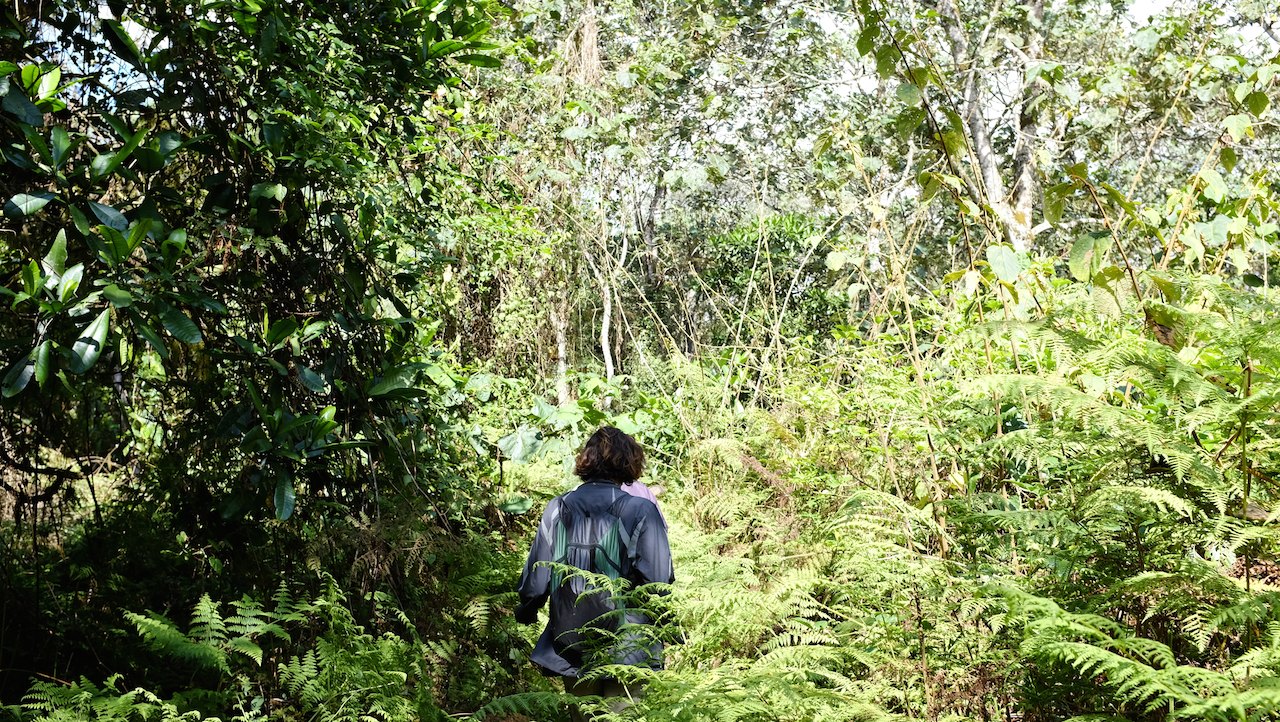
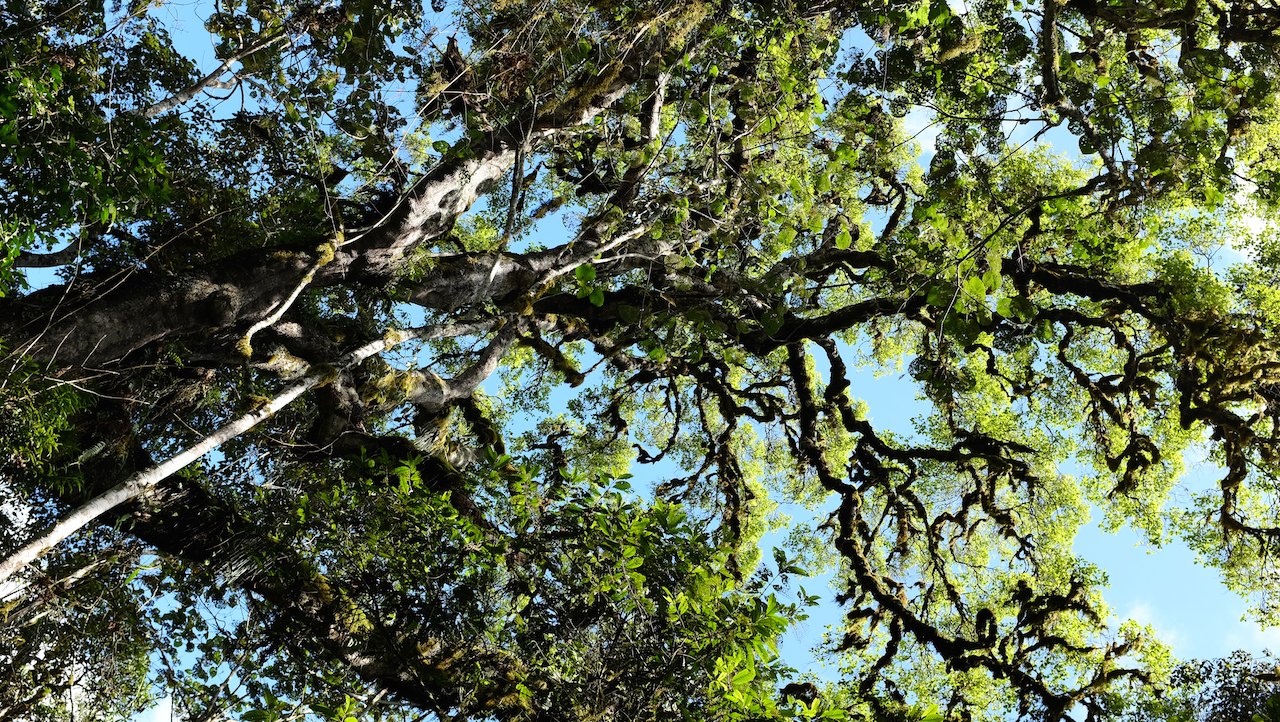
We walk through the high bushes around us looking for flapping ears and a grey trunk. You would say it would stand out among all that green. Patrick knows a lot about trees and lets us smell pieces of wood, he points which fruits the monkeys eat and which branches the elephants love to tear. The canopy of the forest is beautiful, with winding branches covered with a thick layer of moss. Around us dozens of flies and mosquitoes are buzzing. Our clothes are black with tsetse flies, that fortunately can not sting through the thick fabric of our trousers. Patrick shows us various small paths used by the elephants, broken branches, turned earth, even more poo and a tree that is used as a “love-tree” for them to rub against. But no elephants.

We end up staying a few days at Castle Forest Lodge. We enjoy the warm mountain sunshine and the cool nights. We eat delicious Thai curry with cashew nuts (finely some variation) and dine out a number of times at the mansion. We read, watch the entire season three of Homeland and peer with our binoculars to the trees in search of birds. Chris was right, what a great place this is. After Roberts Camp at Lake Baringo this is absolutely in our top three favourite places!
On the last night at Castle Forest Lodge, when we are just about to eat, Anthony comes running to our tent. Elephants! Next to the pool a group of elephants is eating. Eight! With our binoculars and camera we follow Anthony to the top of the hill. Even the staff from the kitchen and the guards have come our the watch them. Even they do not see the elephants every day, certainly not eight together. It is a beautiful sight. The big beasts are flapping their ears and their little tail. They stand quietly together and are eating some plants. Their long trunk swinging back and forth and occasionally blowing sand on their backs . They make soft sounds and rock from one leg to the other. We continue to look at them until it is dark. Wow!

The next morning the biggest dog watches us while we pack our stuff. Once we get on the bikes, he presses his big head against our thigh as if to give a hug. We both pet him and then he gets back. We can go. The path to the exit of the park is slippery after the rain that night, but good to ride with our knobby tires. At the gate we see the same friendly guard. He asks if we have seen elephants. “Eight? That is really a lot!”.
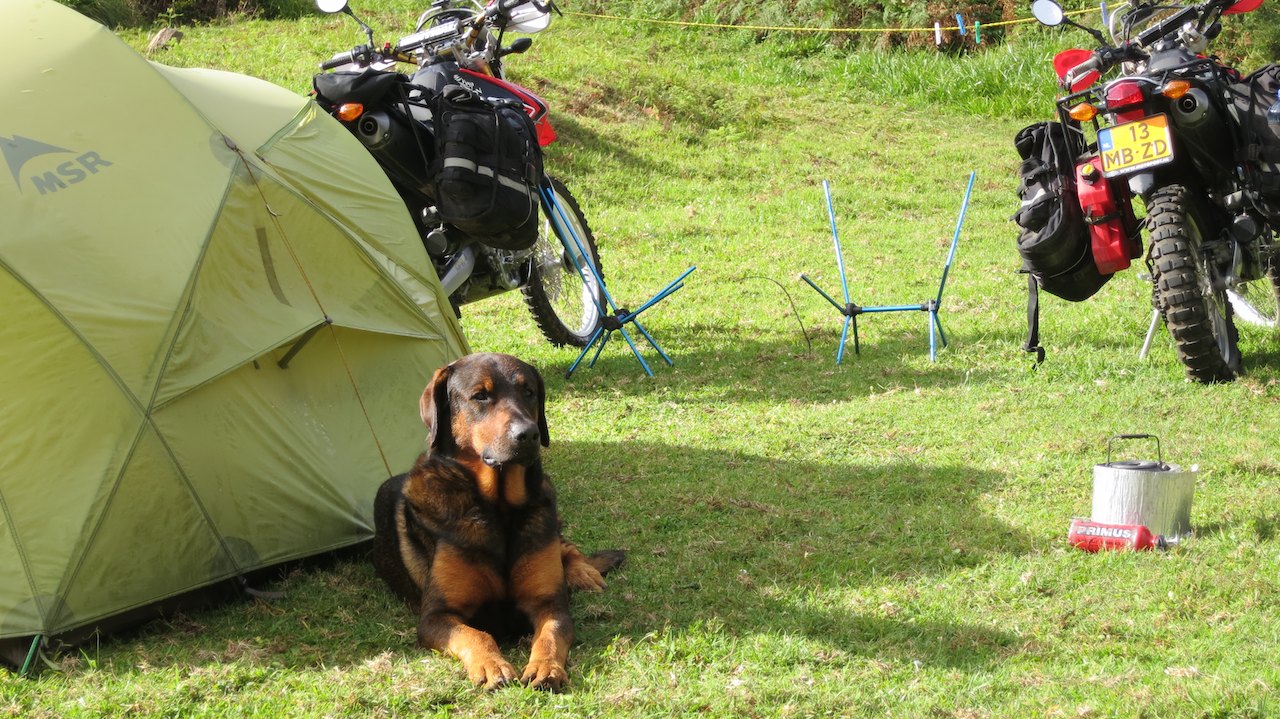

We drive past the tea plantations on the slopes of Mount Kenya in the direction of Nanyuki to a camp site at the Bantu Lodge. Again we see beautiful animals: baboons, colobus monkeys with long beautiful white fluffy tails, Tree hyrax that scream loud at night and some beautiful birds. The next day we drive to the Thompson Falls. From Nanyuki we follow the C76 to the west, to the waterfalls in Nyahururu. We drive along Ol Pejeta Conservancy, one of the many private game reserves. A visit to the park on the motorbikes is not possible and a night (at $300) is just out of our budget, but a ride along the fence of park is also very beautiful. For kilometres we drive on a gravel road along the park while on the other side of the fence we see giraffes, antelopes and even a rhinoceros with young. Beautiful. And there is also plenty of wild life on our side of the fence, we see zebras and small gazelles. We meander through the African savannah, past small villages, sprawling acacia forests and tea plantations.
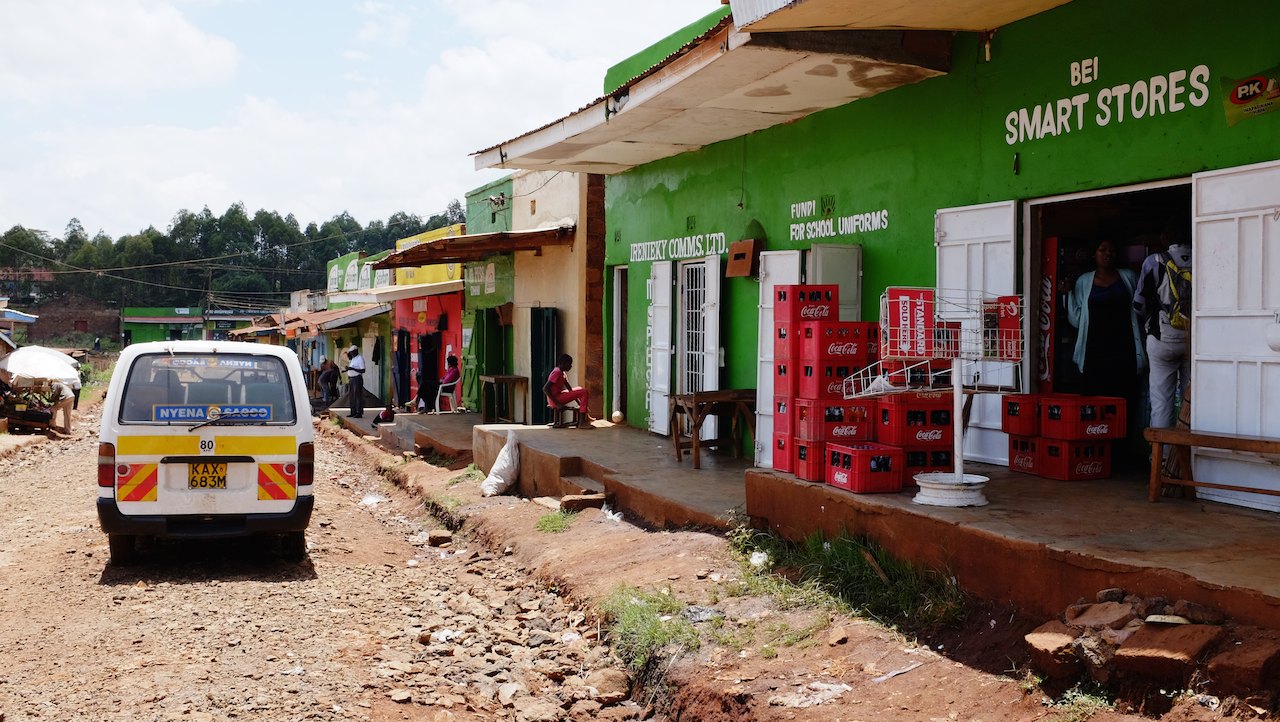
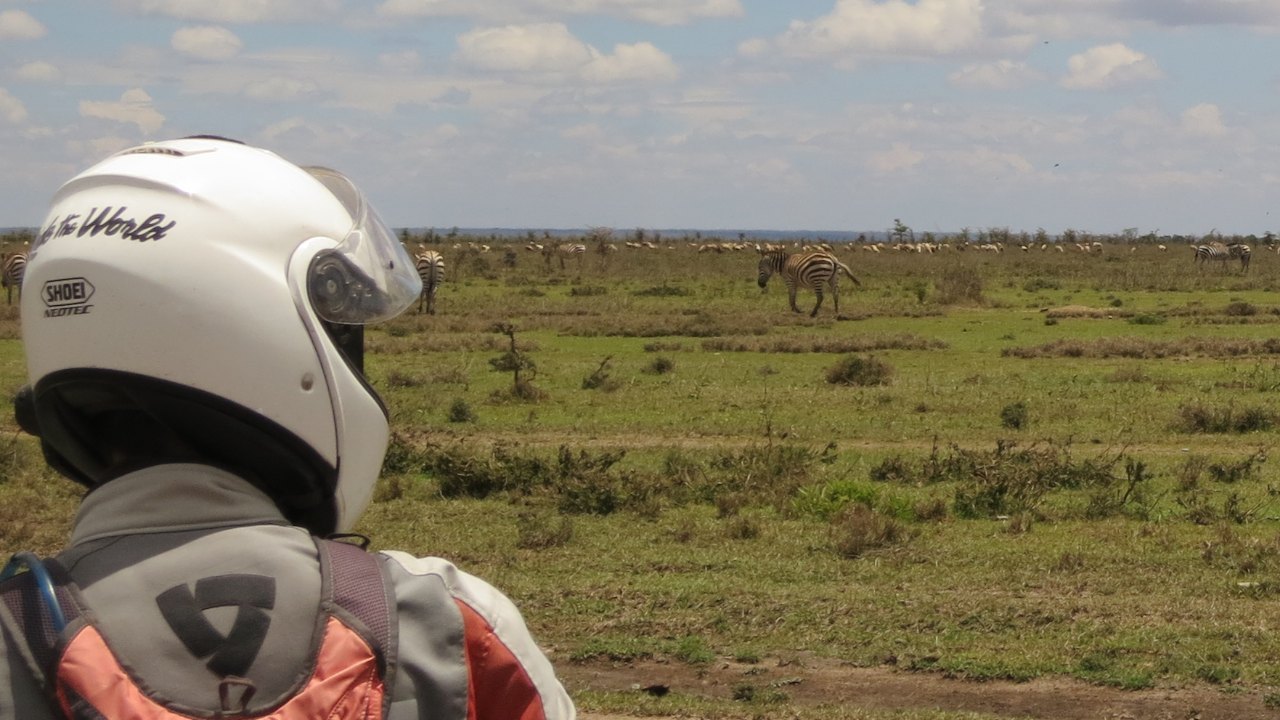
At the end of the afternoon we arrive at the luxurious Thompson Falls Lodge. A place that we visited in 2007, but at the time we did not walk to the falls. This time we do. With four other tourists we climb into the gorge to the foot of the waterfall. A steep climb over a long staircase with high stone steps. Stairs that are used every morning by the best Kenyan marathon athletes. In the early morning, when the sun is not so hot yet, they run up and down the stairs four times before their daily training through the area. A super intense training, especially when you consider that they do so at 2.400m altitude. No wonder they came in 1, 2 and 3 in the London Marathon this year.
The “guide” that takes us to the falls is actually one of the guards of the lodge. But he knows a lot about the surroundings, the river, the waterfall and Mr. Thompson who named the falls (and one of the gazelles). In his uniform he is waving his baton as he is telling us his stories. We follow him closer to the water and get wet by the mist that comes from the falls. While we take some pictures one of the other tourists asks Peter to film while he asks his girlfriend to marry him. While Peter tries to keep a steady hand, the camera focuses on the couple, the man gets to his knees and keeps a ring in the air. The lady in question puts her hands over her mouth, starts crying and yells ”YES”. Very romantic. Afterwards Peter told me that he had actually wanted to ask me to marry him at the waterfall as well, but he felt it was a bit dull to do that now…. (yeah right)
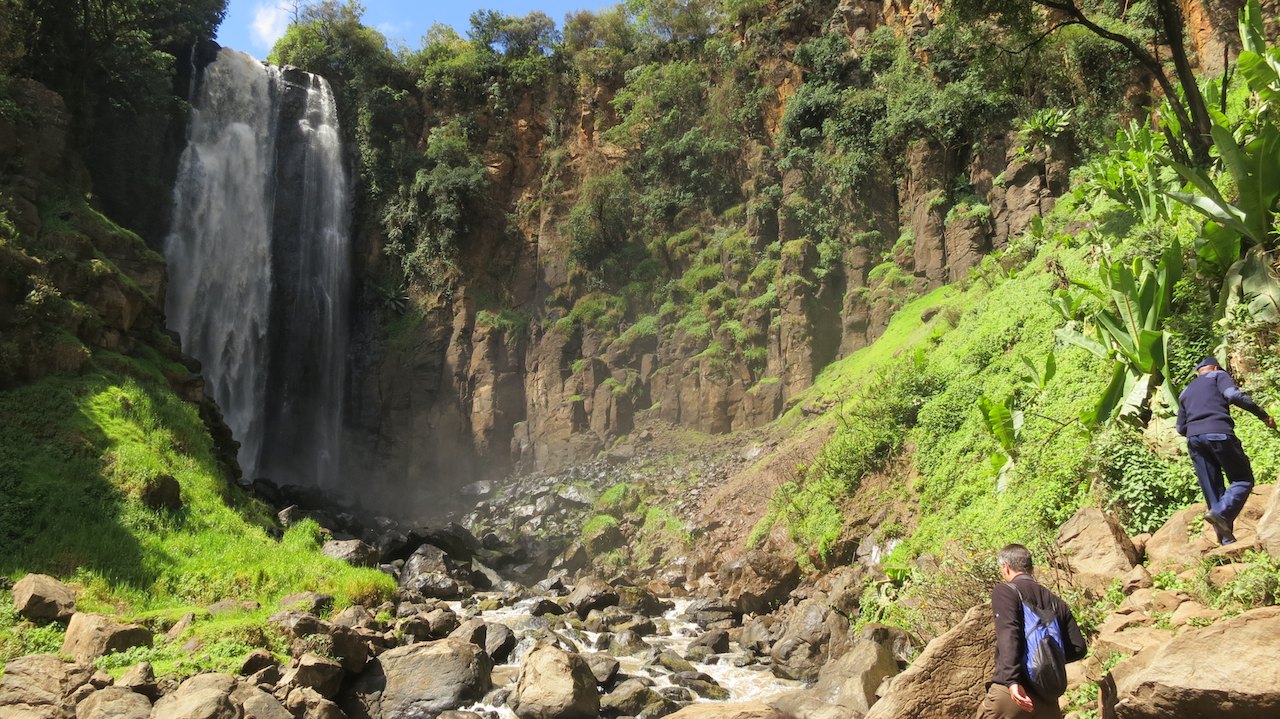
That afternoon the guard has even more in store for us. In the river that leads to the waterfall there is a pool with 10 hippos that we can visit. If we go at the end of the afternoon we might just see that they come ashore to do some grazing. Before we go there, we first do some shopping in the village. We are offered a ride by Davies and Marloes, a Kenyan-Dutch couple from Mombasa that is on honeymoon. As always, it is nice to hear how they got to know each other, how Marloes ended up in Kenya and what their life looks like now. A short but fun trip to the supermarket! If we go to Mombasa, we will definitely stop for coffee.
With the groceries, we enjoy a lunch at the campsite when my cellphone rings. It is Ross, asking where we are. “Are you still at the falls?” Less than five minutes later we hear the roaring sound of two BMW motorbikes and we see Ross with another motorcycle rider enter the campsite. Ross now travels together with Irish, who rides from Cork in Ireland to Cape Town. They met in Addis Abeba at Wims Holland House and rode to Kenya together via Lake Turkana. They are now on their way to Nairobi. It is great fun to meet our good friend so unexpectedly and it is great to meet Irish.

They stay at the campsite with us that night and will drive to Nairobi the next morning. While we pay a visit to the hippo pool Ross and Irish install at the campsite. As we walk back to the campsite we meet Ross riding his unicycle. A particular sight, not in the least because of all the people by the side of the road that watch him. He attracts even more people than with his big BMW F800GS. He immediately makes new friends who all want to try to ride the unicycle.
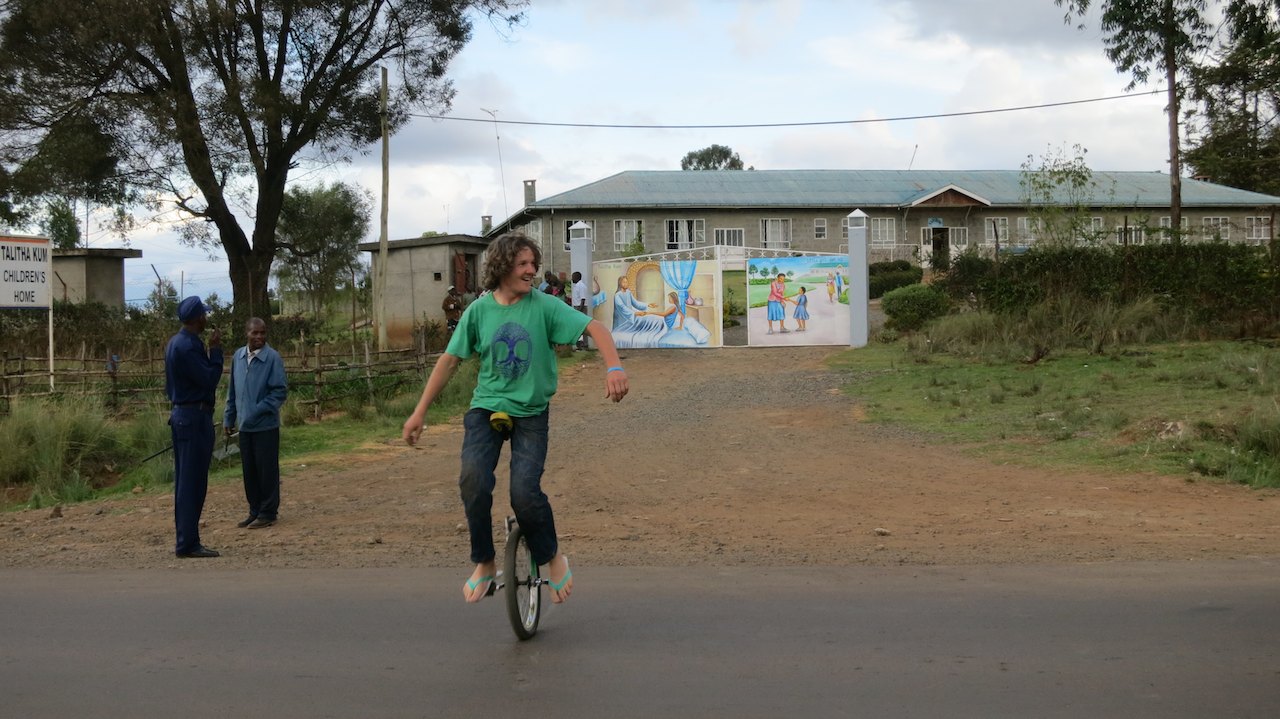
After a good burger, some cold  s and a great night, we decide to ride with Irish and Ross to Nairobi the next day. All in all, it was only a small tour around Kenya, but a wonderful one. We will keep the rest for another time.
Distance to Thompson Falls: 14,381km (8,936 miles)
PS: Especially for other birding enthusiasts, an addition to our previous list of birds: Olive Thrush, Little Bee-eater, White-eyed Slaty Flycatcher, Cinnamon chested Bee Eater, Black-and-white Mannikin, Tacazze Sunbird, Hadada Ibis, Common Stonechat, Pin-tailed Whydah, African Pied Wagtail, Spectacled Weaver, African Crowned Eagle, African Hill-Babbler, Grassland Pipit, Baglafecht Weaver, White-bellied Tit, Yellow-rumped Tinkerbird, Hartlaub’s Turaco, Mouse-coloured Penduline-Tit, Violet-backed Starling, Eastern Double-collared Sunbird, African Green Pigeon, Grey Crowned Crane, Golden-winged Sunbird, Rufous Sparrow en de Osprey!
|

12 Apr 2015
|
|
Registered Users
HUBB regular
|
|
Join Date: Dec 2009
Location: The Netherlands
Posts: 66
|
|
|
Hotel California
Essential for a motorcycle trip around the world: a running motorbike. Call it a wise purchase, proper maintenance or just good luck, but the only problem that we have experienced so far (in Ethiopia) is a leaking gasket between the tank and the fuel pump (knock, knock, knock***). Not everyone has the same experience. Our friend Ross practically had to rebuild his bike in Ethiopia and now our other friend Irish has problems with his bike. Halfway through the Turkana route the alternator of his bike stopped, his battery stopped charging and then his bike stopped. To repair or replace the alternator along the way was not an option. The solution? The battery of a Toyota Land Cruiser….
In Illeret he bought the battery, a huge box weighing over 20 kilos. Additional kilos you would rather not take on the back of your motorbike riding the sandy paths along Lake Turkana, but you have to do something! Ross -aka McGuyver- ingeniously managed to connect the car battery to the engine of the motorbike. The first day the battery was charged by a friendly gentleman who drove around with the battery in his car for a few hours. With the charged battery Irish could cover about 300km. Without turning off the engine and without stopping, because if you have to restart the bike or if the fan kicks in while you’re standing still, the battery will be empty soon. Every evening he brought the battery to a shop to have it charged. The next morning, he could then continue driving another 300km.
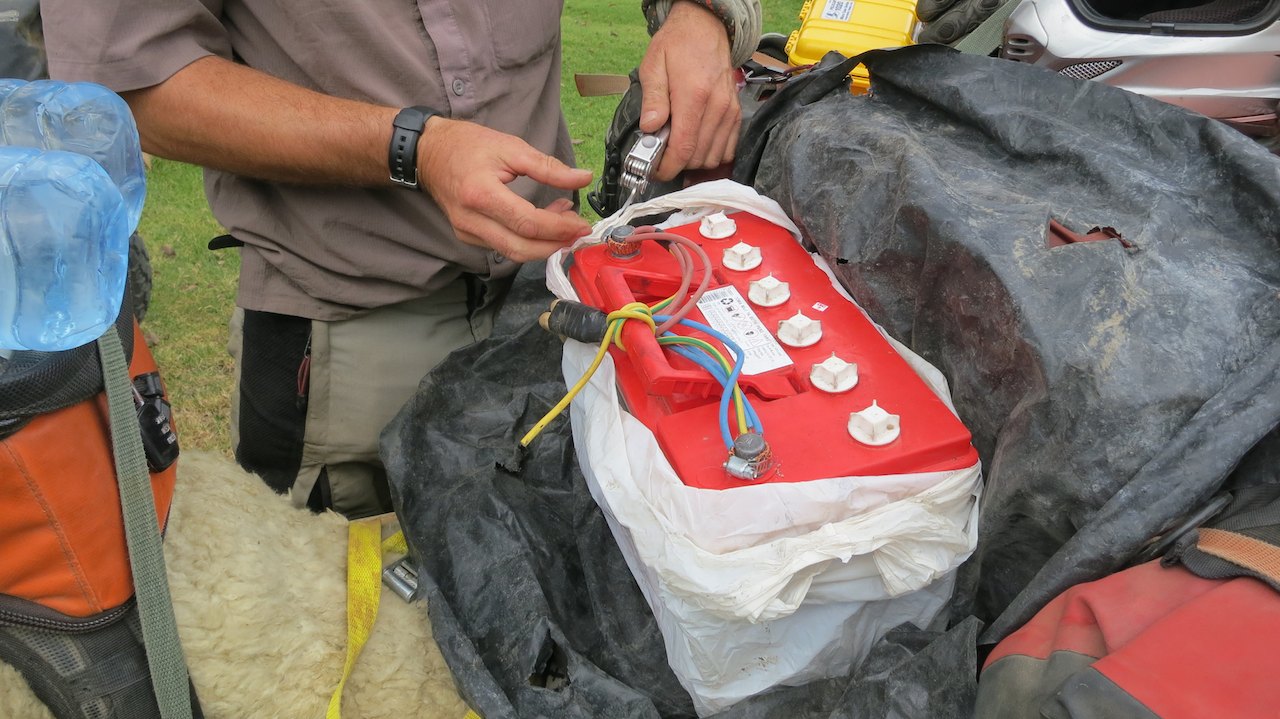
This morning we hear Irish leave on Ross’ bike to ride to the centre of Nyahururu to pick up his charged battery. One of the Kenyan athletes in his tracksuit on the back as his fixer. Peter and I have breakfast and start packing so we can leave as soon as he gets back. But unfortunately, the owner of the kiosk had charged the battery until he closed his shop (at 19:00) and then pulled out the plug. It was not until 07:00 that morning that he continued charging, assuming that would be enough. But there was not nearly enough power in the battery to start the bike, let alone to drive to Nairobi. He should try again in a few hours.
Because we only leave a few hours later, we take our time to have breakfast and we pack even slower than we usually do. While we are packing, the athlete friend of Irish comes back with a journalist. The man works for a travel magazine and would like to write an article about the motorcycle trip of Irish. Once on the campsite his face lights up when he sees another three motorbikes, a hammock, two tents and ’Mzungu’ boiling eggs on a gas stove and drinking coffee from plastic soup bowls. He walks round us while he clicks his camera and he takes pictures of absolutely everything. He interviews Irish and asks him to throw back his hair as he poses next to his motorcycle. Then he takes a picture with us and the athlete, the athlete with the motorbikes, himself with the bikes and finally, a group picture with the bikes. That should give him one great article!
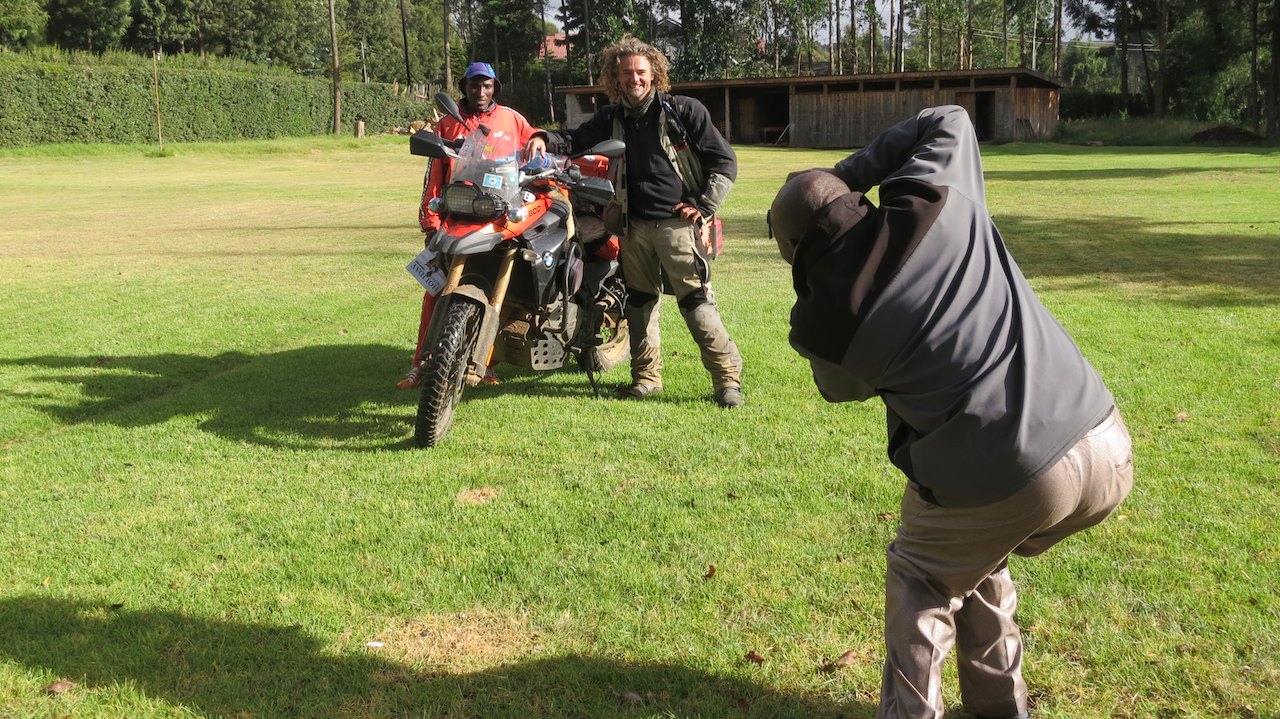
After the interview, Irish goes to the kiosk again, to come back a little later with a battery that is just sufficiently charged to drive for a while. He could probably use it to start his bike, but then driving might be a problem. With some jumper cables, a car and a friendly guy, the bike starts and we can leave. From Nyahururu we drive a beautiful road through the hills with a few lovely curves. We again pass the equator (this time from north to south again after Peter and I went back north at Mt Kenya). For Ross and Irish it is the first time during this trip that they cross the equator. Reason enough to stop and make a picture.

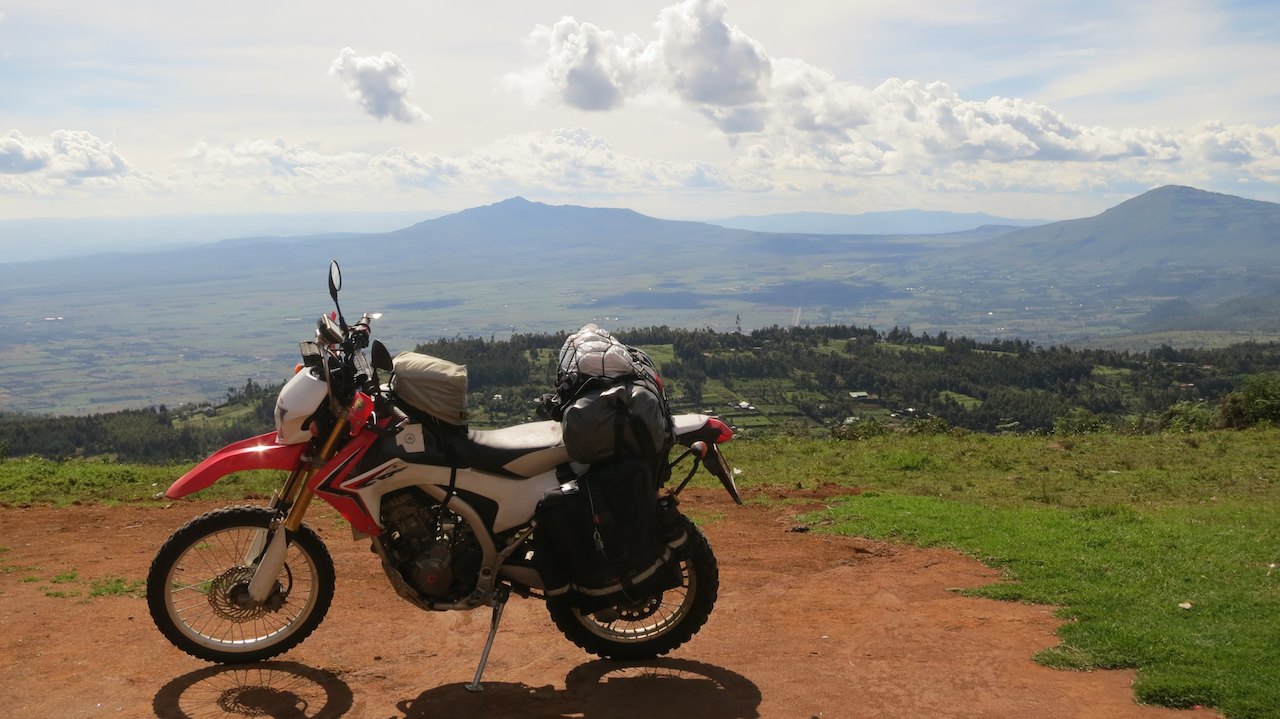
Then we drive a route that Peter and I already drove before, through Nakuru and Naivasha on to Nairobi. We again enjoy the wonderful view we have over the Great Rift Valley. We stop only one other time to refuel, to eat and to put on our rain suits. Fortunately Irish also finds a friendly motorist here with jumper cables to start his bike. At the end of the afternoon we sway between the busy traffic in Nairobi to the neighbourhood “Karen”, back to Jungle Junction. Just in front of the gate Irish’ bike stops. What a timing!
As we enter the driveway of Jungle Junction Chris comes to meet us. “ Problems?”, he asks. A logical question, because that is often a reason why travelers are back on the campsite within two weeks. But no, we do not have any problems, we just want to spend some time with our friends. But this time we only stay a few days, I assure him, then we will move on. Chris gets a mysterious smile on his face: “ We’ll see ….”
Once we have parked our motorbikes, we notice that we are not the only ones this time. There are two BMW bikes, a F650GS (twin) that still looks really nice and a lovely BMW F650GS Dakar on a jack with a lot of parts missing. We find the owners on the terrace behind a row of empty  bottles. We meet the Germans ‘Ollie’ and Thomas and the Namibian fiancée of Thomas, Martha.
Ollie will fly back home that night after a motorcycle trip of a few months through Africa. He will leave his motorbike -the one on the jack- at JJ’s so Chris can patch it up it for the next leg of the journey. The nice BMW belongs to Thomas and Martha. Thomas has been living in South-Africa for some time where he deals in motorcycles and guides motorcycle tours in Southern Africa. He had previously sold this BMW to a biker from Taiwan who had ridden it from South Africa to Kenya. The Taiwanese biker went home and Thomas came to pick up the bike and ride it back to South Africa to sell it there. Together with his fiancée Martha as a pillion.

Before we know it, Ross, Irish, Peter and I join them for a cold  , still wearing our gear. Pitching the tent can wait! A great atmosphere and the beginning of a long first night in Nairobi.
The next day I take a seat at the terrace to make use of the high-speed Internet. Meanwhile, Peter does some maintenance on our bikes and then bends with Ross and Irish over their BMW’s. After a ‘busy’ day we all join Thomas and Martha for a delicious Namibian stew with lamb and rice. Delicious! The  s keep coming, the stories become more exciting and the jokes louder. And it does not stop. At dusk four motorbikes drive up the Jungle Junction driveway. Four Suzuki DR650s with South African number plates that belong to Trevor, Shane, Kyle and Garth who drive from Cape Town to Cairo in the record time of two months. After they have eaten something, they pull up a chair and tell us their tough stories.
At some point, Irish takes out his foldable(!) guitar from the big orange suitcase on his motorcycle! There is a hinge in the neck of the guitar allowing the guitar fold up so “small” it fits on his bike! He just has so straighten the neck, tune it and then he is ready to play. Great! Irish has a beautiful voice and gives us goosebumps with his beautiful songs. When it is time for him to take a sip of his  , Garth shifts on the seat next to him. He asks if he may have a go…. He also turns out to be as gifted guitar player. Together they play some great songs: beautiful singer-songwriter songs, classics by The Rolling Stones and The Eagles, blues songs with matching deep voice and bawdy sailor songs. A great end to a second long night at Jungle Junction.
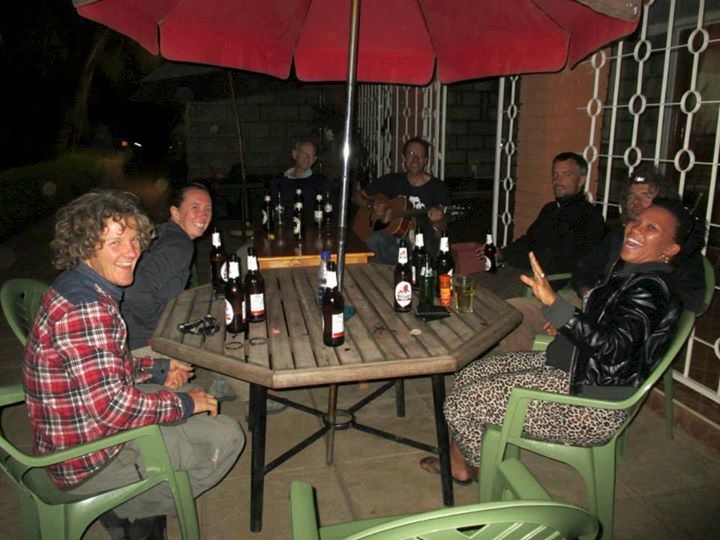
The next morning the bulletin board in the reception shows the menu for the day: “Friday = BBQ night”. That sounds good, we stay another day! Everyone signs up for tender T-Bone Steak. And the group gets even bigger, because in addition to the 10 motorcycle riders Brett and Yvon have now joined as well. This South-African/German couple makes a journey through Africa in a Land Rover with beautiful (rooftop)tent construction. From South Africa up to Kenya and then counter-clockwise back to the south. Furthermore, Konrad also joins us. Along with his adopted son Mundi, Konrad is almost part of the furniture at Jungle Junction. For more than five months he is working through the adoption process in Nairobi. His wife and their eldest son have already gone back home, while he awaits the final paperwork with Mundi.
That night Chris turns the enormous slabs of meat while we enjoy the delicious salads. It is a loud bunch that is only quiet as the first pieces of meat are on the table. After that it is back loud again, with jokes, motorcycle talk, beautiful guitar music, Zulu-cabaret, lots of cold drinks and a big campfire. Another long night in the Kenyan capital.
Our departure date is becoming increasingly blurred. The “few days” we would stay already passed and we do not think about leaving yet. There is something to do every day. But we are not the only ones, the others also keep adjusting their departure date. Irish is still waiting for parts for his motorcycle so he will stay some days anyway, but the others do not really have an excuse. It is fun and no one is really in a hurry. Chris begins to laugh as he hears us postpone our departure: “ Hahaha, this place is like Hotel California:” You can checkout any time you like, But you can never leave!”
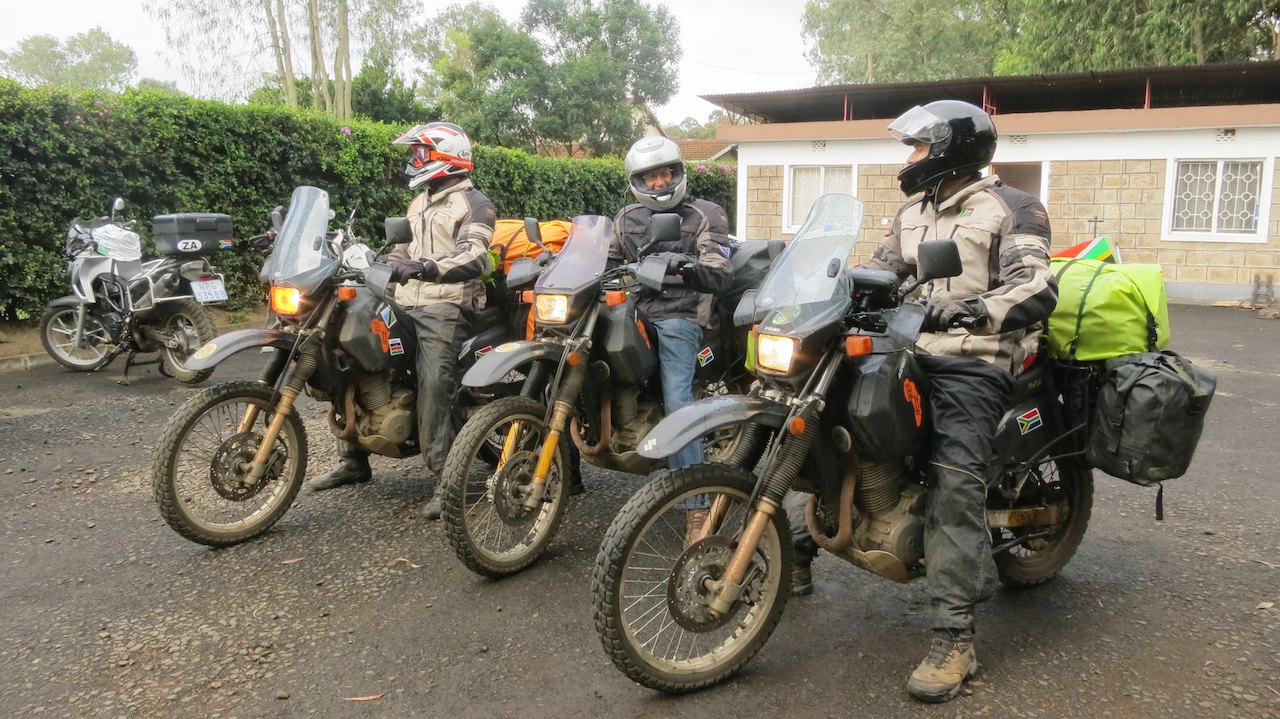
The next morning the four South Africans are the first to leave. They ‘must’ go on because they are on a tight schedule and have “only” two months to get from Cape Town to Cairo.

Then Peter and Ross also get on the bikes. Not to leave, but to ride around town. Ross’ bikes has been fixed, so they can go for a tour, “play” around. At the beginning of the evening they return at the campsite with a big smile on their faces. Through various gravel roads they had arrived at the entrance of Nairobi National Park. They were allowed to drive to Sheldricks Elephants Shelter, but could not enter the park. But that did not spoil the fun, because they still saw ‘wild animals’ and enjoyed the view over the savannah. So beautiful and so special that it is to close to the city center of Nairobi.

After three long evenings everyone needs some sleep. After we ate together (this time Thai Curry made by Irish) everybody gets to bed early. The next day, everyone returns to the order of the day. And for travelers this consists of: maintenance on bikes and gear, charging electrical equipment, work on the blogs, updating Facebook, backing up photos, reading about the next destination, copying series and films, exchanging routes and facilities, shopping and visiting the tourist sites.
Thomas and Martha are then the first to leave. To Tanzania, Malawi and further south. A day later we say goodbye to Ross. He leaves on an Kenyan ‘adventure’. We stay a few more days. In those days I take guitar lessons from Irish, we cook a Mexican dish for the remaining friends, we get a tour around the Land Rover of Brett and Yvon and we are have lunch with Wouter, Agnes and Seth. Then we really pack our stuff, we check out and actually leave our Hotel California.
“ Goodbye Jungle Junction, bye Nairobi, on to Uganda!”
Distance to Jungle Junction (Part II): 14,646 km (9,100 miles)
***Touch wood, you never know
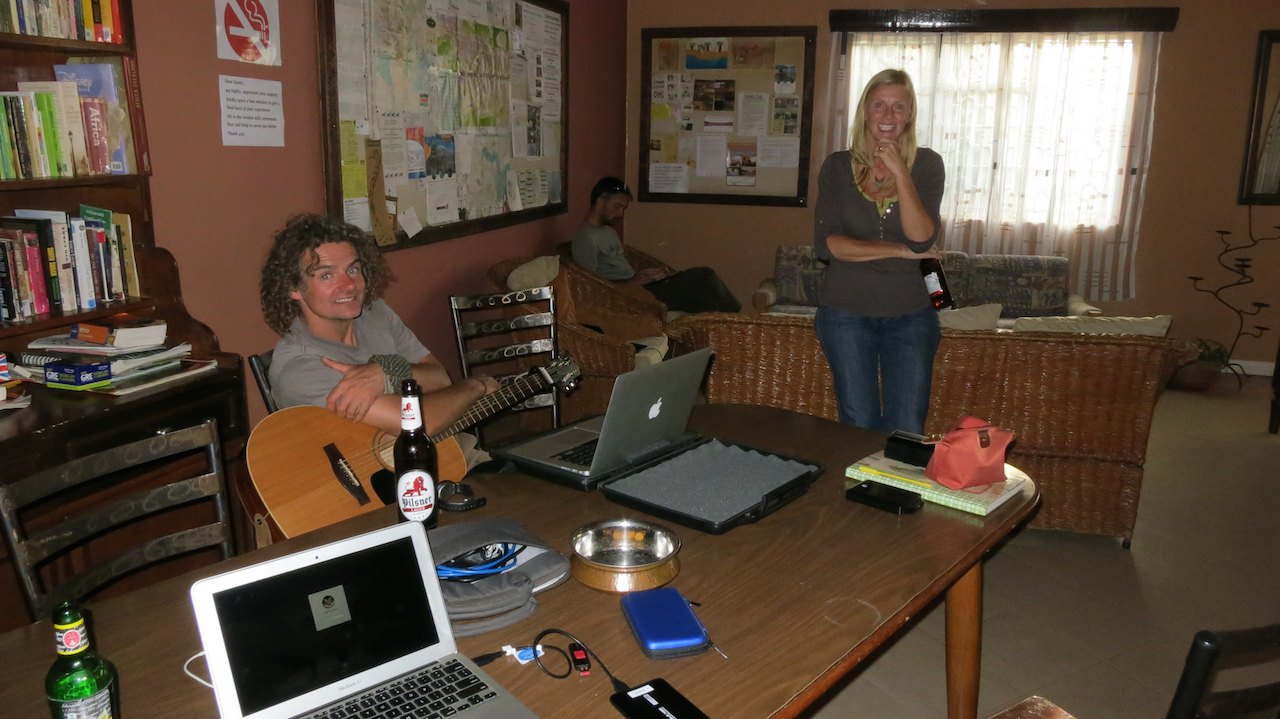
|

22 Jun 2015
|
 |
Registered Users
Veteran HUBBer
|
|
Join Date: Sep 2007
Location: Lutterworth,Midlands, UK
Posts: 576
|
|
|
I think the hammar tribe you visited are now the stars of a UK TV series. It's called the tribe and is available on All 4 on demand on the internet. You probably met some of the stars!
|

24 Jun 2015
|
|
Registered Users
HUBB regular
|
|
Join Date: Dec 2009
Location: The Netherlands
Posts: 66
|
|
|
Red earth, green hills
To go from Kenya to Uganda we can choose between different border crossings. The most commonly used border crossing is in Malaba on the main highway from Nairobi to Kampala. A busy checkpoint where the freight traffic to the Ugandan capital also crosses. Further north, on the slopes of Mt Elgon, we can also cross the border at the little town of Suam. A gateway that is not used by many travellers, because the road to the border is not paved. In the rainy season the dirt road turns into a slippery mud path that is impassable for most traffic. Although the rainy season should have started a month ago, there has been almost no rain. The road should therefore still be in good condition. And when we look at the blue sky we hope it will stay dry the next few days.

Suam is situated north-east of Nairobi. To get there, we follow a scenic route passed the lakes of the Great Rift Valley, along Lake Naivasha and Lake Nakuru for the third and last time. This time we ride from south to north. We have a beautiful view over Lake Nakuru and the craters that rise above the green countryside. On the busy road that runs along the steep hillside to the top, we see a cyclist on a packed bike riding up. It is clearly an overlander. We drive past him and park our bikes at the top of the hill to wait for him. There we meet the Argentine Enrico.
He speaks little English and we speak little Spanish, but with hands and feet we come a long way. He has sent his bike to Morocco and rode from there along the west coast of Africa to the south into Nigeria. From there he took a plane to Kenya to continue cycling to South Africa along the countries in the east. Before he cycles to the south, he first makes a tour around Kenya. It has been a long time since he has seen any tourists and he looks genuinely happy that we stopped. We exchange information and advise him to go to Roberts Camp at Lake Baringo. Then he gets on his bike again, because it starts to get warm in the sun and he still has a long way to go.
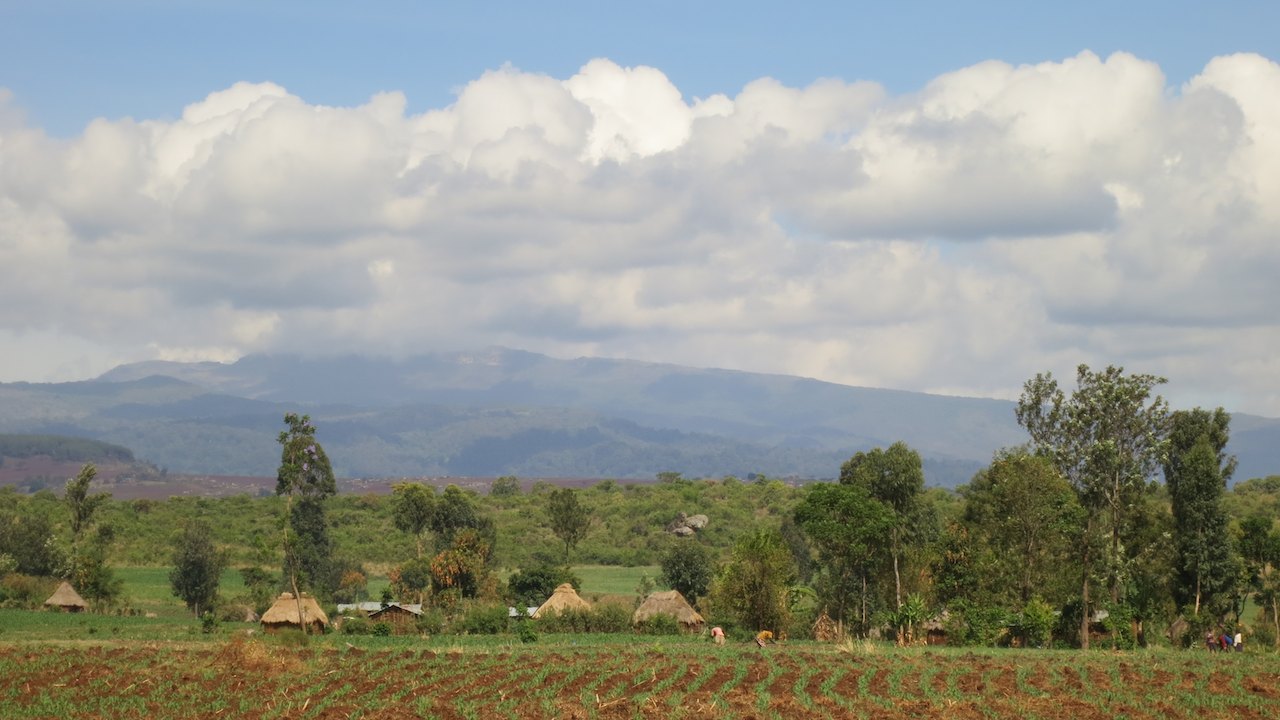
From Nairobi we have back-tracked a little, but from Nakuru we start riding roads that we have not ridden before. We ride through the green hills and pass the equator for the fourth time. We will take three days to get to the border with Uganda and spend the first night at a nice campsite in Eldoret. We can feel that the long evenings at Jungle Junction in Nairobi have taken their toll. We both have dark circles beneath our eyes and that evening I fall asleep in the restaurant beside the glowing fire pit while my cold tonic slowly gets warm. It cannot hurt to get some more sleep.
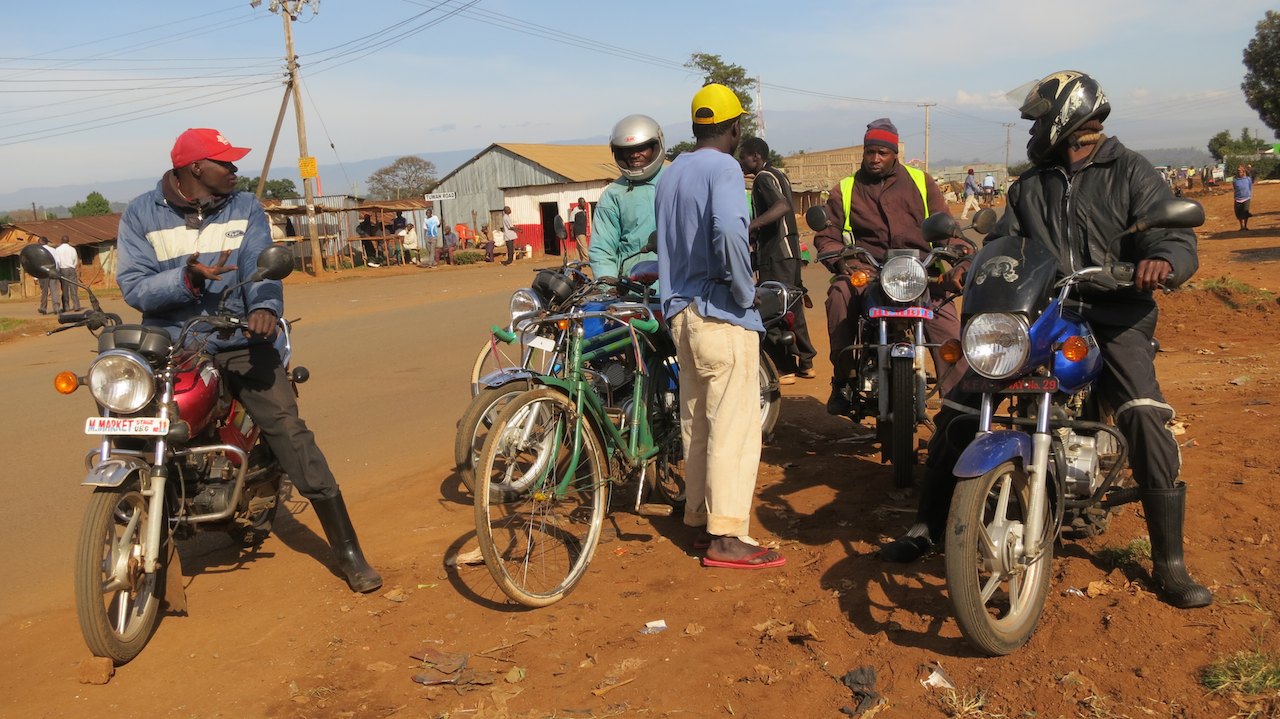
The next morning we set off early and drive on a dirt road to Kitale. There is a lot of traffic on the road is busy and we must constantly pay attention, especially overtaking motorists are a problem. We have a strong suspicion that the Kenyans obtain their driver’s license when they buy a carton of milk, because their driving is really special.
On the road we see a lot of motor-taxis, called “Boda-Boda’s”. In every village there is at least one taxi stand. Often consisting of no more than a shed with some low wooden benches where drivers sit (or rather lie) while they wait for their next customer. They all wear a fluorescent vest with advertising on the back for a new governor or a local telecom provider. They mostly wear a helmet, one of the only traffic rules that does seem to be observed. The motors are made in China and are “light”, often only 125cc. They are decorated with lights, a radio and cheerful colours. They have a long seat for passengers, which sometimes fits three customers. And if it does not fit, the driver himself sits on the tank! Most particularly is all the luggage they carry: large bags of charcoal, 10 crates of Coca Cola, clusters of live chickens that are held together by their legs, bicycles, beds, corrugated iron plates. Anything you can think of can be transported on their motorbikes.
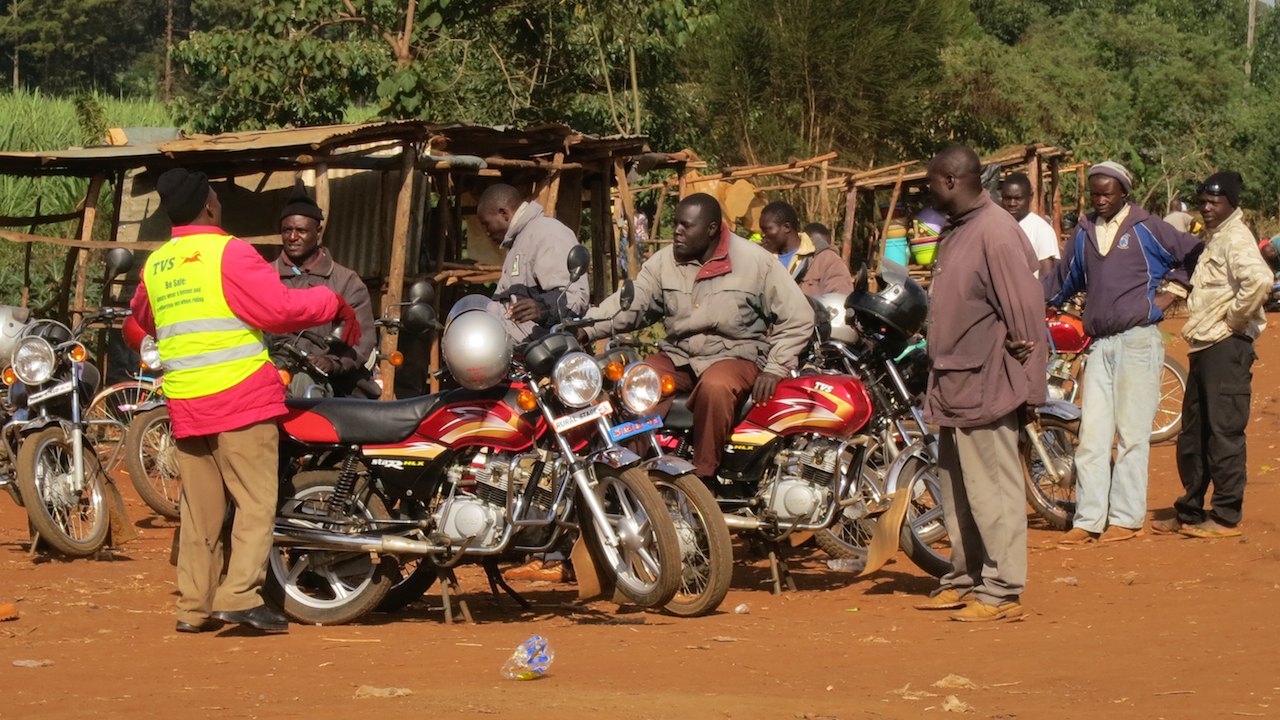
At the gas station, we are often waiting among the Boda-Boda’s. They look at our motorbikes drooling and ask a million questions: “What is the engine size?”, “How many miles per litre?”, “How fast can it go?” and “What does it cost?”. They usually offer to exchange, while pointing to their shiny Chinese mopeds. But not only the motorbikes are studied in detail, also our suits, our ’flip-up helmet’, the microphones which we speak in, the Camelbak we drink from and the GPS. And then there are still the surprised looks when I take off my helmet and they find out that I am not a man! I have yet to see a woman driving on a moped or motorcycle in Africa.
We are heading for Kitale. Our guidebooks tell us that most foreigners that come to Kitale are volunteers working in the city. And indeed, at the cosy B&B where we find a camping spot there are indeed quite some volunteers, mostly from the US. A group of young American girls who work at a local orphanage, a group of older Americans from a Christian organization that provides aid through health education, but also students who are doing research for their thesis. We pitch our tent next to a number of large white tents from UNHCR. Not so long ago, there were some troubles in northern Uganda forcing many Ugandans to run to Kenya as refugees. A large number of them found a temporary shelter in Kitale. The situation is better now and many of the refugees have returned to Uganda. The tents are empty and are now used for guests of the B&B.
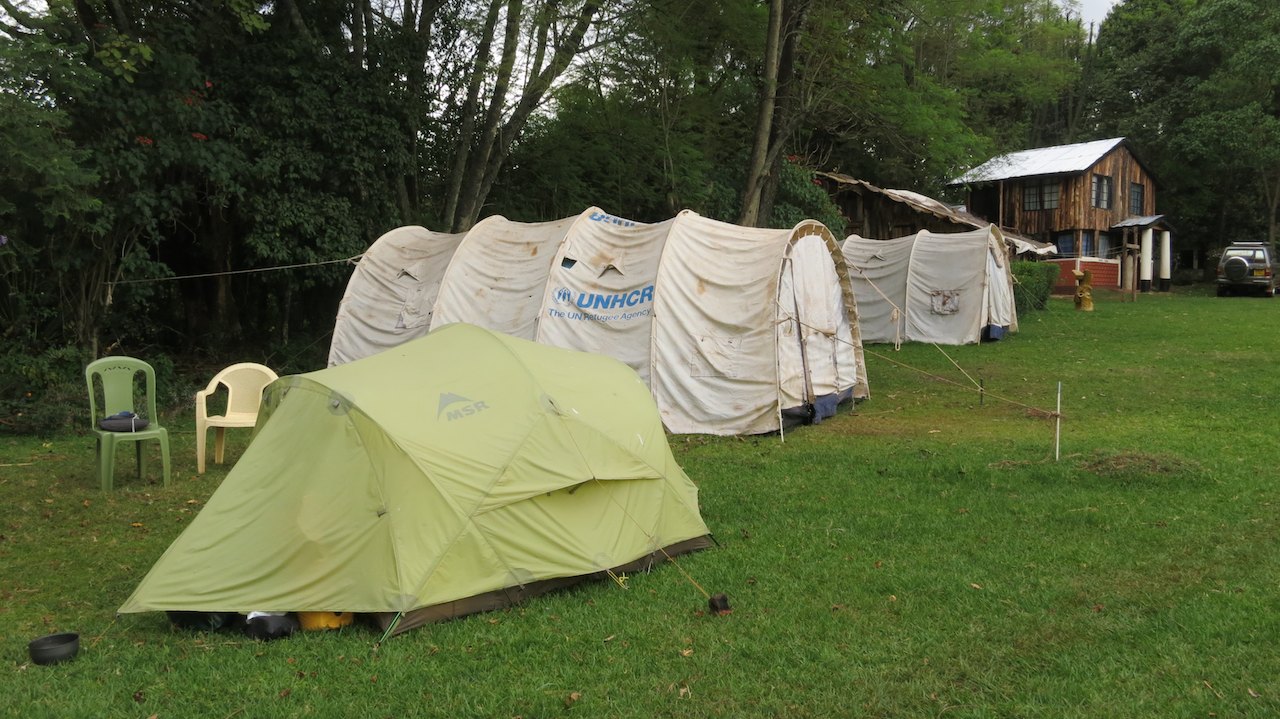
At the end of the afternoon our phone rings. Our friend Ross! His adventures in Kenya have taken him to Kitale! He asks whether he can join us. Off course, great! The campsite is in one of the suburbs of Kitale and is not easy to find. On the phone, we explain how to get here. At the Total gas station to the right and then right, left, right. While Peter sits outside with the guard waiting for Ross, the phone rings again. Ross had found the Total gas station and followed the route, but ended up in a dodgy part of Kitale. Only then we find out that he entered Kitale from the north and not from the south like us. He then tries to follow the instructions in the other direction. The sun has set and without lights in the street it is very dark.
It remains silent, we do not hear any motorbike roaring yet. The phone rings again, he cannot find it. It is now more than two hours after his first phone call and the situation in the dark streets is becoming less friendly. With the help of the guard, we find out that there are two Total gas stations in Kitale! Ross gives his phone to a local boda-boda-driver and we give ours to the guard of the campsite so they can chat to each other in Swahili to discuss the route. Ross can then follow him to the campsite. About 10 minutes later we hear the loud sound of the BMW. There he is! Quite a relief to be honest.
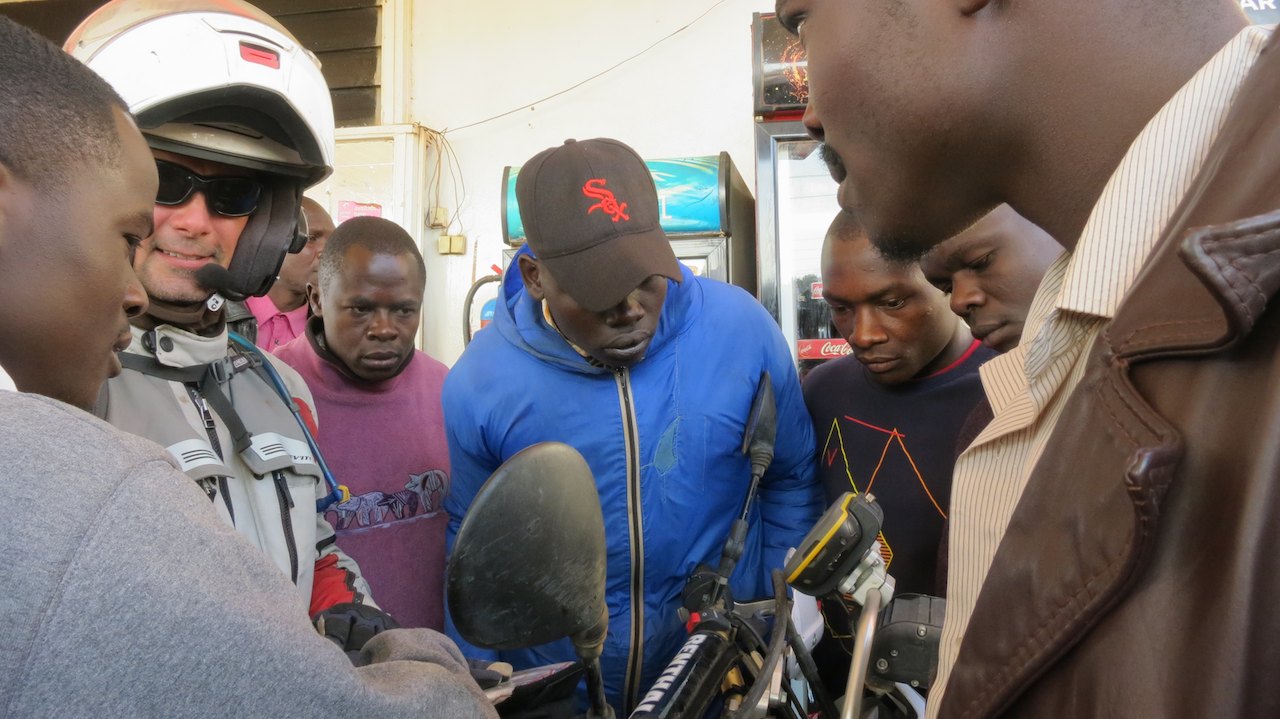
We eat together and hear his stories about an elephant with flapping ears that came after him, food poisoning by a strange lady and tough off-road trails. A real adventure! Happy to see our good friend, we crawl into our tent and he in his hammock. The next day we continue towards Suam, the border with Uganda. Ross’ plans are not really clear yet. He will first drive with us to the border and will see from there. Before we leave Kitale we refuel our three motorbikes at one of the two Total gas stations. As always, there is a group of Kenyans around us in no time asking a hundred and one questions. This time the crowd is so big that Peter can even lift his feet while sitting on the motorbike without tumbling over, his motorbikes is stuck between his ’fans’. With a full tank we drive a little further to buy some water. Again a group of people is around us. Peter almost disappears altogether, I can only see the top of his white helmet.
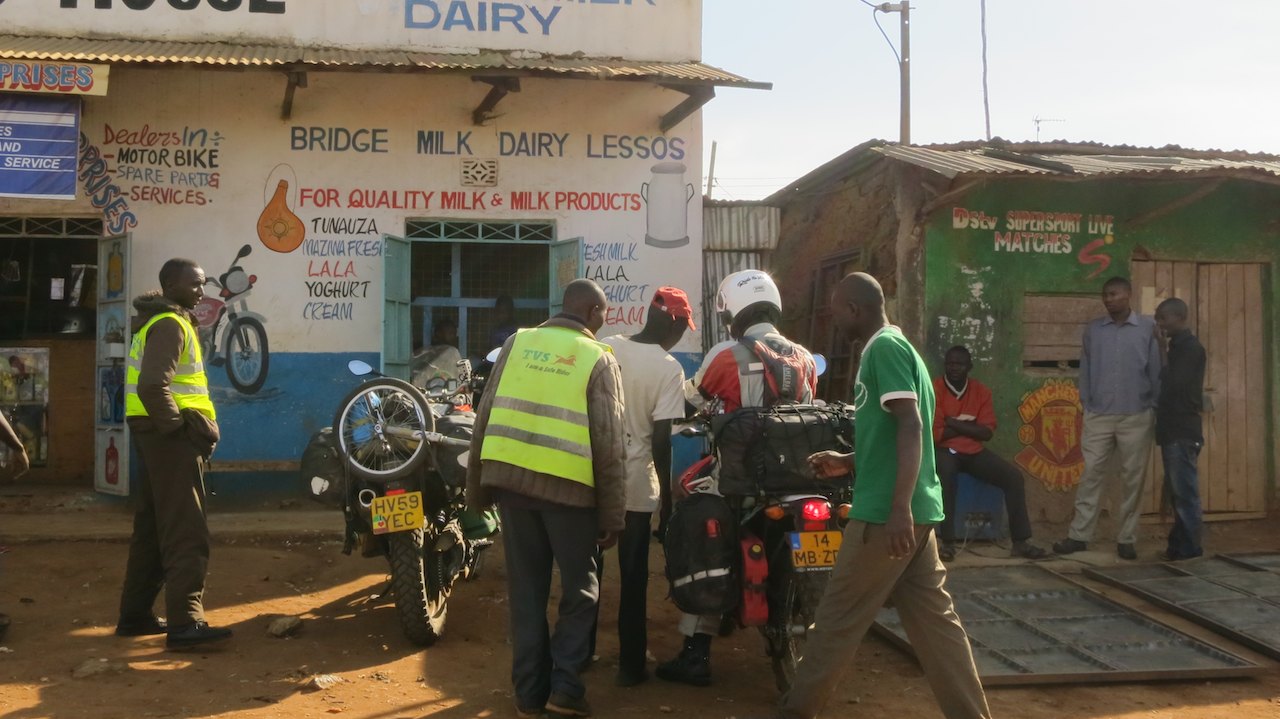

We drive onto a dirt road to the border. A beautiful route through an area where not many tourists go. People stop along the side of the road and watch us pass with open mouth and big eyes, scared when we raise our hands to wave. The sand on which we drive is deep red and lights up brightly in the sunlight. It sticks out beautifully against the bright blue sky and deep green fields around us. We hurtle further into the hills and see Mt Elgon. A green ‘pimple’ in the landscape with some faint clouds at the top. The road is getting more narrow as we ride up into the hills and get closer to the border.

We drive down into a valley and we have to stop at a barrier that has been placed over the road. We are at the border with Uganda! Beyond the gate the road leads further down to a bridge over a small stream where a farmer just lets his cows drink. On the road are two ladies that wear beautifully coloured dresses and are chatting. In a field on the other side of the river children are playing. A gardener is cutting the flowers at the side of one of the building along the road. It is a lovely scene that reminds us more of ‘The Shire’ from ‘The Lord of the Rings’ than of a border crossing.
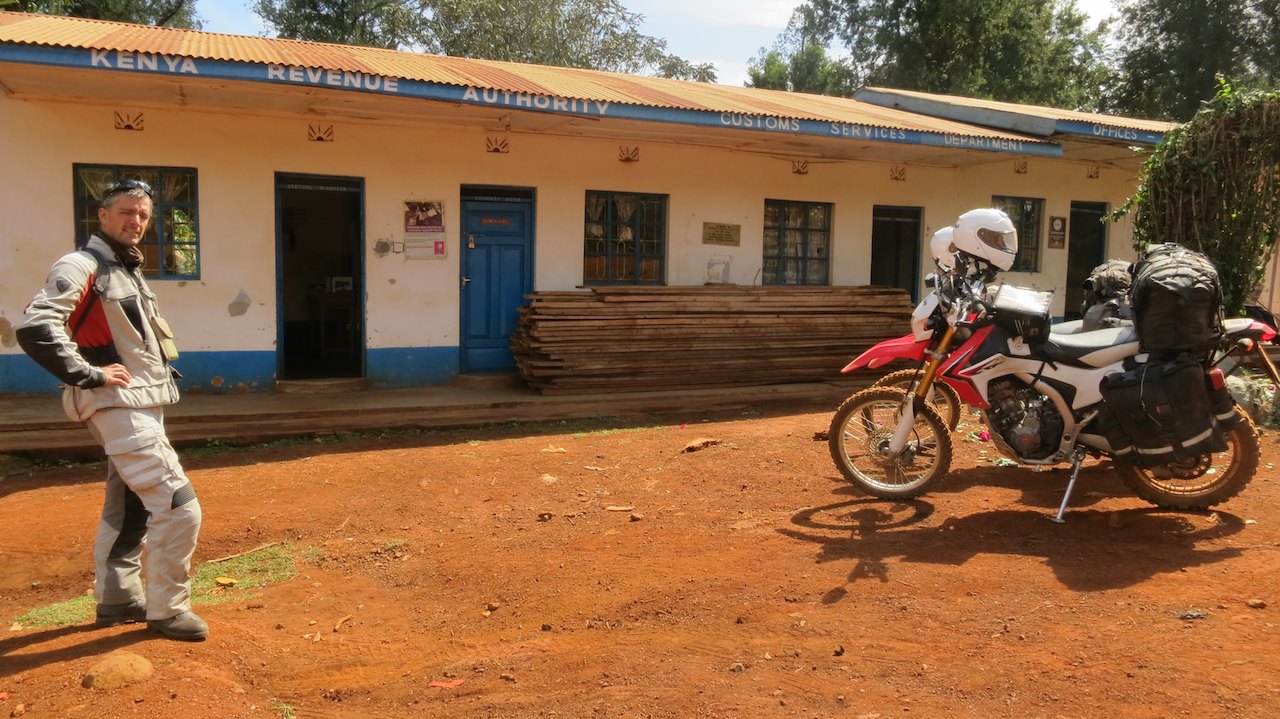
Ross has come all this way with us and now decides to just join us to Uganda. Time for new adventures in a new country, why not? Great! On the Kenyan side of the border are several small buildings where beautiful flowers grow. Above the door is a sign that says “Customs”. This is the office where we will have our carnets stamped. The door is open and inside is a gentleman that is reading a newspaper. He welcomes us warmly and asks us to take a seat in one of the chairs in front of his desk. After a brief chat, he takes our Carnets and turns some of the pages. Then he looks up and admits that he has not come across these documents very often. He would like us to tell him what he should fill out. I help him with the forms and make sure that the stamps are put in the right place.
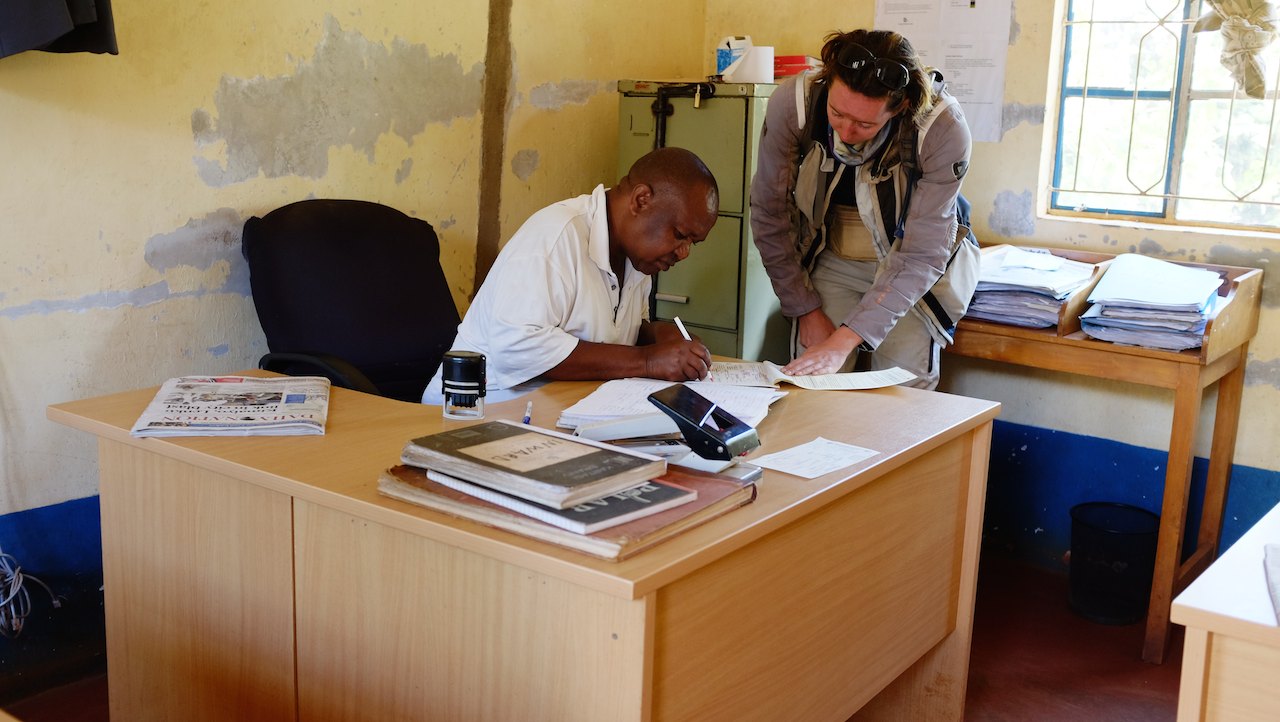
Then we can move on to immigration in one of the other buildings. On the porch at the entrance are two soldiers. There is a third man that is showing them some jeans that he is selling. The soldiers study the jeans and hold them in front of themselves to see if the size is right. There are not really busy with watching the bridge, the actual border with Uganda.
In the office of immigration and emigration we are welcomed by a friendly guy in his late twenties. He wants to know where we are from. His eyes widen when we tell him that we drove from Amsterdam to Kenya. “On these motorbikes?”, he asks. He shakes his head in disbelief when he writes our data in a large notebook and he puts stamps in our passports. “ What a great journey! I can not believe it!”.
Once we come out of the office again and start our motorbikes, the soldiers stand up out of their chairs to lift the barrier for us. We drive over the bridge, past the farmer and his cows and are stopped ten meters further by a police officer with an Ugandan flag on his shirt. After he has checked our Kenyan exit stamp, we can continue to the Ugandan immigration office. We come into a building where two women are chatting and laughing loud. One of them is braiding the hair of a small girls, attaching pink beads at the end of each braid. Ross looks at the ladies and asks: “ Is this a beauty salon or the immigration office?”. The ladies smile and indicate that this really is the place to get stamps. One of the women takes our passports and after we have paid $50 per visa, she pastes a lovely visa sticker in our passports which she even makes more beautiful with a stamp.
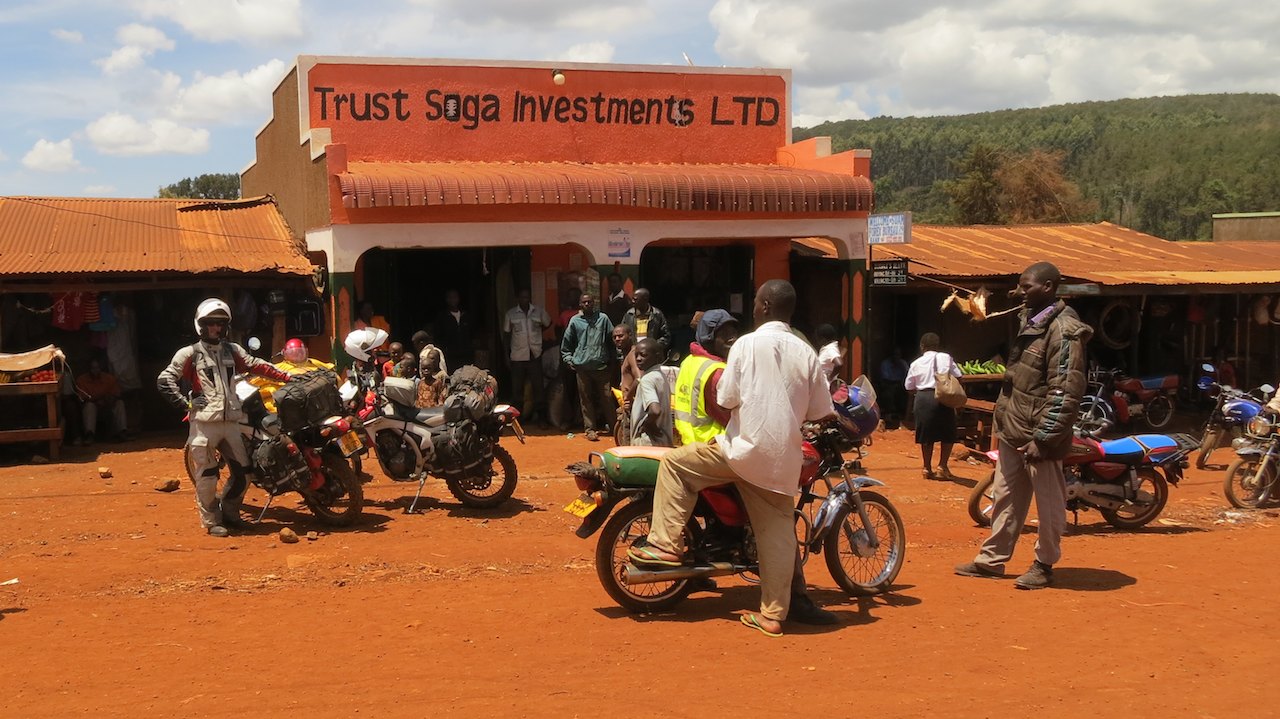
Then we drive a little bit further to another office for a stamp in the carnet. Also on the Ugandan side they have not seen many of these yellow books before. But after some instructions the stamps are placed on the right page. The formalities are completed. Now we will look for an exchange office where we can change our Kenyan Shillings. In the small village we find a little house with a sign “Forex”. Two men show us to a room in the back of the shop behind shuttered windows so the other customers cannot see the big stacks of cash. The room is painted in a bright orange color. On the walls are all sorts of flashy posters. A small office that only just fits four people.They are delighted to welcome us to Uganda. They count our money and change it at a decent rate.
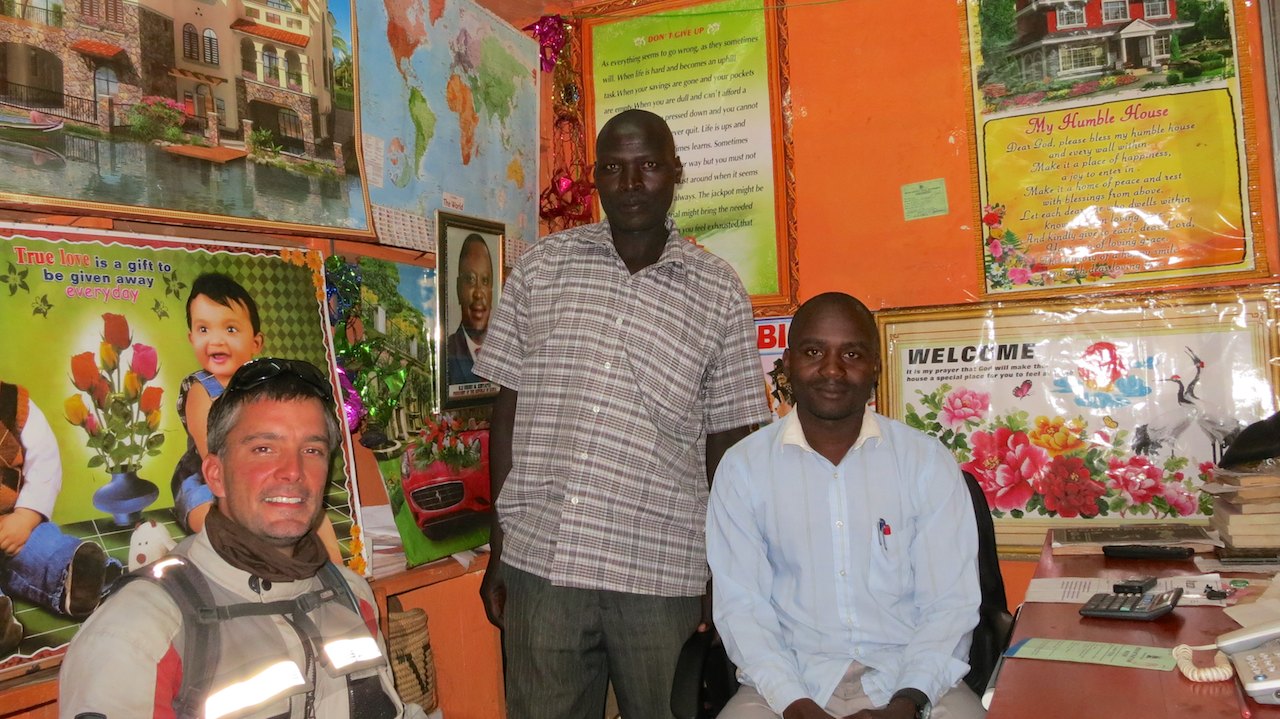
After Ross has also changed his money, we ride on. The route is really beautiful! On a bright red dirt road we drive higher and higher into the green hills. After every turn we have a new stunning view. To the west we see green hills interspersed with red paths. To the east endless green plains where some plumes of smoke raise high in the sky. We drive through small villages where people stand to watch us. Some run off the road, but others wave warmly and put their thumbs up as we pass. If we stop to take a picture or to drink some water a large group of people comes to meet us. There is always someone who speaks English and can translate for the rest of the group. If Ross starts his motorbike and revs the engine the group of people splashes apart. The children run off the road to watch us ride off from a distance.




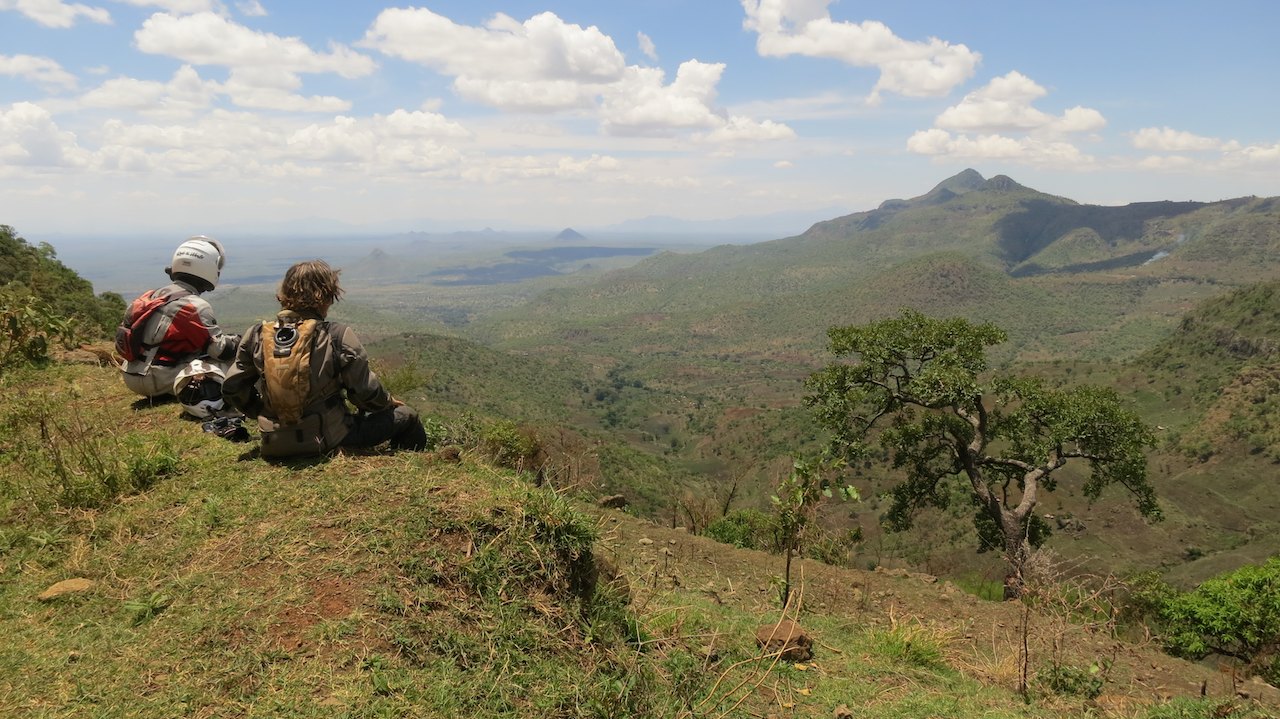
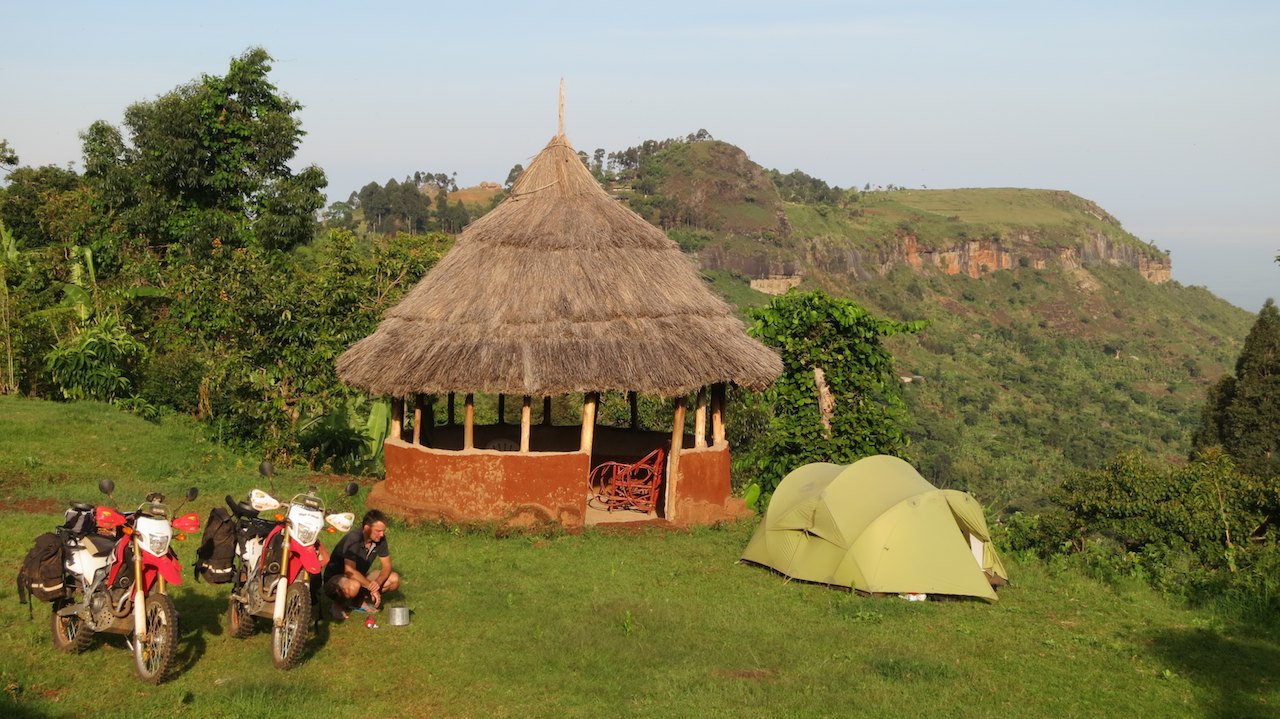
In Uganda it has not rained for a long time. The road is in good condition, but very dusty. Our motorbikes, our suit, our luggage and even our faces are all covered in the bright red dust. At the end of the day we arrive on the tarmac and we drive on a lovely winding road to Sipi, a small town that attracts tourists for its waterfalls. We set up our tent at “Noah’s Ark Hotel and Campsite” where we have a beautiful view over the valley. We brush the worst dust of our suits, wash our dusty red faces and enjoy cold  s and the sunset with our friend Ross. Welcome to Uganda!
Distance travelled to Sipi: 15,234km (9,466 miles)
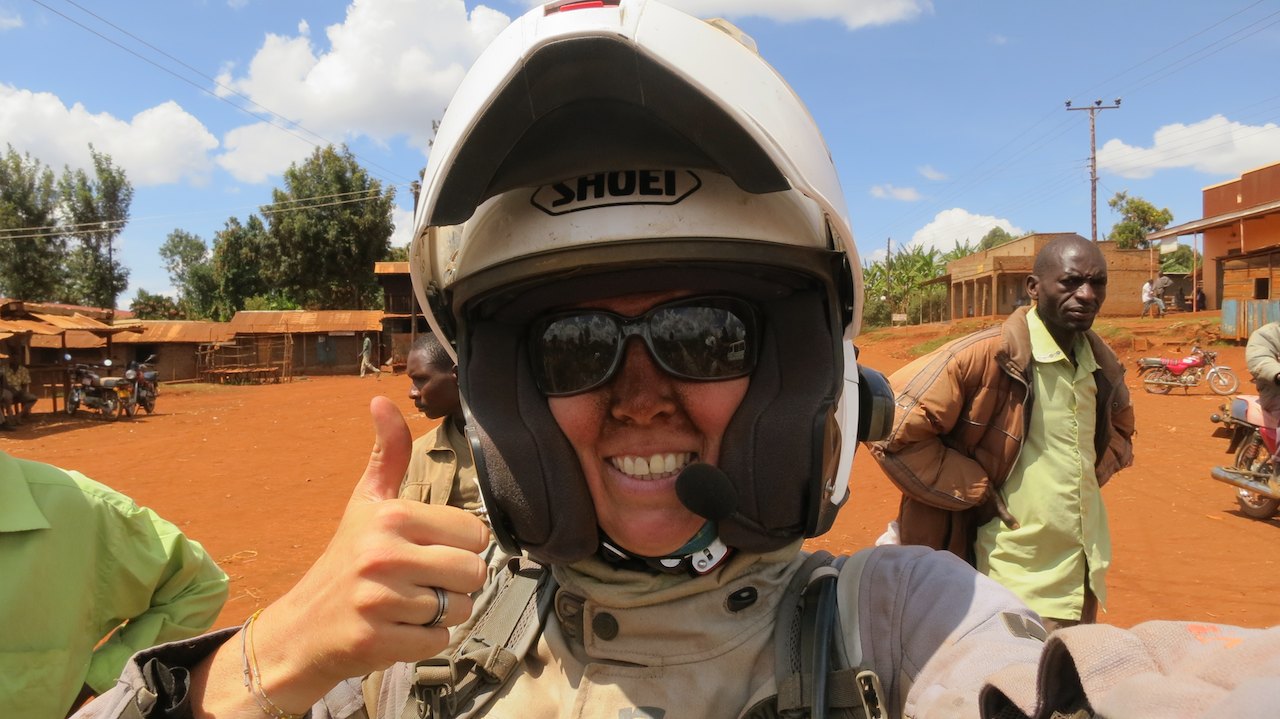
|
|
Currently Active Users Viewing This Thread: 1 (0 Registered Users and/or Members and 1 guests)
|
|
|
 Posting Rules
Posting Rules
|
You may not post new threads
You may not post replies
You may not post attachments
You may not edit your posts
HTML code is Off
|
|
|
|
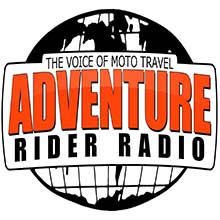
Check the RAW segments; Grant, your HU host is on every month!
Episodes below to listen to while you, err, pretend to do something or other...
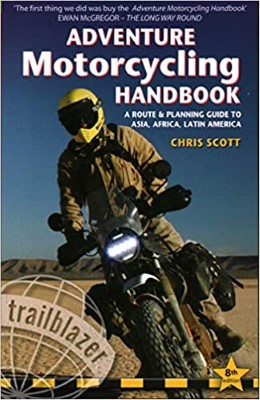
2020 Edition of Chris Scott's Adventure Motorcycling Handbook.
"Ultimate global guide for red-blooded bikers planning overseas exploration. Covers choice & preparation of best bike, shipping overseas, baggage design, riding techniques, travel health, visas, documentation, safety and useful addresses." Recommended. (Grant)

Ripcord Rescue Travel Insurance™ combines into a single integrated program the best evacuation and rescue with the premier travel insurance coverages designed for adventurers.
Led by special operations veterans, Stanford Medicine affiliated physicians, paramedics and other travel experts, Ripcord is perfect for adventure seekers, climbers, skiers, sports enthusiasts, hunters, international travelers, humanitarian efforts, expeditions and more.
Ripcord travel protection is now available for ALL nationalities, and travel is covered on motorcycles of all sizes!
What others say about HU...
"This site is the BIBLE for international bike travelers." Greg, Australia
"Thank you! The web site, The travels, The insight, The inspiration, Everything, just thanks." Colin, UK
"My friend and I are planning a trip from Singapore to England... We found (the HU) site invaluable as an aid to planning and have based a lot of our purchases (bikes, riding gear, etc.) on what we have learned from this site." Phil, Australia
"I for one always had an adventurous spirit, but you and Susan lit the fire for my trip and I'll be forever grateful for what you two do to inspire others to just do it." Brent, USA
"Your website is a mecca of valuable information and the (video) series is informative, entertaining, and inspiring!" Jennifer, Canada
"Your worldwide organisation and events are the Go To places to for all serious touring and aspiring touring bikers." Trevor, South Africa
"This is the answer to all my questions." Haydn, Australia
"Keep going the excellent work you are doing for Horizons Unlimited - I love it!" Thomas, Germany
Lots more comments here!
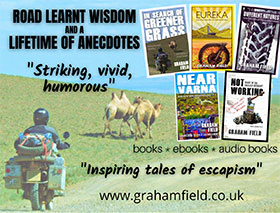
Diaries of a compulsive traveller
by Graham Field
Book, eBook, Audiobook
"A compelling, honest, inspiring and entertaining writing style with a built-in feel-good factor" Get them NOW from the authors' website and Amazon.com, Amazon.ca, Amazon.co.uk.
Back Road Map Books and Backroad GPS Maps for all of Canada - a must have!
New to Horizons Unlimited?
New to motorcycle travelling? New to the HU site? Confused? Too many options? It's really very simple - just 4 easy steps!
Horizons Unlimited was founded in 1997 by Grant and Susan Johnson following their journey around the world on a BMW R80G/S.
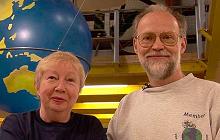 Read more about Grant & Susan's story
Read more about Grant & Susan's story
Membership - help keep us going!
Horizons Unlimited is not a big multi-national company, just two people who love motorcycle travel and have grown what started as a hobby in 1997 into a full time job (usually 8-10 hours per day and 7 days a week) and a labour of love. To keep it going and a roof over our heads, we run events all over the world with the help of volunteers; we sell inspirational and informative DVDs; we have a few selected advertisers; and we make a small amount from memberships.
You don't have to be a Member to come to an HU meeting, access the website, or ask questions on the HUBB. What you get for your membership contribution is our sincere gratitude, good karma and knowing that you're helping to keep the motorcycle travel dream alive. Contributing Members and Gold Members do get additional features on the HUBB. Here's a list of all the Member benefits on the HUBB.
|
|
|







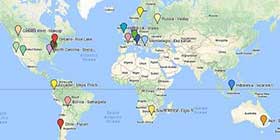











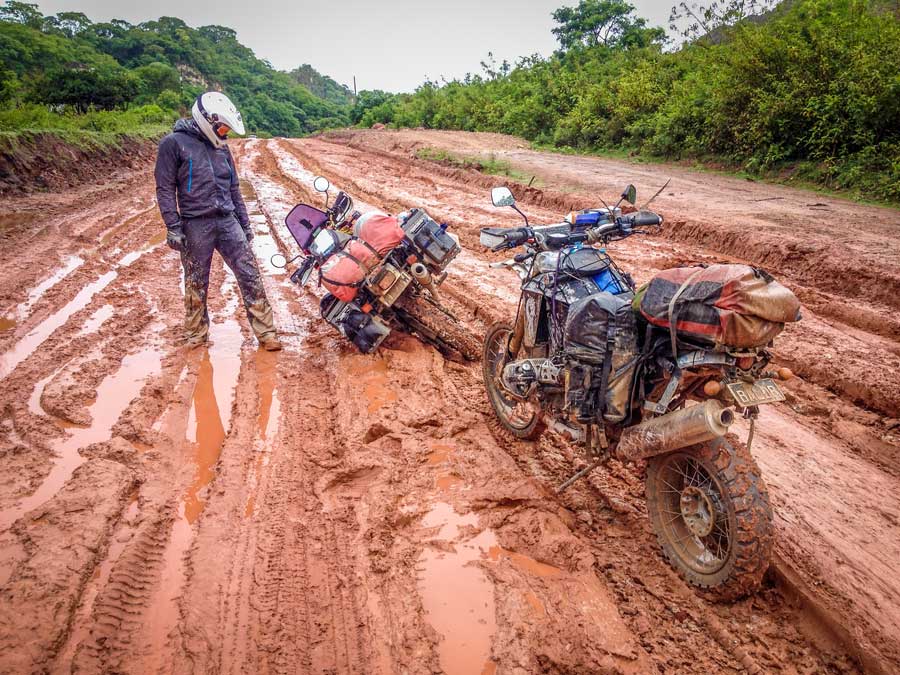
 26Likes
26Likes


















 s in a long time and the delicious food cooked by Kim. Lake Tana also appears to be a birding paradise. We sit with our binoculars at the lake or under the big tree next to our tent watching the most beautiful birds for hours. We see Paradise Fly Catchers, Blue Cheeked Cordon Blues, Mouse Birds and Firefinches. Truly beautiful. We end up staying four nights to recover from the initial culture shock and to gain new energy to conquer the rest of Ethiopia. A great time!
s in a long time and the delicious food cooked by Kim. Lake Tana also appears to be a birding paradise. We sit with our binoculars at the lake or under the big tree next to our tent watching the most beautiful birds for hours. We see Paradise Fly Catchers, Blue Cheeked Cordon Blues, Mouse Birds and Firefinches. Truly beautiful. We end up staying four nights to recover from the initial culture shock and to gain new energy to conquer the rest of Ethiopia. A great time!















































































































































































































 Linear Mode
Linear Mode









